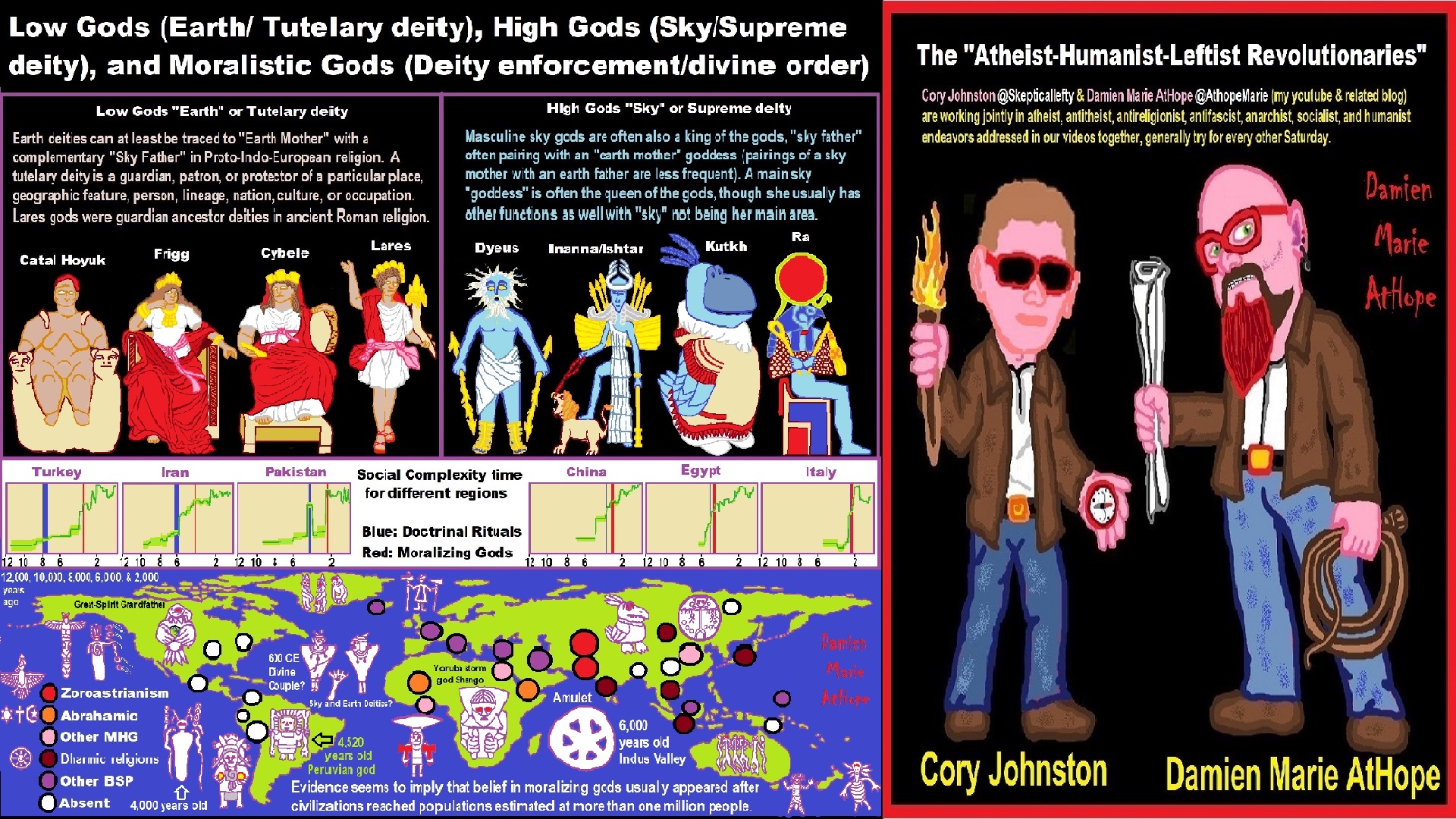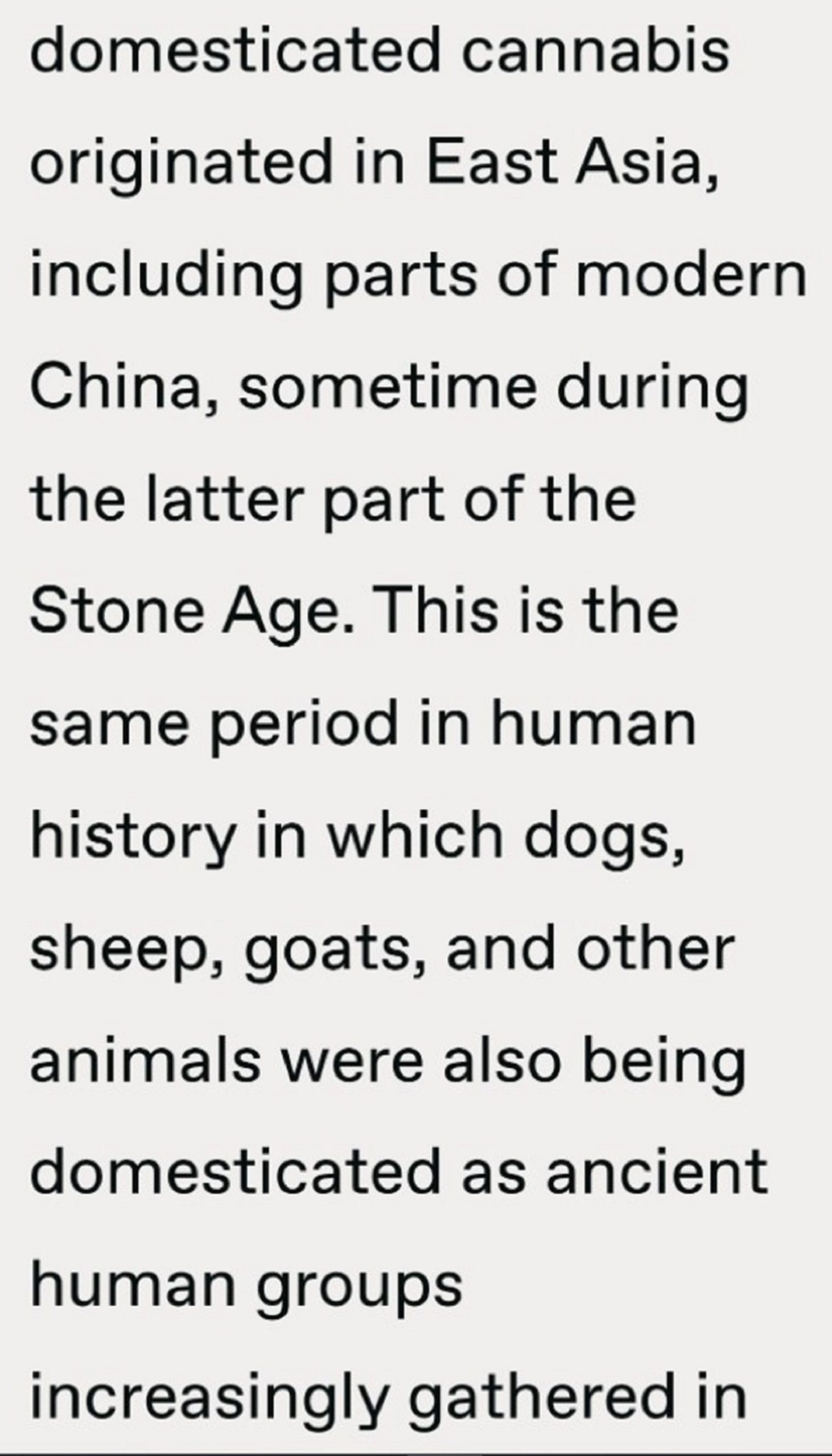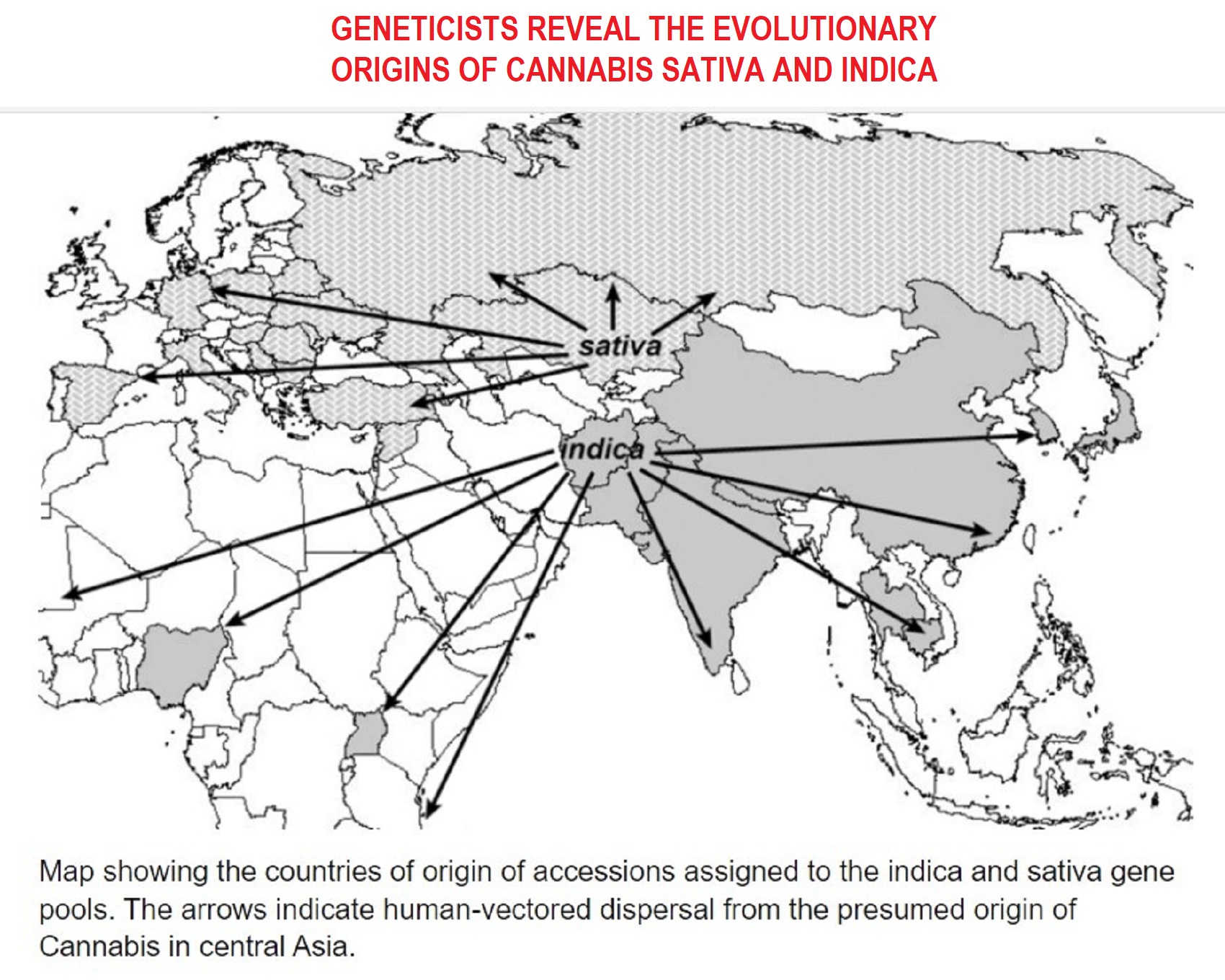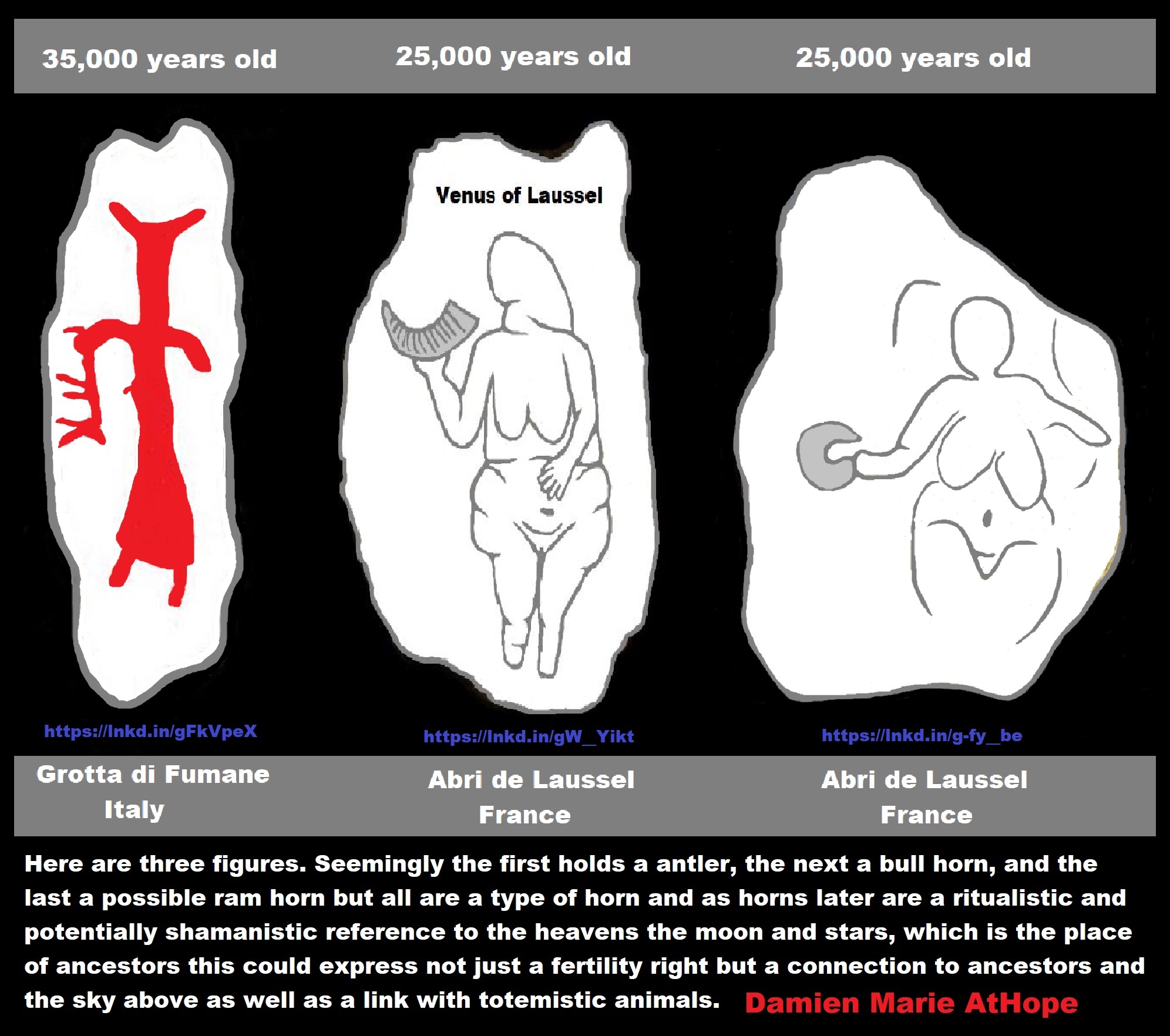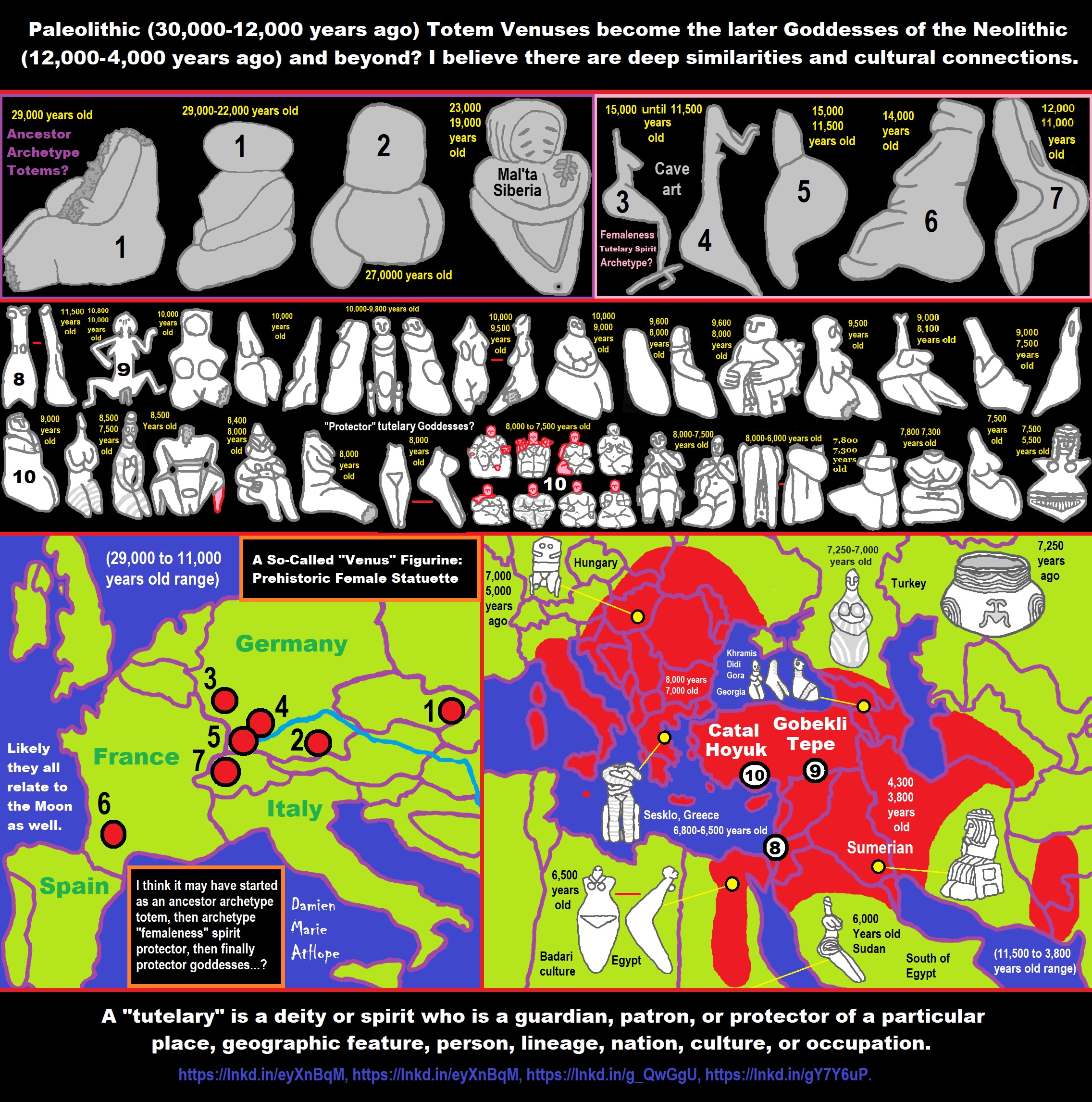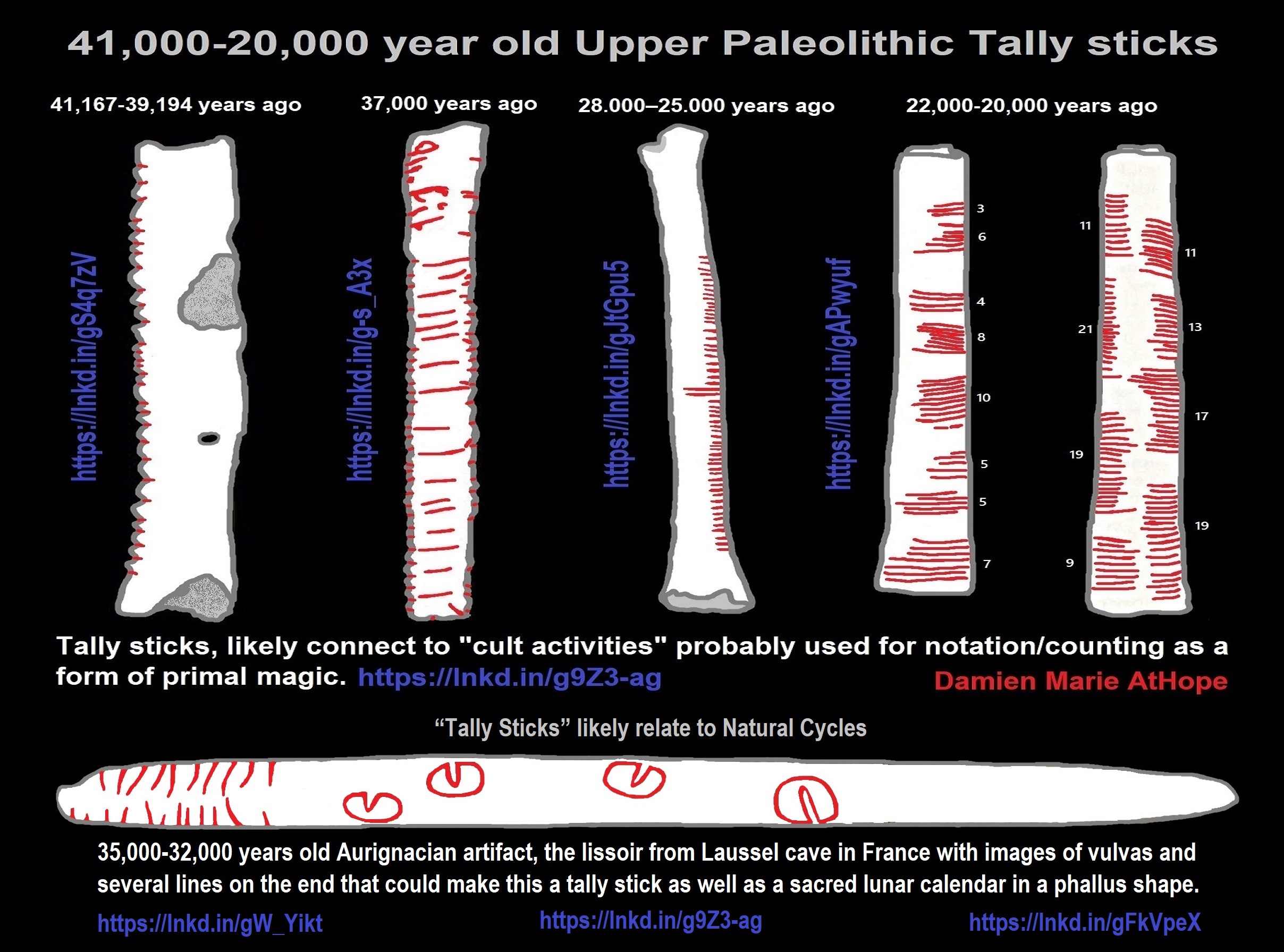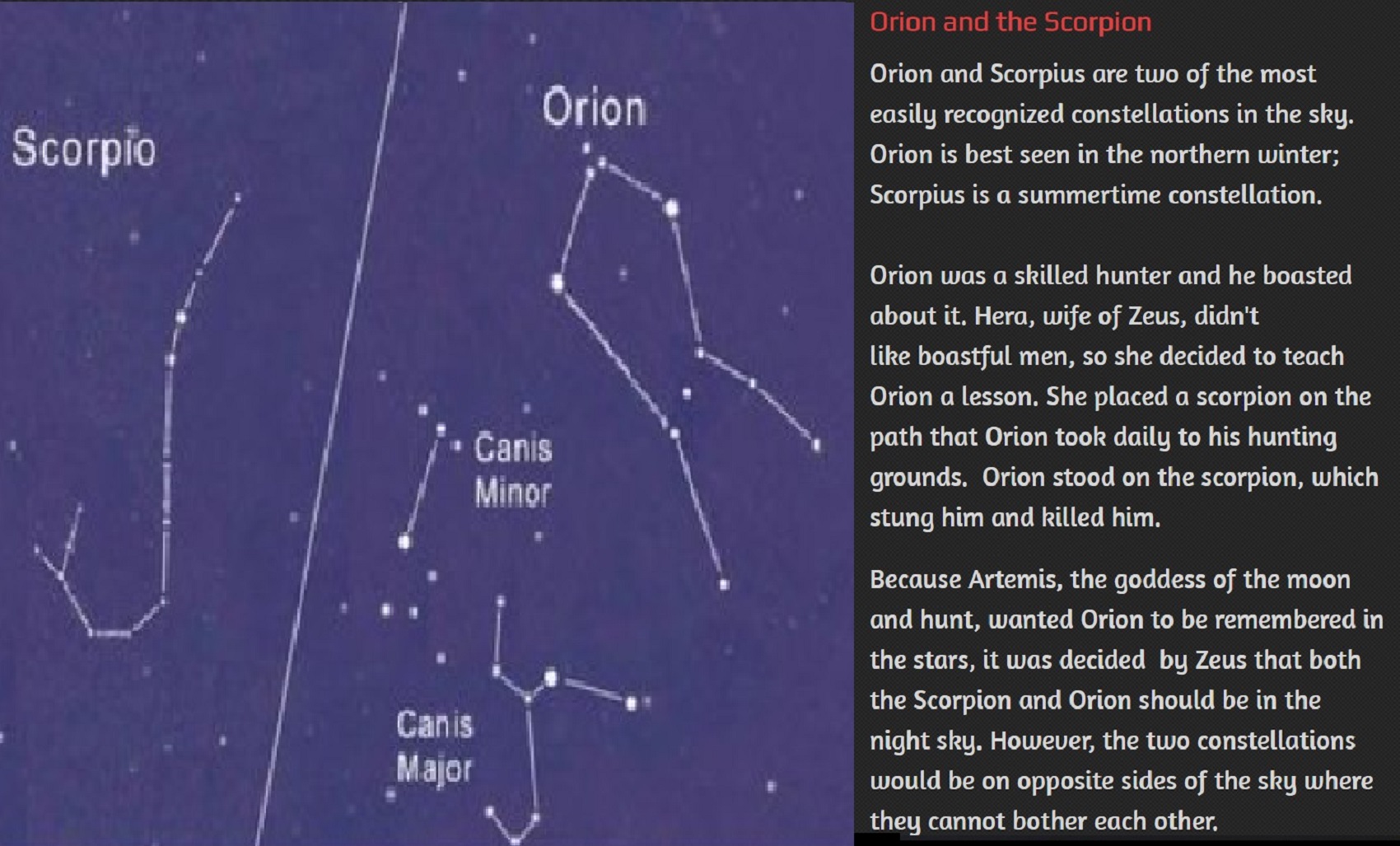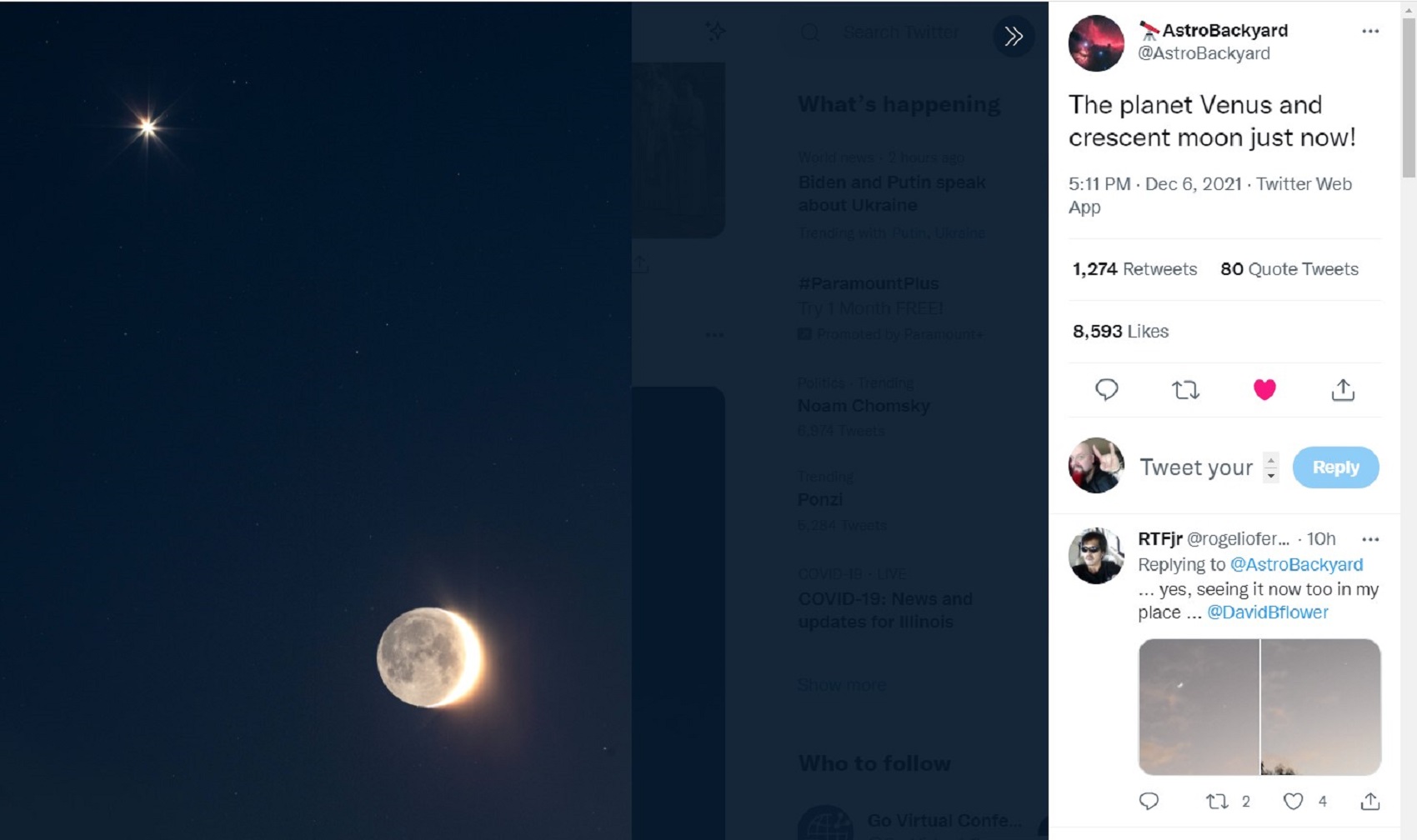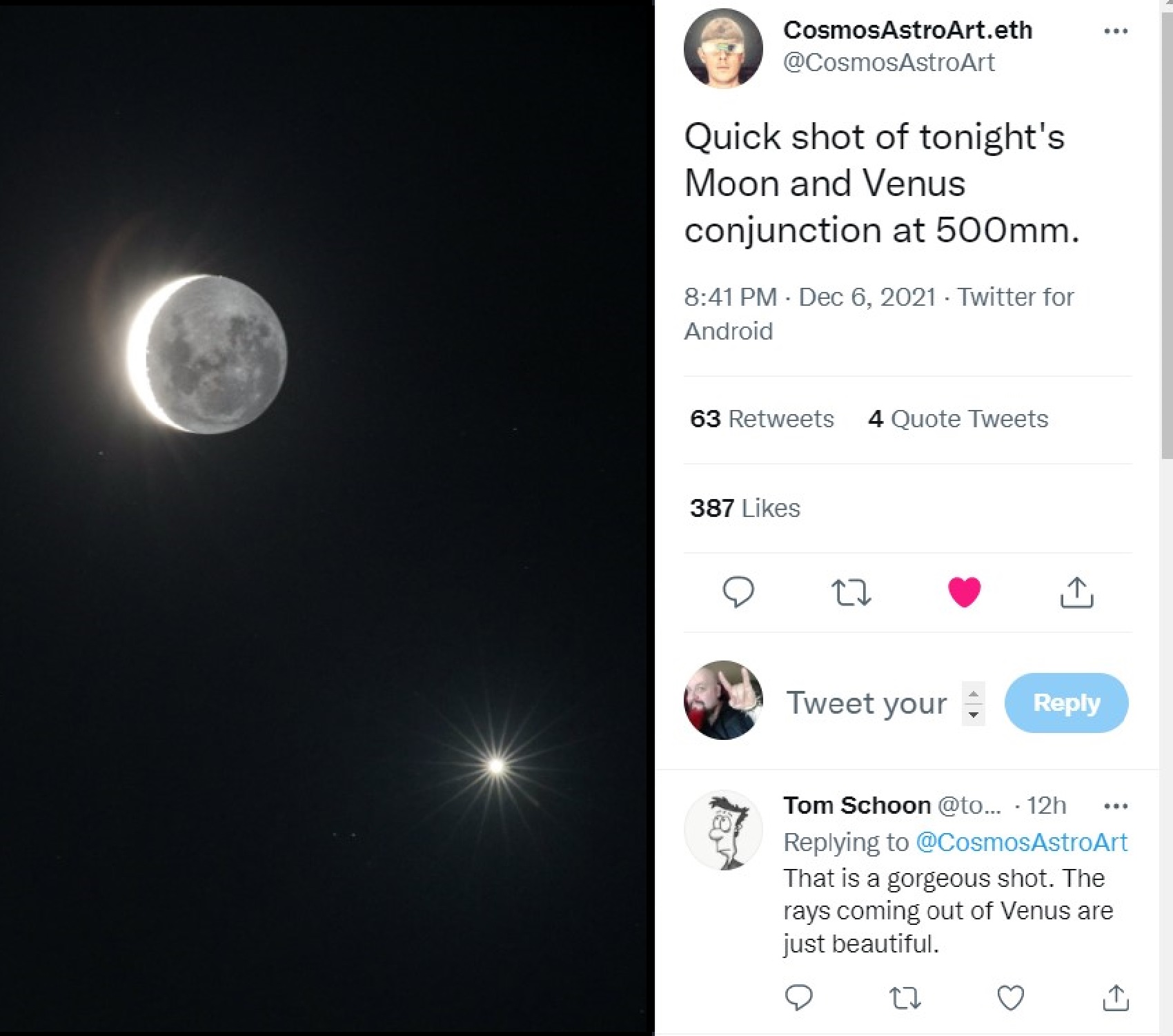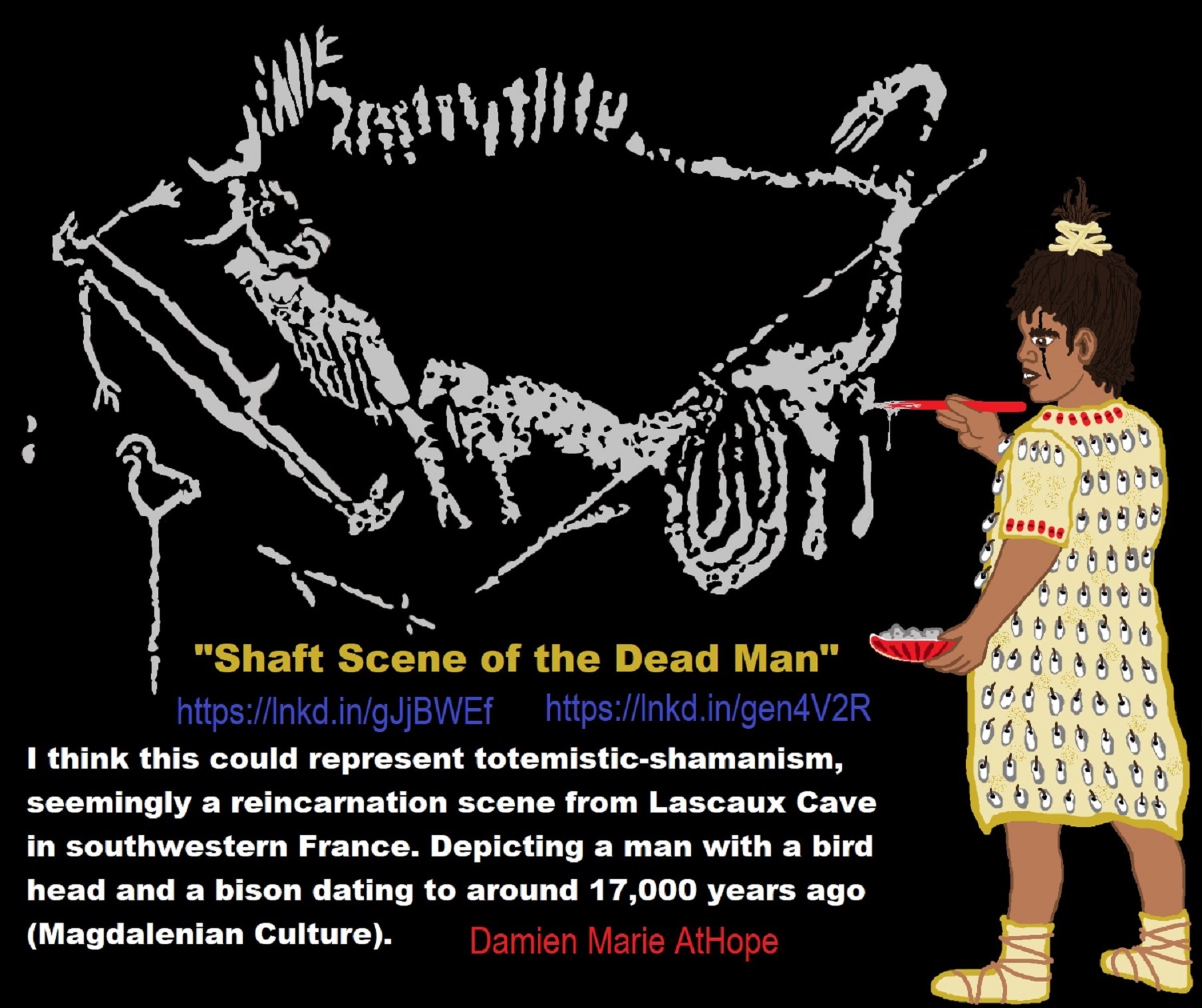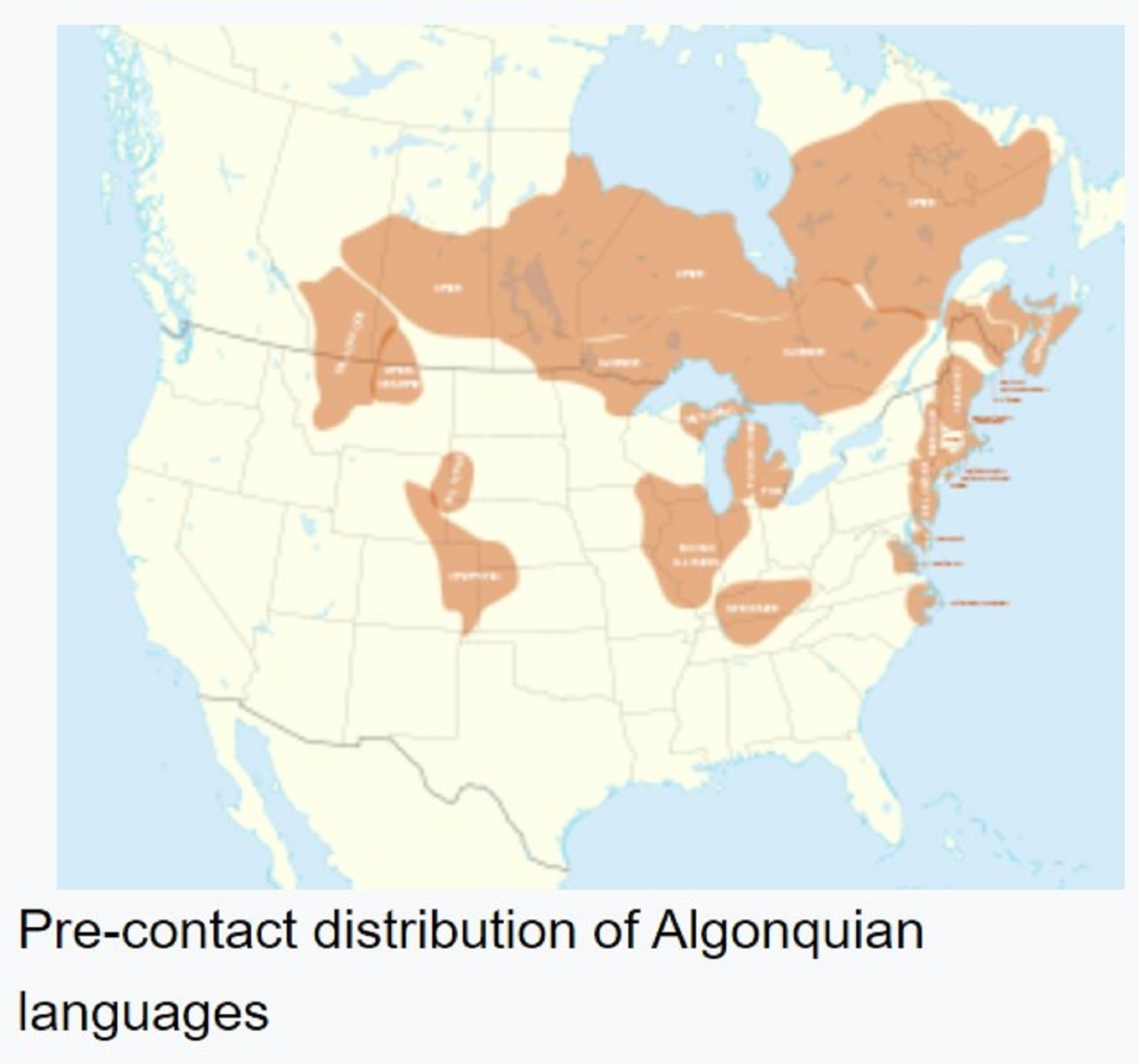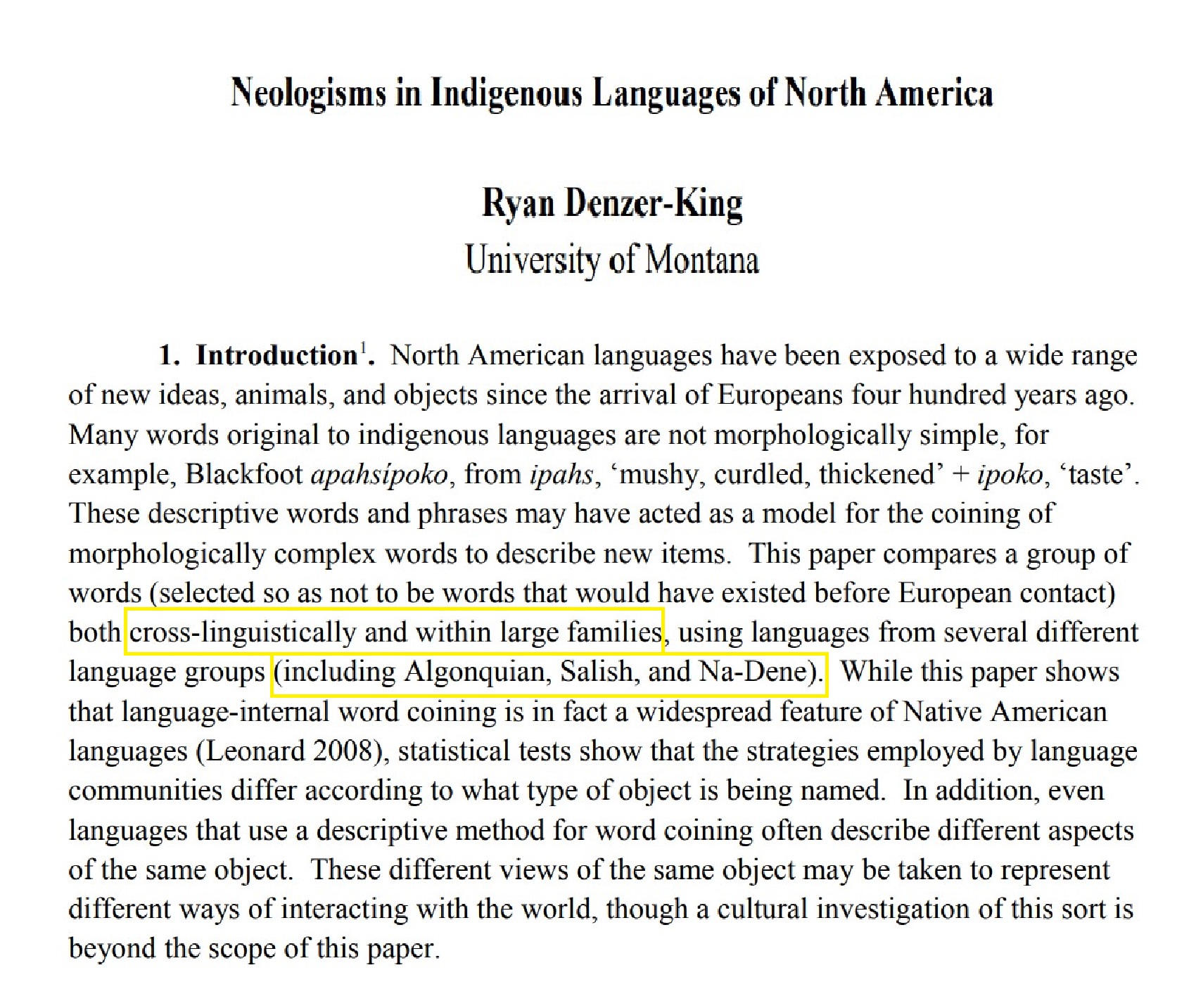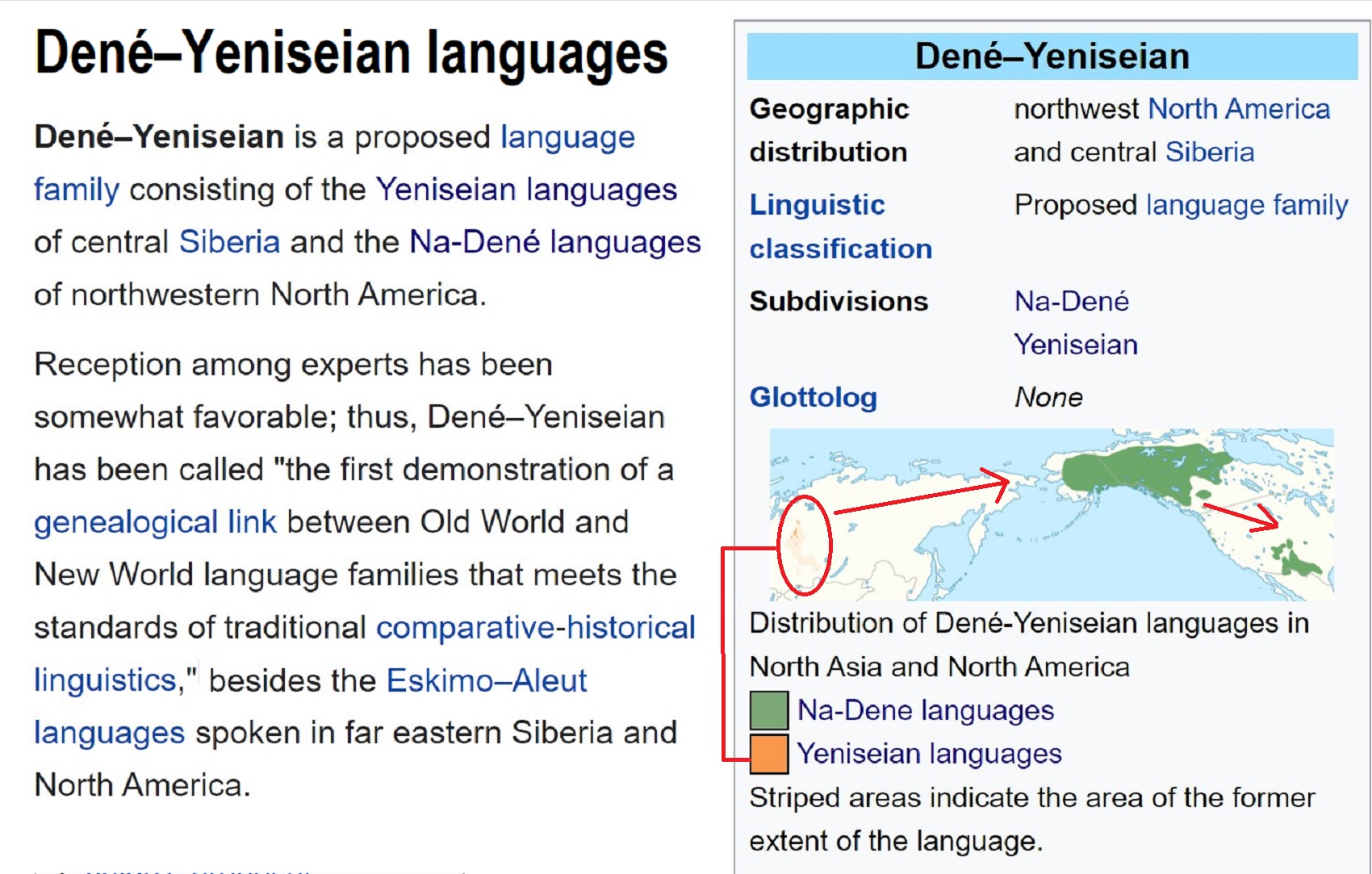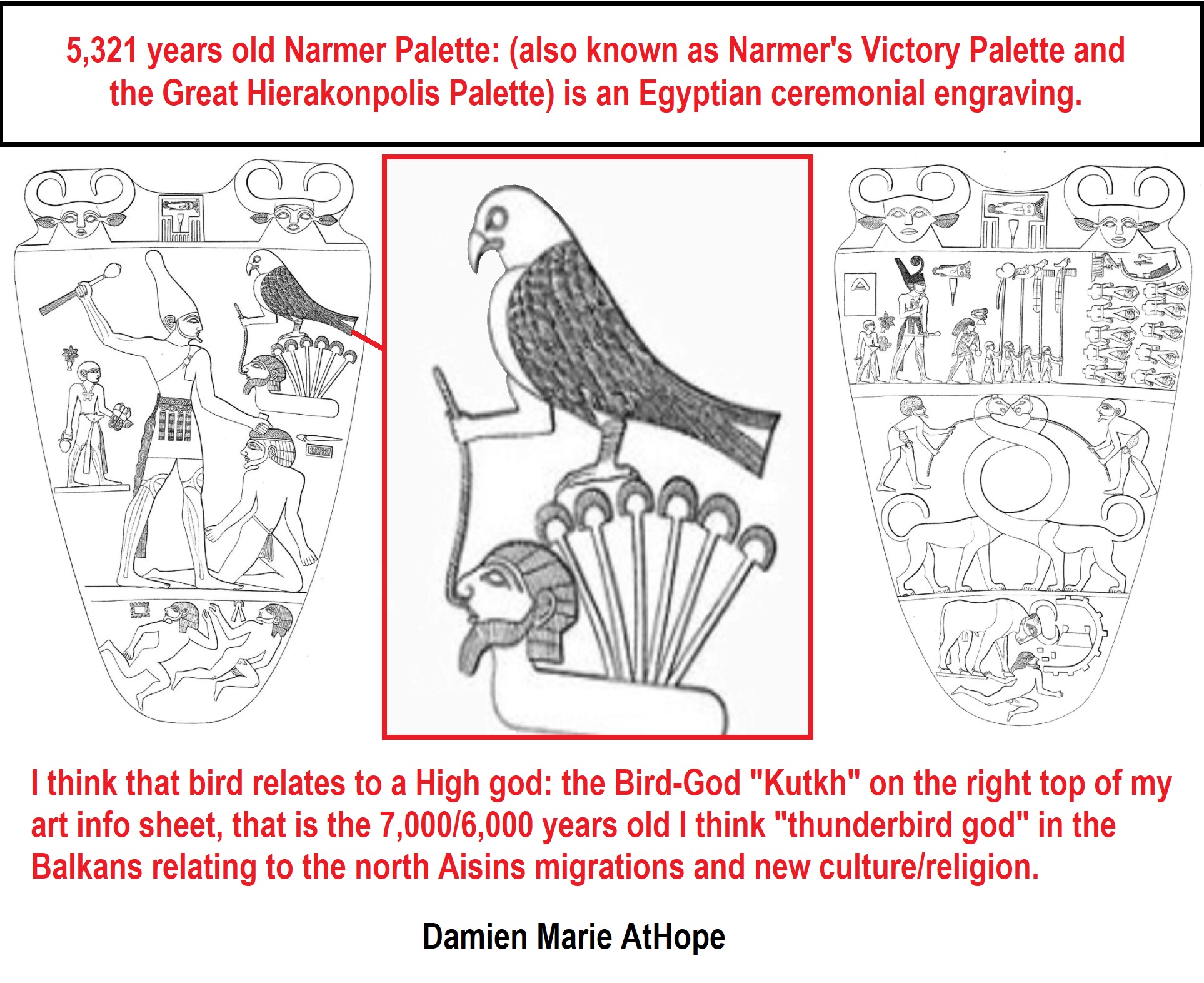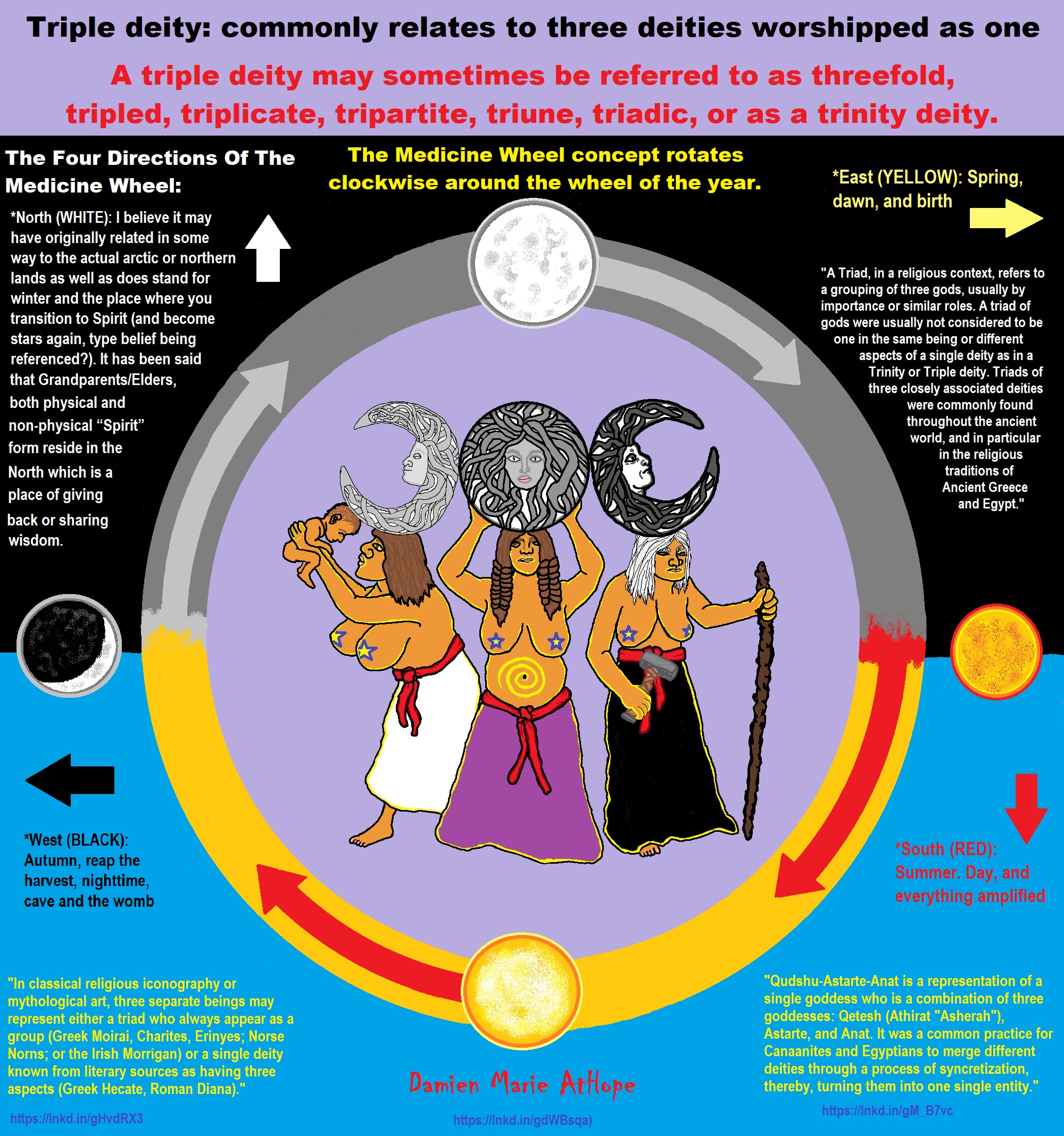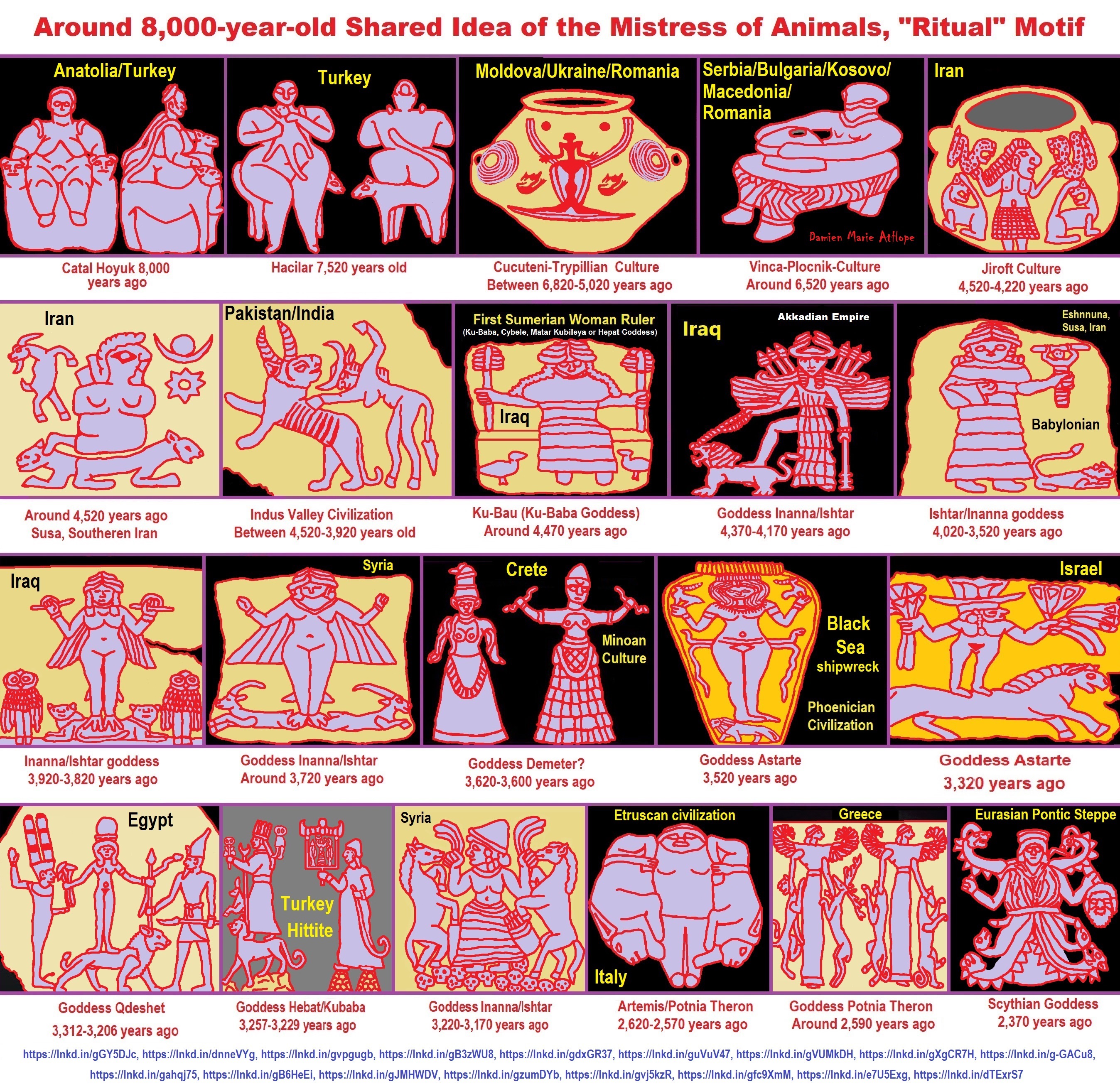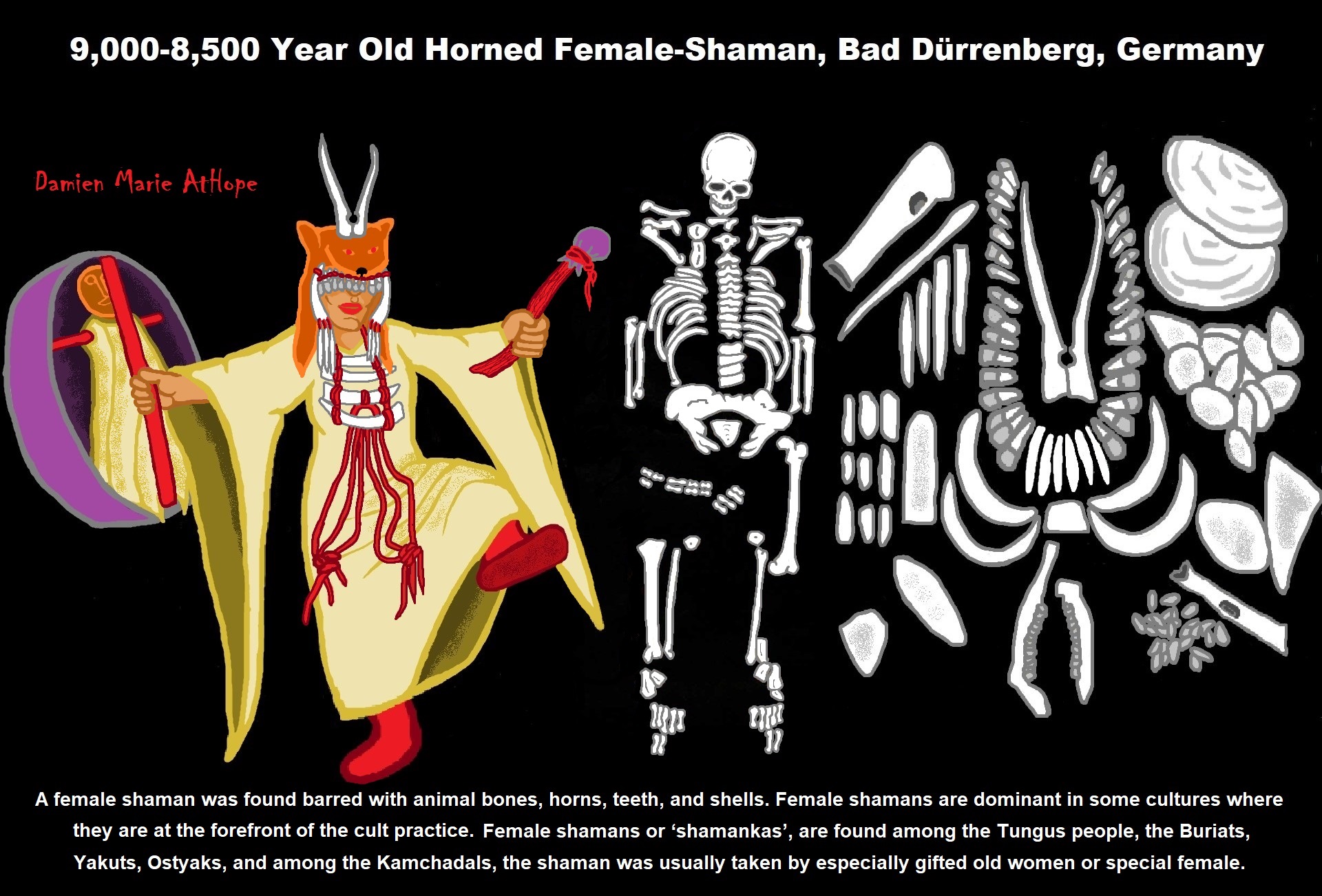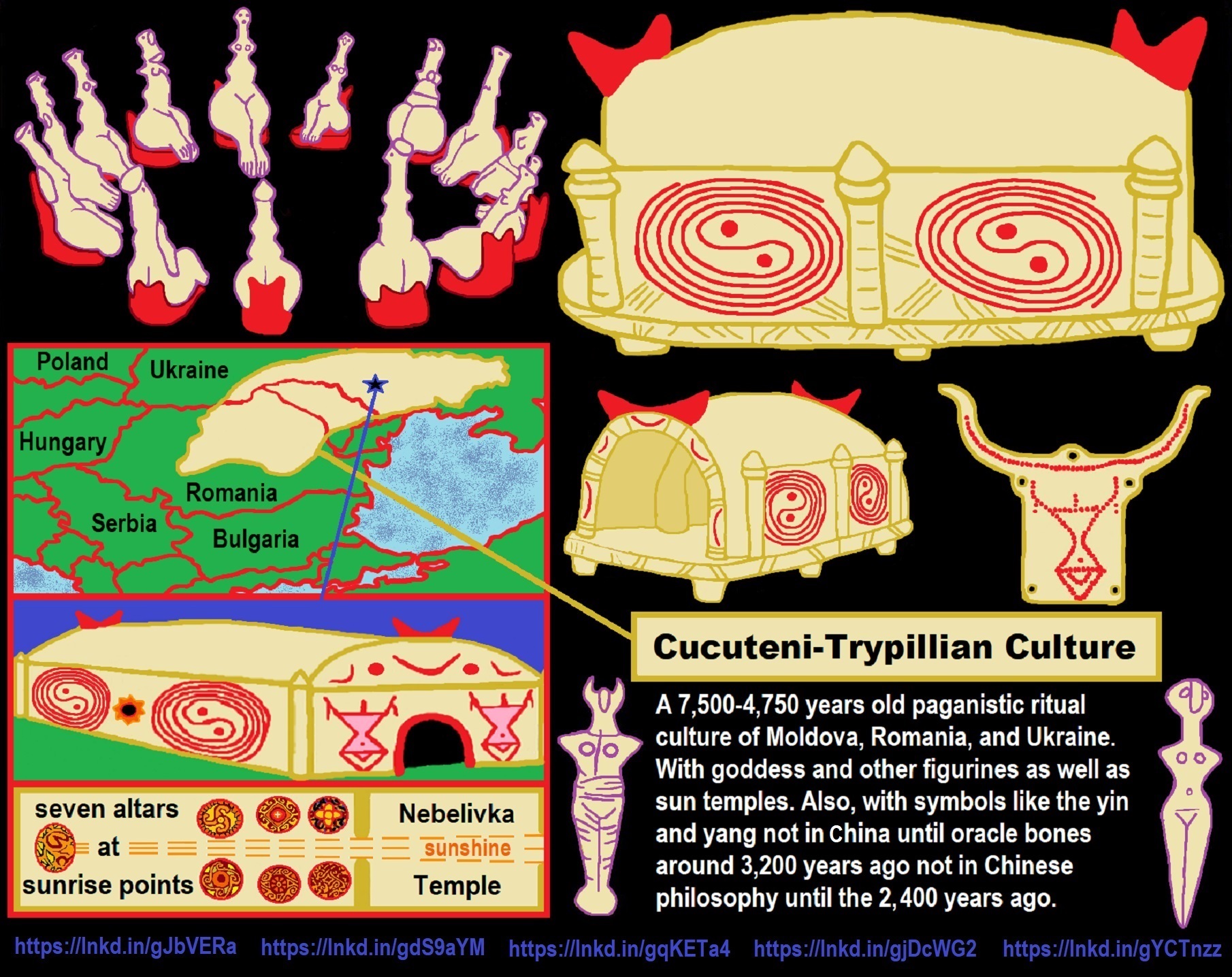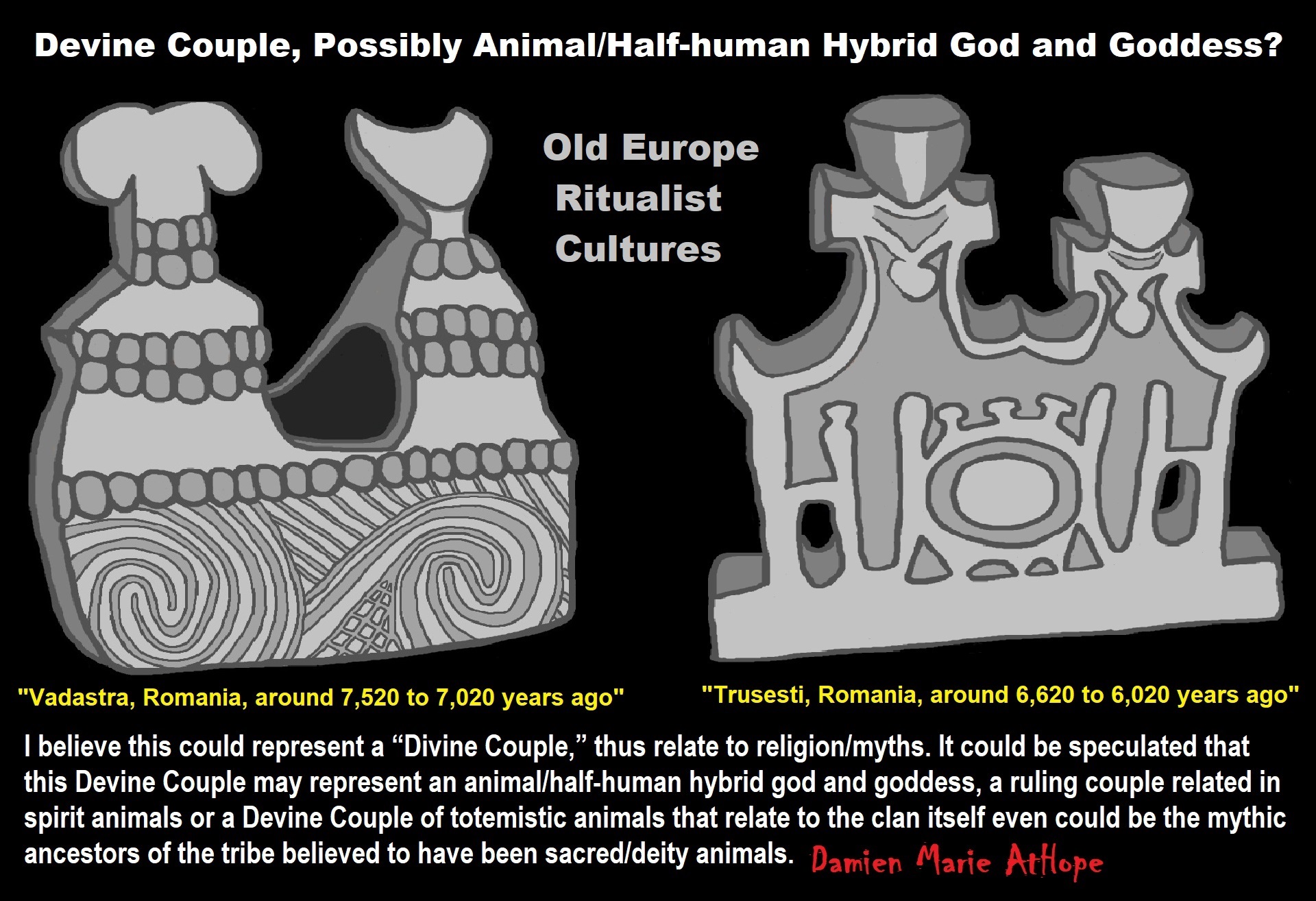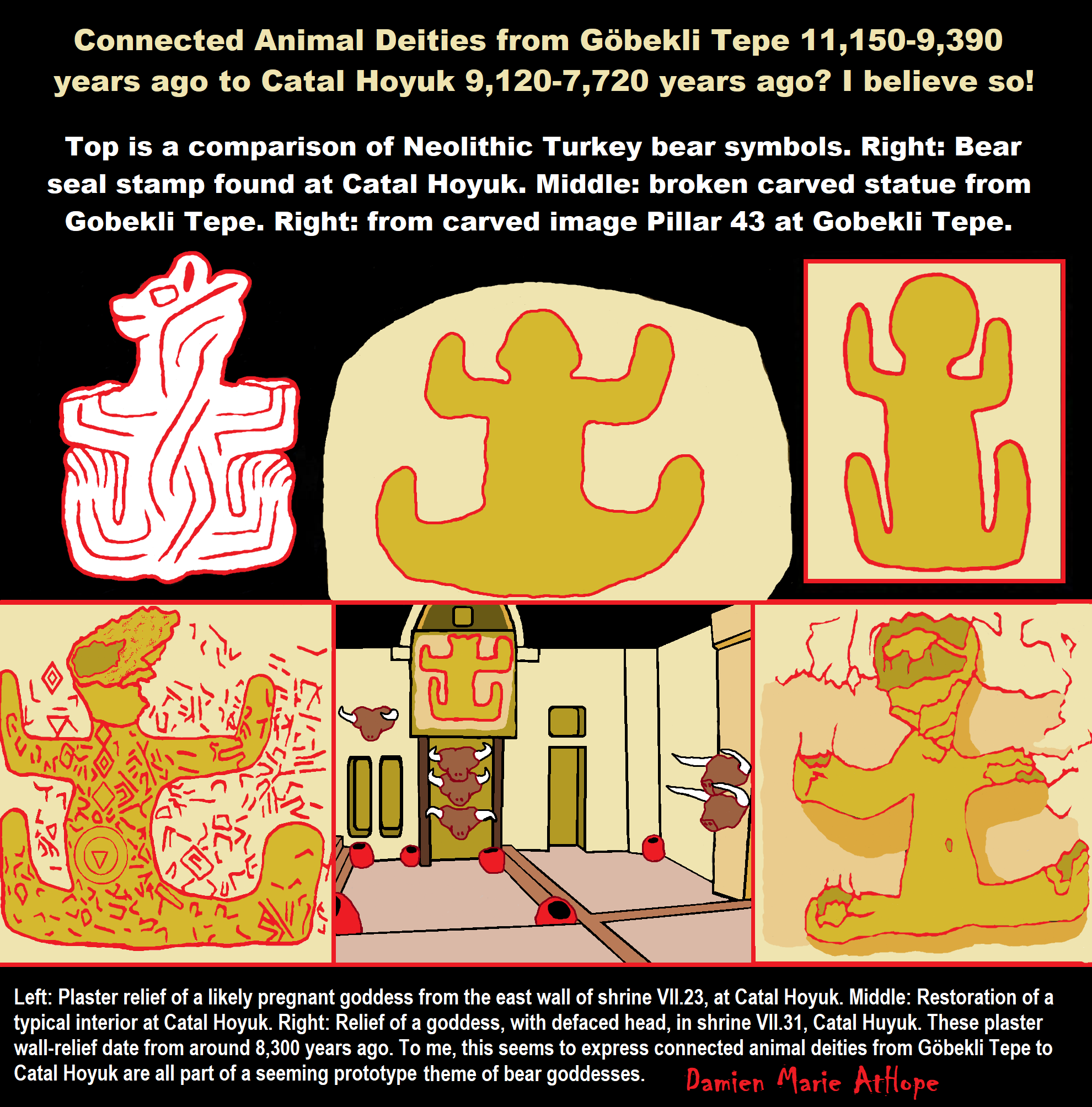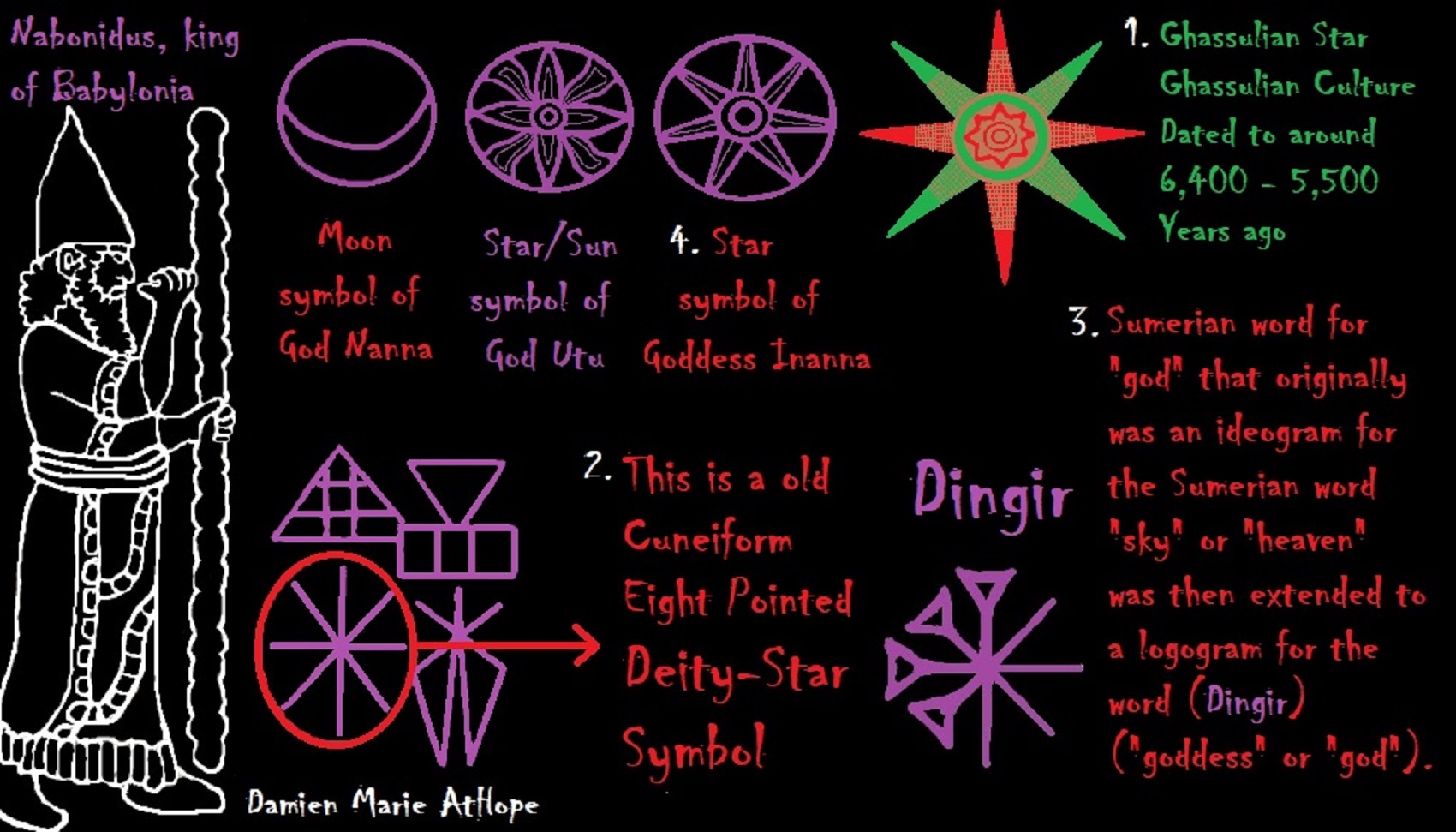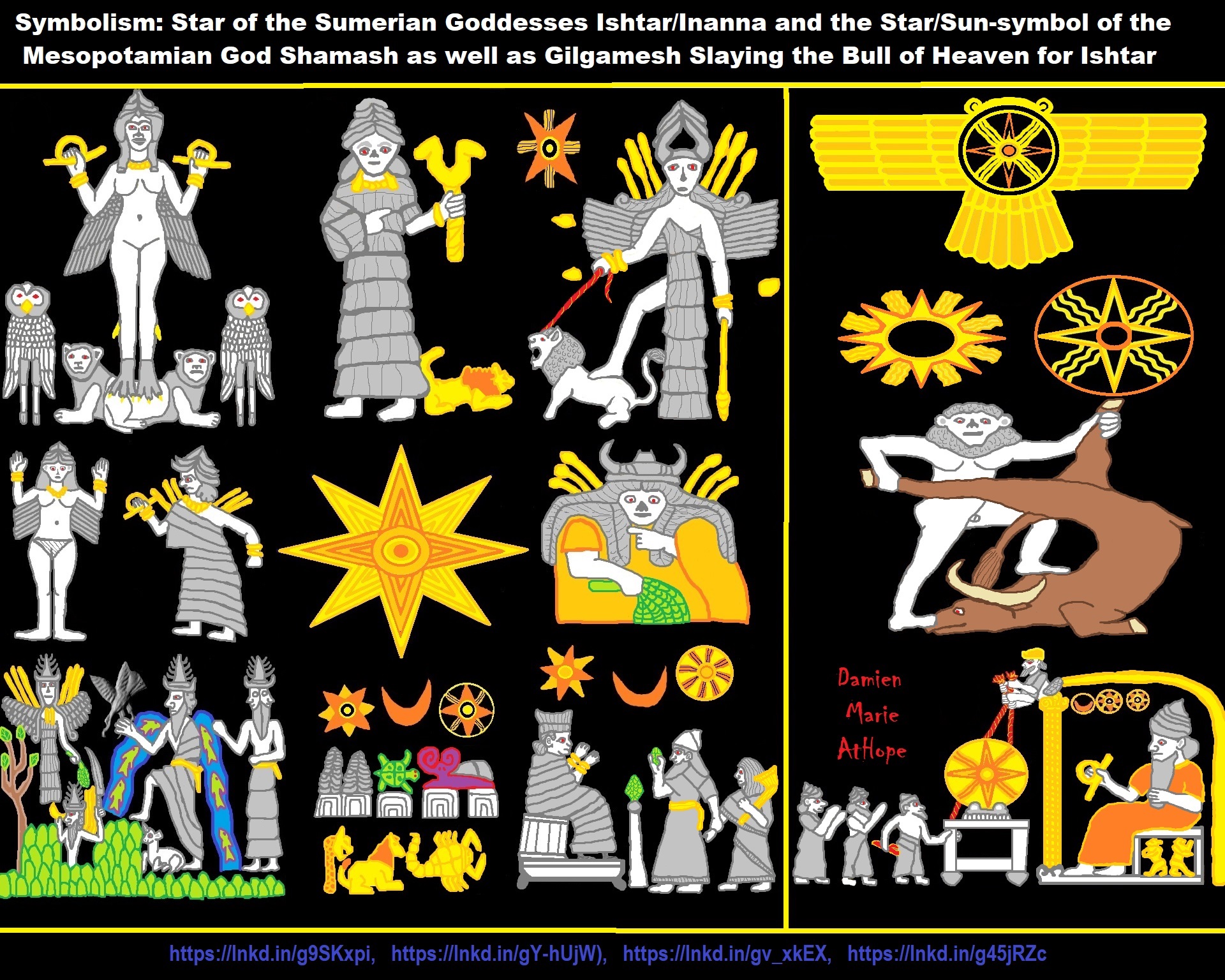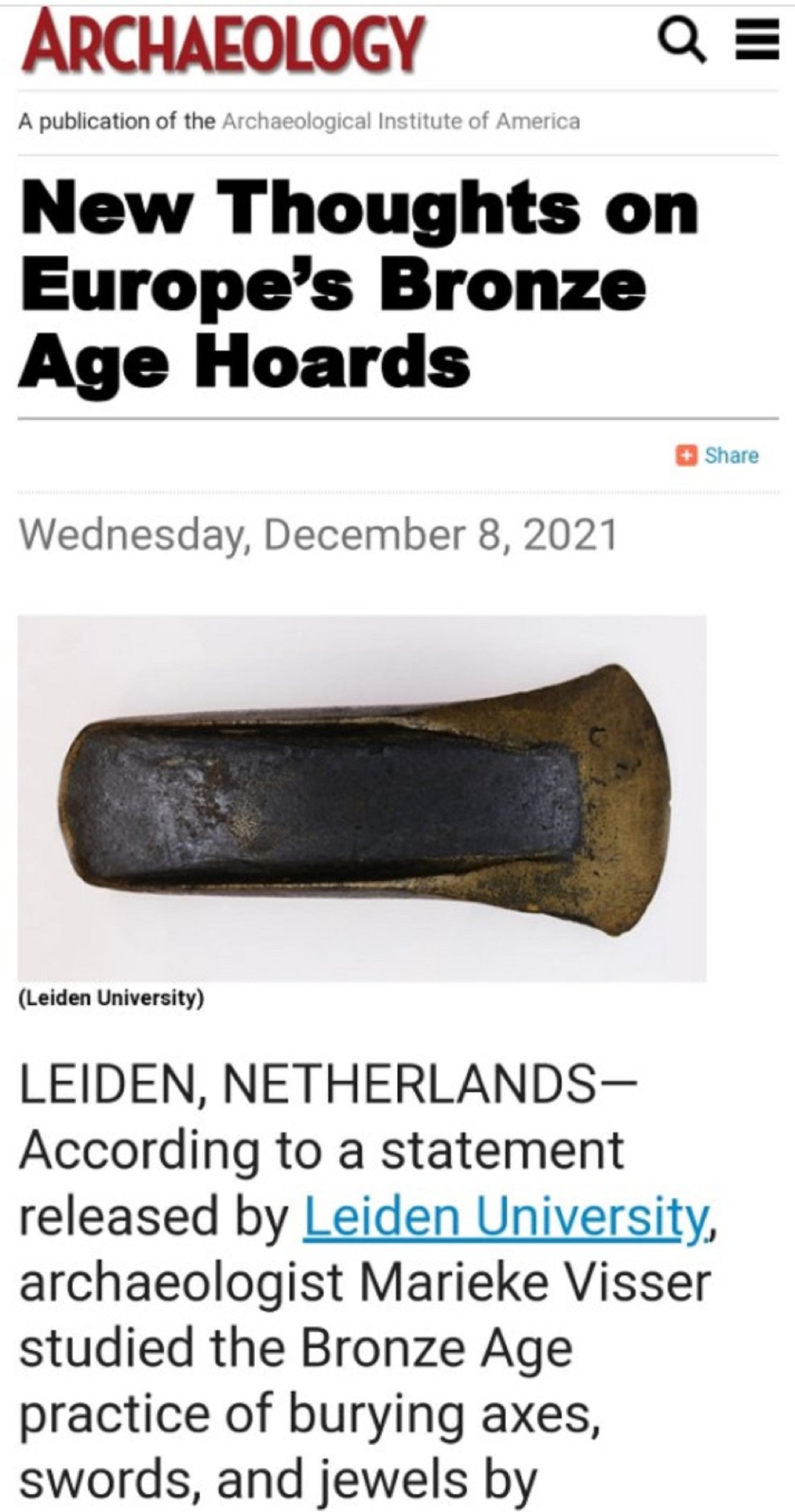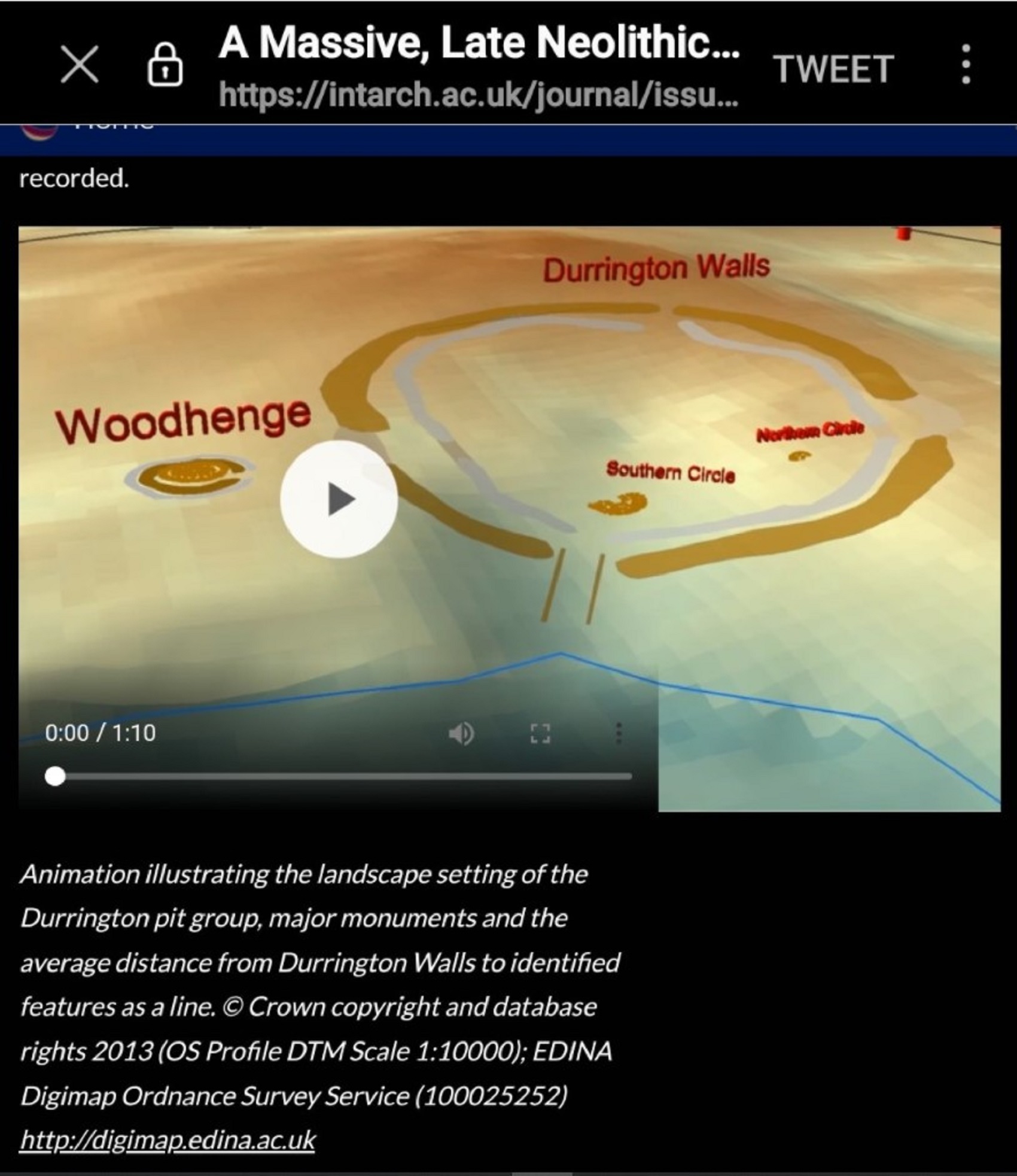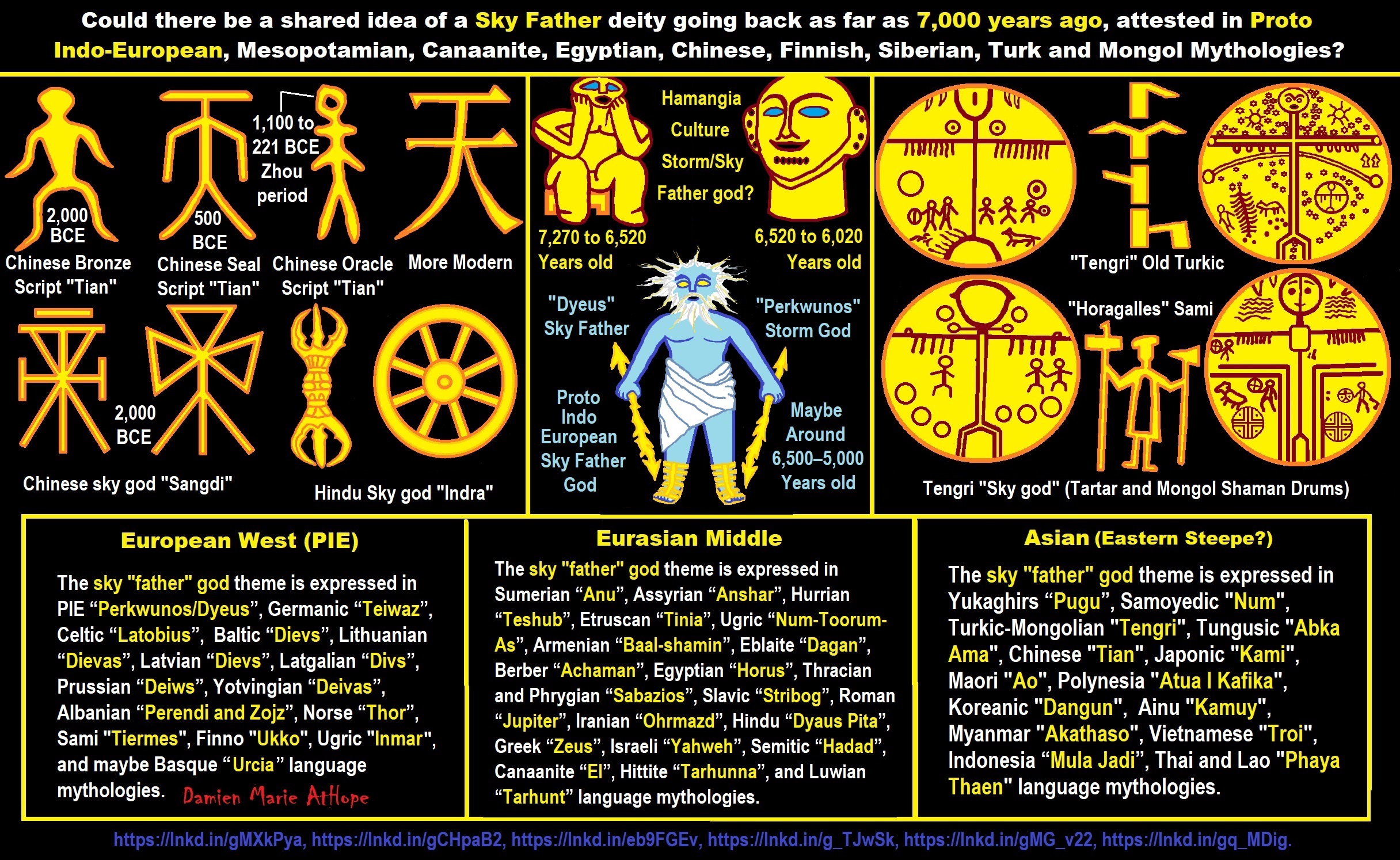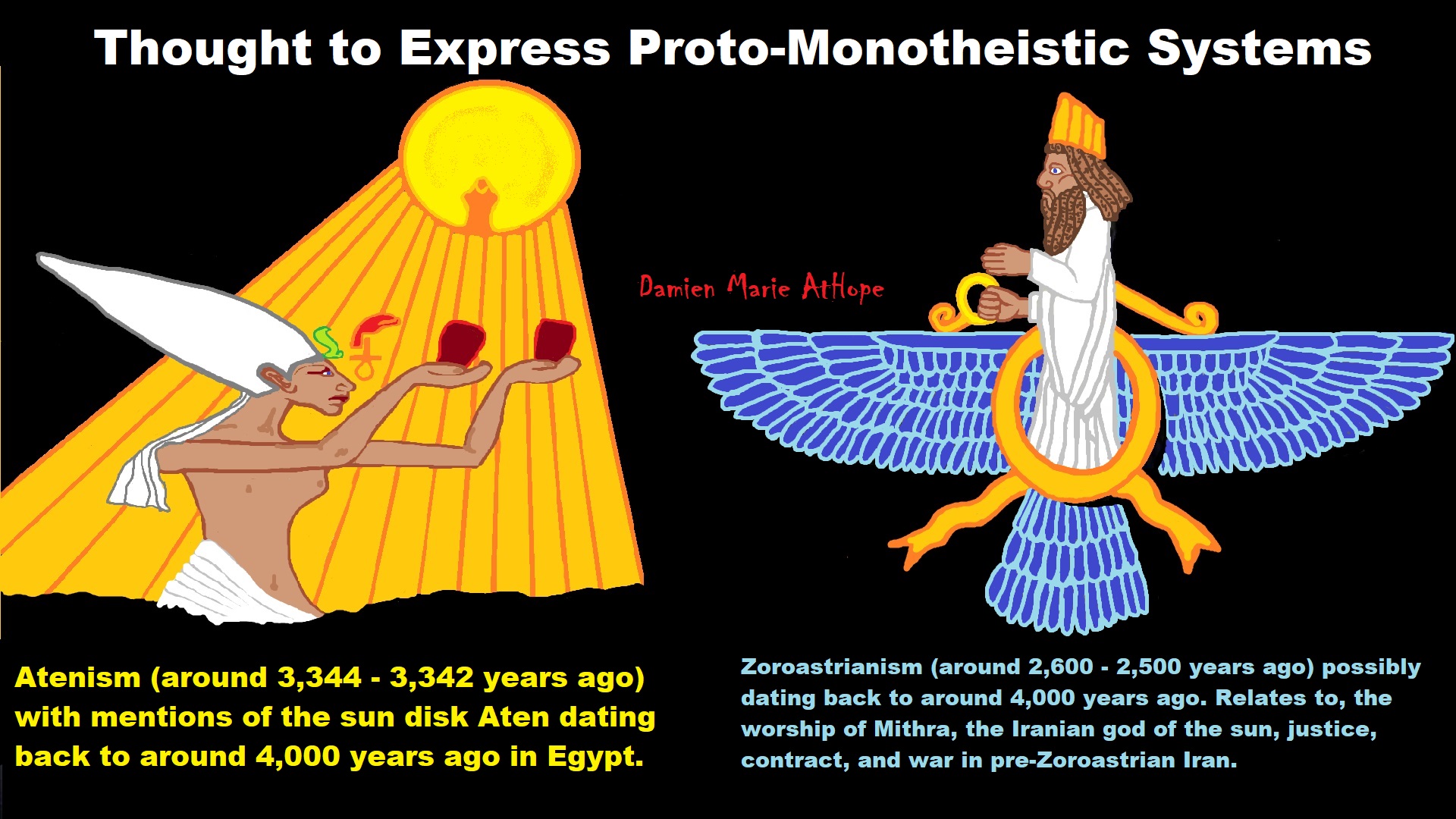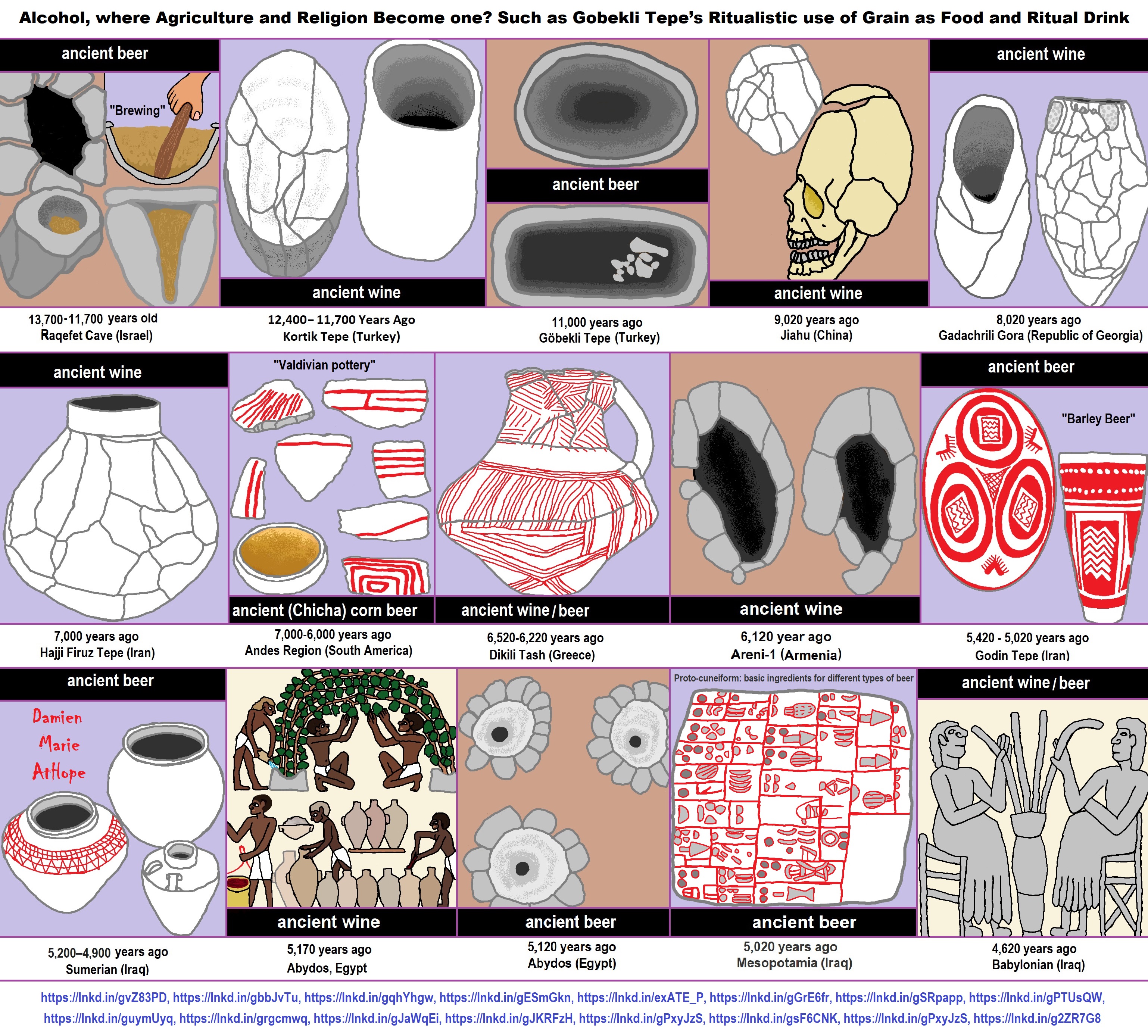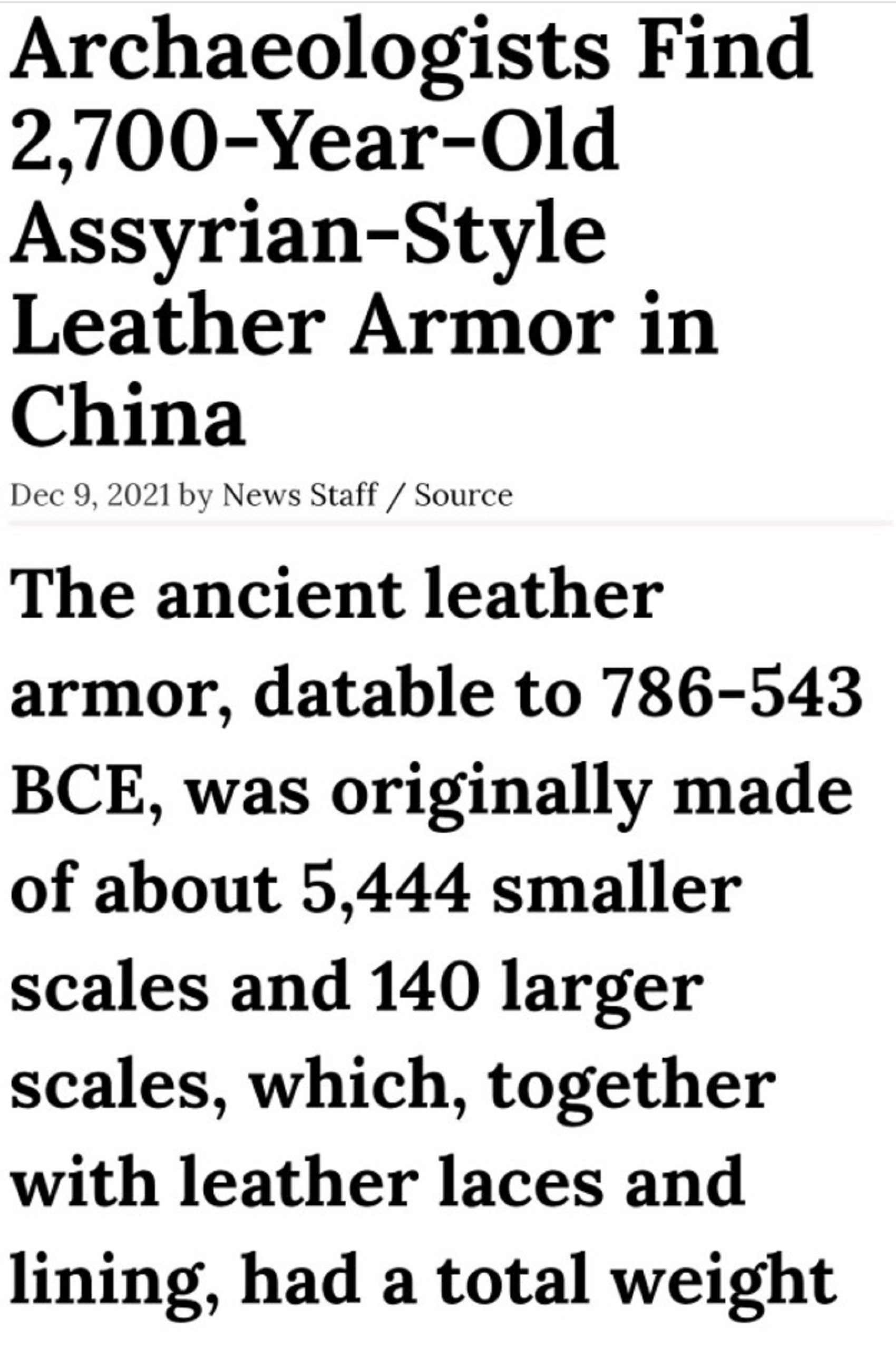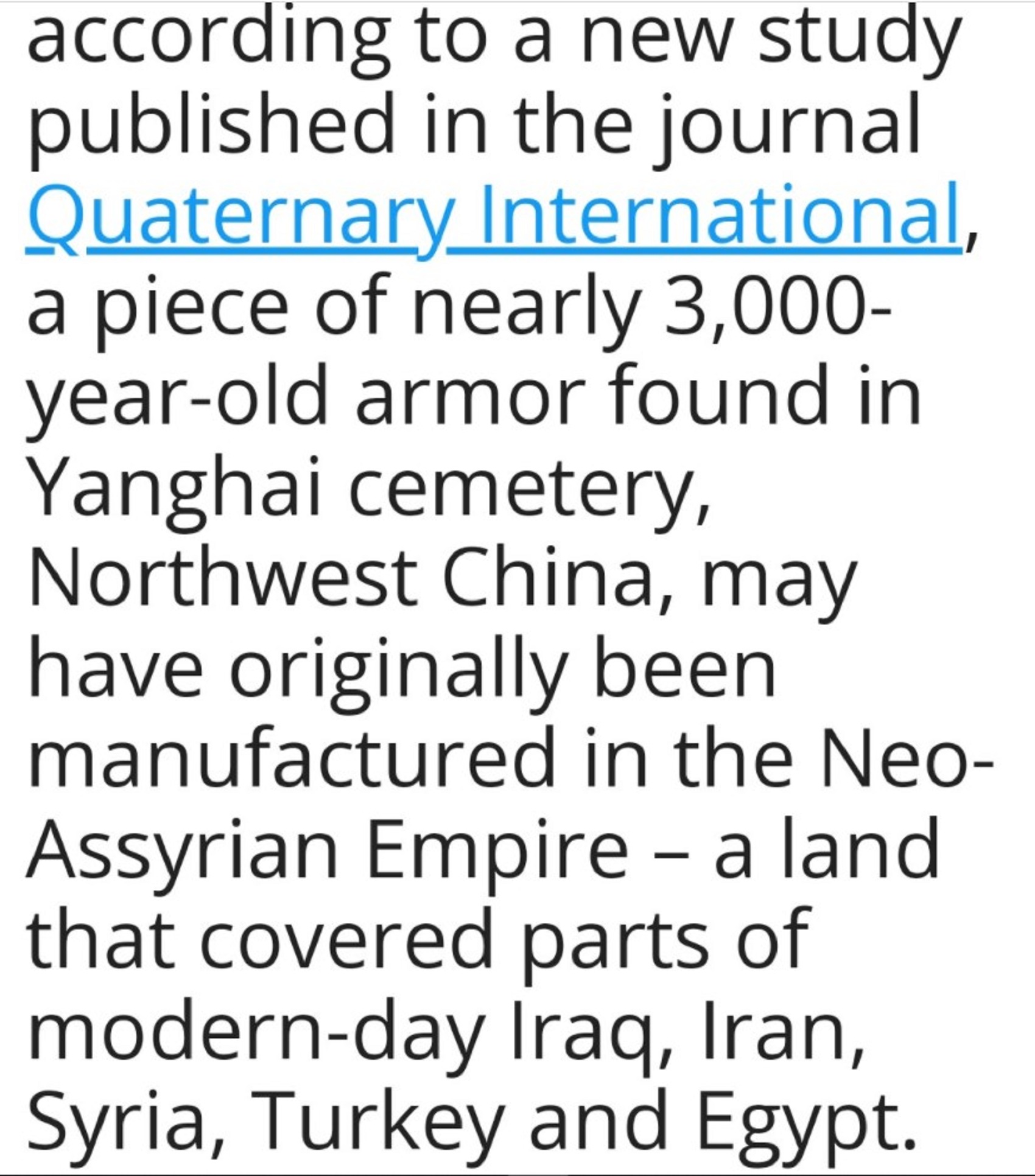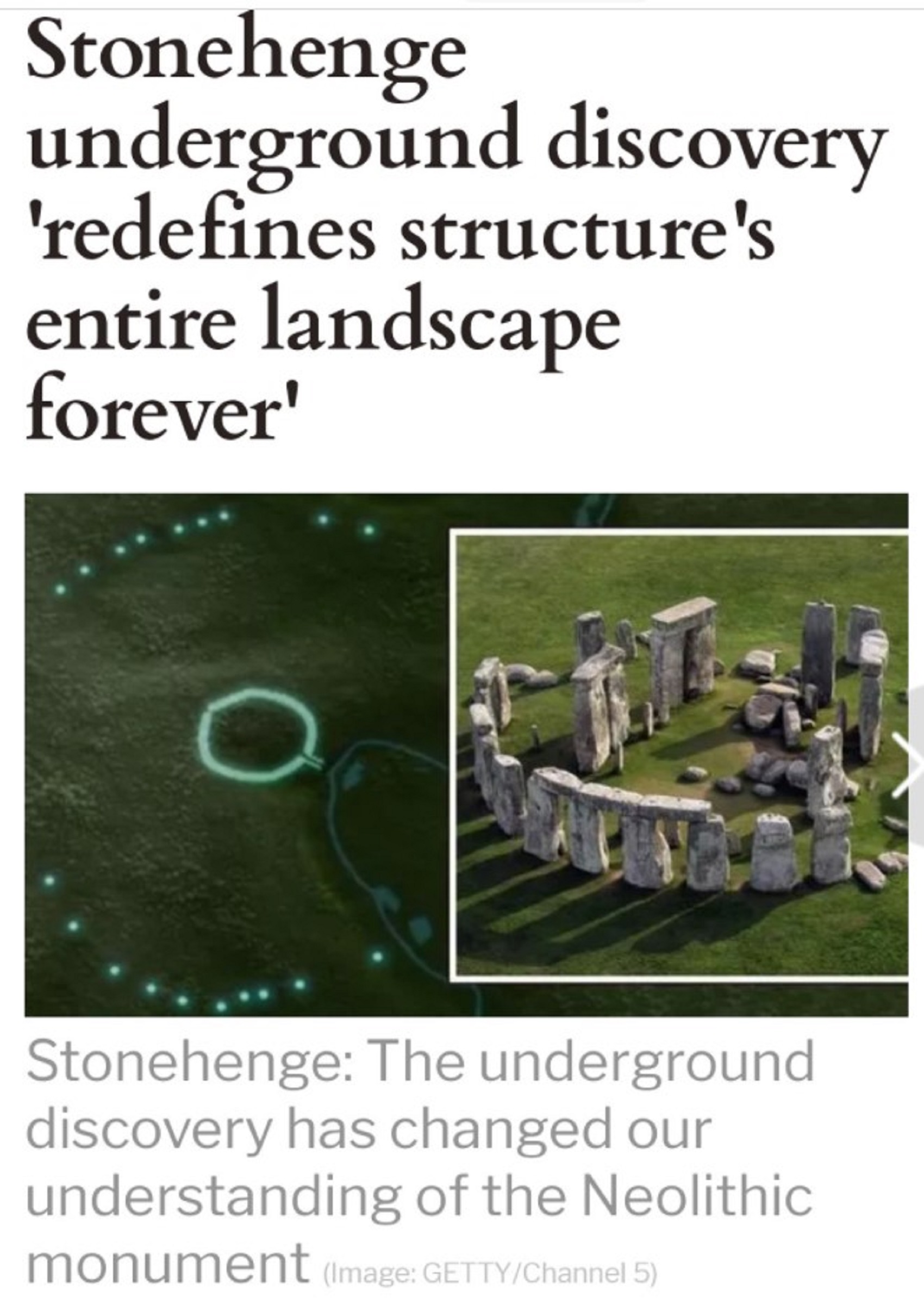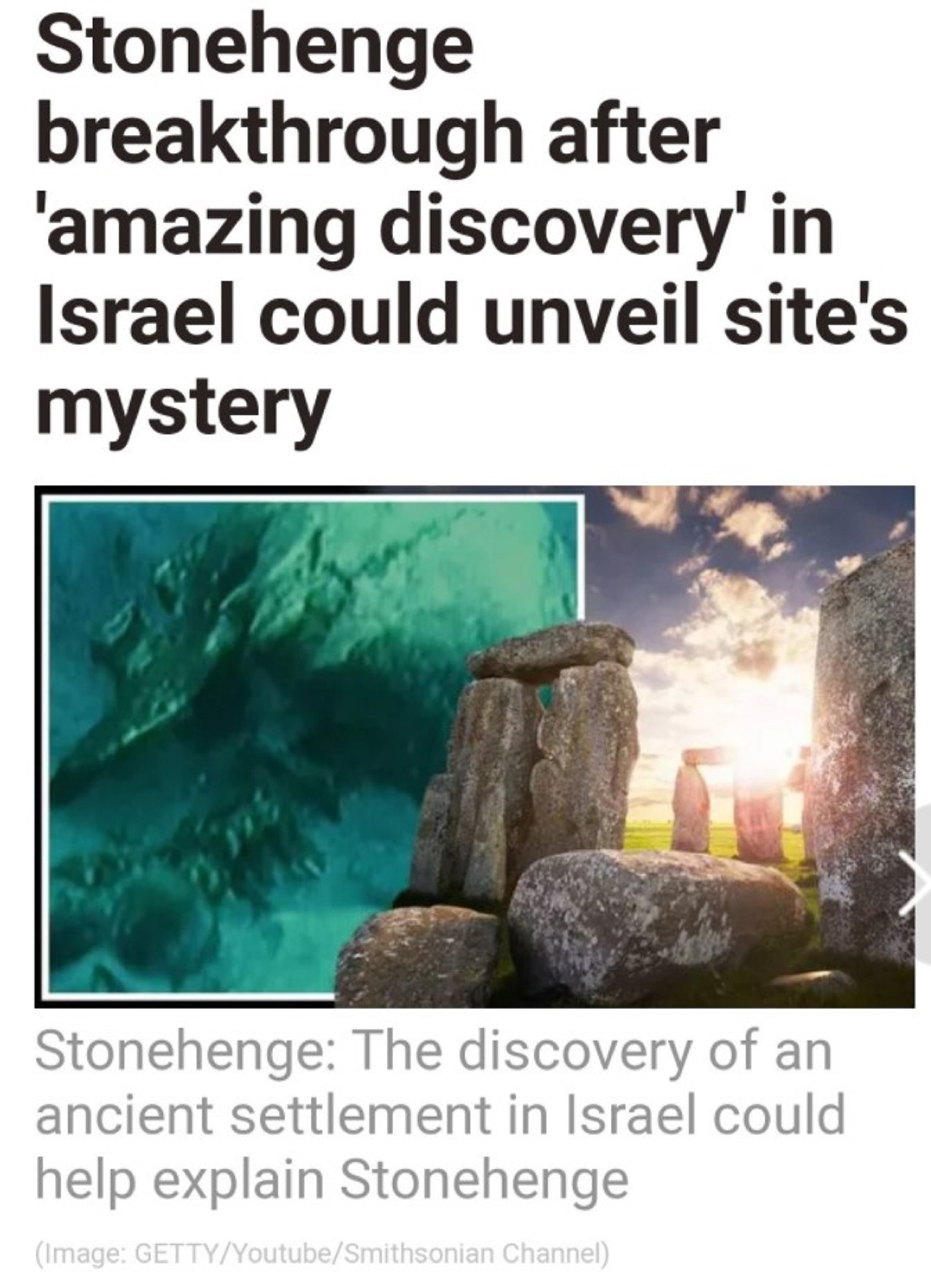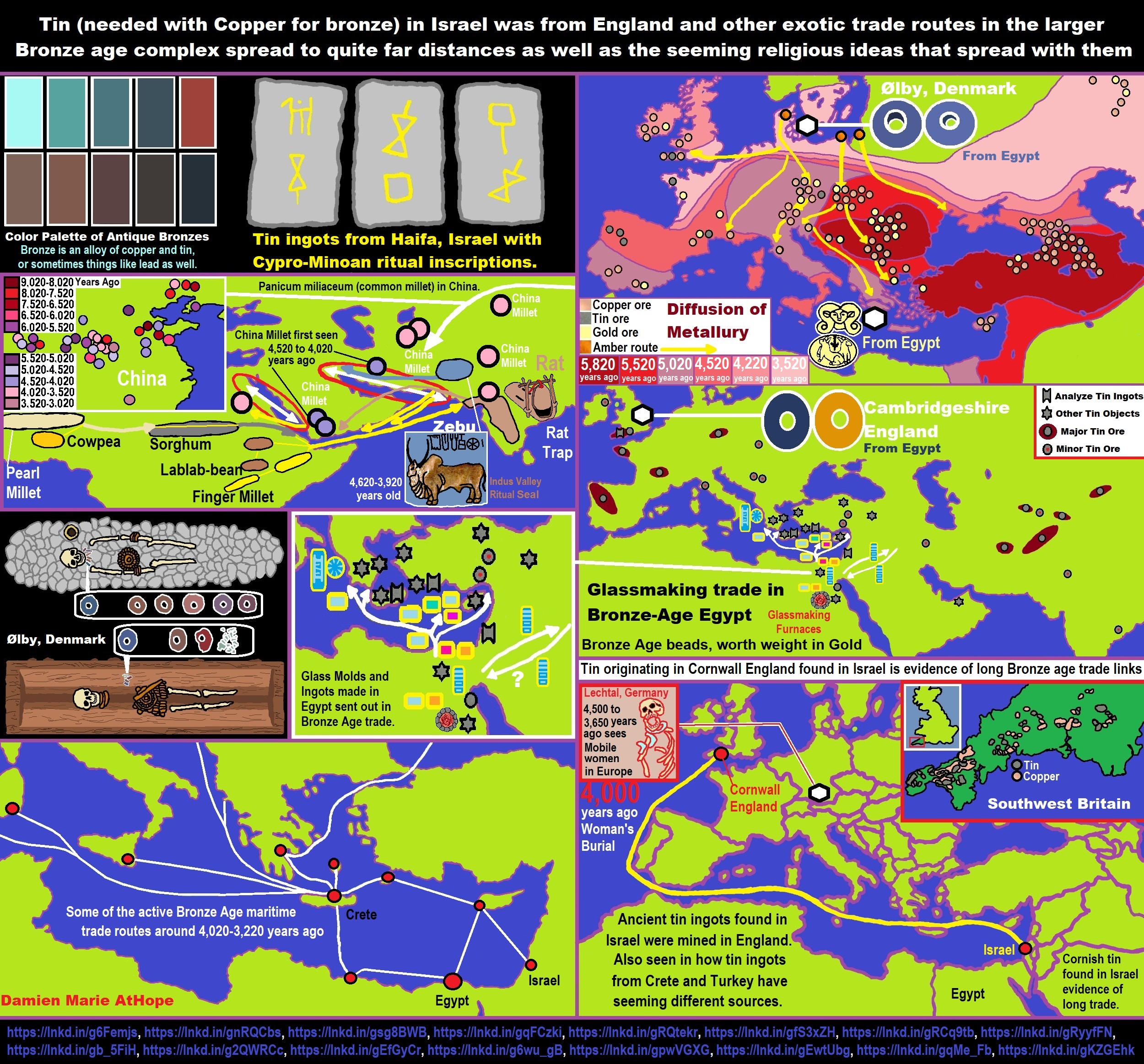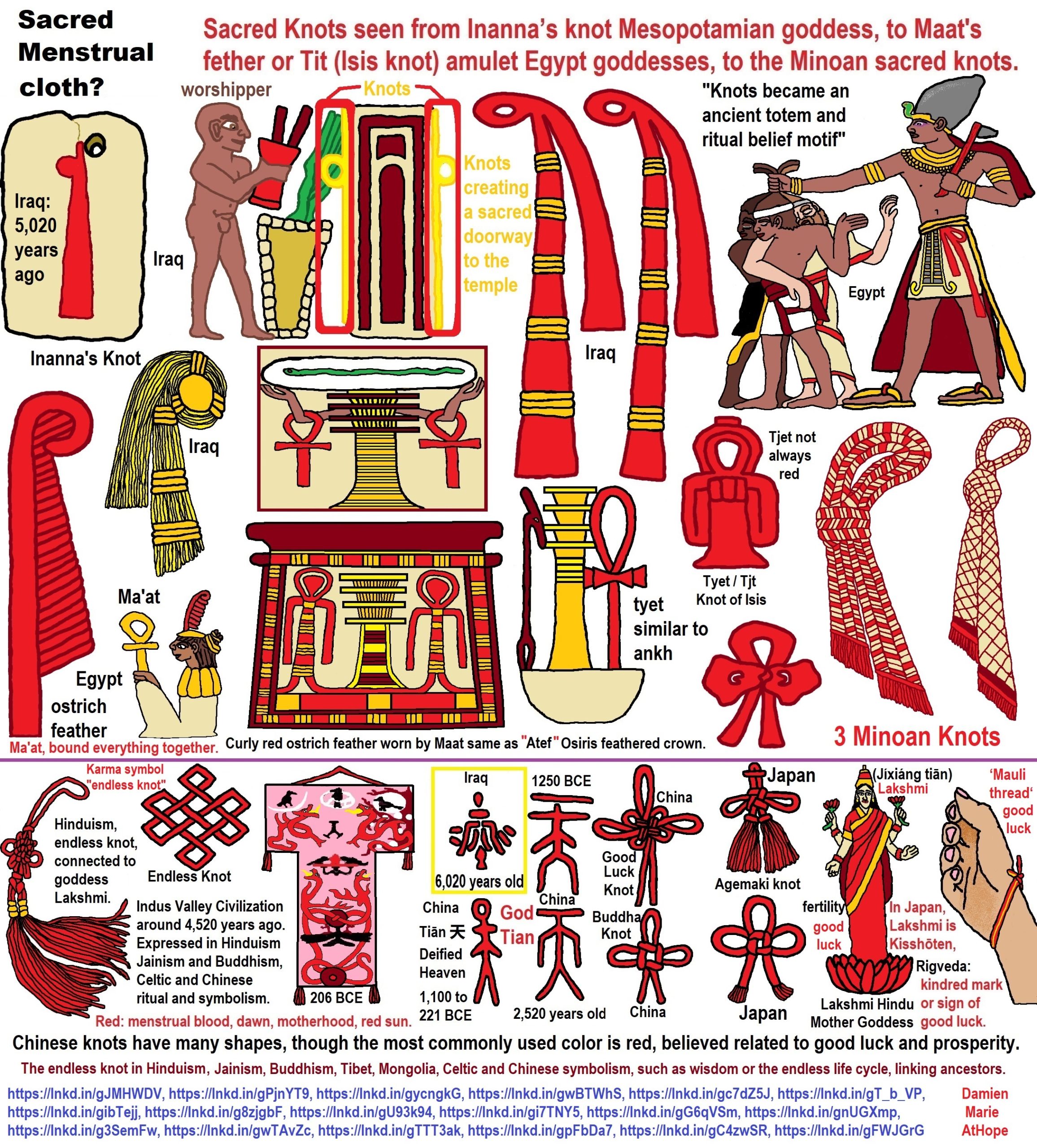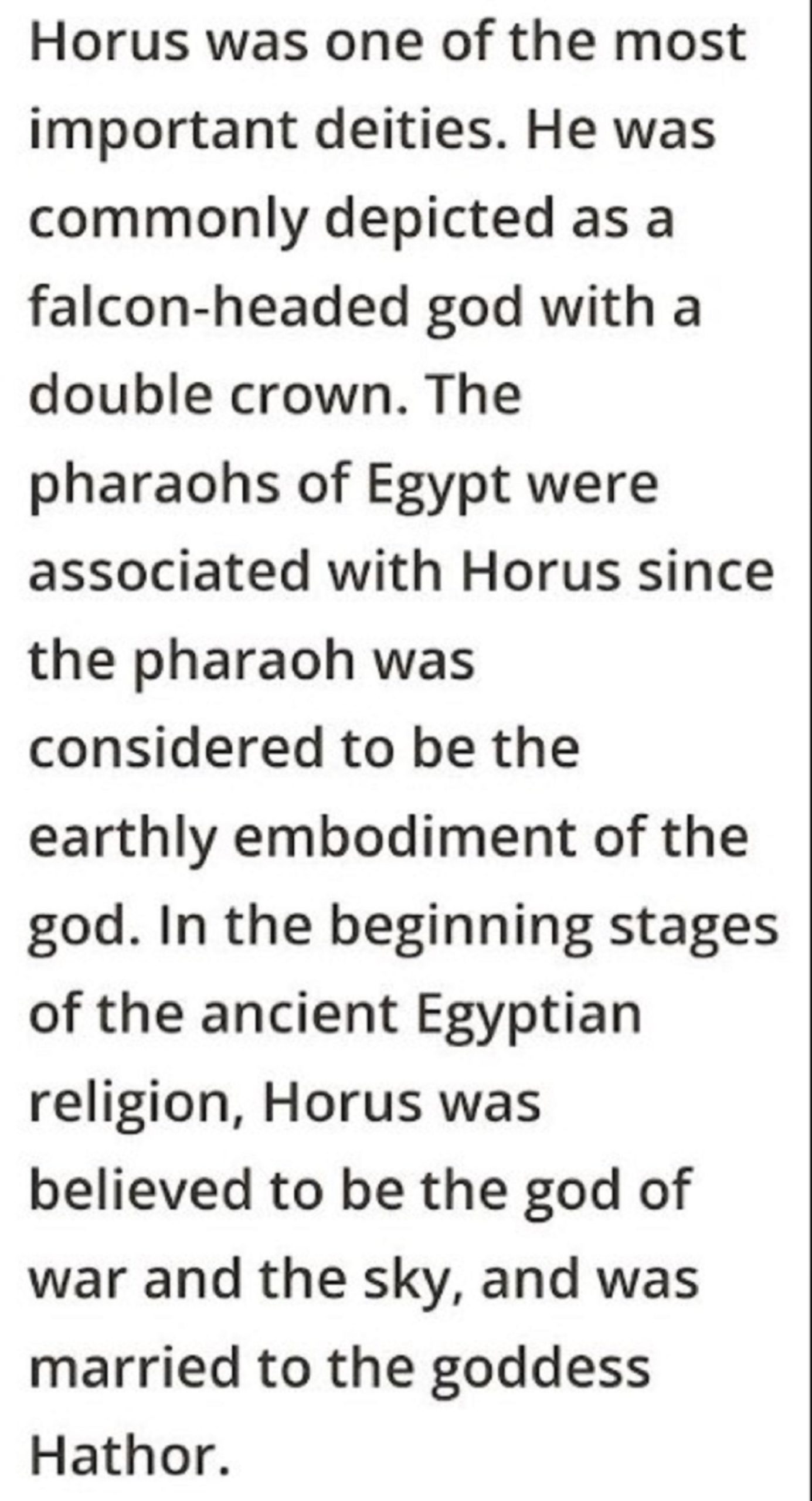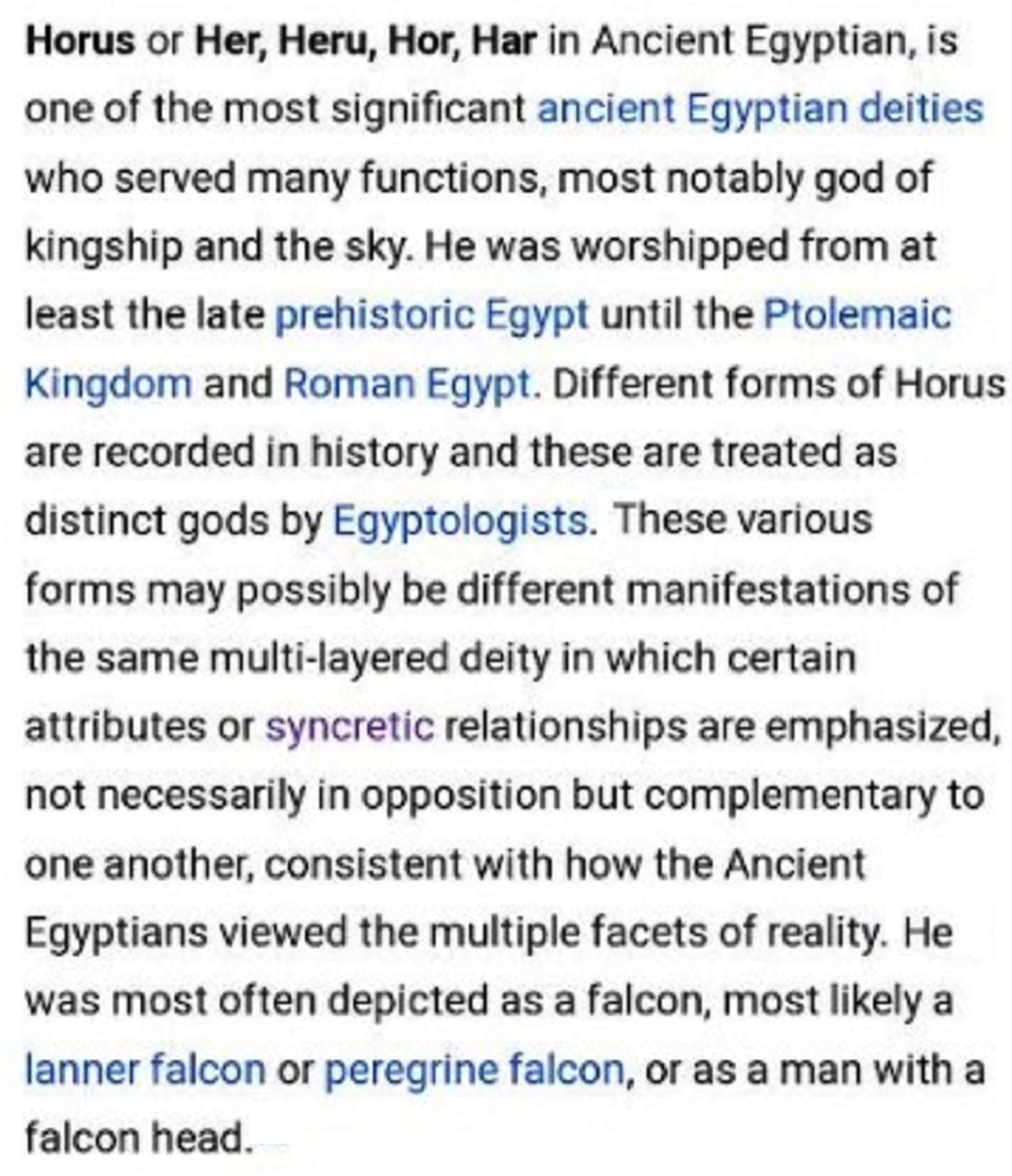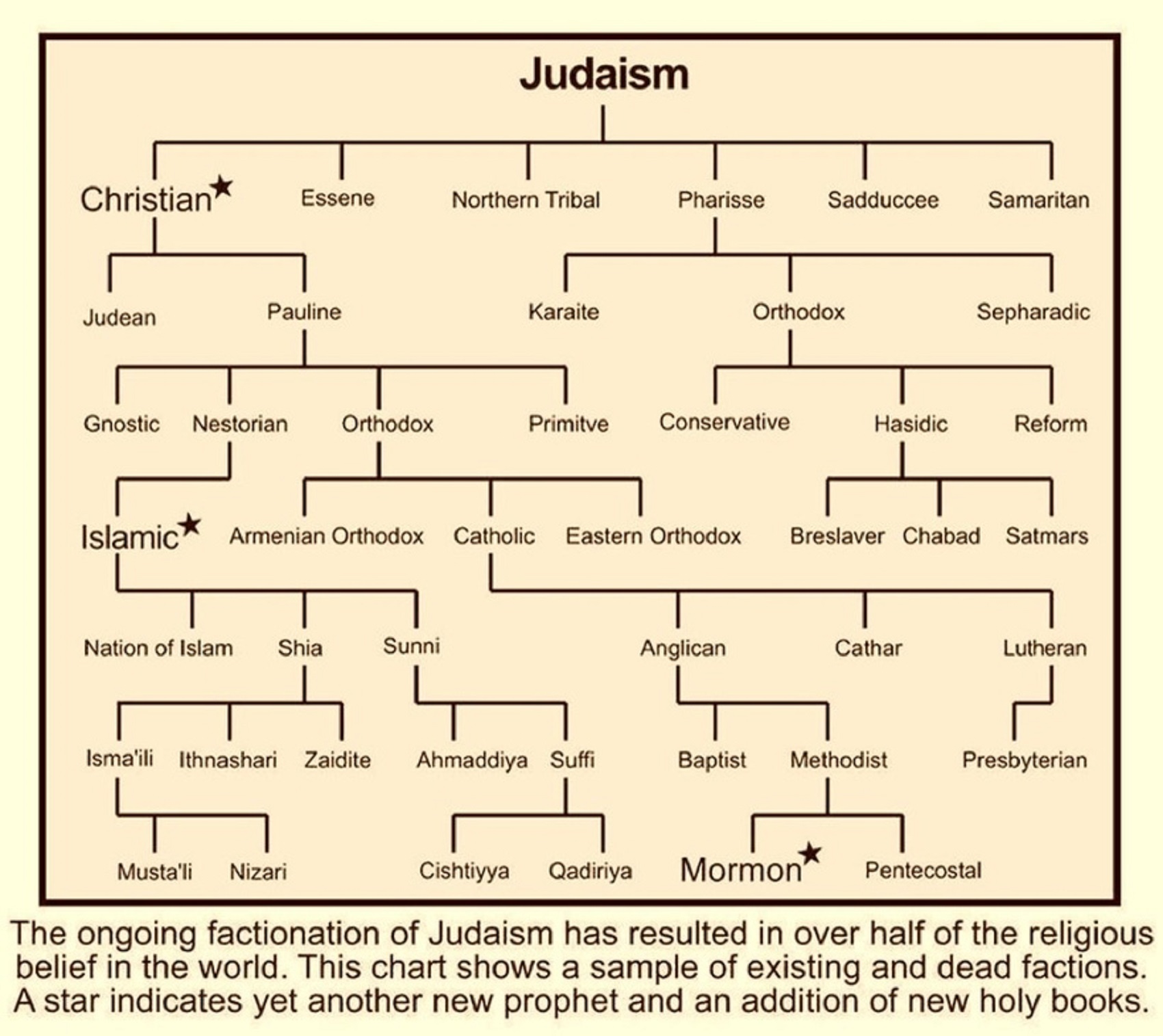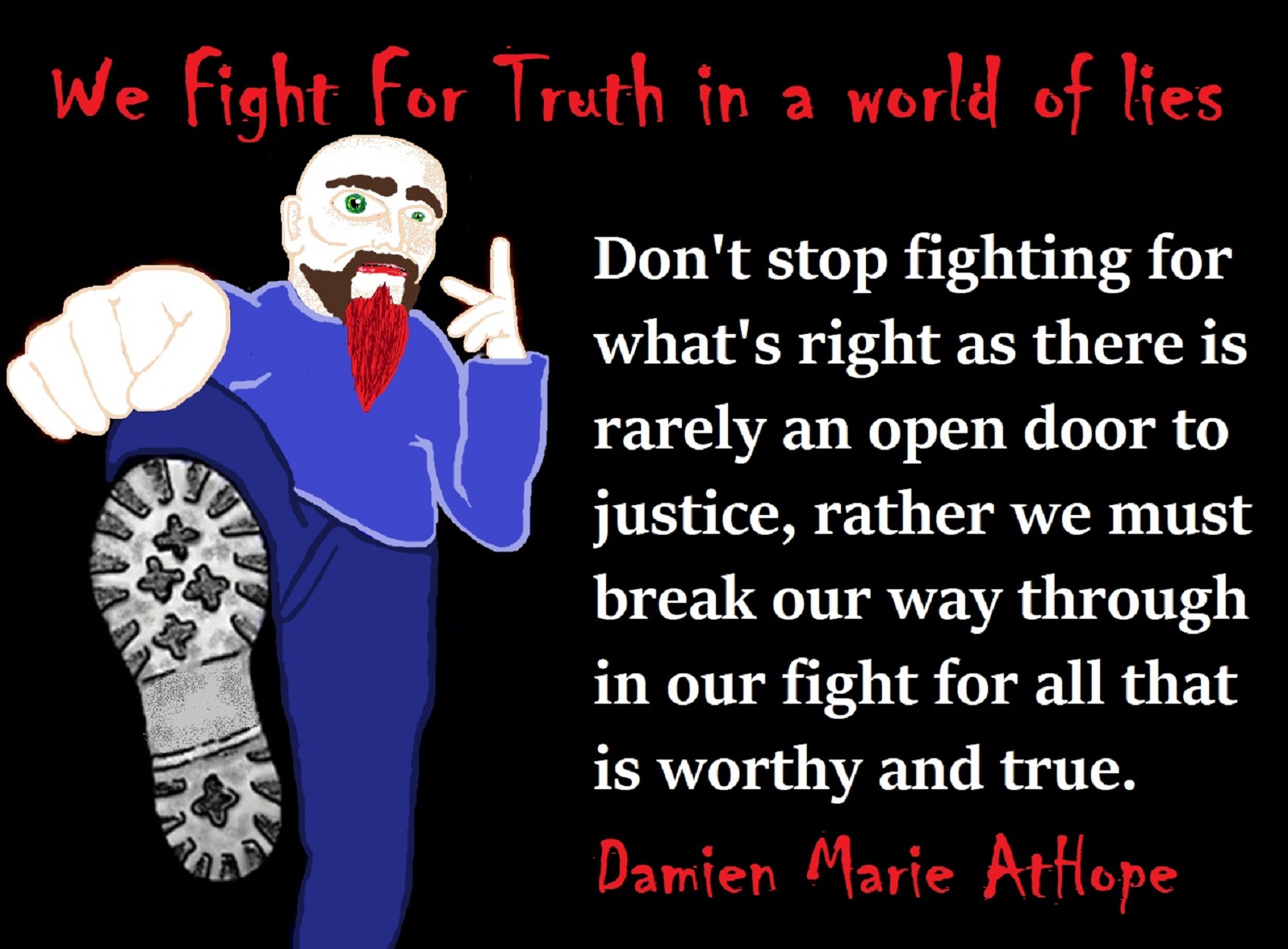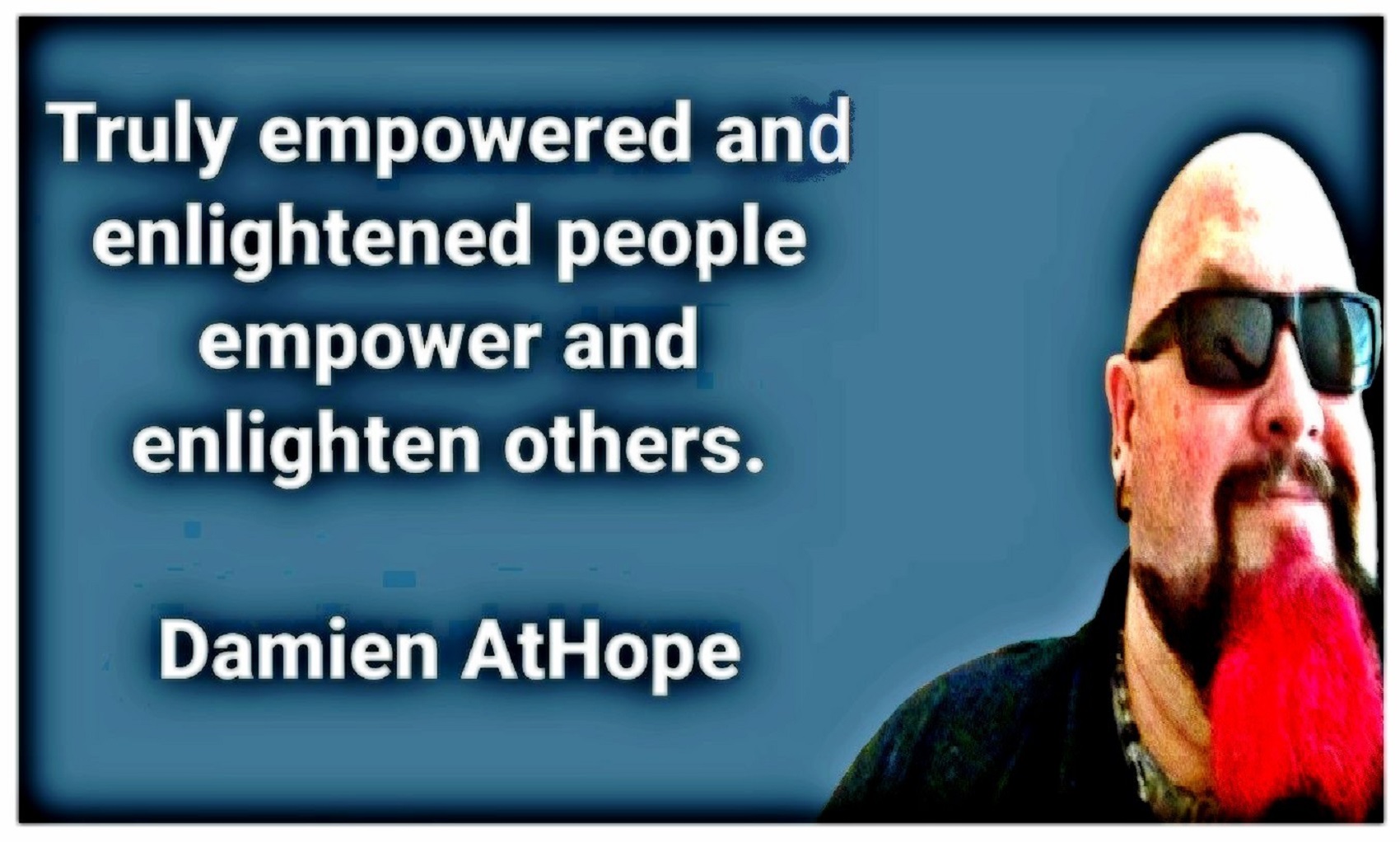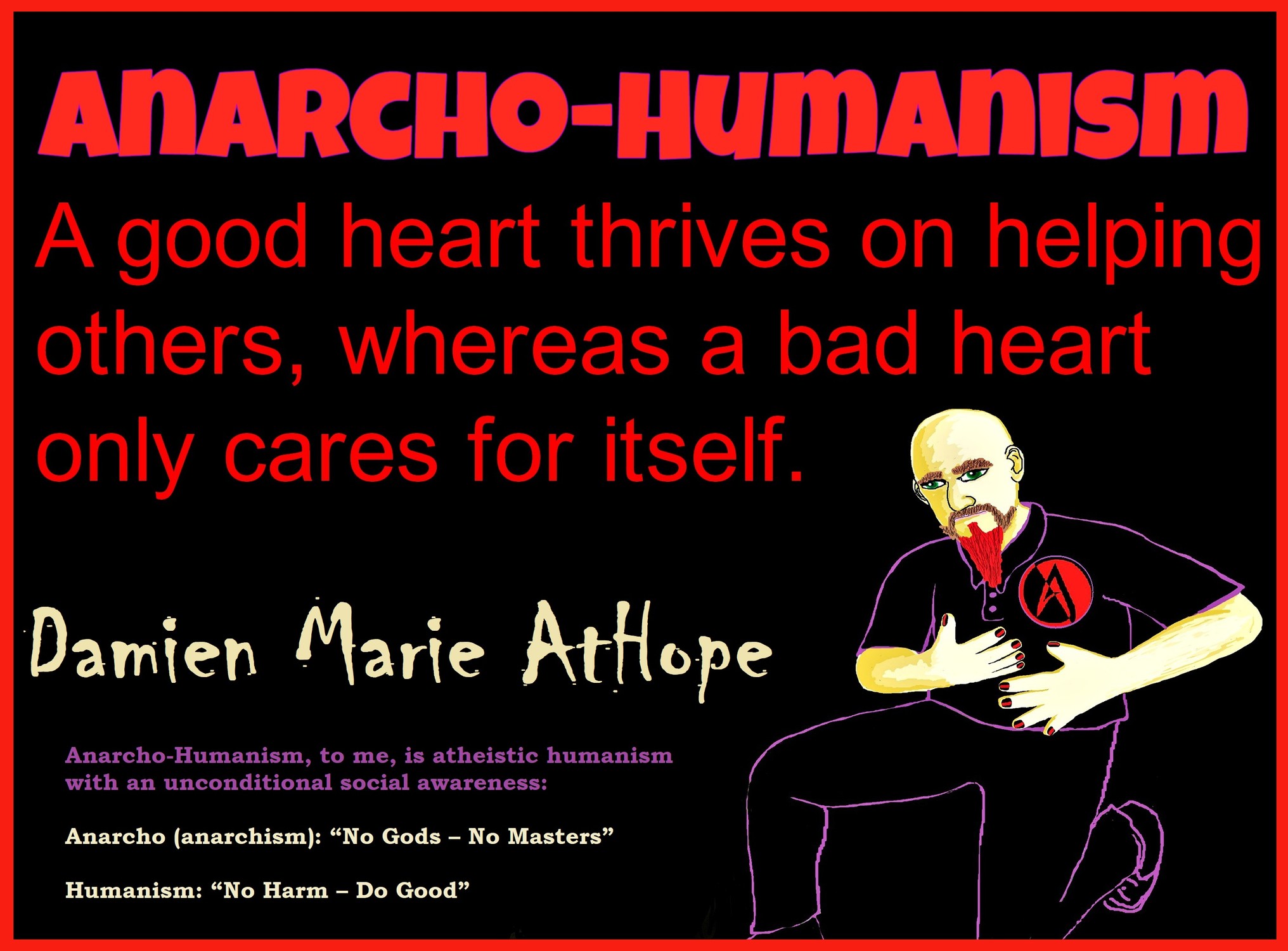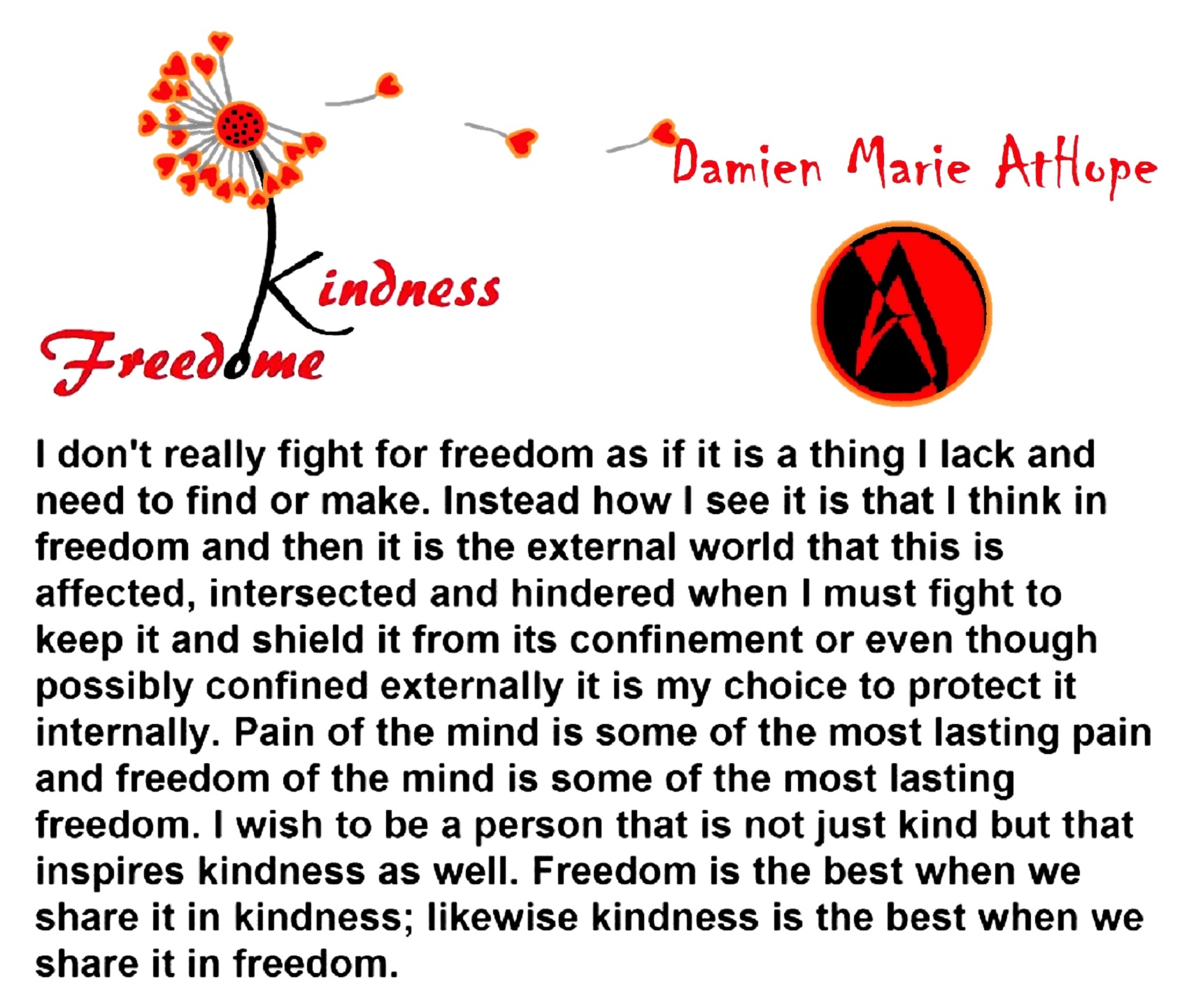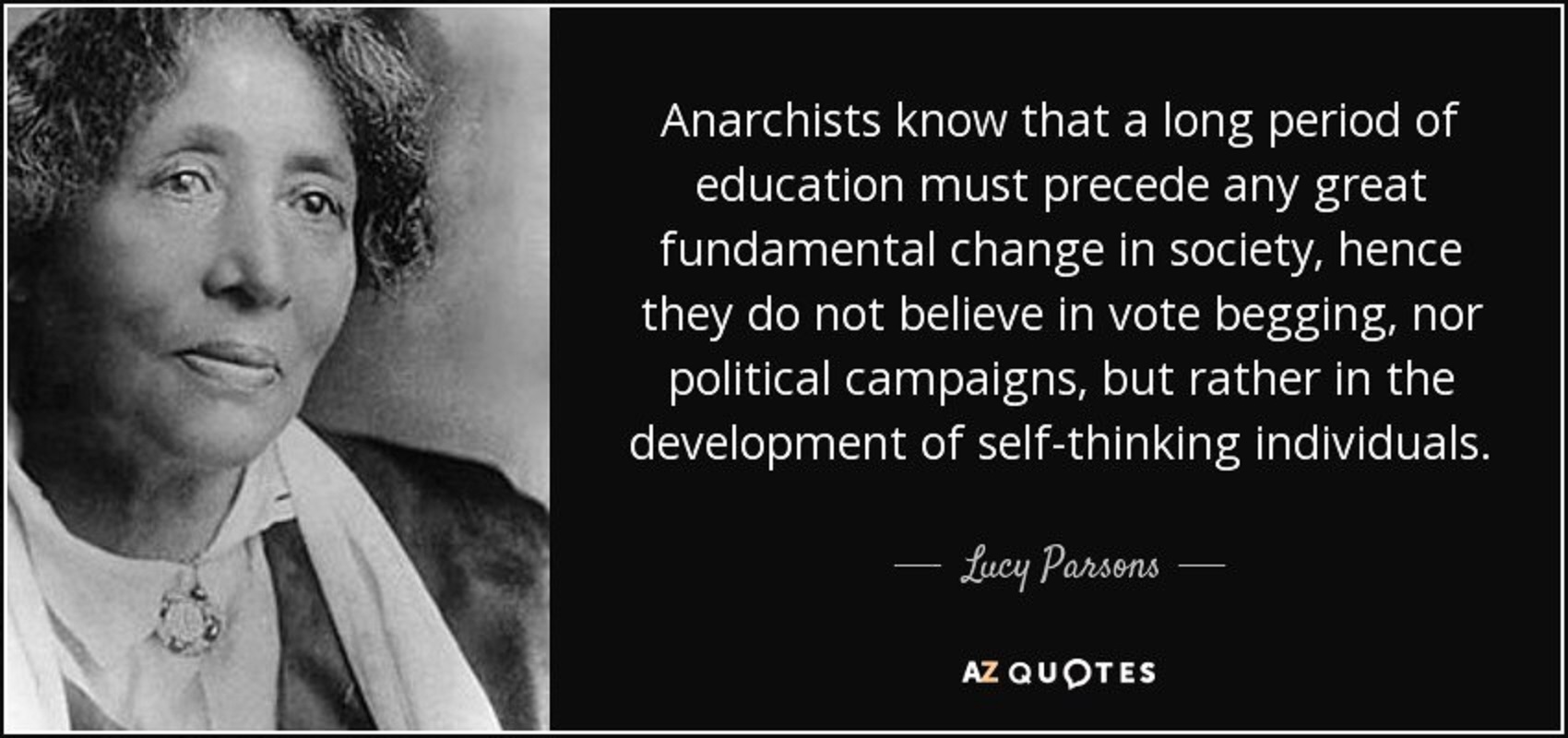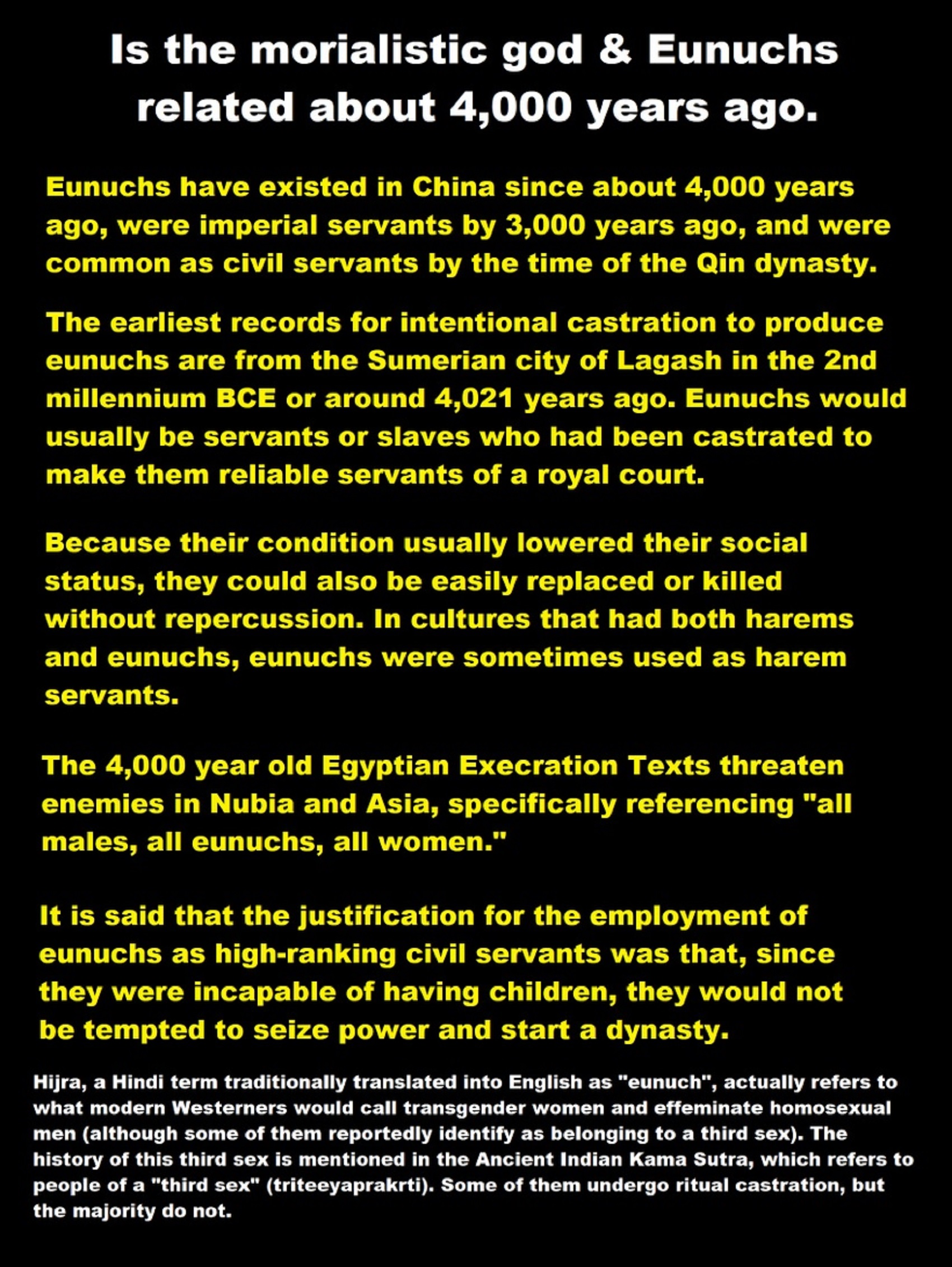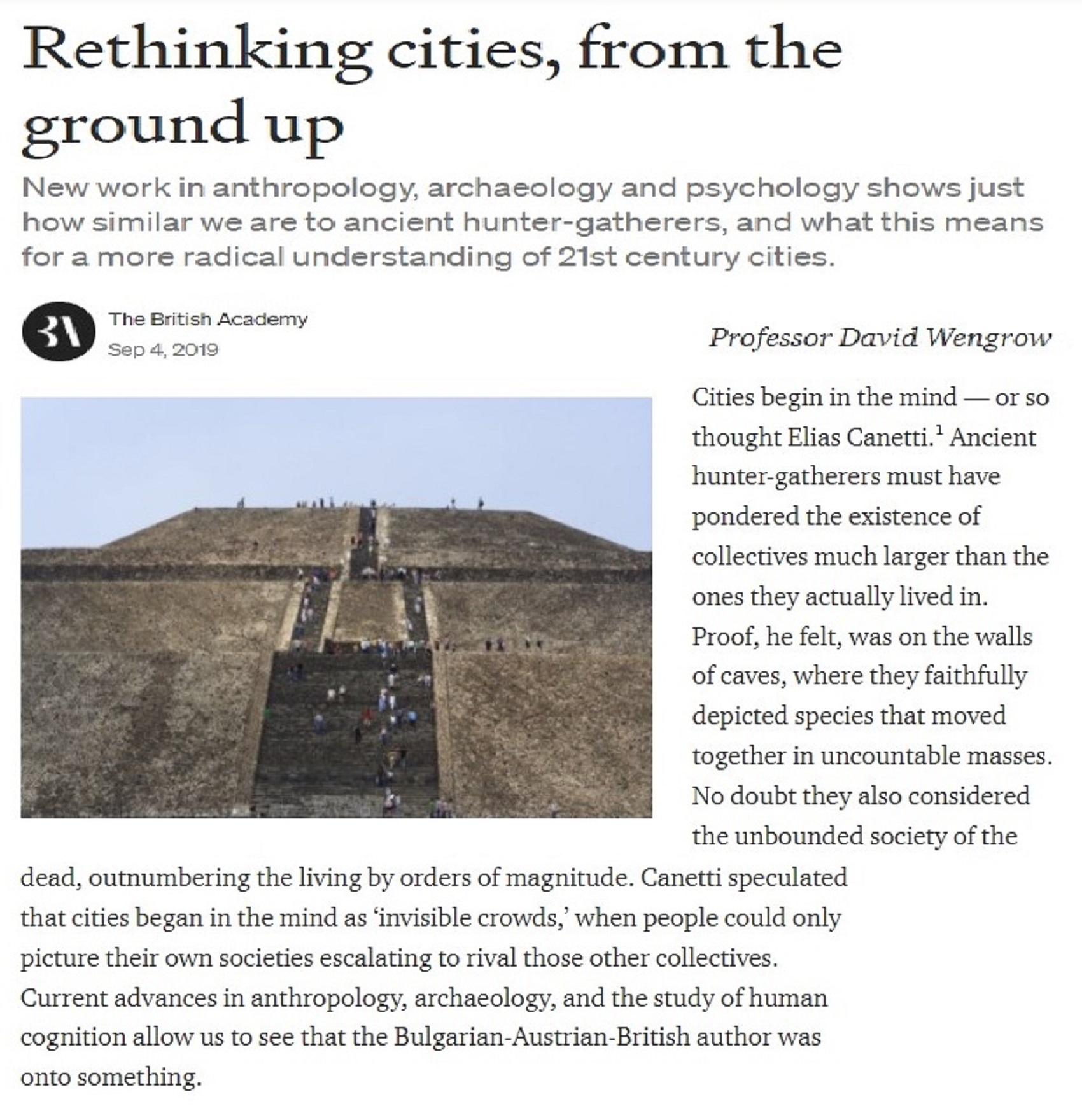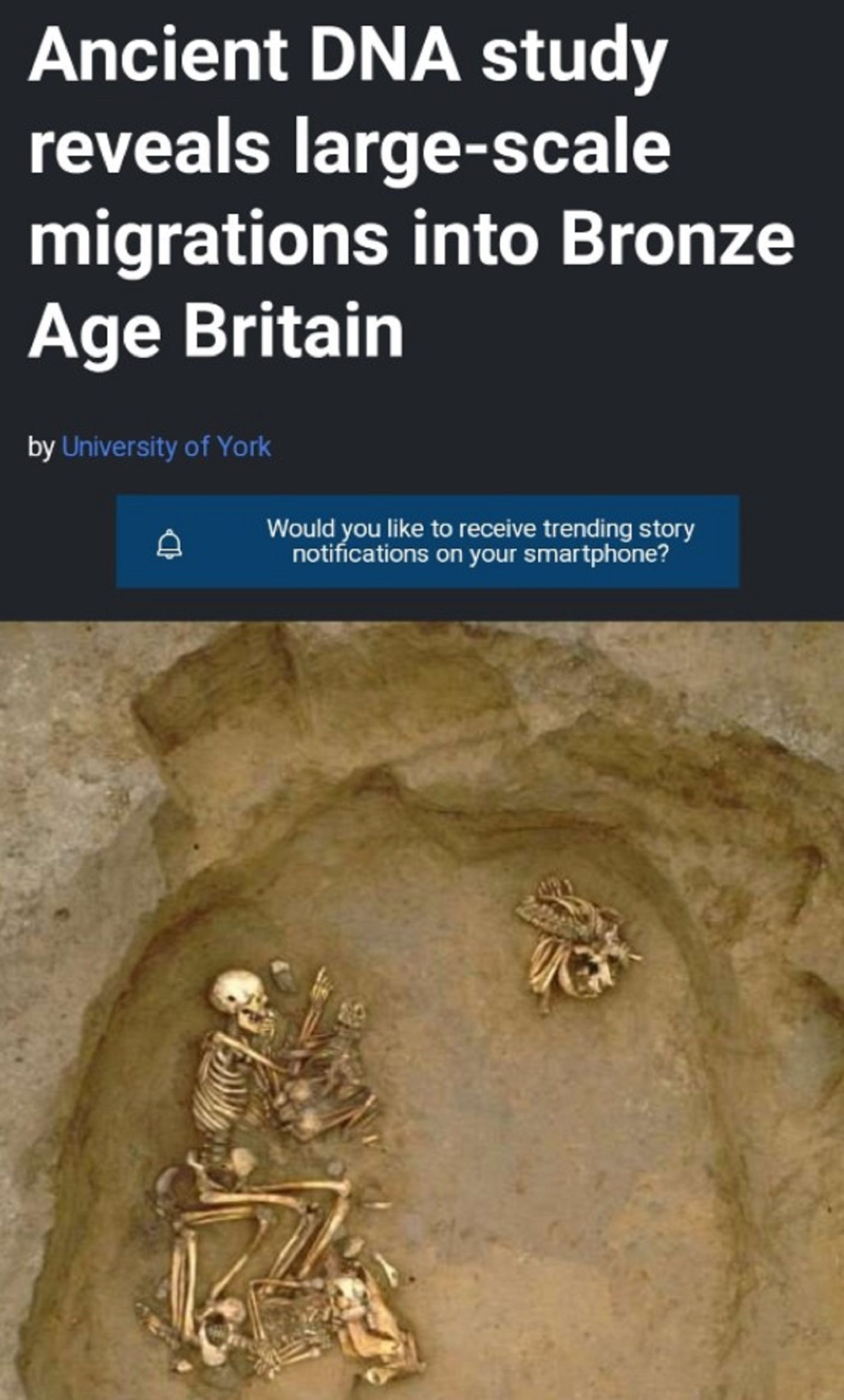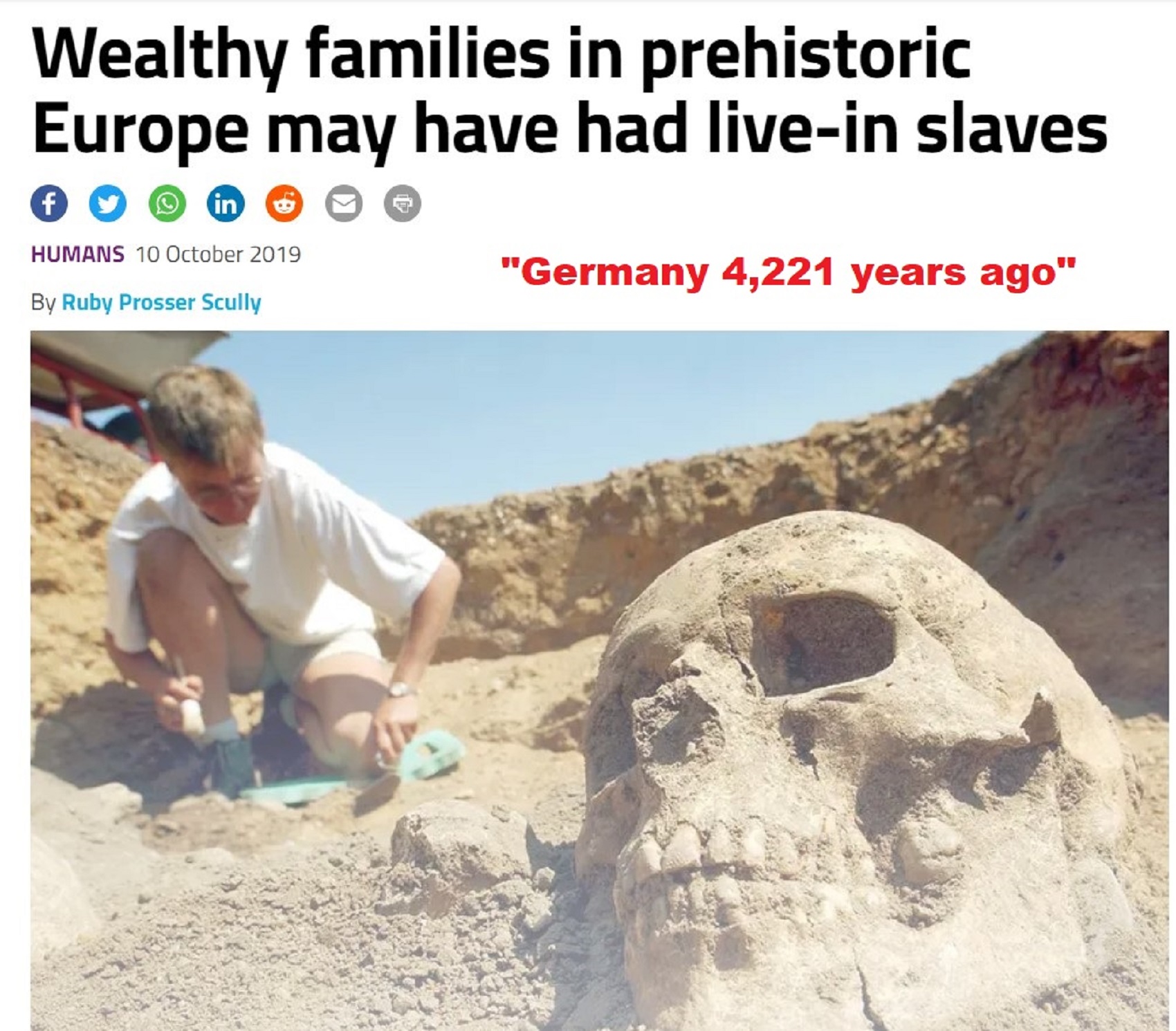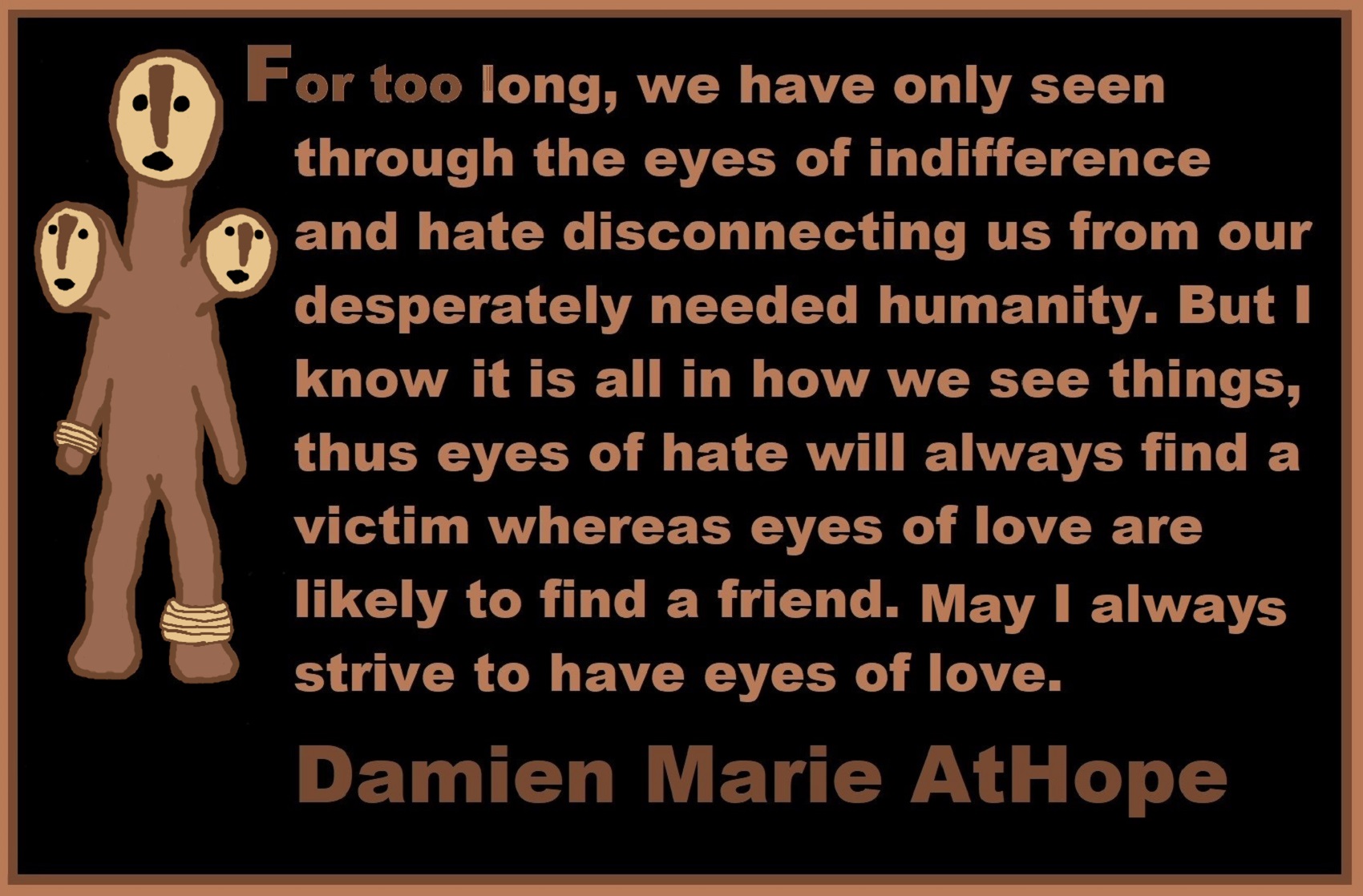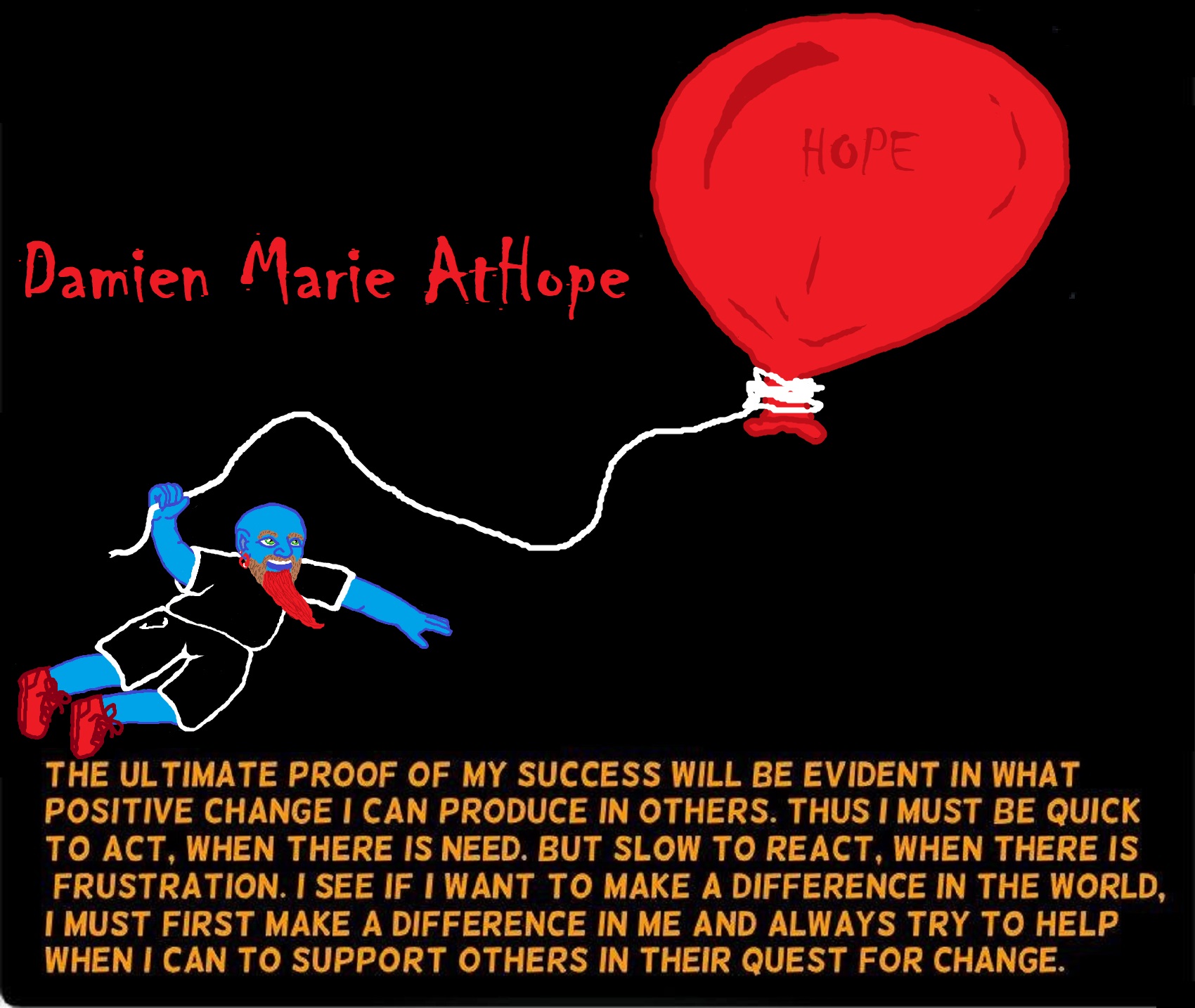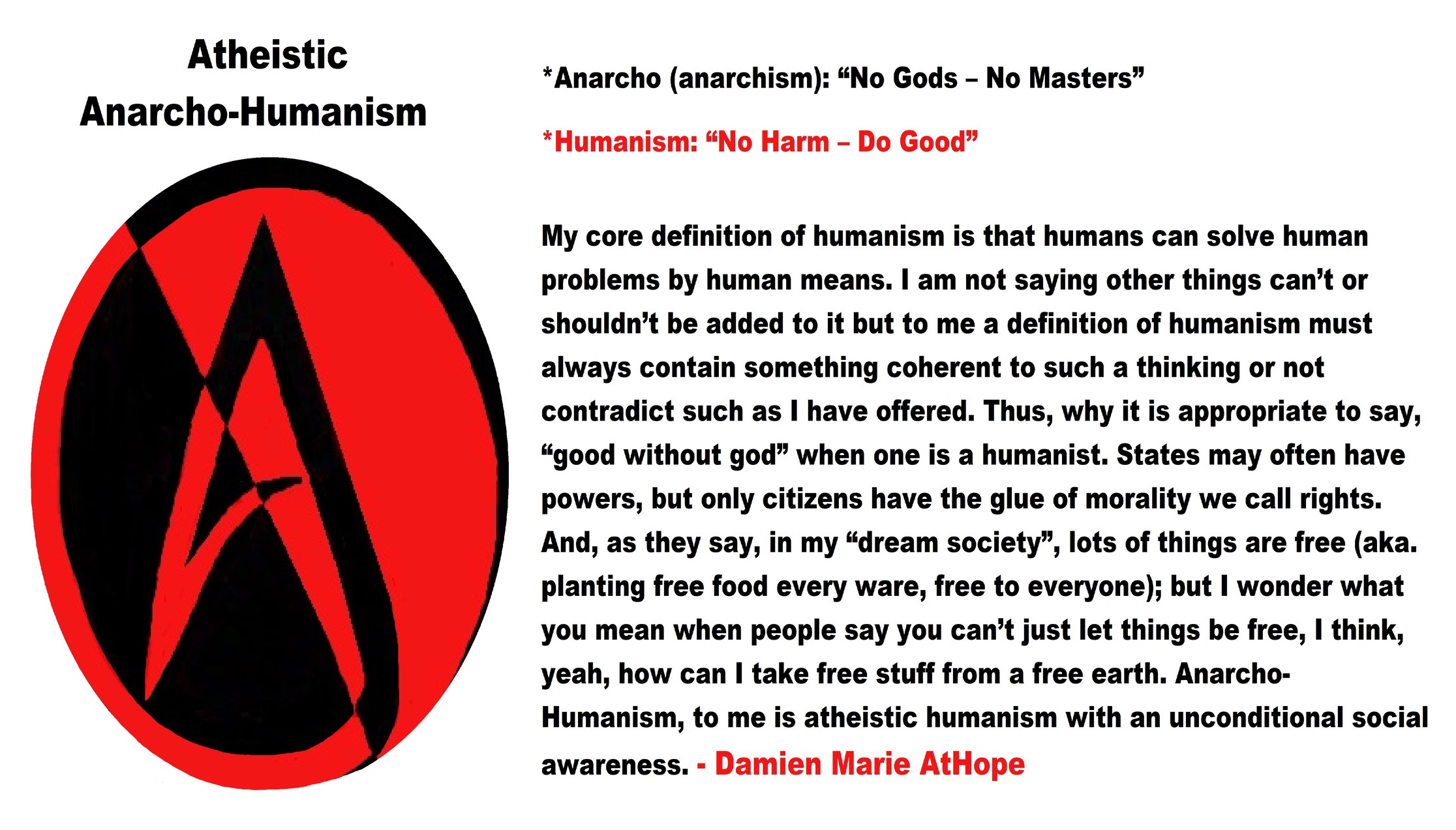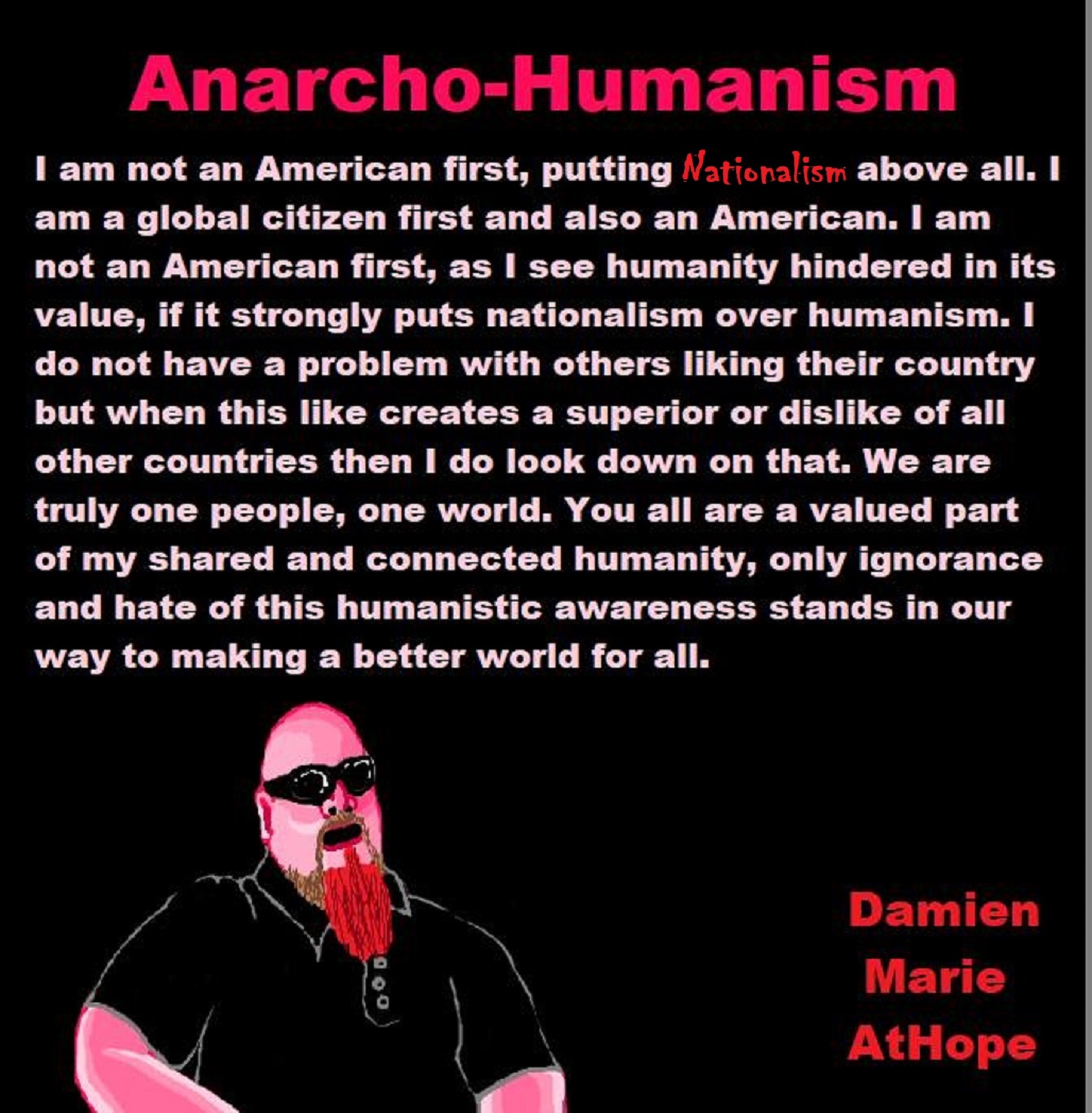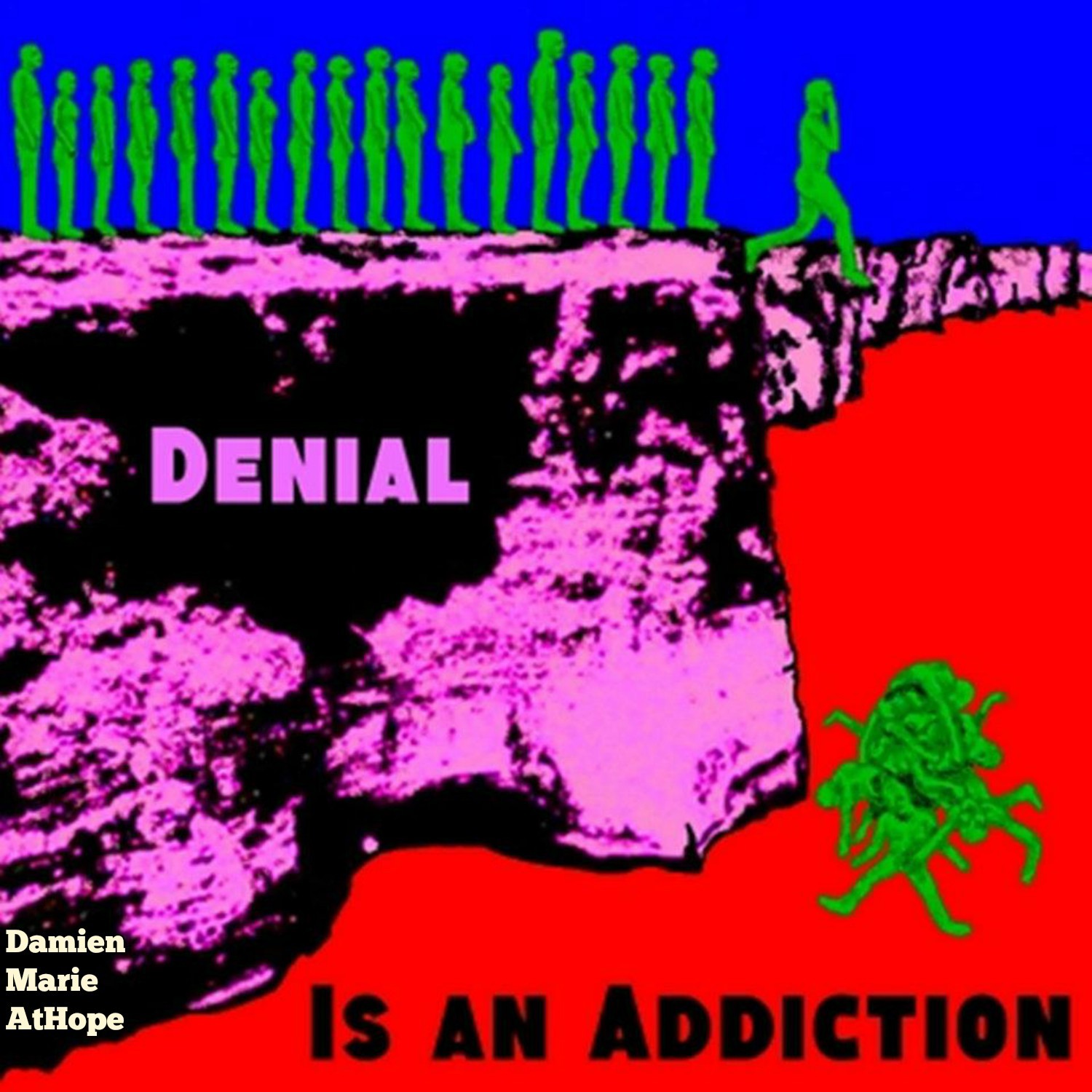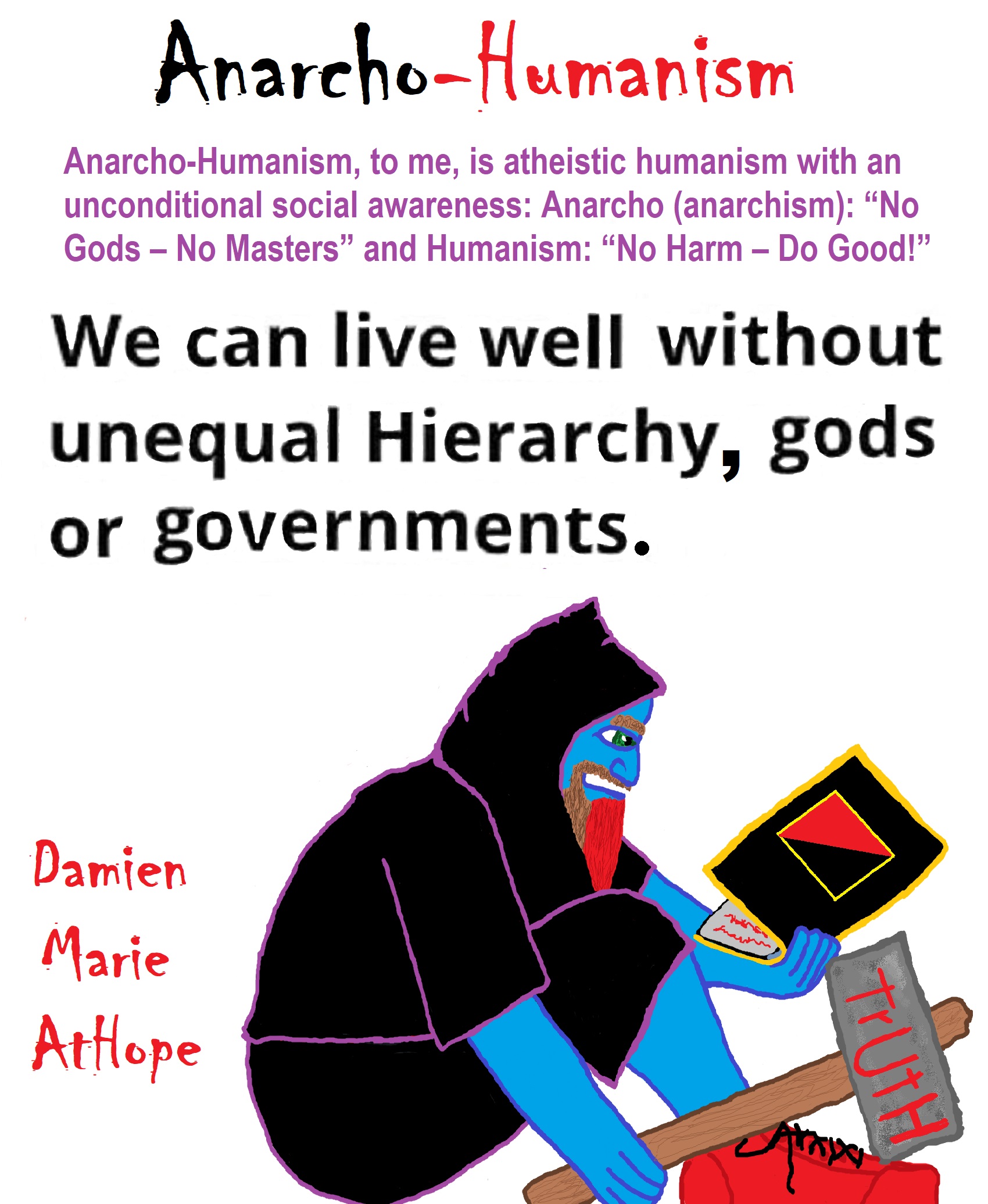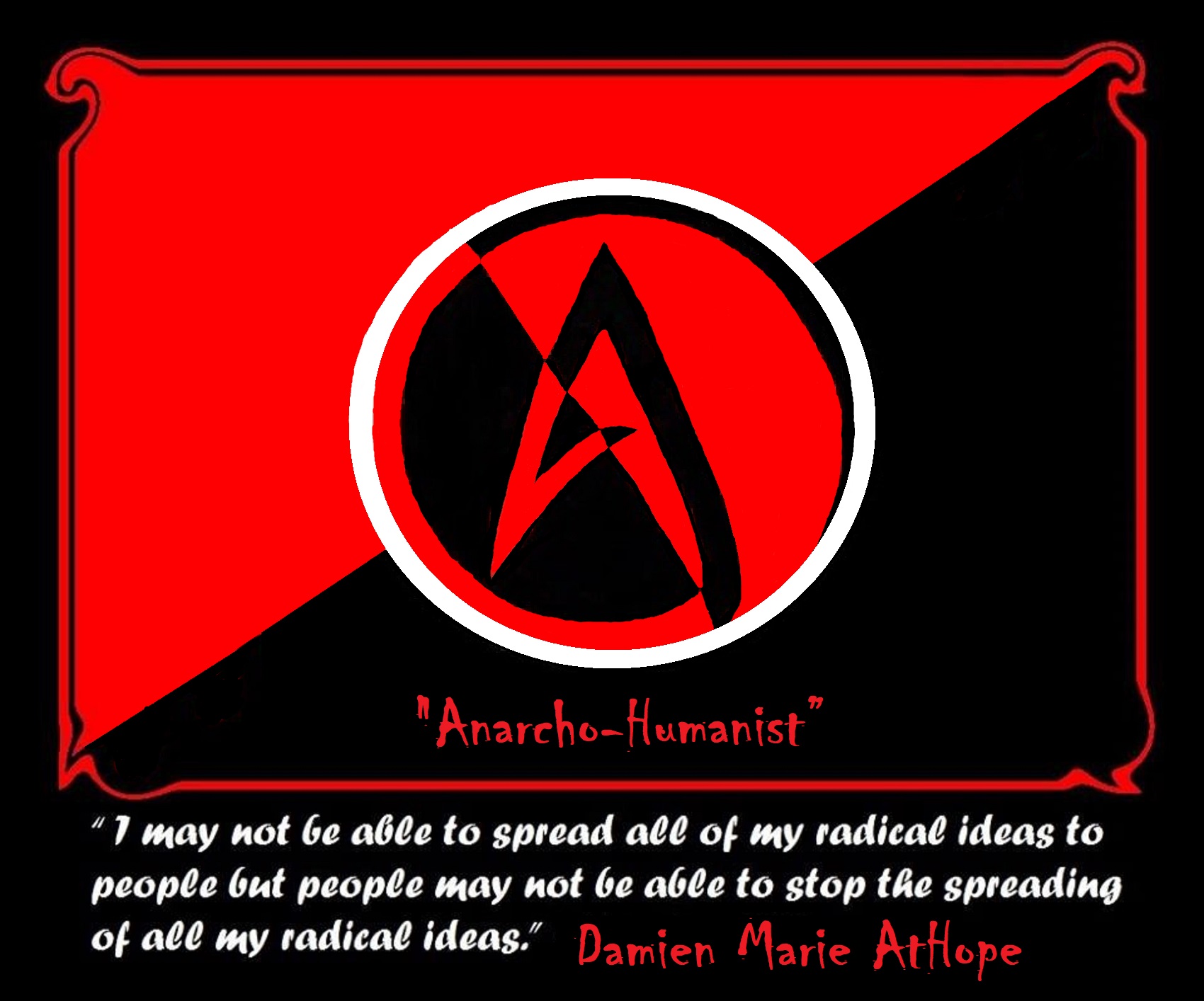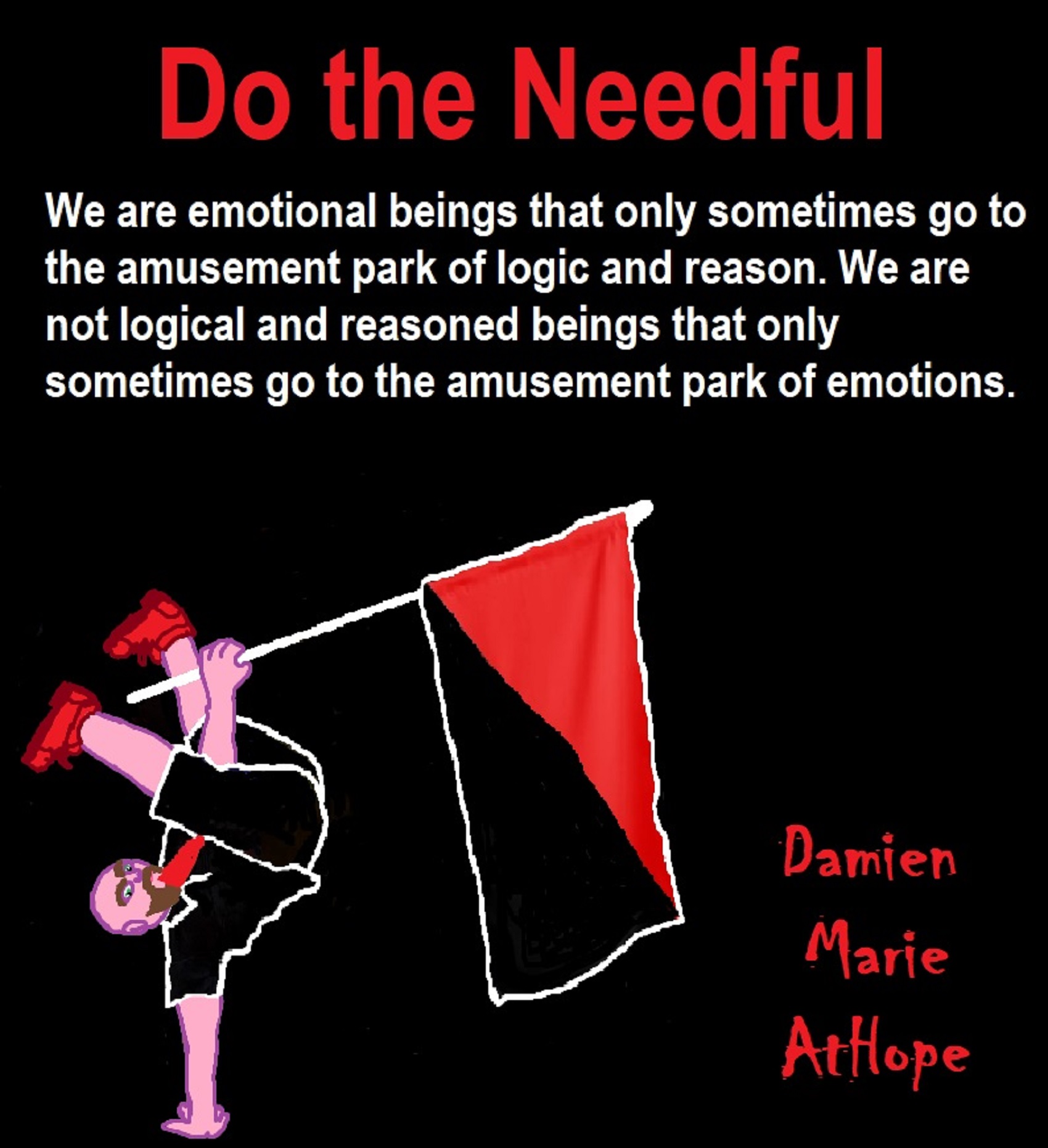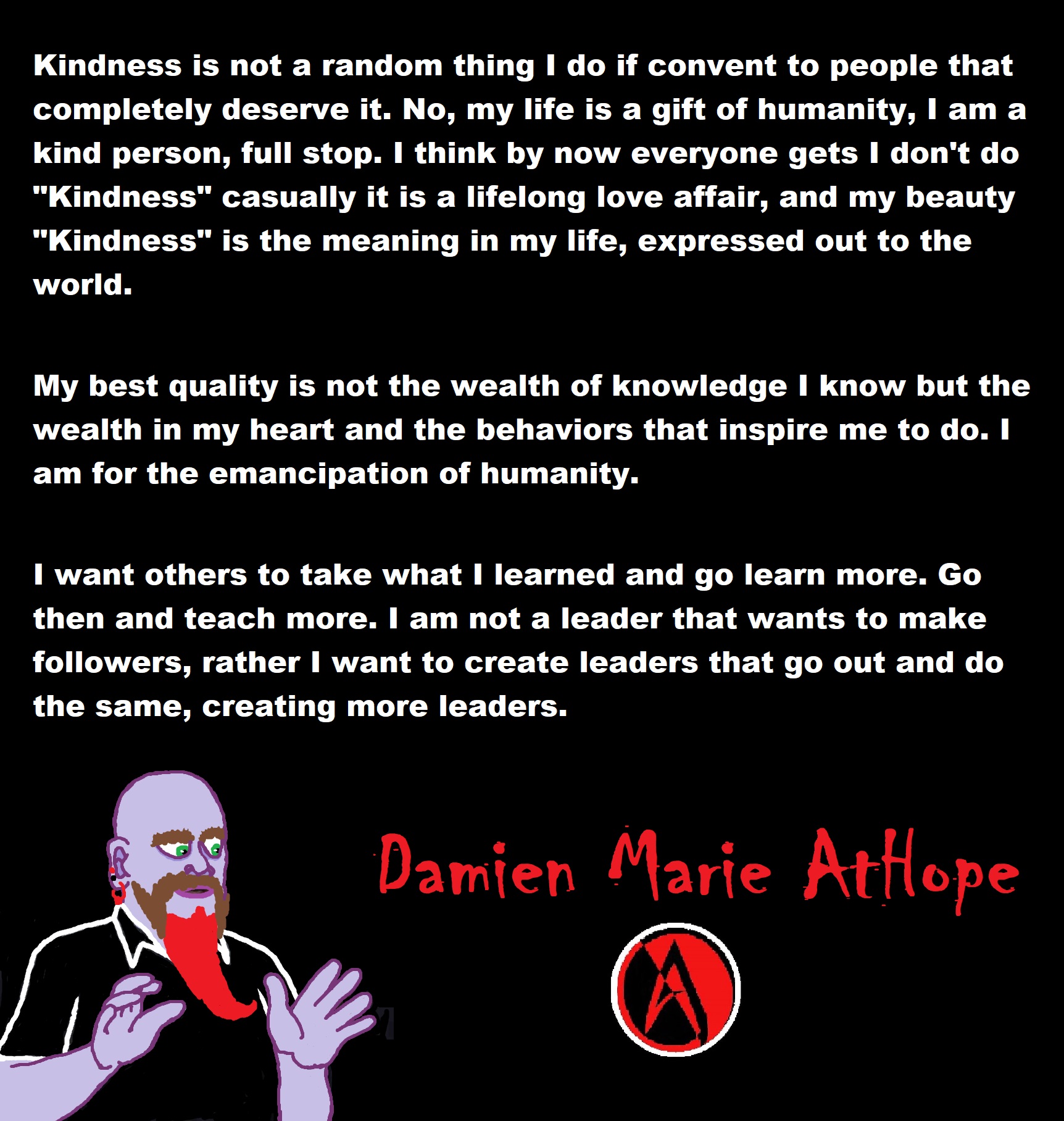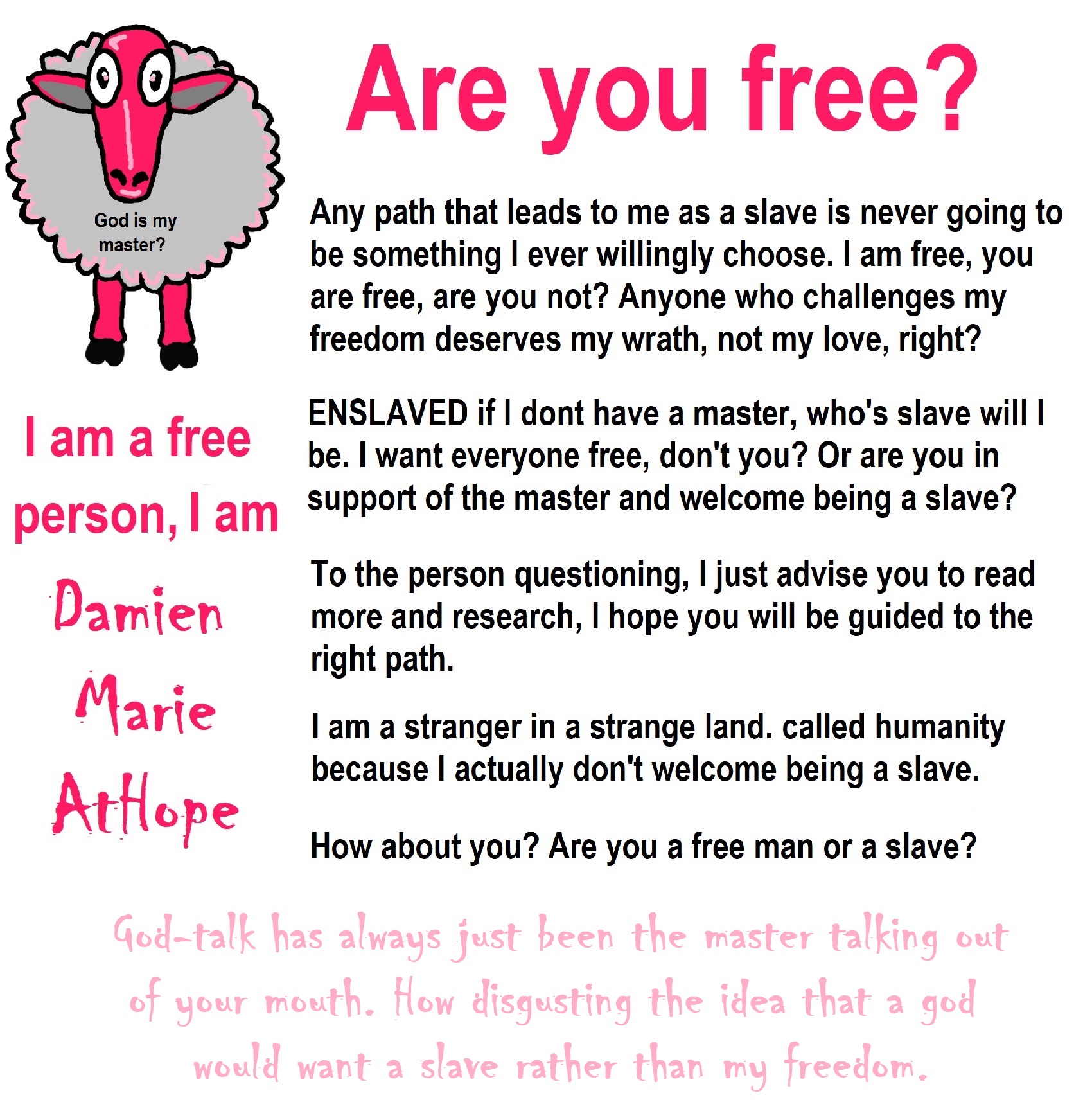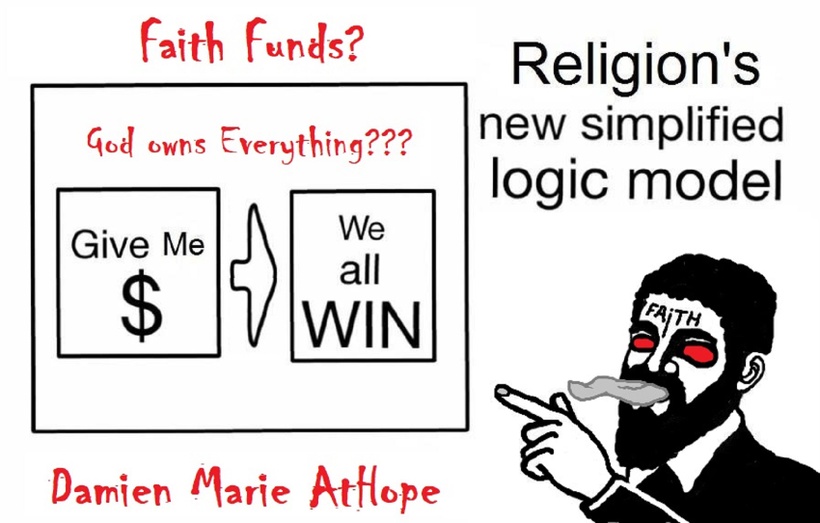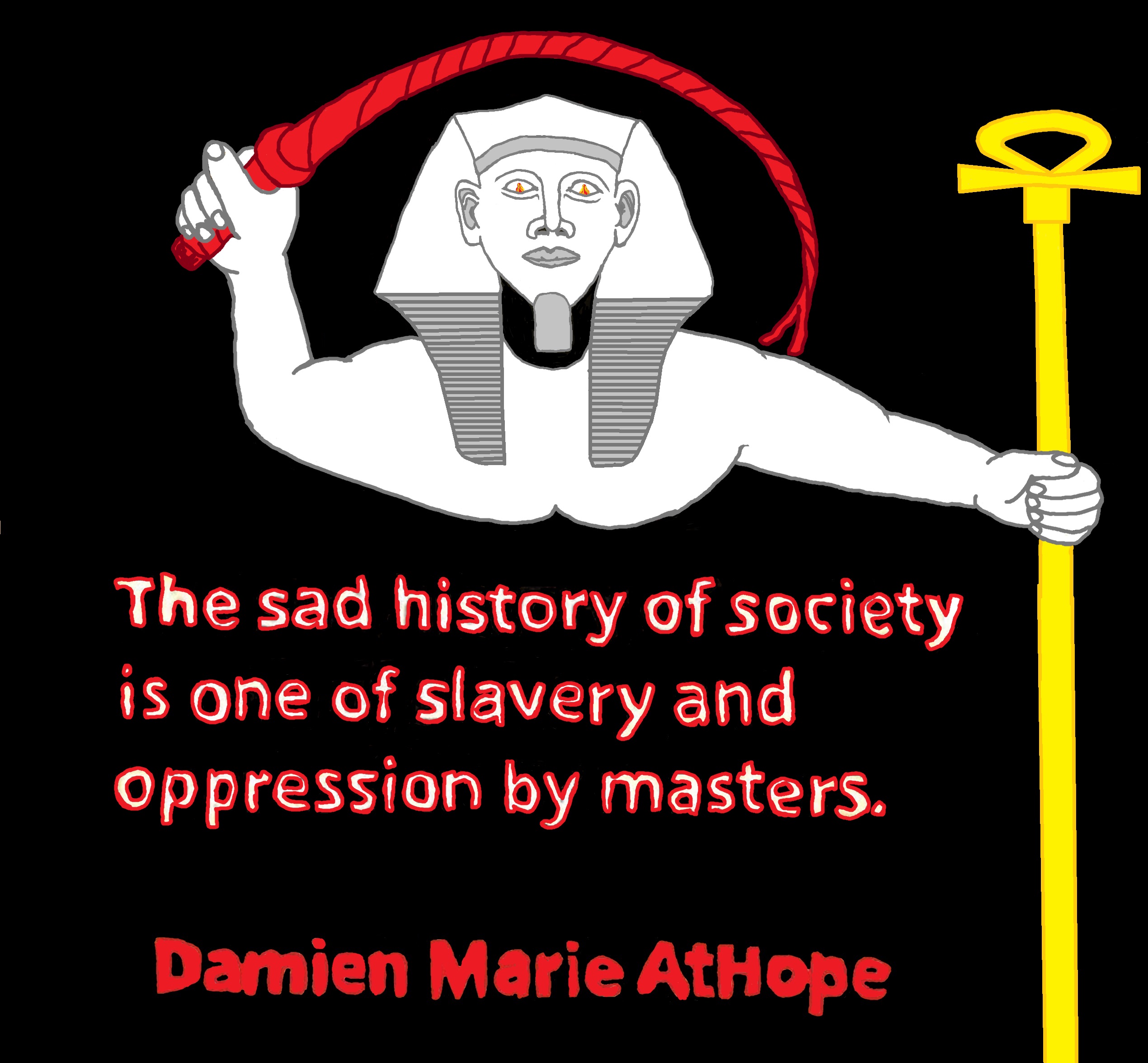Paganism 12,000-4,000 years old
12,000-7,000 years old: related to (Pre-Capitalism)
7,000-5,000 years old: related to (Capitalism) (World War 0) Elite and their slaves!
5,000 years old: related to (Kings and the Rise of the State)
4,000 years old: related to (First Moralistic gods, then the Origin time of Monotheism)

- Paganism 12,000 years old: (Pre-Capitalism)
- Paganism 7,000-5,000 years old: (Capitalism) (World War 0) Elite & their slaves.
- Paganism 5,000 years old: progressed organized religion: (Kings and the Rise of the State)
- Paganism 4,000 years old: (Moralistic gods, then Monotheism)
My thoughts on Religion Evolution with external links for more info:
- (Pre-Animism Africa mainly, but also Europe, and Asia at least 300,000 years ago), (Pre-Animism – Oxford Dictionaries)
- (Animism Africa around 100,000 years ago), (Animism – Britannica.com)
- (Totemism Europe around 50,000 years ago), (Totemism – Anthropology)
- (Shamanism Siberia around 30,000 years ago), (Shamanism – Britannica.com)
- (Paganism Turkey around 12,000 years ago), (Paganism – BBC Religion)
- (Progressed Organized Religion “Institutional Religion” Egypt around 5,000 years ago), (Ancient Egyptian Religion – Britannica.com)
- (CURRENT “World” RELIGIONS after 4,000 years ago) (Origin of Major Religions – Sacred Texts)
- (Early Atheistic Doubting at least by 2,600 years ago) (History of Atheism – Wikipedia)
“Religion is an Evolved Product” and Yes, Religion is Like Fear Given Wings…
Atheists talk about gods and religions for the same reason doctors talk about cancer, they are looking for a cure, or a firefighter talks about fires because they burn people and they care to stop them. We atheists too often feel a need to help the victims of mental slavery, held in the bondage that is the false beliefs of gods and the conspiracy theories of reality found in religions.
Understanding Religion Evolution:
- Pre-Animism (at least 300,000 years ago)
- Animism (Africa: 100,000 years ago)
- Totemism (Europe: 50,000 years ago)
- Shamanism (Siberia: 30,000 years ago)
- Paganism (Turkey: 12,000 years ago)
- Progressed organized religion (Egypt: 5,000 years ago), (Egypt, the First Dynasty 5,150 years ago)
- CURRENT “World” RELIGIONS (after 4,000 years ago)
- Early Atheistic Doubting (at least by 2,600 years ago)
“An Archaeological/Anthropological Understanding of Religion Evolution”
It seems ancient peoples had to survived amazing threats in a “dangerous universe (by superstition perceived as good and evil),” and human “immorality or imperfection of the soul” which was thought to affect the still living, leading to ancestor worship. This ancestor worship presumably led to the belief in supernatural beings, and then some of these were turned into the belief in gods. This feeble myth called gods were just a human conceived “made from nothing into something over and over, changing, again and again, taking on more as they evolve, all the while they are thought to be special,” but it is just supernatural animistic spirit-belief perceived as sacred.
Quick Evolution of Religion?
Pre-Animism (at least 300,000 years ago). So, it all starts in a general way with Animism (such as that seen in Africa: 100,000 years ago) (theoretical belief in supernatural powers/spirits), then this is physically expressed in or with Totemism (Europe: 50,000 years ago) (theoretical belief in mythical relationship with powers/spirits through a totem item), which then enlists a full-time specific person to do this worship and believed interacting Shamanism (beginning around 30,000 years ago in Siberia) (theoretical belief in access and influence with spirits through ritual), and then there is the further employment of myths and gods added to all the above giving you Paganism (beginning around 12,000 years ago in Turkey) (often a lot more nature-based than most current top world religions, thus hinting to their close link to more ancient religious thinking it stems from). My hypothesis is expressed with an explanation of the building of a theatrical house (modern religions development). Progressed organized religion (around 5,000 years ago as sen in Egypt) with CURRENT “World” RELIGIONS (after 4,000 years ago).
Historically, in large city-state societies (such as Egypt or Iraq) starting around 5,000 years ago culminated to make religion something kind of new, a sociocultural-governmental-religious monarchy, where all or at least many of the people of such large city-state societies seem familiar with and committed to the existence of “religion” as the integrated life identity package of control dynamics with a fixed closed magical doctrine, but this juggernaut integrated religion identity package of Dogmatic-Propaganda certainly did not exist or if developed to an extent it was highly limited in most smaller prehistoric societies as they seem to lack most of the strong control dynamics with a fixed closed magical doctrine (magical beliefs could be at times be added or removed). Many people just want to see developed religious dynamics everywhere even if it is not. Instead, all that is found is largely fragments until the domestication of religion.
Religions, as we think of them today, are a new fad, even if they go back to around 6,000 years in the timeline of human existence, this amounts to almost nothing when seen in the long slow evolution of religion at least around 70,000 years ago with one of the oldest ritual worship. Stone Snake of South Africa: “first human worship” 70,000 years ago. This message of how religion and gods among them are clearly a man-made thing that was developed slowly as it was invented and then implemented peace by peace discrediting them all. Which seems to be a simple point some are just not grasping how devastating to any claims of truth when we can see the lie clearly in the archeological sites.
I wish people fought as hard for the actual values as they fight for the group/clan names political or otherwise they think support values. Every amount spent on war is theft to children in need of food or the homeless kept from shelter.
-
- Here are several of my blog posts on history:
- To Find Truth You Must First Look
- Archaeology Knowledge Challenge?
- Beware of Pseudo-History like the Claims of a Hammer in a 400 Million-Year-Old Rock
- The Evolution of Fire Sacralizing and/or Worship 1.5 million to 300,000 years ago and beyond?
- Proto Religion: Superstition around 1 million years ago, to Pre-Animism 300,000 years ago, & then Animism Religion 100,000 years ago
- Stone Age Art: 500,000 – 233,000 Years Old
- Around 500,000 – 233,000 years ago, Oldest Anthropomorphic art (Pre-animism) is Related to Female
- 400,000 Years Old Sociocultural Evolution
- Burial-pits, Cave-tombs, and/or Shallow-graves begin with Homo
- The Emergence of Pre-Religion 300,000 years ago, with Pre-Animism?
- Pre-Animism: Portable Rock Art at least 300,000-year-old
- Pre-animism 300,000 years old and animism 100,000 years old: related to “Anarchism and Socialism”
- Homo Naledi and an Intentional Cemetery “Pre-Animism” dating to around 250,000 years ago?
- Neanderthals “Primal Religion (Pre-Animism/Animism?)” Mystery Cave Rings 175,000 Years Ago
- 130,000 years ago – Earliest evidence for burial and it’s Neanderthals…
- Did Neanderthals teach us “Primal Religion (Pre-Animism/Animism?)” 120,000 Years Ago?
- What about Neanderthals and Religion?
- Animism: an approximately 100,000-year-old belief system?
- Animism: a belief among some indigenous people, young children, or all religious people!
- The Origin of Language: Starts in Symbolism Around 100,000 years ago, to Early Proto-Writing 44,000-5,000 years ago with Unrealized Connections
- Rock crystal stone tools 75,000 Years Ago – (Spain) made by Neanderthals
- Prehistoric Child Burials Begin at Least Around 78,000 Years Ago
- Stone Snake of South Africa: “first human worship” 70,000 years ago
- Similarities and differences in Animism and Totemism
- Did Neanderthals Help Inspire Totemism? Because there is Art Dating to Around 65,000 Years Ago in Spain?
- History of Drug Use with Religion or Sacred Rituals possibly 58,000 years ago?
- Totemism: an approximately 50,000-year-old belief system?
- Totemism 50,000 years old: related to “Anarchism and Socialism”
- Australia & Aboriginal Religion at least around 50,000 years old
- Modern Humans start around 50,000 years ago Helped by Feminisation
- Out of Africa: “the evolution of religion seems tied to the movement of people”
- Totemism and Shamanism Dispersal Theory Expressed around 50,000 to 30,000 years ago
- Back-migrations to Africa, Starting with Eurasia to North Africa around 45,000 years ago
- Possible Religion Motivations in the First Cave Art at around 43,000 years ago?
- 43,000-33,000 years old Aurignacian Figurine Marks, like at the Swabian Jura caves in Germany
- 41,000-20,000-year-old Upper Paleolithic Tally sticks
- 40,000 years old Aurignacian Lion Figurine Early Totemism?
- 40,000-35,000 years ago “first seeming use of a Totem” ancestor, animal, and possible pre-goddess worship?
- Prehistoric Egypt 40,000 years ago to The First Dynasty 5,150 years ago
- 38,000 Years Old Engraving of an Aurochs with Seeming Totemism Expression?
- Aurignacian Period female ‘Venus’ carvings start at 35,000 years ago, then Transfer on to Other Cultures?
- Sacred Bulls, the Moon, and Fertility begins at least around 35,000 years ago?
- Women were the focus of religion, from at least around 35,000 years ago, until 2,000 years ago?
- Stars: Ancestors, Spirit Animals, and Deities (around 6,000 years ago, with connections to shamanism at 30,000 years ago and possibly further back to 40,000 years ago with totemism)
- Sacred Bulls, the Moon, and Fertility begins at least around 35,000 years ago?
- 34,000 years ago Lunar Calendar Cave art around the Time Shift From Totemism to Early Shamanism
- 34,000 years old Russan “Sungir” Early Totemistic-Shamanism
- 31,000-25,000 years old Dolni Vestonice, Czech Republic Totemistic-Shamanism
- Shamanism: an approximately 30,000-year-old belief system
- Could the Phallus Phenomena (A Bull Horn) and the Shamanism Phenomena beginning around 30,000 years ago
- Lenticular Cloud Formations may connect to Ancient “House of Gods” Mythology
- “Sky Burial” and its possible origins at least 12,000 years ago to likely 30,000 years ago or older.
- The Peopling of the Americas Pre-Paleoindians/Paleoamericans around 30,000 to 12,000 years ago
- Hunter-Gatherer/Indigenous Peoples Religiosity, Beliefs, and Practices
- Starting 30,000 Years Ago is the Sitting Venus Phenomena
- Shamanism 30,000 years old: related to “Anarchism and Socialism”
- Trinity Evolution Started over 30,000 years ago, Maybe?
- Paleolithic Totem Venuses become the later Goddesses of the Neolithic and beyond?
- The “Inner Asian Mountain Corridor” as well as the “Eurasian Steppe Corridor” and Repetitious Migrations
- Who were the Groups migrating and merging with the previous Groups of Europe?
- 27,000 to 25,000 Years ago Oldest Shaman was Female, Buried with the Oldest Portrait Carving
- Could a Gravettian carving around 25,000 years old relate to Later Goddess and the Bull cults like Catal Huyuk
- Gravettian burial of Caviglione Woman, (shaman?) dated to around 24,000 years ago
- The Gravettian culture (Europe) shared ritual ideas and The Ancient North Eurasian culture (Asia) 24,000 years ago
- 24,000 Years Old Sacred Burial of a Siberian Mal’ta Boy
- Groups partially derived from the Ancient North Eurasians
- Leda and the Swan: possibly relates back to 24,000–15,000 years old Mal’ta–Buret’ culture, Lake Baikal, Siberia?
- Similarities in Shamanism?
- Black, White, and Yellow Shamanism?
- Shamanistic rock art from central Aboriginal Siberians and Aboriginal drums in the Americas
- Horned female shamans and Pre-satanism Devil/horned-god Worship?
- Epipalaeolithic Near East 20,000 to 9,000 years ago and the Emergence of Advanced Culture as well as New Religion?
- Sifting through the relation of Bird spirits/deities of the sky (20,000 to 5,000 years ago)
- (Magdalenian/Iberomaurusian) Connections to the First Paganists of the early Neolithic Near East Dating from around 17,000 to 12,000 Years Ago
- 16,000 to 12,000 years ago Magdalenian Sacred Ritual and Symbols
- Are the Natufians of Israel around 15,000 to 11,500 years ago who you thought they were?
- Possible Clan Leader/Special “MALE” Ancestor Totem Poles At Least 13,500 years ago?
- Jewish People with DNA at least 13,200 years old, Judaism, and the Origins of Some of its Ideas
- Genetic studies on Jewish DNA is not 6,000 years old but has origin links to about 20,000 to 30,000 years ago?
- 13,100 – 12,150 years old Pre/early-Paleo-Indian Prehistoric site in Pennsylvania
- Baltic Reindeer Hunters: Swiderian, Lyngby, Ahrensburgian, and Krasnosillya cultures 12,020 to 11,020 years ago are evidence of powerful migratory waves during the last 13,000 years and a genetic link to Saami and the Finno-Ugric peoples.
- My Reasoned Speculations on the Early Migrations of Paganism 13,000 to 3,000 years ago, Cultural Transfer
- 13,000-12,000 years ago Culture Leading to New Oppression changed everything and it was not always this way.
- The Rise of Inequality: patriarchy and state hierarchy inequality
- Fertile Crescent 12,500 – 9,500 Years Ago: fertility and death cult belief system?
- 12,400 – 11,700 Years Ago – Kortik Tepe (Turkey) Pre/early-Agriculture Cultic Ritualism
- Paganism: spread of Haplogroup J and its Seeming connection of Bull Worship
- Pre-Pottery Neolithic (10000 – 6500 BCE) and Pottery Neolithic (7000–5000 BCE)
- 12,000-year-old Gobekli Tepe: “first human-made pagan temple”
- Gobekli Tepe is more like Shamanistic early Paganism, Not Adam, Eve, and Cain or Bible anything!
- Ritualistic Bird Symbolism at Gobekli Tepe and its “Ancestor Cult”
- Male-Homosexual (female-like) / Trans-woman (female) Seated Figurine from Gobekli Tepe
- Could a 12,000-year-old Bull Geoglyph at Göbekli Tepe relate to older Bull and Female Art 25,000 years ago and Later Goddess and the Bull cults like Catal Huyuk?
- Sedentism and the Creation of goddesses around 12,000 years ago as well as male gods after 7,000 years ago.
- Alcohol, where Agriculture and Religion Become one? Such as Gobekli Tepe’s Ritualistic use of Grain as Food and Ritual Drink
- Epigravettians Join the Religious Partying at Gobekli Tepe?
- Neolithic Ritual Sites with T-Pillars and other Cultic Pillars
- Paganism: Goddesses around 12,000 years ago then Male Gods after 7,000 years ago
- First Patriarchy: Split of Women’s Status around 12,000 years ago & First Hierarchy: fall of Women’s Status around 5,000 years ago.
- Natufians: an Ancient People at the Origins of Agriculture and Sedentary Life
- J DNA and the Spread of Agricultural Religion (paganism)
- Paganism: an approximately 12,000-year-old belief system
- Paganism 12,000 years old: related to “Anarchism and Socialism” (Pre-Capitalism)
- Shaman burial in Israel 12,000 years ago and the Shamanism Phenomena
- Need to Mythicized: gods and goddesses
- 12,000 – 7,000 Years Ago – Paleo-Indian Culture (The Americas)
- Ancient Egypt: Epipaleolithic, Neolithic, and Predynastic from 12,000 to 5,000 years ago
- 12,000 – 2,000 Years Ago – Indigenous-Scandinavians (Nordic)
- Norse did not wear helmets with horns?
- Pre-Pottery Neolithic Skull Cult around 11,500 to 8,400 Years Ago?
- Masked Head Hunters of “Karahan Tepe” 11,400-year-old monumental site from the Pre-Pottery Neolithic A to B
- 10,400 – 10,100 Years Ago, in Turkey the Nevail Cori Religious Settlement
- Evolution of human skin color, white-skin is really under 10,000 years old?
- Indo-European language Trees fit an Agricultural expansion from Anatolia beginning 8,000 – 9,500 years ago
- 9,000-6,500 Years Old Submerged Pre-Pottery/Pottery Neolithic Ritual Settlements off Israel’s Coast
- Catal Huyuk “first religious designed city” around 9,500 to 7,700 years ago (Turkey)
- Goddesses/Demigoddesses/Grandmother-Mother Ancestor Spirits from Catal Huyuk?
- Cultic Hunting at Catal Huyuk “first religious designed city”
- Special Items and Art as well as Special Elite Burials at Catal Huyuk
- New Rituals and Violence with the appearance of Pottery and People?
- Haplogroup N and its related Uralic Languages and Cultures
- Ainu people, Sámi people, Native Americans, the Ancient North Eurasians, and Paganistic-Shamanism with Totemism
- Ideas, Technology and People from Turkey, Europe, to China and Back again 9,000 to 5,000 years ago?
- First Pottery of Europe and the Related Cultures
- 9,000 years old Neolithic Artifacts Judean Desert and Hills Israel
- 9,000-7,000 years-old Sex and Death Rituals: Cult Sites in Israel, Jordan, and the Sinai
- 9,000-8500 year old Horned Female shaman Bad Dürrenberg Germany
- Neolithic Jewelry and the Spread of Farming in Europe Emerging out of West Turkey
- Ideas, Technology and People from Turkey, Europe, to China and Back again 9,000 to 5,000 years ago?
- 8,600-year-old Tortoise Shells in Neolithic graves in central China have Early Writing and Shamanism
- Swing of the Mace: the rise of Elite, Forced Authority, and Inequality begin to Emerge 8,500 years ago?
- Migrations and Changing Europeans Beginning around 8,000 Years Ago
- My “Steppe-Anatolian-Kurgan hypothesis” 8,000/7,000 years ago
- Around 8,000-year-old Shared Idea of the Mistress of Animals, “Ritual” Motif
- Pre-Columbian Red-Paint (red ochre) Maritime Archaic Culture 8,000-3,000 years ago
- 7,522-6,522 years ago Linear Pottery culture which I think relates to Arcane Capitalism’s origins
- Arcane Capitalism: Primitive socialism, Primitive capital, Private ownership, Means of production, Market capitalism, Class discrimination, and Petite bourgeoisie (smaller capitalists)
- 7,500-4,750 years old Ritualistic Cucuteni-Trypillian culture of Moldova, Romania, and Ukraine
- Roots of a changing early society 7,200-6,700 years ago Jordan and Israel
- My Thoughts on Possible Migrations of “R” DNA and Proto-Indo-European?
- “Millet” Spreading from China 7,022 years ago to Europe and related Language may have Spread with it leading to Proto-Indo-European
- Proto-Indo-European (PIE), ancestor of Indo-European languages: DNA, Society, Language, and Mythology
- The Dnieper–Donets culture and Asian varieties of Millet from China to the Black Sea region of Europe by 7,022 years ago
- The First Expression of the Male God around 7,000 years ago?
- Kurgan 6,000 years ago/dolmens 7,000 years ago: funeral, ritual, and other?
- 7,020 to 6,020-year-old Proto-Indo-European Homeland of Urheimat or proposed home of their Language and Religion
- Ancient Megaliths: Kurgan, Ziggurat, Pyramid, Menhir, Trilithon, Dolman, Kromlech, and Kromlech of Trilithons
- The Mytheme of Ancient North Eurasian Sacred-Dog belief and similar motifs are found in Indo-European, Native American, and Siberian comparative mythology
- Elite Power Accumulation: Ancient Trade, Tokens, Writing, Wealth, Merchants, and Priest-Kings
- White (light complexion skin) Bigotry and Sexism started 7,000 years ago?
- Sacred Mounds, Mountains, Kurgans, and Pyramids may hold deep connections?
- Between 7,000-5,000 Years ago, rise of unequal hierarchy elite, leading to a “birth of the State” or worship of power, strong new sexism, oppression of non-elites, and the fall of Women’s equal status
- Agriculture religion (Paganism) with farming reached Britain between about 7,000 to 6,500 or so years ago and seemingly expressed in things like Western Europe’s Long Barrows
- Paganism 7,000-5,000 years old: related to “Anarchism and Socialism” (Capitalism) (World War 0) Elite and their slaves!
- Around 7,000-year-old Shared Idea of the Divine Bird (Tutelary and/or Trickster spirit/deity), “Ritual” Motif
- Nekhbet an Ancient Egyptian Vulture Goddess and Tutelary Deity
- 6,720 to 4,920 years old Ritualistic Hongshan Culture of Inner Mongolia with 5,000-year-old Pyramid Mounds and Temples
- KING OF BEASTS: Master of Animals “Ritual” Motif, around 6,000 years old or older…
- Around 6000-year-old Shared Idea of the Solid Wheel & the Spoked Wheel-Shaped Ritual Motif
- Around 5,000-year-old Shared Idea of the “Tree of Life” Ritual Motif
- Complex rituals for elite, seen from China to Egypt around 5,000 years ago
- Around 5,000 years ago: “Birth of the State” where Religion gets Military Power and Influence
- Sacred Mounds, Mountains, Kurgans, and Pyramids may hold deep connections?
- Dolmens in Israel: A Connected Dolmen Religious Phenomenon?
- 6,500–5,800 years ago in Israel Late Chalcolithic (Copper Age) Period in the Southern Levant Seems to Express Northern Levant Migrations, Cultural and Religious Transfer
- “The Ghassulian Star,” a mysterious 6,000-year-old mural from Jordan; a Proto-Star of Ishtar, Star of Inanna or Star of Venus?
- Religious/Ritual Ideas, including goddesses and gods as well as ritual mounds or pyramids from Northeastern Asia at least 6,000 years old, seemingly filtering to Iran, Iraq, the Mediterranean, Europe, Egypt, and the Americas?
- First proto-king in the Balkans, Varna culture around 6,500 years ago?
- The Center of the World “Axis Mundi” and/or “Sacred Mountains” Mythology Could Relate to the Altai Mountains, Heart of the Steppe
- Maykop (5,720–5,020 years ago) Caucasus region Bronze Age culture-related to Copper Age farmers from the south, influenced by the Ubaid period and Leyla-Tepe culture, as well as influencing the Kura-Araxes culture
- 5-600-year-old Tomb, Mummy, and First Bearded Male Figurine in a Grave
- Kura-Araxes Cultural 5,520 to 4,470 years old DNA traces to the Canaanites, Arabs, and Jews
- Minoan/Cretan (Keftiu) Civilization and Religion around 5,520 to 3,120 years ago
- Evolution Of Science at least by 5,500 years ago
- 5,500 Years old birth of the State, the rise of Hierarchy, and the fall of Women’s status
- “Jiroft culture” 5,100 – 4,200 years ago and the History of Iran
- Progressed organized religion starts, an approximately 5,000-year-old belief system
- China’s Civilization between 5,000-3,000 years ago, was a time of war and class struggle, violent transition from free clans to a Slave or Elite society
- Stonehenge: Paganistic Burial and Astrological Ritual Complex, England (5,100-3,600 years ago)
- Origin of Logics is Naturalistic Observation at least by around 5,000 years ago.
- Ziggurats (multi-platform temples: 4,900 years old) to Pyramids (multi-platform tombs: 4,700 years old)
- Did a 4,520–4,420-year-old Volcano In Turkey Inspire the Bible God?
- Finland’s Horned Shaman and Pre-Horned-God at least 4,500 years ago?
- Creation myths: From chaos, Ex nihilo, Earth-diver, Emergence, World egg, and World parent
- Bronze Age “Ritual” connections of the Bell Beaker culture with the Corded Ware/Single Grave culture, which were related to the Yamnaya culture and Proto-Indo-European Languages/Religions
- Low Gods (Earth/ Tutelary deity), High Gods (Sky/Supreme deity), and Moralistic Gods (Deity enforcement/divine order)
- The exchange of people, ideas, and material-culture including, to me, the new god (Sky Father) and goddess (Earth Mother) religion between the Cucuteni-Trypillians and others which is then spread far and wide
- Koryaks: Indigenous People of the Russian Far East and Big Raven myths also found in Tlingit, Haida, Tsimshian, and other Indigenous People of North America
- 42 Principles Of Maat (Egyptian Goddess of the justice) around 4,400 years ago, 2000 Years Before Ten Commandments
- “Happy Easter” Well Happy Eostre/Ishter
- 4,320-3,820 years old “Shimao” (North China) site with Totemistic-Shamanistic Paganism and a Stepped Pyramid
- 4,250 to 3,400 Year old Stonehenge from Russia: Arkaim?
- 4,100-year-old beaker with medicinal & flowering plants in a grave of a woman in Scotland
- Early European Farmer ancestry, Kelif el Boroud people with the Cardial Ware culture, and the Bell Beaker culture Paganists too, spread into North Africa, then to the Canary Islands off West Africa
- Flood Accounts: Gilgamesh epic (4,100 years ago) Noah in Genesis (2,600 years ago)
- Paganism 4,000 years old: related to “Anarchism and Socialism” (First Moralistic gods, then the Origin time of Monotheism)
- When was the beginning: TIMELINE OF CURRENT RELIGIONS, which start around 4,000 years ago.
- Early Religions Thought to Express Proto-Monotheistic Systems around 4,000 years ago
- Kultepe? An archaeological site with a 4,000 years old women’s rights document.
- Single God Religions (Monotheism) = “Man-o-theism” started around 4,000 years ago with the Great Sky Spirit/God Tiān (天)?
- Confucianism’s Tiān (Shangdi god 4,000 years old): Supernaturalism, Pantheism or Theism?
- Yes, Your Male God is Ridiculous
- Mythology, a Lunar Deity is a Goddess or God of the Moon
- Sacred Land, Hills, and Mountains: Sami Mythology (Paganistic Shamanism)
- Horse Worship/Sacrifice: mythical union of Ruling Elite/Kingship and the Horse
- The Amorite/Amurru people’s God Amurru “Lord of the Steppe”, relates to the Origins of the Bible God?
- Bronze Age Exotic Trade Routes Spread Quite Far as well as Spread Religious Ideas with Them
- Sami and the Northern Indigenous Peoples Landscape, Language, and its Connection to Religion
- Prototype of Ancient Analemmatic Sundials around 3,900-3,150 years ago and a Possible Solar Connection to gods?
- Judaism is around 3,450 or 3,250 years old. (“Paleo-Hebrew” 3,000 years ago and Torah 2,500 years ago)
- The Weakening of Ancient Trade and the Strengthening of Religions around 3000 years ago?
- Are you aware that there are religions that worship women gods, explain now religion tears women down?
- Animistic, Totemistic, and Paganistic Superstition Origins of bible god and the bible’s Religion.
- Myths and Folklore: “Trickster gods and goddesses”
- Jews, Judaism, and the Origins of Some of its Ideas
- An Old Branch of Religion Still Giving Fruit: Sacred Trees
- Dating the BIBLE: naming names and telling times (written less than 3,000 years ago, provable to 2,200 years ago)
- Did a Volcano Inspire the bible god?
- Hell and Underworld mythologies starting maybe as far back as 7,000 to 5,000 years ago with the Proto-Indo-Europeans?
- Yamnaya culture or at least Proto-Indo-European Languages/Religions may actually relate back to North Asia?
- The Amorite/Amurru people’s God Amurru “Lord of the Steppe”, relates to the Origins of the Bible God?
- “Dené–Yeniseian language, Old Copper Complex, and Pre-Columbian Mound Builders?
- No “dinosaurs and humans didn’t exist together just because some think they are in the bible itself”
- Sacred Shit and Sacred Animals?
- Everyone Killed in the Bible Flood? “Nephilim” (giants)?
- Hey, Damien dude, I have a question for you regarding “the bible” Exodus.
- Archaeology Disproves the Bible
- Bible Battle, Just More, Bible Babble
- The Jericho Conquest lie?
- Canaanites and Israelites?
- Accurate Account on how did Christianity Began?
- Let’s talk about Christianity.
- So the 10 commandments isn’t anything to go by either right?
- Misinformed christian
- Debunking Jesus?
- Paulism vs Jesus
- Ok, you seem confused so let’s talk about Buddhism.
- Unacknowledged Buddhism: Gods, Savior, Demons, Rebirth, Heavens, Hells, and Terrorism
- His Foolishness The Dalai Lama
- Yin and Yang is sexist with an ORIGIN around 2,300 years ago?
- I Believe Archaeology, not Myths & Why Not, as the Religious Myths Already Violate Reason!
- Archaeological, Scientific, & Philosophic evidence shows the god myth is man-made nonsense.
- Aquatic Ape Theory/Hypothesis? As Always, Just Pseudoscience.
- Ancient Aliens Conspiracy Theorists are Pseudohistorians
- The Pseudohistoric and Pseudoscientific claims about “Bakoni Ruins” of South Africa
- Why do people think Religion is much more than supernaturalism and superstitionism?
- Religion is an Evolved Product
- Was the Value of Ancient Women Different?
- 1000 to 1100 CE, human sacrifice Cahokia Mounds a pre-Columbian Native American site
- Feminist atheists as far back as the 1800s?
- Promoting Religion as Real is Mentally Harmful to a Flourishing Humanity
- Screw All Religions and Their Toxic lies, they are all fraud
- Forget Religions’ Unfounded Myths, I Have Substantiated “Archaeology Facts.”
- Religion Dispersal throughout the World
- I Hate Religion Just as I Hate all Pseudoscience
- Exposing Scientology, Eckankar, Wicca and Other Nonsense?
- Main deity or religious belief systems
- Quit Trying to Invent Your God From the Scraps of Science.
- Archaeological, Scientific, & Philosophic evidence shows the god myth is man-made nonsense.
- Ancient Alien Conspiracy Theorists: Misunderstanding, Rhetoric, Misinformation, Fabrications, and Lies
- Misinformation, Distortion, and Pseudoscience in Talking with a Christian Creationist
- Judging the Lack of Goodness in Gods, Even the Norse God Odin
- Challenging the Belief in God-like Aliens and Gods in General
- A Challenge to Christian use of Torture Devices?
- Yes, Hinduism is a Religion
- Trump is One of the Most Reactionary Forces of Far-right Christian Extremism
- Was the Bull Head a Symbol of God? Yes!
- Primate Death Rituals
- Christian – “God and Christianity are objectively true”
- Australopithecus afarensis Death Ritual?
- You Claim Global Warming is a Hoax?
- Doubter of Science and Defamer of Atheists?
- I think that sounds like the Bible?
- History of the Antifa (“anti-fascist”) Movements
- Indianapolis Anti-Blasphemy Laws #Free Soheil Rally
- Damien, you repeat the golden rule in so many forms then you say religion is dogmatic?
- Science is a Trustable Methodology whereas Faith is not Trustable at all!
- Was I ever a believer, before I was an atheist?
- Atheists rise in reason
- Mistrust of science?
- Open to Talking About the Definition of ‘God’? But first, we address Faith.
- ‘United Monarchy’ full of splendor and power – Saul, David, and Solomon? Most likely not.
- Is there EXODUS ARCHAEOLOGY? The short answer is “no.”
- Lacking Proof of Bigfoots, Unicorns, and Gods is Just a Lack of Research?
- Religion and Politics: Faith Beliefs vs. Rational Thinking
- Hammer of Truth that lying pig RELIGION: challenged by an archaeologist
- “The Hammer of Truth” -ontology question- What do You Mean by That?
- Navigation of a bad argument: Ad Hominem vs. Attack
- Why is it Often Claimed that Gods have a Gender?
- Why are basically all monotheistic religions ones that have a male god?
- Shifting through the Claims in support of Faith
- Dear Mr. AtHope, The 20th Century is an Indictment of Secularism and a Failed Atheist Century
- An Understanding of the Worldwide Statistics and Dynamics of Terrorist Incidents and Suicide Attacks
- Intoxication and Evolution? Addressing and Assessing the “Stoned Ape” or “Drunken Monkey” Theories as Catalysts in Human Evolution
- Sacred Menstrual cloth? Inanna’s knot, Isis knot, and maybe Ma’at’s feather?
- Damien, why don’t the Hebrews accept the bible stories?
- Dealing with a Troll and Arguing Over Word Meaning
- Justified beliefs or disbeliefs worthy of Knowledge?
- Afrocentrism and African Religions
- Crecganford @crecganford offers history & stories of the people, places, gods, & culture
- Empiricism-Denier?
- Here are several of my blog posts on history:
I am not an academic. I am a revolutionary that teaches in public, in places like social media, and in the streets. I am not a leader by some title given but from my commanding leadership style of simply to start teaching everywhere to everyone, all manner of positive education. We need more free counseling in public, in general. I both fear the mad person intent on harm as I am to those determined to stay delusionally unaware of the oppression and suffering of others in need all across this sad unhelping world.


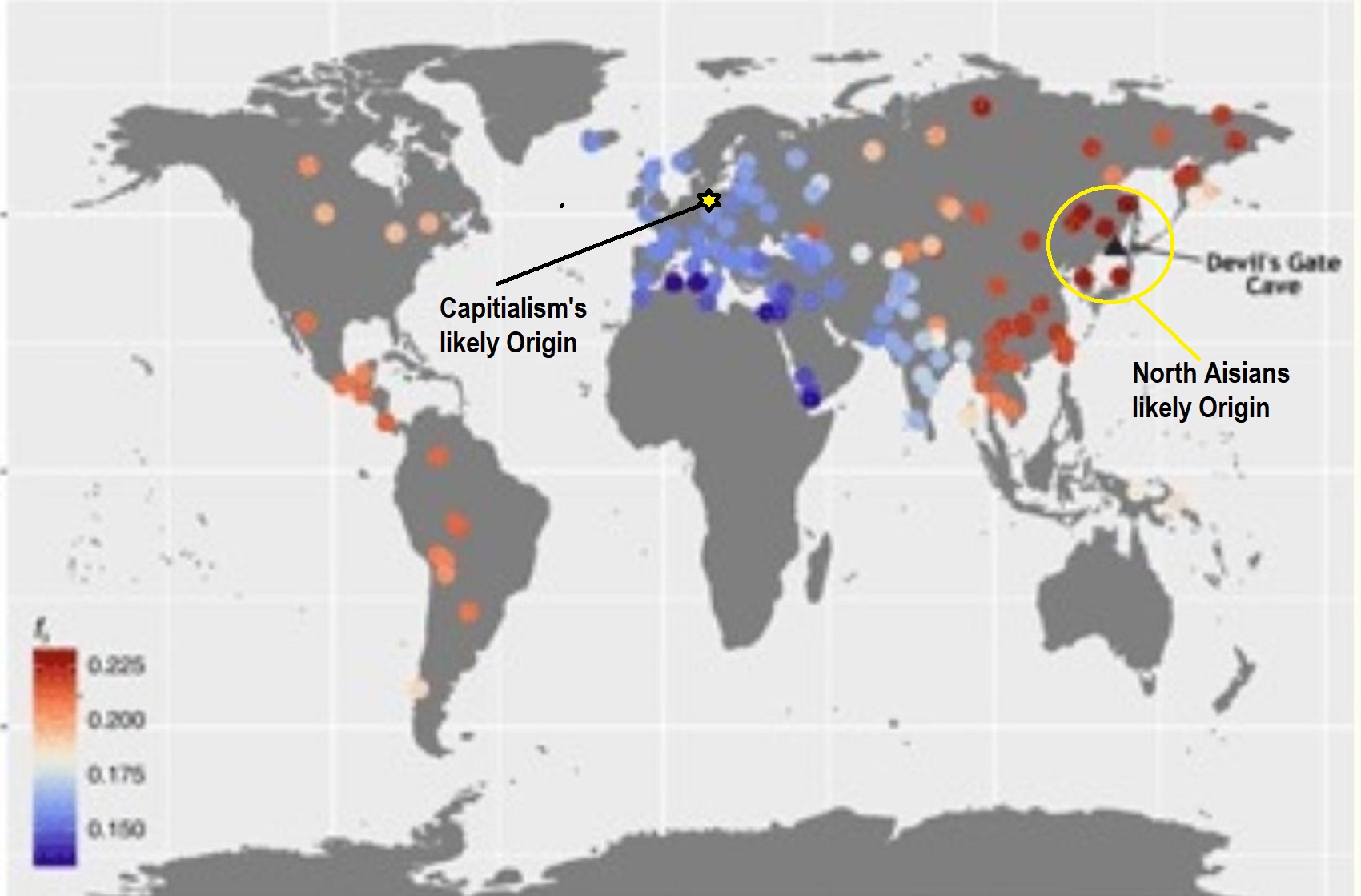
Pic ref
Abstract
“Ancient genomes have revolutionized our understanding of Holocene prehistory and, particularly, the Neolithic transition in western Eurasia. In contrast, East Asia has so far received little attention, despite representing a core region at which the Neolithic transition took place independently ~3 millennia after its onset in the Near East. We report genome-wide data from two hunter-gatherers from Devil’s Gate, an early Neolithic cave site (dated to ~7.7 thousand years ago) located in East Asia, on the border between Russia and Korea. Both of these individuals are genetically most similar to geographically close modern populations from the Amur Basin, all speaking Tungusic languages, and, in particular, to the Ulchi. The similarity to nearby modern populations and the low levels of additional genetic material in the Ulchi imply a high level of genetic continuity in this region during the Holocene, a pattern that markedly contrasts with that reported for Europe.” ref
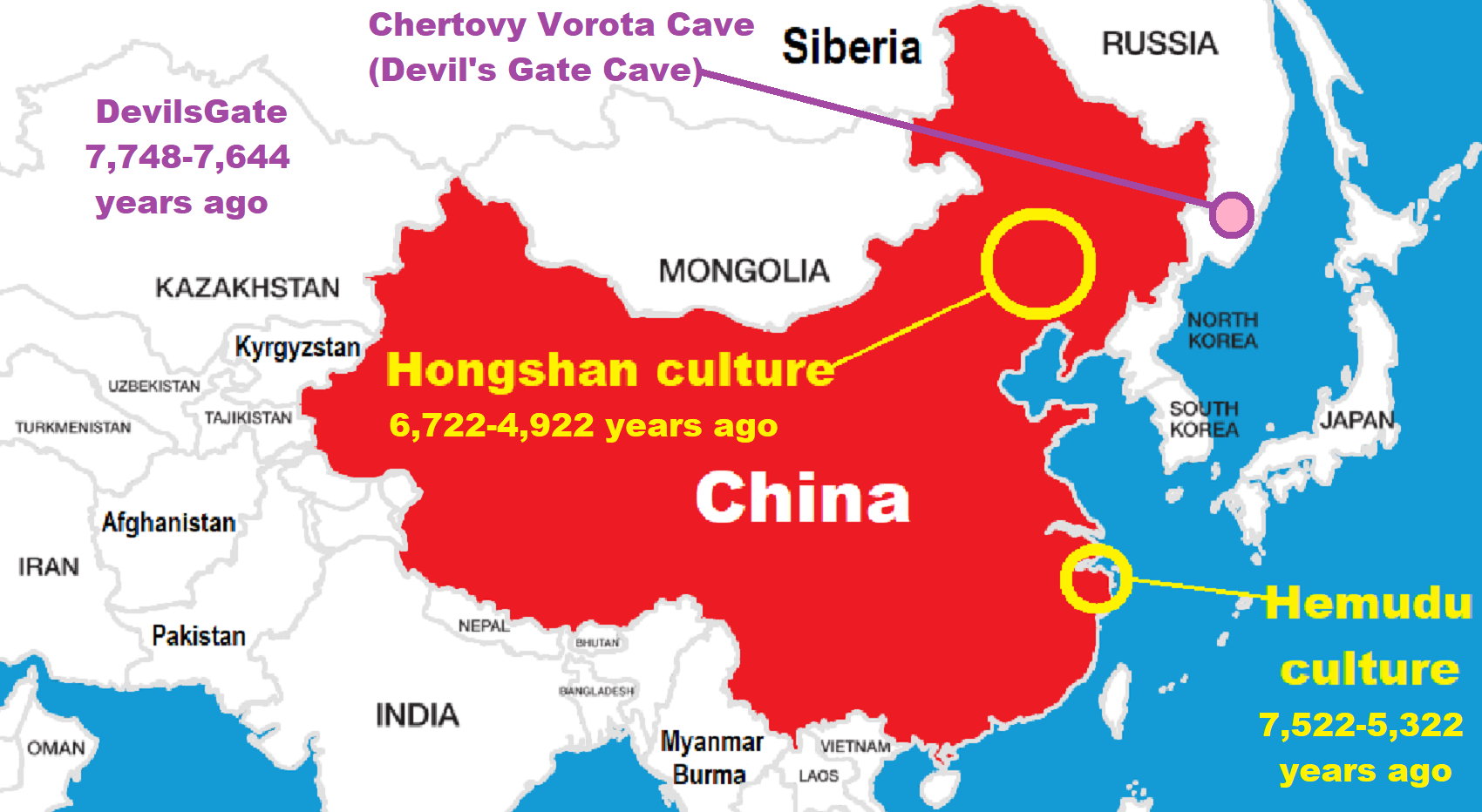
“Chertovy Vorota Cave (known as Devil’s Gate Cave in English) is a Neolithic archaeological site located in the Sikhote-Alin mountains, about 12 km (7 mi) from the town of Dalnegorsk in Primorsky Krai, Russia. The karst cave is located on a limestone cliff and lies about 35 m (115 ft) above the Krivaya River, a tributary of the Rudnaya River, below. Chertovy Vorota provides secure evidence for some of the oldest surviving textiles found in the archaeological record.” ref
“The remains of 7 individuals were discovered within the cave. The skulls of two of the individuals, DevilsGate1 and DevilsGate2, were directly dated to around 5726-5622 BCE or 7,747-7,643 years ago. A confirmed male through genetic analysis has been assigned to Y-DNA haplogroup C2b-F6273/Y6704/Y6708, equivalent to C2b-L1373, the northern (Central Asian, Siberian, and indigenous American) branch of haplogroup C2-M217.” ref
“The remains of carbonized textile fragments were found within the cave, under the remains of a wooden structure that had caught on fire and collapsed. The carbonized remains of rope, nets, and woven fabrics were recovered from the cave. The fibers likely came from Carex sordida, a sedge grass from the family Cyperaceae. The textile remains were directly dated to around 9400-8400 BP, the earliest evidence in the archaeological record for textile remains from East Asia. As spindle whorls were not found in the cave, and also rarely found in contemporary East Asian sites, archaeologists postulate that the people at Chertovy Vorota either produced their textiles by hand or through the use of warp-weighted looms.” ref
DevilsGate Cave (Chertovy Vorota Cave) Human remains
“The remains of 7 individuals were discovered within the cave. The skulls of two of the individuals, DevilsGate1 and DevilsGate2, were directly dated to around 5726-5622 BCE. Six of seven individuals whose remains have been recovered from the cave have been DNA tested. Originally, three of the specimens were thought to be adult males, two were thought to be adult females, one was thought to be a sub-adult of about 12-13 years of age, and one was thought to be a juvenile of about 6-7 years of age based on the skeletal morphology of the remains. Results of genetic analysis of the sub-adult individual have not yet been published.” ref
“However, two specimens, NEO236 (Skull B, DevilsGate2) and NEO235 (Skull G), who had been presumed to be adult males according to a forensic morphological assessment of their remains, were discovered through genetic analysis to actually be females. The juvenile specimen also has been determined to be female through genetic analysis. Three of the specimens (including the only adult male plus NEO235/Skull G and another adult female, labeled as Skull Е, DevilsGate1, or NEO240, who has been genetically determined to be a first-degree relative of NEO235/Skull G) have been assigned to mtDNA haplogroup D4m; a previous genetic analysis of one of these adult female specimens determined her mtDNA haplogroup to be D4.” ref
“Another three specimens (including the juvenile female, the DevilsGate2 specimen, and another adult female; both the juvenile female and the DevilsGate2 specimen have been determined to be first-degree relatives of the other adult female, and the juvenile female and the DevilsGate2 specimen also have been determined to be second-degree relatives of each other) have been assigned to haplogroup D4; a previous genetic analysis of the DevilsGate2 specimen determined her mtDNA haplogroup to be M. The only specimen from the cave who has been confirmed to be male through genetic analysis has been assigned to Y-DNA haplogroup C2b-F6273/Y6704/Y6708, equivalent to C2b-L1373, the northern (Central Asian, Siberian, and indigenous American) branch of haplogroup C2-M217.” ref
“When compared against all populations on record, ancient or modern, the ancient Chertovy Vorota individuals were found to be genetically closest to the contemporary Ulchi, speakers of a Tungusic language from the lower Amur Basin. The DevilsGate1 and DevilsGate2 specimens were also found to be close to the Hezhen and Oroqen, two other contemporary Tungusic-speaking populations from the basin of the Amur River, as well as contemporary Koreans, Japanese, and Nganasans.” ref
“When compared against an outgroup from southern Africa (Khomani), outgroup f3 statistics indicate that DevilsGate1 and DevilsGate2 exhibit greatest shared drift with representatives of the same six populations, though in slightly different rank order: DevilsGate1 shares greatest drift with Ulchi followed in order by Oroqen, Hezhen, Korean, Japanese, and Nganasan, whereas DevilsGate2 shares greatest drift with Ulchi followed in order by Nganasan, Hezhen, Korean, Japanese, and Oroqen.” ref
“The outgroup f3 statistics also reveal a tendency for the DevilsGate2 specimen to exhibit slightly greater shared drift with contemporary populations than the DevilsGate1 specimen shares with contemporary populations. The ancient Chertovy Vorota individuals are genetically closest to the Ulchi, followed by the Oroqen and Hezhen. The genetic distance from the ancient Chertovy Vorota individuals to Mal’ta boy is the same as that from modern East Asian populations to Mal’ta boy.” ref
“With the exception of DevilsGate1, most of the individuals tested did not yield enough DNA to allow for phenotypic testing of traits. DevilsGate1 did not carry the derived SLC45A2 or SLC24A5 alleles associated with lighter skin color, the derived HERC2 allele associated with blue eyes, the derived LT allele associated with lactase persistence, or the derived ALDH2 allele associated with the alcohol flush reaction.” ref
“However, the individual likely did carry the derived EDAR allele commonly found in modern East Asian populations, the derived ABCC11 allele associated with dry earwax and reduced body odor commonly found in modern East Asian populations, and the derived ADD1 allele associated with increased risk for hypertension.” ref
MAL’TA BOY CONTROVERSIAL LINK BETWEEN EUROPEANS AND NATIVE AMERICANS Mal’ta Boy’s Y chromosome haplogroup R is a very ancient lineage…
Main article: Ancient North Eurasian
“MA-1 is the only known example of basal Y-DNA R* (R-M207*) – that is, the only member of haplogroup R* that did not belong to haplogroups R1, R2 or secondary subclades of these. The mitochondrial DNA of MA-1 belonged to an unresolved subclade of haplogroup U.” ref
“The term Ancient North Eurasian (ANE) has been given in genetic literature to an ancestral component that represents descent from the people similar to the Mal’ta–Buret’ culture or a population closely related to them. The ANE population is considered to have been “basal to modern day western Eurasians” but not especially related to east Asians, and suggested to have perhaps originally lived in Europe or Western Asia.” ref
“According to Lazaridis et al. 2014, the common ancestor of ANEs and WHGs (western European hunter-gatherers) separated from eastern Eurasians around 40,000 BC, and ANEs split from WHGs around 22,000 BCE (ANE is also described as a lineage “which is deeply related to Paleolithic/Mesolithic hunter-gatherers in Europe…”). Genomic studies by Raghavan et al. (2014) and Fu et al. (2016) found Mal’ta Buret boy had brown eyes, dark hair, and dark skin.” ref
“According to a study by Kanazawa-Kiriyama et al. (2017), MA-1/Mal’ta may have also carried an East Eurasian/ Native American-related (Karitiana) component (around 21% of his ancestry), with the rest being West Eurasian-related.” ref
“A people similar to MA1 and Afontova Gora were important genetic contributors to Native Americans, Siberians, Europeans, Caucasians, Central Asians, with smaller contributions to Middle Easterners and some East Asians. Lazaridis et al. (2016) notes “a cline of ANE ancestry across the east-west extent of Eurasia.” ref
“A 2016 study found that the global maximum of ANE ancestry occurs in modern-day Kets, Mansi, Native Americans, and Selkups. Additionally, it has been reported in ancient Bronze-age-steppe Yamnaya and Afanasevo cultures. Between 14 and 38 percent of Native American ancestry may originate from gene flow from the Mal’ta–Buret’ people, while the other gene flow in Native Americans appears to have an Eastern Eurasian origin.” ref
“MA1 is also related to two older Upper Paleolithic Siberian individuals found near the Yana river called Ancient North Siberians (ANS) and to Tianyuan man from Upper Paleolithic China.” ref
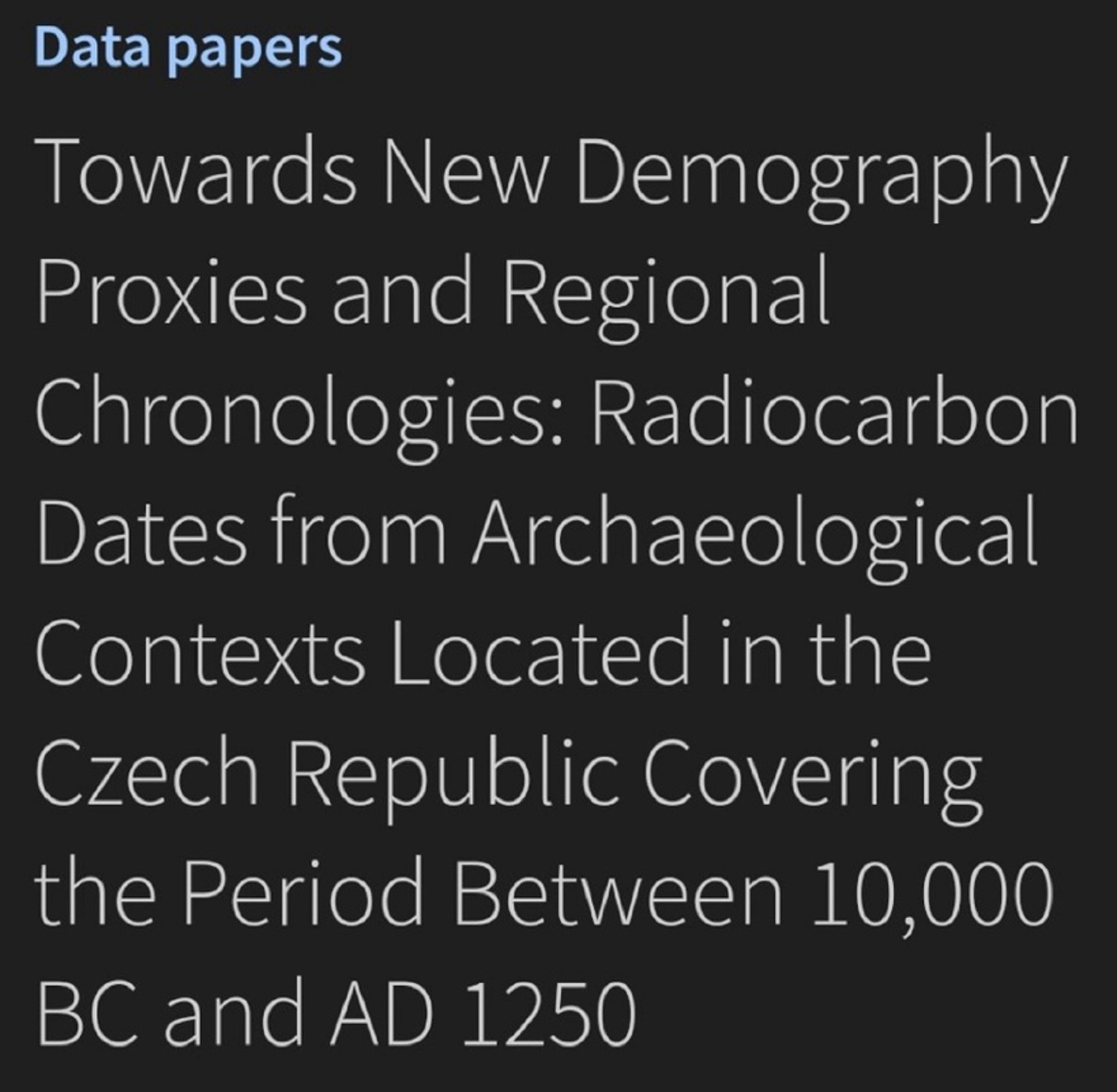
“The Sumerians believed that the universe had come into being through a series of cosmic births. First, Mother Goddess Nammu, the primeval waters, gave birth to An (the sky) and Ki (the earth), who mated together and produced a son named Enlil. Enlil separated heaven from earth and claimed the earth as his domain. Humans were believed to have been created by Enki, the son of An and Nammu. Heaven was reserved exclusively for deities and, upon their deaths, all mortals’ spirits, regardless of their behavior while alive, were believed to go to Kur, a cold, dark cavern deep beneath the earth, which was ruled by the goddess Ereshkigal and were the only food available was dry dust. In later times, Ereshkigal was believed to rule alongside her husband Nergal, the god of death.” ref
“Deities in ancient Mesopotamia were almost exclusively anthropomorphic, ( attribution of human traits, emotions, or intentions). The Anunnaki were believed to be the offspring of An and his consort, the earth goddess Ki, has been identified with the Sumerian mother goddess Ninhursag, stating that they were originally the same figure. The oldest of the Anunnaki was Enlil, the god of air and chief god of the Sumerian pantheon. The deities typically wore melam, an ambiguous substance which “covered them in terrifying splendor”. Melam could also be worn by heroes, kings, giants, and even demons. The effect that seeing a deity’s melam has on a human is described as ni, a word for the physical tingling of the flesh. Deities were almost always depicted wearing horned caps, consisting of up to seven superimposed pairs of ox-horns.” ref
“The ancient Mesopotamians believed that their deities lived in Heaven, but that a god’s statue was a physical embodiment of the god himself. As such, cult statues were given constant care and attention, and a set of priests were assigned to tend to them. These priests would clothe the statues and place feasts before them so they could “eat”. A deity’s temple was believed to be that deity’s literal place of residence. The gods had boats, full-sized barges which were normally stored inside their temples and were used to transport their cult statues along waterways during various religious festivals. Virtually every major deity in the Sumerian pantheon was regarded as the patron of a specific city and was expected to protect that city’s interests. The deity was believed to permanently reside within that city’s temple.” ref
“One text mentions as many as fifty Anunnaki associated with the city of Eridu. In Inanna’s Descent into the Netherworld, there are only seven Anunnaki, who reside within the Underworld and serve as judges. Inanna stands trial before them for her attempt to take over the Underworld; they deem her guilty of hubris and condemn her to death. Major deities in Sumerian mythology were associated with specific celestial bodies. Inanna was believed to be the planet Venus. In the mythologies of the Hurrians and Hittites (which flourished in the mid to late second millennium BC in Turkey not that far from Catal Huyuk), the oldest generation of gods was believed to have been banished by the younger gods to the Underworld, where they were ruled by the goddess Lelwani. Hittite scribes identified these deities with the Anunnaki. In ancient Hurrian, the Anunnaki are referred to as karuileš šiuneš, which means “former ancient gods”, or kattereš šiuneš, which means “gods of the earth. The old gods had no identifiable cult in the Hurrio-Hittite religion; instead, the Hurrians and Hittites sought to communicate with the old gods through the ritual sacrifice of a piglet in a pit dug in the ground. The old gods were often invoked to perform ritual purifications. ” ref
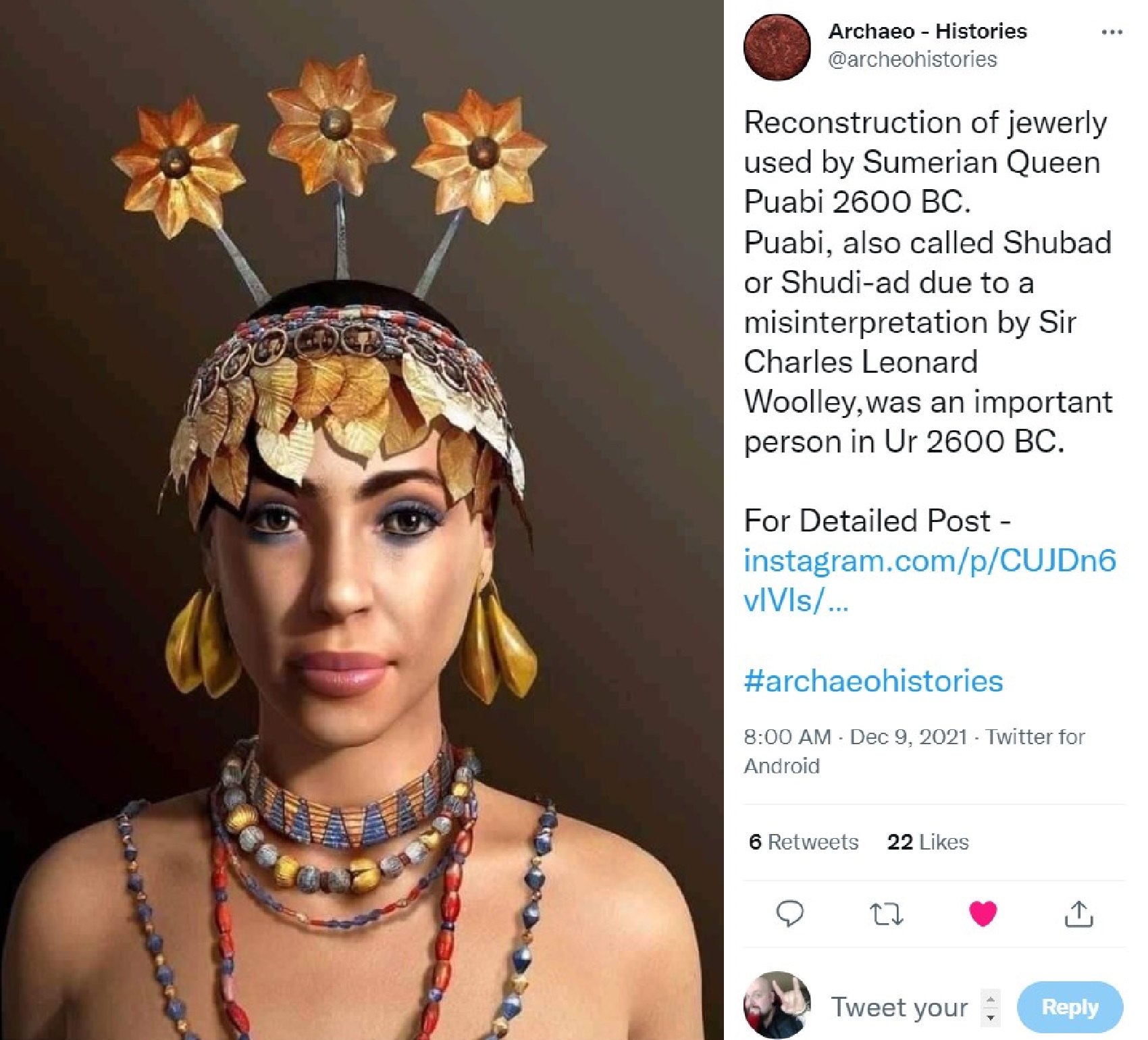
Grandmother-Mother Ancestor Spirits
“Ancestor worship is perhaps the world’s oldest religion. Some anthropologists theorize that it grew out of belief in some societies that dead people still exist in some form because they appear in dreams. Ancestor worship involves the belief that the dead live on as spirits and that it is the responsibility of their family members and descendants to make sure that are well taken care of. If they are not they may come back and cause trouble to the family members and descendants that have ignored or disrespected them. Unhappy dead ancestors are greatly feared and every effort is made to make sure they are comfortable in the afterlife. Accidents and illnesses are often attributed to deeds performed by the dead and cures are often attempts to placate them.” ref
“In some societies, people go out of their way to be nice to one another, especially older people, out of fear of the nasty things they might do when they die. Ancestor worship is found in many forms in cultures throughout the world, Veneration of ancestors is regarded as a means through which an individual can assure his or her own immortality. Children are valued because they could provide for the spirits of their parents after death. Family members who remained together and venerated their forebears with strict adherence to prescribed ritual find comfort in the belief that the souls of their ancestors are receiving proper spiritual nourishment and that they are insuring their own soul’s nourishment after death.” ref
Catal Huyuk “first religious designed city” around 9,500 to 7,700 years ago (Turkey)
Catal Huyuk “first religious designed city” dated to around 9,500 to 7,700 years ago (Turkey) of one-room homes, accessed from the roof, that were also places of worship and often featured sacred bulls or leopards, as well as anthropomorphic bears. This also Includes sacred vultures and other ritual animals in cultic hunting scenes.
Many figures were found in, under or in the walls or foundations of houses.
“A household deity is a deity or spirit that protects the home, looking after the entire household or certain key members. It has been a common belief in pagan religions as well as in folklore across many parts of the world. Household deities fit into two types; firstly, a specific deity – typically a goddess – often referred to as a hearth goddess or domestic goddess who is associated with the home and hearth, with examples including the Greek Hestia and Norse Frigg. The second type of household deities are those that are not one singular deity, but a type, or species of animistic deity, who usually have lesser powers than major deities. This type was common in the religions of antiquity, such as the Lares of ancient Roman religion, the Gashin of Korean shamanism, and Cofgodas of Anglo-Saxon paganism.” ref
Paganism 4,000 years old: Moralistic gods after the rise of Statism and often support Statism/Kings: related to “Anarchism and Socialism” (First Moralistic gods, then the Origin time of Monotheism)
It is easy to not care when you are not the one suffering oppression. But for the humanitarian, care is a way of life, not limited to a people, nor place, but humanity itself. We rise by helping each other. Show us all how good humans can be.
Paganism:
*primal stage of organized religion is 13,000 years ago.
*proto stage of organized religion is 10,000 years ago.
*progressed stage of organized religion “Myths Origin” is 7,000 years ago.
*developed stage of organized religion is 5,000 years ago.
- Paganism 12,000-7,000 years old: related to “Anarchism and Socialism” (Pre-Capitalism)
- Paganism 7,000-5,000 years old: related to “Anarchism and Socialism” (Capitalism) (World War 0) Elite and their slaves!
- Paganism 5,000 years old: progressed organized religion and the birth of the state: related to “Anarchism and Socialism” (Kings and the Rise of the State)
- Paganism 4,000 years old: Moralistic gods after the rise of Statism and often support Statism/Kings: related to “Anarchism and Socialism” (First Moralistic gods, then the Origin time of Monotheism)
Then from 5,000-4,000 years ago moralistic deities are invented likely by or for the state. Then around 4,000 years ago monotheism emerges.
Paganism was more than shamanism at first it was about the clan leader from 13,000 to 7,000 years ago then from 7,000 until 5, 500 was a time of proto kings and by 5,000 kings were a growing norm.
The term “paganism”, used by me and some others who are academics, roughly refers to pre-Christian, socioreligious-cultural-based traditions which were polytheistic (worshiped multiple entities), and to me, I speculate also involve elements of Animism, Totemism, and shamanism; which together with polytheism are what I call paganism.
* “paganist” As I conceive it in a simplified way is to believe in spirit-filled life and/or afterlife can be attached to or be expressed in things or objects and these objects can be used by special persons or in special rituals can connect to spirit-filled life and/or afterlife who are guided/supported by a goddess/god or goddesses/gods (you are a hidden paganist/Paganism: an approximately 12,000-year-old belief system) And Gobekli Tepe: “first human-made temple” as well as Catal Huyuk “first religious designed city” are both evidence of some kind of early paganism, to me.
Again just to clarify when I refer to seeming paganism thinking or behaviors (emphasize reverence for nature, polytheistic and animistic, totemistic, and shamanist religious practices). and Gobekli Tepe, by paganism I mean a grouped set of behaviors that I believe resemble the concept of paganism-type beliefs. Neither am I claiming to fully know or understand all the possible mythology beliefs that may be represented in the carving at Gobekli Tepe, some seem more straightforward others beyond current understanding, and possibly forever beyond full comprehension.
“Paganism was originally a pejorative and derogatory term for polytheism, implying its inferiority. Paganism (from classical Latin refers to “rural, rustic,” later “civilian”) is a term first used in the fourth century by early Christians for people who practiced polytheism.” ref
“However, Paganism as a term of meaning represents a wide variety of traditions that emphasize reverence for nature and a revival of ancient polytheistic and animistic religious practices. Paganism is not a traditional religion per se because it does not have any official doctrine, but it does have some common characteristics joining the great variety of traditions. One of the common beliefs is the divine presence in nature and the reverence of the natural order in life. Spiritual growth is related to the cycles of the Earth and great emphasis is placed on ecological concerns. Monotheism is almost universally rejected within Paganism and most Pagan traditions are particularly interested in the revival of ancient polytheist religious traditions.” ref
“Religion may be defined as “a set of beliefs concerning the cause, nature, and purpose of the universe, especially when considered as the creation of a superhuman agency or agencies, usually involving devotional and ritual observances, and often containing a moral code governing the conduct of human affairs,” whereas ritual is “an established or prescribed procedure for religious or other rites.” ref
*Primal superstition starts around 1 million years ago with. Then the development of religion increased around 600,000 years ago with proto superstition and then even to a greater extent around 300,000 years ago with progressed superstition.
Around 100,000 years ago, is the primal stage of early religion, the proto stage of early religion is around 75,000 years ago, or less, the progressed stage of early religion is around 50,000 years ago and finally after 13,500 years ago, begins with the evolution of organized religion. The set of stages for the development of organized religion is subdivided into the following: the primal stage of organized religion is 13,000 years ago, the proto stage of organized religion is around 10,000 years ago, and finally the progressed stage of organized religion is around 7,000 years ago with the forming of mythology and its connected set of Dogmatic-Propaganda-Closure belief strains of sacralized superstitionism. I will now give offer my rough outlined four-stage hypotheses, which use the reference of a house, in order to help to explain the way how that house (modern religions) fully developed a packet of wishful thinking nonsense, in order to assist in grasping the relative big picture of both the original elements that are involved in what often became a variety of nonrealism/unrealistic faiths or beliefs around the world. Moreover, this relative compiled a set of nonrealism faith or belief components (animism, totemism, and paganism) that are often still found in almost all religions today. My hypothesis with an explanation of this house (modern religions development).
- First, there is the foundation: Superstitionism and Symbolism/Ritualism.
- Second, is the frame and walls: Supernaturalism and Sacralizism/Spiritualism.
- Third, is the roof and finishing elements of the structure: Dogmatism and Myths.
- Fourth, is the window dressing and stylings to the house: decorated with the webs religious Dogmatic-Propaganda.
In the stage of organized religion, one important aspect that is often overlooked because of male-only thinking or by some over-emphasized because of extreme feminism is gender. There are some obvious gender associations in artifacts and possible gender-involved religious beliefs but thoughtful feminist archaeologists do not pounce on every representation of a woman and pronounce that it is a goddess. Around 5,000 years ago there are the full elements seem to be grouping together with its connected set of Dogmatic-Propaganda-Closure belief strains of sacralized superstitionism that took different forms of behavior in different areas of the world.
Hidden Religious Expressions
“animist, totemist, shamanist & paganist”
*Believe in spirit-filled life and/or afterlife (you are a hidden animist)
*Believe in spirit-filled life and/or afterlife can be attached to or be expressed in things or objects (you are a hidden totemist)
*Believe in spirit-filled life and/or afterlife can be attached to or be expressed in things or objects and these objects can be used by special persons or in special rituals can connect to spirit-filled life and/or afterlife (you are a hidden shamanist)
*Believe in spirit-filled life and/or afterlife can be attached to or be expressed in things or objects and these objects can be used by special persons or in special rituals can connect to spirit-filled life and/or afterlife who are guided/supported by a goddess/god or goddesses/gods (you are a hidden paganist)
I classify Animism (animated ‘spirit‘ or “supernatural” perspectives).
I see all religious people as at least animists, so, all religions have at least some amount, kind, or expression of animism as well.
The door of reason opens not once but many times.
Religions continuing in our modern world, full of science and facts, should be seen as little more than a set of irrational conspiracy theories of reality. Nothing more than a confused reality made up of unscientific echoes from man’s ancient past. Rational thinkers must ask themselves why continue to believe in religions’ stories. Religion myths which are nothing more than childlike stories and obsolete tales once used to explain how the world works, acting like magic was needed when it was always only nature. These childlike religious stories should not even be taken seriously, but sadly too often they are. Often without realizing it, we accumulate beliefs that we allow to negatively influence our lives. In order to bring about awareness, we need to be willing to alter skewed beliefs. Rational thinkers must examine the facts instead of blindly following beliefs or faith.
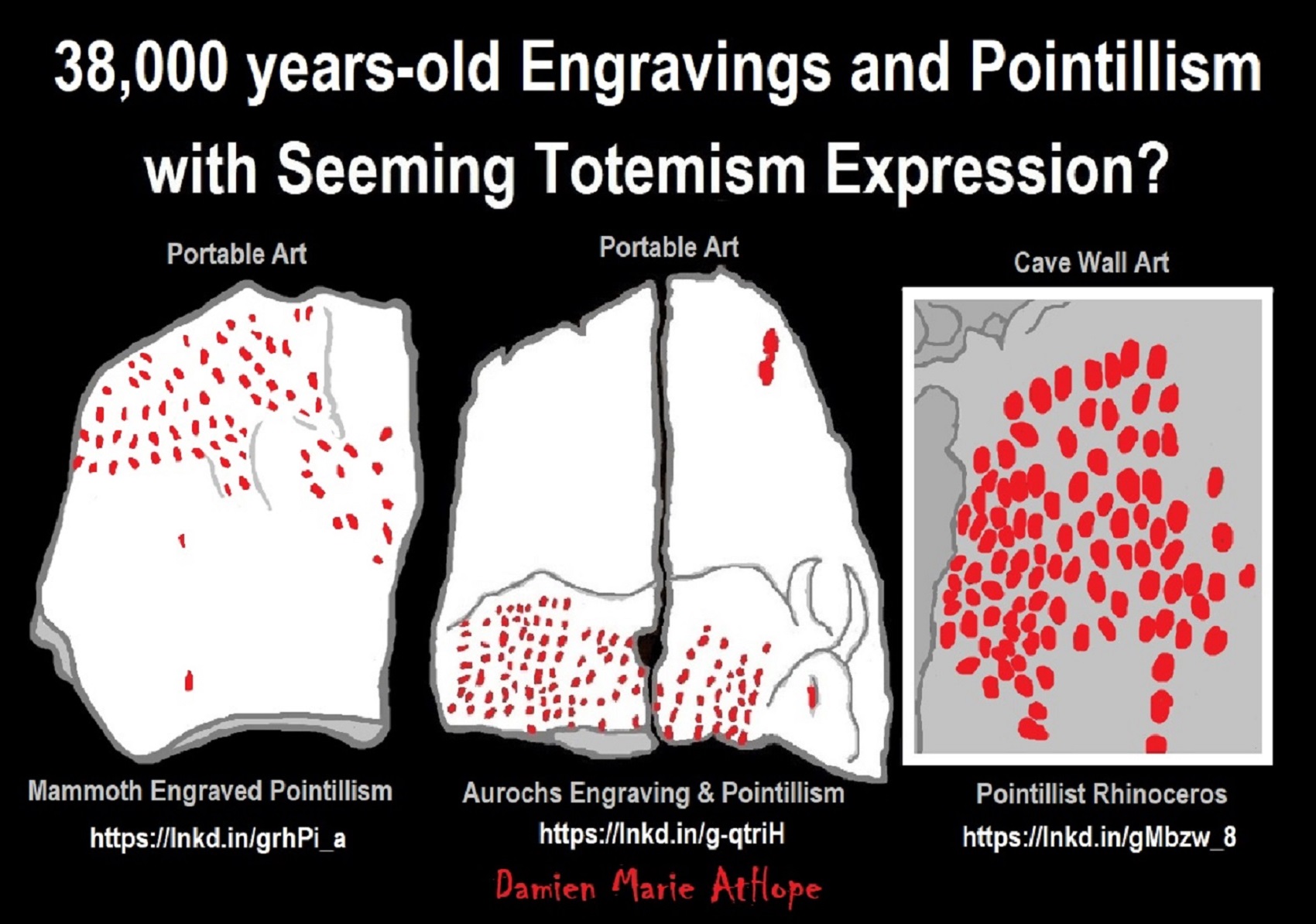
Ritual Pointillism, to me, references stars/ancestor worship in Aurignacian culture totemism, which I think relates to the Neanderthal Châtelperronian culture totemism. There was 16 engraved and otherwise modified limestone blocks, created 38,000 years ago, pointillist techniques: small dots to create the illusion of a larger image. ref
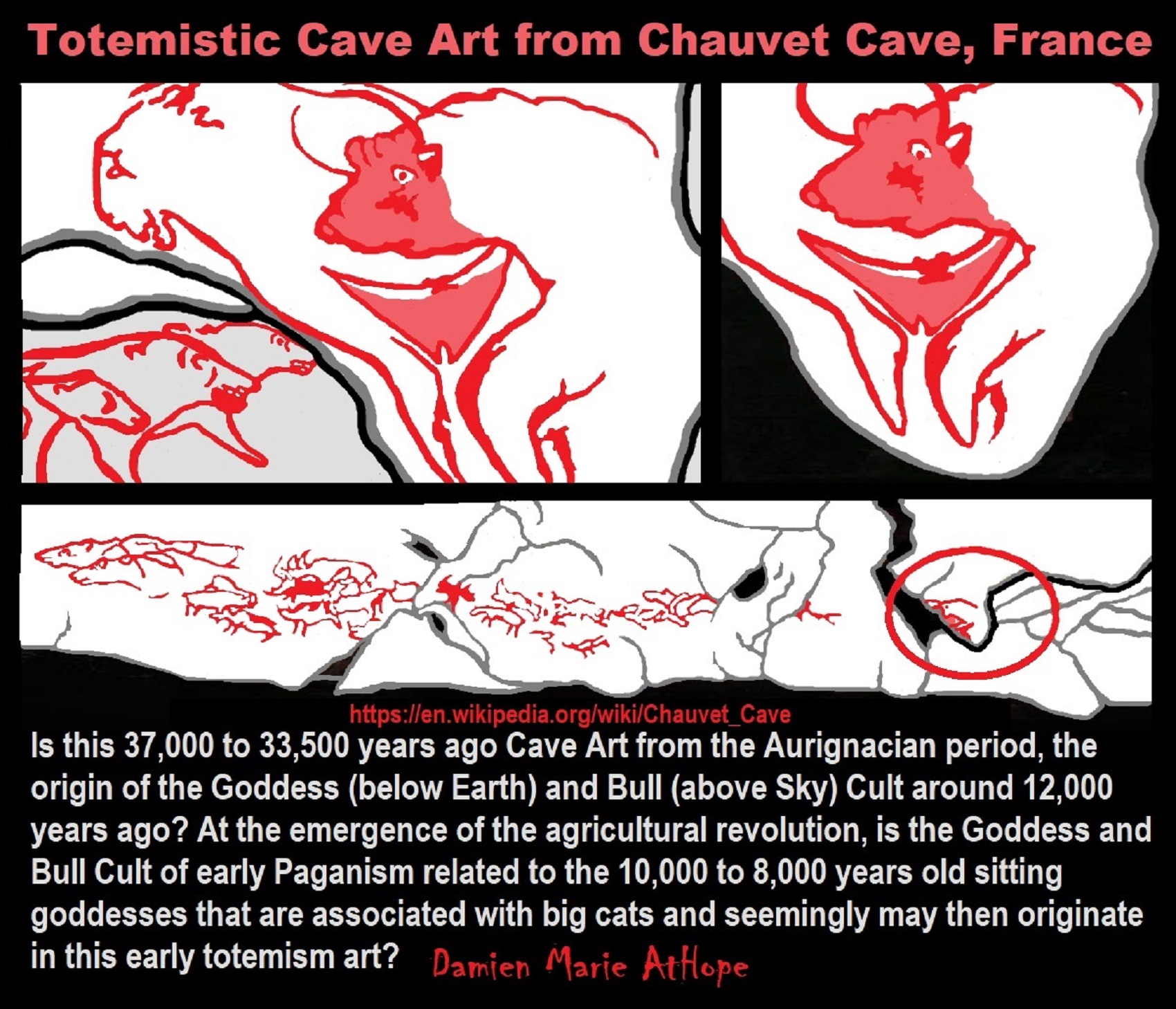
Chauvet cave
“The Chauvet-Pont-d’Arc Cave in the Ardèche department of southeastern France is a cave that contains some of the best-preserved figurative cave paintings in the world, as well as other evidence of Upper Paleolithic life. It is located near the commune of Vallon-Pont-d’Arc on a limestone cliff above the former bed of the river Ardèche, in the Gorges de l’Ardèche. The dates have been a matter of dispute but a study published in 2012 supports placing the art in the Aurignacian period, approximately 32,000–30,000 years ago. A study published in 2016 using additional 88 radiocarbon dates showed two periods of habitation, one from 37,000 to 33,500 years ago and the second from 31,000 to 28,000 years ago, with most of the black drawings dating to the earlier period.” ref
“Hundreds of animal paintings have been cataloged, depicting at least 13 different species, including some rarely or never found in other ice age paintings. Rather than depicting only the familiar herbivores that predominate in Paleolithic cave art, i.e. horses, aurochs, mammoths, etc., the walls of the Chauvet Cave feature many predatory animals, e.g., cave lions, leopards, bears, and cave hyenas. There are also paintings of rhinoceroses. Typical of most cave art, there are no paintings of complete human figures, although there is one partial “Venus” figure composed of what appears to be a vulva attached to an incomplete pair of legs. Above the Venus, and in contact with it, is a bison head, which has led some to describe the composite drawing as a Minotaur. There are a few panels of red ochre hand prints and hand stencils made by blowing pigment over hands pressed against the cave surface. Abstract markings—lines and dots—are found throughout the cave. There are also two unidentifiable images that have a vaguely butterfly or avian shape to them. This combination of subjects has led some students of prehistoric art and cultures to believe that there was a ritual, shamanic, or magical aspect to these paintings.” ref
“One drawing, later overlaid with a sketch of a deer, is reminiscent of a volcano spewing lava, similar to the regional volcanoes that were active at the time. If confirmed, this would represent the earliest known drawing of a volcanic eruption. The artists who produced these paintings used techniques rarely found in other cave art. Many of the paintings appear to have been made only after the walls were scraped clear of debris and concretions, leaving a smoother and noticeably lighter area upon which the artists worked. Similarly, a three-dimensional quality and the suggestion of movement are achieved by incising or etching around the outlines of certain figures. The art is also exceptional for its time for including “scenes”, e.g., animals interacting with each other; a pair of woolly rhinoceroses, for example, are seen butting horns in an apparent contest for territory or mating rights.” ref
Aurignacian burials (around 37,000-30,000 years ago) belong to the early phase of this period in Europe. Examples have been excavated at Cave of Cavillon, Liguria – a burial wearing a cap of netted whelk shells with a border of deer’s teeth, red ochre around the face, and a bone awl at the side. ref
Aurignacian in the Zagros region dates back to about 35,500 years ago at Yafteh Cave, Lorestan, Iran. ref

34,000 years ago Lunar Calendar Cave art around the Time Shift From Totemism to Early Shamanism?
“The Oldest Lunar Calendars and Earliest Constellations have been identified in cave art found in France and Germany. The astronomer-priests of these late Upper Paleolithic Cultures understood mathematical sets, and the interplay between the moon annual cycle, ecliptic, solstice and seasonal changes on earth. The archaeological record’s earliest data that speaks to human awareness of the stars and ‘heavens’ dates to the Aurignacian Culture of Europe, around 34,000 years ago. Between 1964 and the early 1990s, Alexander Marshack published breakthrough research that documented the mathematical and astronomical knowledge in the Late Upper Paleolithic Cultures of Europe. Marshack deciphered sets of marks carved into animal bones, and occasionally on the walls of caves, as records of the lunar cycle. These marks are sets of crescents or lines. Artisans carefully controlled line thickness so that a correlation with lunar phases would be as easy as possible to perceive. Sets of marks were often laid out in a serpentine pattern that suggests a snake deity or streams and rivers. Many of these lunar calendars were made on small pieces of stone, bone or antler so that they could be easily carried. These small, portable, lightweight lunar calendars were easily carried on extended journeys such as long hunting trips and seasonal migrations.” ref
“Hunting the largest animals was arduous, and might require hunters to follow herds of horses, bison, mammoth or ibex for many weeks. (Other big animals such as the auroch, cave bear and cave lion were well known but rarely hunted for food because they had a special status in the mythic realm. The Auroch is very important to the search for earliest constellations.) The phases of the moon depicted in these sets of marks are inexact. Precision was impossible unless all nights were perfectly clear which is an unrealistic expectation. The arithmetic counting skill implied by these small lunar calendars is obvious. The recognition that there are phases of the moon and seasons of the year that can be counted – that should be counted because they are important – is profound. “All animal activities are time factored, simply because time passes, the future is forever arriving. The reality of time factoring is objective physics and does not depend upon human awareness or consciousness. Until Marshack’s work, many archeologists believed the sets of marks he chose to study were nothing but the aimless doodles of bored toolmakers. What Marshack uncovered is the intuitive discovery of mathematical sets and the application of those sets to the construction of a calendar.” Bone is the preferred medium because it allows for easy transport and a long calendar lifetime. Mankind’s earliest astronomy brought the clan into the multi-dimensional universe of the gods. Objects used in the most potent rituals had the highest contextual, cultural value and were treated with great reverence.” ref
“Regarding the Aurignacian, between 43,000 and 35,000 years ago, the archaeological record from habitations is relatively poor in the Ardèche (Abri des Pécheurs, Grotte du Figuier) while appearing more abundant in the Languedoc (La Salpétrière, La Balauzière, Esquicho-Grapaou, La Laouza etc.). The same applies to the sites of the early phases of the Gravettian. During climatic fluctuations, and unlike the deep caves such as Chauvet, the porch and shelter fills seem to have better recorded the cold episodes than the humid phases. To date, 20 decorated caves are indexed in the gorges of the Ardèche and nearby; in other words as far as the valley of the Gardon (Baume-Latrone). This group includes several important caves (Ebbou, Oulen, Émilie etc.) which are not precisely dated and were judged to be of secondary importance until the discovery of the Chauvet Cave.” ref
“A 10,000-year-old engraved stone could be a lunar calendar. The rare pebble — found high up in the mountains near Rome, Italy, the hammer-stone was found on top of Monte Alta in the Alban Hills. It’s believed that our early ancestors would’ve used the stone to keep track of the moon’s cycles. Notches were engraved “as if they were being used to count, calculate or store the record of some kind of information. And these notches — which total either 27 or 28 — suggest the stone’s engraver used the pebble to track lunar cycles.” ref
“Archaeologists excavating in Scotland found a series of huge pits were dug by Mesolithic people to track the cycle of the Moon. They found a series of twelve huge, specially shaped pits designed to mimic the various phases of the Moon. The holes aligned perfectly on the midwinter solstice to help the hunter-gathers of Mesolithic Britain keep precise track of the passage of the seasons and the lunar cycle. The holes were dug in the shapes of various phases of the moon. “Waxing, waning, crescents, and gibbous, they’re all there and arranged in a 50-meter-long (164-foot) arc. The one representing the full moon is large and circular, approximately two meters (roughly seven feet) across, and placed right in the center. And this arc is arranged perfectly with a notch in the landscape where the sun would have risen on the day of the midwinter solstice about 10,000 years ago. Placing their calendar in the landscape the way they did would have let the people who built it to recalibrate the lunar months every winter to bring their lunar calendar in line with the solar year. This means that any effort to keep track of the seasons using the moon alone will slowly drift ever further from true. An observer needs to know when to add or subtract an extra month to make good the time or hit the reset button and start counting again.” ref
“A moon-shaped calendar was found in Smederevska Palanka, Serbia that dates back 8,000 years, and is made from a wild boar’s tusk engraved with markings to denote a lunar cycle. Farmers may have used the device to plan when to plant crops. It is made from the tusk of a wild boar and is marked with engravings thought to denote a lunar cycle of 28 days, as well as the four phases of the moon.” ref
“A lunisolar calendar was found at Warren Field in Scotland and has been dated to c. 8000 BCE, during the Mesolithic period. Some scholars argue for lunar calendars still earlier—Rappenglück in the marks on a c. 17,000-year-old cave painting at Lascaux and Marshack in the marks on a c. 27,000-year-old bone baton—but their findings remain controversial. Scholars have argued that ancient hunters conducted regular astronomical observations of the Moon back in the Upper Palaeolithic. Samuel L. Macey dates the earliest uses of the Moon as a time-measuring device back to 28,000–30,000 years ago.” ref
“A lunar calendar is a calendar based on the monthly cycles of the Moon‘s phases (synodic months, lunations), in contrast to solar calendars, whose annual cycles are based only directly on the solar year. The most commonly used calendar, the Gregorian calendar, is a solar calendar system that originally evolved out of a lunar calendar system. A purely lunar calendar is also distinguished from a lunisolar calendar, whose lunar months are brought into alignment with the solar year through some process of intercalation. The details of when months begin varies from calendar to calendar, with some using new, full, or crescent moons and others employing detailed calculations.” ref
“Since each lunation is approximately 29+1⁄2 days, it is common for the months of a lunar calendar to alternate between 29 and 30 days. Since the period of 12 such lunations, a lunar year, is 354 days, 8 hours, 48 minutes, 34 seconds (354.36707 days), purely lunar calendars are 11 to 12 days shorter than the solar year. In purely lunar calendars, which do not make use of intercalation, like the Islamic calendar, the lunar months cycle through all the seasons of a solar year over the course of a 33–34 lunar-year cycle.” ref
“Although the Gregorian calendar is in common and legal use in most countries, traditional lunar and lunisolar calendars continue to be used throughout the world to determine religious festivals and national holidays. Such holidays include Rosh Hashanah (Hebrew calendar); Easter (the Computus); the Chinese, Korean, Vietnamese, and Mongolian New Year (Chinese, Korean, Vietnamese, and Mongolian calendars, respectively); the Nepali New Year (Nepali calendar); the Mid-Autumn Festival and Chuseok (Chinese and Korean calendars); Loi Krathong (Thai calendar); Sunuwar calendar; Vesak/Buddha’s Birthday (Buddhist calendar); Diwali (Hindu calendars); Ramadan, Eid al-Fitr and Eid al-Adha (Islamic calendar).” ref
“The Japanese Calendar formerly used both the lunar and lunisolar calendar before it was replaced by the Gregorian Calendar during the Meiji government in 1872. Holidays such as the Japanese New Year were simply transposed on top as opposed to being calculated like other countries that use the lunisolar and Gregorian calendars together, for example, the Japanese New Year now falls on January 1, creating a month delay as opposed to other East Asian Countries. See customary issues in modern Japan.” ref
“Most calendars referred to as “lunar” calendars are in fact lunisolar calendars. Their months are based on observations of the lunar cycle, with intercalation being used to bring them into general agreement with the solar year. The solar “civic calendar” that was used in ancient Egypt showed traces of its origin in the earlier lunar calendar, which continued to be used alongside it for religious and agricultural purposes. Present-day lunisolar calendars include the Chinese, Vietnamese, Hindu, and Thai calendars.” ref
“Synodic months are 29 or 30 days in length, making a lunar year of 12 months about 11 to 12 days shorter than a solar year. Some lunar calendars do not use intercalation, for example, the lunar Hijri calendar used by most Muslims. For those that do, such as the Hebrew calendar, and Buddhist Calendars in Myanmar, the most common form of intercalation is to add an additional month every second or third year. Some lunisolar calendars are also calibrated by annual natural events which are affected by lunar cycles as well as the solar cycle. An example of this is the lunar calendar of the Banks Islands, which includes three months in which the edible palolo worms mass on the beaches. These events occur at the last quarter of the lunar month, as the reproductive cycle of the palolos is synchronized with the moon.” ref
“Lunar and lunisolar calendars differ as to which day is the first day of the month. In some lunisolar calendars, such as the Chinese calendar, the first day of a month is the day when an astronomical new moon occurs in a particular time zone. In others, such as some Hindu calendars, each month begins on the day after the full moon. Others are based on the first sighting of the lunar crescent, such as the lunar Hijri calendar (and, historically, the Hebrew calendar).” ref
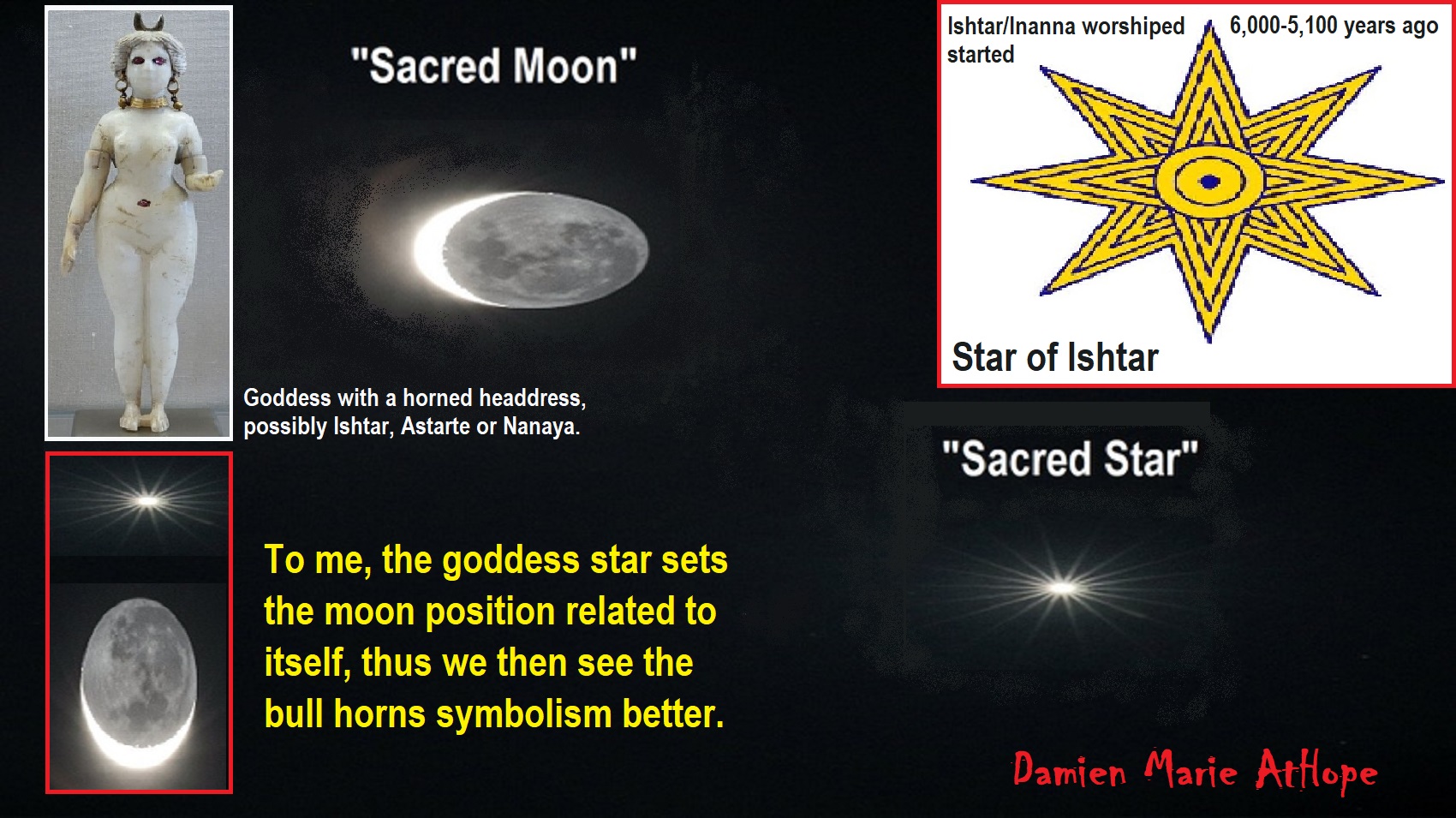
Star of Ishtar
“The Star of Ishtar or Star of Inanna is a symbol of the ancient Sumerian goddess Inanna and her East Semitic counterpart Ishtar. The owl, was one of Ishtar’s primary symbols. Ishtar is mostly associated with the planet Venus, which is also known as the morning star.” ref
Inanna/Ishtar
- “Queen of Heaven
- Goddess of sex, love, war, justice, and political power
- Goddess Ishtar on an Akkadian Empire seal, 2350–2150 BCE or 4,371-4171 years ago. She is equipped with weapons on her back, has a horned helmet, and is trampling a lion held on a leash.” ref
“Inanna is an ancient Mesopotamian goddess associated with love, beauty, sex, war, justice, and political power. She was originally worshiped in Sumer under the name “Inanna”, and was later worshipped by the Akkadians, Babylonians, and Assyrians under the name Ishtar. She was known as the “Queen of Heaven” and was the patron goddess of the Eanna temple at the city of Uruk, which was her main cult center. She was associated with the planet Venus and her most prominent symbols included the lion and the eight-pointed star. Her husband was the god Dumuzid (later known as Tammuz) and her sukkal, or personal attendant, was the goddess Ninshubur (who later became conflated with the male deities Ilabrat and Papsukkal).” ref
“Inanna was worshiped in Sumer at least as early as the Uruk period (c. 4000 BCE – c. 3100 BCE or 6,021-5,121 years ago), but she had little cult activity before the conquest of Sargon of Akkad. During the post-Sargonic era, she became one of the most widely venerated deities in the Sumerian pantheon, with temples across Mesopotamia. The cult of Inanna/Ishtar, which may have been associated with a variety of sexual rites, was continued by the East Semitic-speaking people (Akkadians, Assyrians, and Babylonians) who succeeded and absorbed the Sumerians in the region. She was especially beloved by the Assyrians, who elevated her to become the highest deity in their pantheon, ranking above their own national god Ashur. Inanna/Ishtar is alluded to in the Hebrew Bible and she greatly influenced the Ugaritic Ashtart and later Phoenician Astarte, who in turn possibly influenced the development of the Greek goddess Aphrodite. Her cult continued to flourish until its gradual decline between the first and sixth centuries CE in the wake of Christianity.” ref
“Inanna appears in more myths than any other Sumerian deity. She also had a uniquely high number of epithets and alternate names, comparable only to Nergal.] Many of her myths involve her taking over the domains of other deities. She was believed to have been given the mes, which represented all positive and negative aspects of civilization, by Enki, the god of wisdom. She was also believed to have taken over the Eanna temple from An, the god of the sky. Alongside her twin brother Utu (later known as Shamash), Inanna was the enforcer of divine justice; she destroyed Mount Ebih for having challenged her authority, unleashed her fury upon the gardener Shukaletuda after he raped her in her sleep, and tracked down the bandit woman Bilulu and killed her in divine retribution for having murdered Dumuzid. In the standard Akkadian version of the Epic of Gilgamesh, Ishtar asks Gilgamesh to become her consort. When he refuses, she unleashes the Bull of Heaven, resulting in the death of Enkidu and Gilgamesh’s subsequent grapple with his mortality.” ref
“Inanna/Ishtar’s most famous myth is the story of her descent into and return from Kur, the Ancient Mesopotamian underworld, a myth in which she attempts to conquer the domain of her older sister Ereshkigal, the queen of the underworld, but is instead deemed guilty by the seven judges of the underworld and struck dead. Three days later, Ninshubur pleads with all the gods to bring Inanna back, but all of them refuse her except Enki, who sends two sexless beings to rescue Inanna. They escort Inanna out of the underworld, but the galla, the guardians of the underworld, drag her husband Dumuzid down to the Underworld as her replacement. Dumuzid is eventually permitted to return to heaven for half the year while his sister Geshtinanna remains in the underworld for the other half, resulting in the cycle of the seasons.” ref
Astarte
“Astarte (/əˈstɑːrtiː/; Greek: Ἀστάρτη, Astártē) is the Hellenized form of the Ancient Near Eastern goddess Ashtart or Athtart (Northwest Semitic), a deity closely related to Ishtar (East Semitic), worshipped from the Bronze Age through classical antiquity. The name is particularly associated with her worship in the ancient Levant among the Canaanites and Phoenicians, though she was originally associated with Amorite cities like Ugarit and Emar, as well as Mari and Ebla. She was also celebrated in Egypt, especially during the reign of the Ramessides, following the importation of foreign cults there. Phoenicians introduced her cult in their colonies on the Iberian Peninsula.” ref
Nanaya
“Nanaya (Sumerian ????????????????, DNA.NA.A; also transcribed as “Nanāy”, “Nanaja”, “Nanāja”, ‘”Nanāya”, or “Nanai”; antiquated transcription: “Nanâ”; in Greek: Ναναια or Νανα; Aramaic: ננױננאױ; Syriac: ܢܢܝ) was a Mesopotamian goddess of love, closely associated with Inanna.” ref
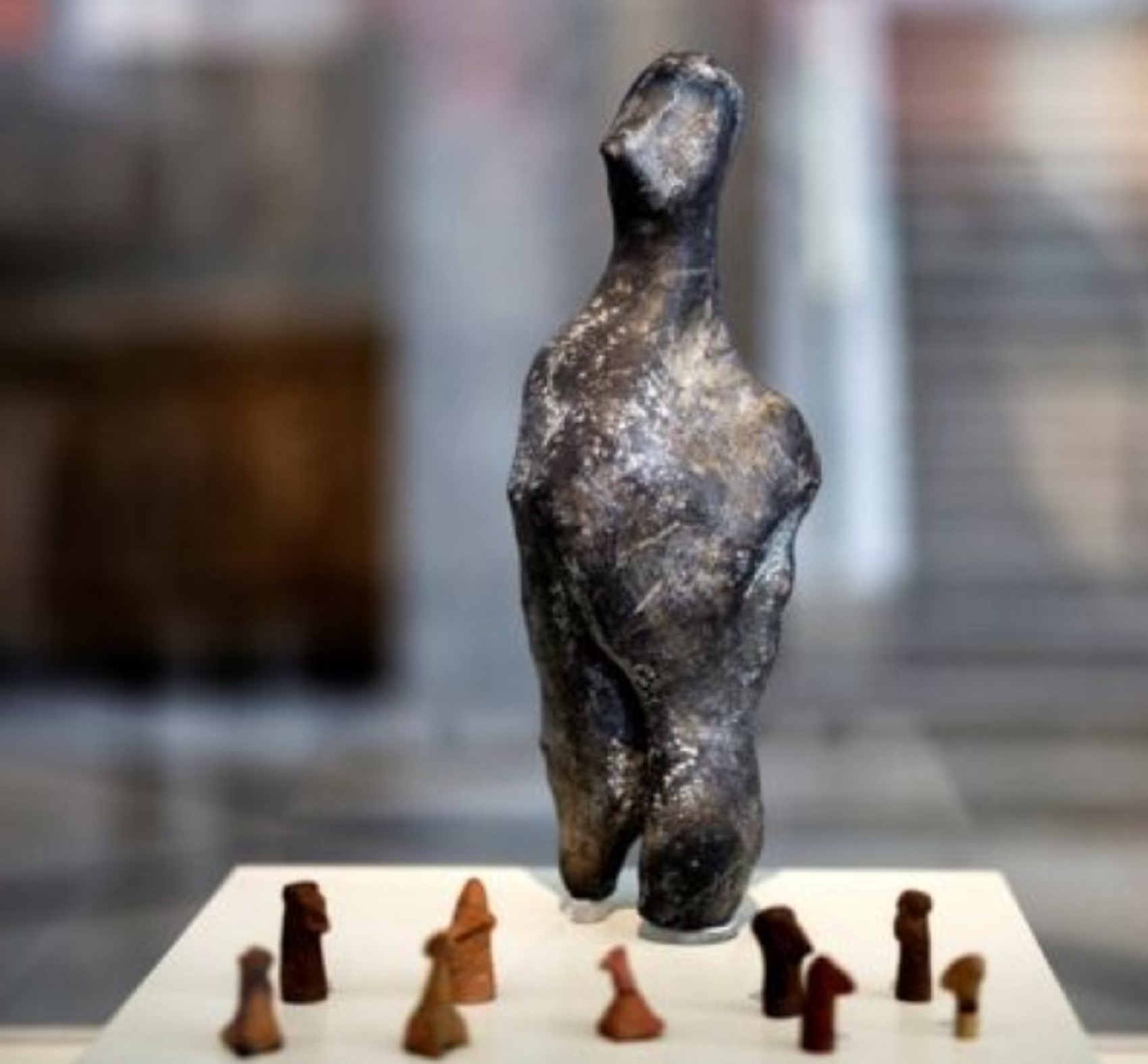
That is the 7,000 years old I think “thunderbird god”
“The “7,000-year-old enigma,” as it has been dubbed by the National Archaeological Museum, has been put on display until March 26 after being brought from the museum’s storerooms. It is the latest item to be presented under the title “The Unseen Museum” – a reference to the roughly 200,000 antiquities from statues to gold jewelry and every-day objects in store and not on daily display. Carved out of granite, the 36 cm (14 inches) “enigma” statuette of the late Neolithic era has a pointed nose and long neck leading to a markedly round belly, flat back, and cylindrical stumpy legs. “It could depict a human-like figure with a bird-like face, or a bird-like entity which has nothing to do with man but with the ideology and symbolism of the Neolithic society,” Katya Manteli, an archaeologist with the museum, told Reuters.” ref
I think Kutkh, a Raven spirit, Bird god from North Aisa, relates to Bird gods/spirits in China/North Aisa, the Middle East/Egypt, & the Americas. But in Europe, was turned into a human Zeus/Thor, Middle East/Egypt turned him into a half-bird half other-being or half-human, Horus.
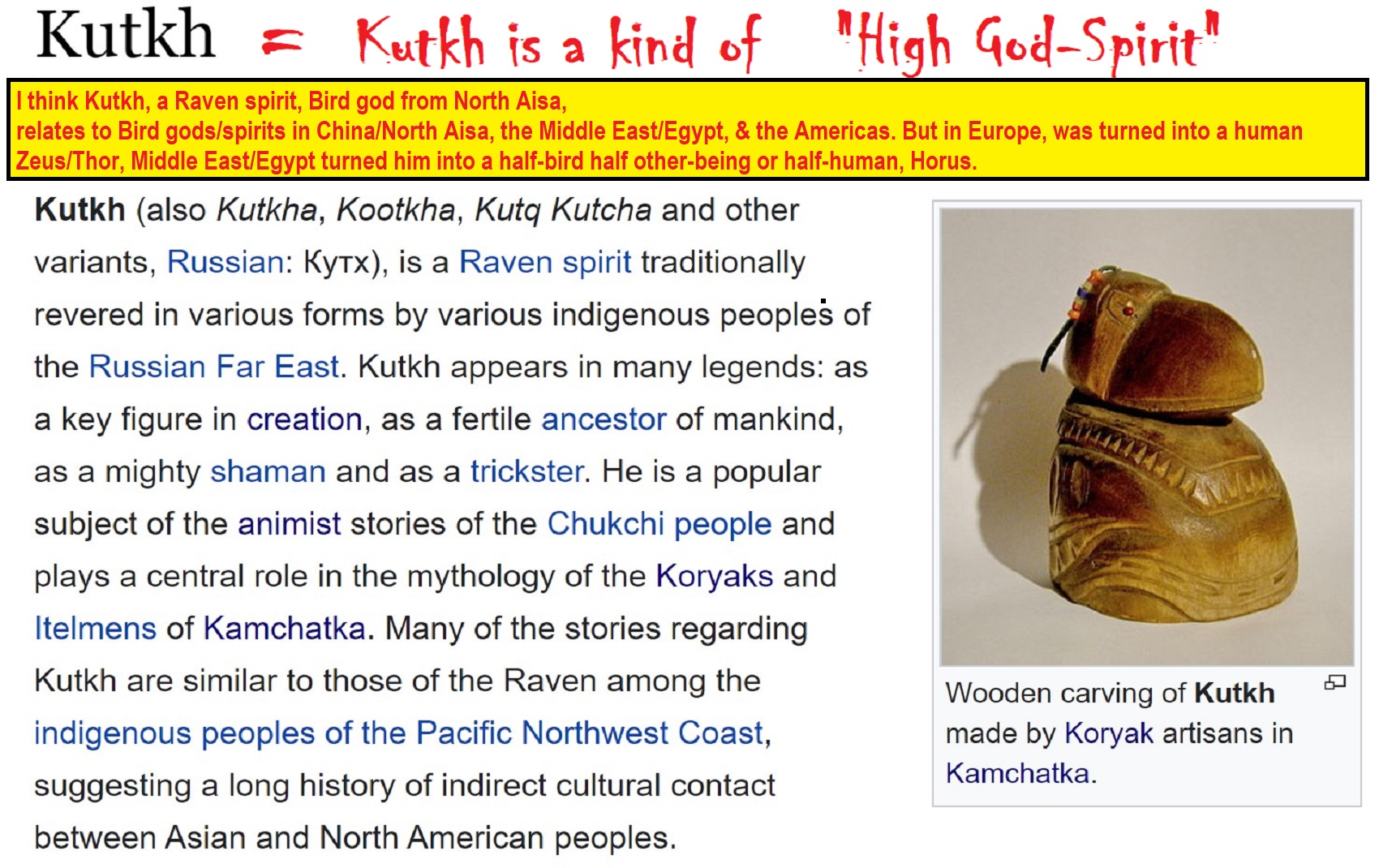
I think Kutkh, a Raven spirit, Bird god from North Aisa, relates to Bird gods/spirits in China/North Aisa, the Middle East/Egypt, & the Americas. But in Europe, was turned into a human Zeus/Thor, Middle East/Egypt turned him into a half-bird half other-being or half-human, Horus.
Kutkh?
“Kutkh (also Kutkha, Kootkha, Kutq Kutcha and other variants, Russian: Кутх), is a Raven spirit traditionally revered in various forms by various indigenous peoples of the Russian Far East. Kutkh appears in many legends: as a key figure in creation, as a fertile ancestor of mankind, as a mighty shaman, and as a trickster. He is a popular subject of the animist stories of the Chukchi people and plays a central role in the mythology of the Koryaks and Itelmens of Kamchatka. Many of the stories regarding Kutkh are similar to those of the Raven among the indigenous peoples of the Pacific Northwest Coast, suggesting a long history of indirect cultural contact between Asian and North American peoples.” ref
“Kutkh is known widely among the people that share a common Chukotko-Kamchatkan language family. Regionally, he is known as Kúrkil among the Chukchi; as Kutq among the Itelmens; and as KútqI, KútqIy, or KúsqIy among the southeastern Koryaks and KúykIy or QúykIy among the northwestern Koryaks. In Koryak, the name is employed commonly in its augmentative form, (KutqÍnnaku, KusqÍnnaku, KuyÍnnaku) all meaning “Big Kutkh” and often translated simply as “God.” ref
Kutkh Myths
“The tales of Kutkh come in many, often contradictory versions. In some tales he is explicitly created by a Creator and lets the dawn onto the earth by chipping away at the stones surrounding her. In others, he creates himself (sometimes out of an old fur coat) and takes pride in his independence from the Creator. In some, Kamchatka is created as he drops a feather while flying over the earth. In others, islands and continents are created by his defecation, rivers, and lakes out of his waters. The difficult volcanic terrain and swift rivers of Kamchatka are thought to reflect Kutkh’s capricious and willful nature.” ref
“The bringing of light in the form of the sun and the moon is a common theme. Sometimes, he tricks an evil spirit which has captured the celestial bodies much in the style of analogous legends about the Tlingit and Haida in the Pacific Northwest. In others, it is he who must be tricked into releasing the sun and the moon from his bill. Kutkh’s virility is emphasized in many legends. Many myths concern his children copulating with other animal spirits and creating the peoples that populate the world. In the animistic tradition of north-Eurasian peoples, Kutkh has a variety of interactions and altercations with Wolf, Fox, Bear, Wolverine, Mouse, Owl, Dog, Seal, Walrus, and a host of other spirits. Many of these interactions involve some sort of trickery in which Kutkh comes out on top about as often as he is made a fool of.” ref
“An example of these contradictions is given to the Chukchi legend of Kutkh and the Mice. The great and mighty raven Kutkh was flying through the cosmos. Tired from constant flight, he regurgitated the Earth from his gut, transformed into an old man, and alighted on the empty land to rest. Out of his first footsteps emerged the first Mice. Curious, playful and fearless, they entered the sleeping Kutkh’s nose. The fury of the subsequent sneeze buckled the earth and created the mountains and the valleys. Attempts to stamp them out led to the formation of the ocean. Further harassments led to a great battle between the forces of snow and fire which created the seasons. Thus, the variable world recognizable to people emerged from the dynamic interaction between the mighty Kutkh and the small but numerous Mice.” ref
Kutkh Attitudes
“Although Kutkh is supposed to have given mankind variously light, fire, language, fresh water, and skills such as net-weaving and copulation, he is also often portrayed as a laughing-stock, hungry, thieving, and selfish. In its contradictions, his character is similar that of other trickster gods, such as Coyote.” ref
“The early Russian explorer and ethnographer of Kamchatka Stepan Krasheninnikov (1711–1755) summarize the Itelmen’s relationship to Kutkh as follows:
They pay no homage to him and never ask any favor of him; they speak of him only in derision. They tell such indecent stories about him that I would be embarrassed to repeat them. They upbraid him for having made too many mountains, precipices, reefs, sand banks and swift rivers, for causing rainstorms and tempests which frequently inconvenience them. In winter when they climb up or down the mountains, they heap abuses on him and curse him with imprecations. They behave the same way when they are in other difficult or dangerous situations.” ref
“The image of Kutkh remains popular and iconic in Kamchatka, used often in advertising and promotional materials. Stylized carvings of Kutkh by Koryak artisans, often adorned with beads and lined with fur, are sold widely as souvenirs. The Chukchi creator-deity, roughly analogous to Bai-Ulgan of the Turkic pantheon. The Koryaks refer to him as Quikinna’qu (“Big Raven”) and in Kamchadal (Itelmens) mythology he is called Kutkhu.” ref
Horus?
“Horus or Her, Heru, Hor, Har in Ancient Egyptian, is one of the most significant ancient Egyptian deities who served many functions, most notable god of kingship and the sky. He was worshipped from at least the late prehistoric Egypt until the Ptolemaic Kingdom and Roman Egypt. Different forms of Horus are recorded in history and these are treated as distinct gods by Egyptologists. These various forms may possibly be different manifestations of the same multi-layered deity in which certain attributes or syncretic relationships are emphasized, not necessarily in opposition but complementary to one another, consistent with how the Ancient Egyptians viewed the multiple facets of reality. He was most often depicted as a falcon, most likely a lanner falcon or peregrine falcon, or as a man with a falcon head.” ref
“The earliest recorded form of Horus is the tutelary deity of Nekhen in Upper Egypt, who is the first known national god, specifically related to the ruling pharaoh who in time came to be regarded as a manifestation of Horus in life and Osiris in death. The most commonly encountered family relationship describes Horus as the son of Isis and Osiris, and he plays a key role in the Osiris myth as Osiris’s heir and the rival to Set, the murderer, and brother of Osiris. In another tradition, Hathor is regarded as his mother and sometimes as his wife. Claudius Aelianus wrote that Egyptians called the god Apollo “Horus” in their own language.” ref
“Horus is recorded in Egyptian hieroglyphs as ḥr.w “Falcon”; the original pronunciation has been reconstructed as /ˈħaːɾuw/ in Old Egyptian and early Middle Egyptian, /ˈħaːɾəʔ/ in later Middle Egyptian, and /ˈħoːɾ(ə)/ in Late Egyptian. Additional meanings are thought to have been “the distant one” or “one who is above, over”.[10] As the language changed over time, it appeared in Coptic varieties variously as /hoːɾ/ or /ħoːɾ/ and was adopted into ancient Greek as Ὧρος Hōros (pronounced at the time as /hɔ̂ːros/). It also survives in Late Egyptian and Coptic theophoric name forms such as Siese “son of Isis” and Harsiese “Horus, Son of Isis”. Nekheny may have been another falcon god worshipped at Nekhen, city of the falcon, with whom Horus was identified from early on. Horus may be shown as a falcon on the Narmer Palette, dating from about the 31st century BC.” ref
Horus and the pharaoh
“The Pyramid Texts (c. 2400–2300 BC) describe the nature of the pharaoh in different characters as both Horus and Osiris. The pharaoh as Horus in life became the pharaoh as Osiris in death, where he was united with the other gods. New incarnations of Horus succeeded the deceased pharaoh on earth in the form of new pharaohs.” ref
“The lineage of Horus, the eventual product of unions between the children of Atum, may have been a means to explain and justify pharaonic power. The gods produced by Atum were all representative of cosmic and terrestrial forces in Egyptian life. By identifying Horus as the offspring of these forces, then identifying him with Atum himself, and finally identifying the Pharaoh with Horus, the Pharaoh theologically had dominion over all the world.” ref
Horus Mythology
Sky god
“Since Horus was said to be the sky, he was considered to also contain the Sun and Moon. It became said that the Sun was his right eye and the Moon his left, and that they traversed the sky when he, a falcon, flew across it. Later, the reason that the Moon was not as bright as the Sun was explained by a tale, known as The Contendings of Horus and Seth. In this tale, it was said that Set, the patron of Upper Egypt, and Horus, the patron of Lower Egypt, had battled for Egypt brutally, with neither side victorious, until eventually, the gods sided with Horus.” ref
“As Horus was the ultimate victor he became known as ḥr.w wr “Horus the Great”, but more usually translated “Horus the Elder”. In the struggle, Set had lost a testicle, and Horus’ eye was gouged out. Horus was occasionally shown in art as a naked boy with a finger in his mouth sitting on a lotus with his mother. In the form of a youth, Horus was referred to as nfr ḥr.w “Good Horus”, transliterated Neferhor, Nephoros, or Nopheros (reconstructed as naːfiru ħaːruw).” ref
“The Eye of Horus is an ancient Egyptian symbol of protection and royal power from deities, in this case from Horus or Ra. The symbol is seen on images of Horus’ mother, Isis, and on other deities associated with her. In the Egyptian language, the word for this symbol was “wedjat” (wɟt). It was the eye of one of the earliest of Egyptian deities, Wadjet, who later became associated with Bastet, Mut, and Hathor as well. Wadjet was a solar deity and this symbol began as her all-seeing eye. In early artwork, Hathor is also depicted with this eye. Funerary amulets were often made in the shape of the Eye of Horus. The Wedjat or Eye of Horus is “the central element” of seven “gold, faience, carnelian, and lapis lazuli” bracelets found on the mummy of Shoshenq II. The Wedjat “was intended to protect the king [here] in the afterlife” and to ward off evil. Egyptian and Near Eastern sailors would frequently paint the symbol on the bow of their vessel to ensure safe sea travel.” ref
Other forms of Horus
Heru-ur (Horus the Elder)
“Heru-ur (or Herwer), (Haroeris to the Ptolemaic Greeks), also known as Horus the Elder, was a form of Horus, where he was the son of Geb and Nut. He was one of the oldest gods of ancient Egypt. He absorbed a number of local gods including a hawk god Nekheny the nome of Nekhen and Wer (a god of light known as “the great one” whose eyes were the sun and moon) to become the patron of Nekhen (Hierakonpolis), the first national god (“God of the Kingdom”) and later the patron god of the pharaohs. Nekhen was a powerful city in the pre-dynastic period, and the early capital of Upper Egypt. By the Old Kingdom he was simply referred to as Horus and had become the first national god and the patron of the Pharaoh. He was called the son of truth – signifying his role as an important upholder of Maat. His right eye was the Sun and the left one was the Moon. Heru-ur was sometimes depicted fully as a falcon, he was sometimes given the title Kemwer, meaning “(the) great black (one). Other variants include Hor Merti ‘Horus of the two eyes’ and Horkhenti Irti.” ref
Heru-pa-khered (Horus the Younger)
“Heru-pa-khered (Harpocrates to the Ptolemaic Greeks), also known as Horus the Younger, is represented in the form of a youth wearing a lock of hair (a sign of youth) on the right of his head while sucking his finger. In addition, he usually wears the united crowns of Egypt, the crown of Upper Egypt and the crown of Lower Egypt. He is a form of the rising sun, representing its earliest light.” ref
Heru-Behdeti (Horus of Behdet)
“The winged sun of Horus of Edfu and depicted on the top of pylons in the ancient temples throughout Egypt.” ref
Her-em-akhet (Horus in the Horizon)
Her-em-akhet (or Horemakhet), (Harmakhis in Greek), represented the dawn and the early morning sun. He was often depicted as a sphinx with the head of a man (like the Great Sphinx of Giza), or as a hieracosphinx, a creature with a lion’s body and a falcon’s head and wings, sometimes with the head of a lion or ram (the latter providing a link to the god Khepri, the rising sun). It was believed that he was the inspiration for the Great Sphinx of Giza, constructed under the order of Khafre, whose head it depicts.” ref
“Other forms of Horus include:
– Hor Merti (‘Horus of the Two Eyes’);
– Horkhenti Irti;
– Her-sema-tawy (‘Horus Uniter of the Two Lands’), the Greek Harsomptus, depicted like the double-crowned Horus
– Her-iunmutef or Iunmutef, depicted as a priest with a leopard-skin over the torso;
– Herui (the “double falcon or Horuses”), the 5th nome god of Upper Egypt in Coptos
Her-em-akhet (Greek: Harmakhis), the wall relief of a hieracosphinx depicted at the Temple of Horus in Edfu
Herui, the 5th nome god of Upper Egypt in Coptos besides the pharaoh Sahure
Her-iunmutef (Iunmutef), (‘Horus, Pillar of His Mother’), depicted as a priest wearing a leopard-skin over torso in the Tomb of Nefertari, Valley of the Queens
Her-sema-tawy (‘Horus, Uniter of the Two Lands’), tying the papyrus and reed plants in the sema tawy symbol for the unification of Upper and Lower Egypt opposite with Set (Sutekh)” ref
“The Festival of Victory (Egyptian: Heb Nekhtet) was an annual Egyptian festival dedicated to the god Horus. The Festival of Victory was celebrated at the Temple of Horus at Edfu, and took place during the second month of the Season of the Emergence (or the sixth month of the Egyptian calendar).” ref
“The ceremonies which took place during the Festival of Victory included the performance of a sacred drama which commemorated the victory of Horus over Set. The main actor in this drama was the king of Egypt himself, who played the role of Horus. His adversary was a hippopotamus, who played the role of Set. In the course of the ritual, the king would strike the hippopotamus with a harpoon. The destruction of the hippopotamus by the king commemorated the defeat of Set by Horus, which also legitimized the king.” ref
“It is unlikely that the king attended the Festival of Victory every year; in many cases, he was probably represented by a priest. It is also unlikely that a real hippopotamus was used in the festival every year; in many cases, it was probably represented by a model. The 4th-century Roman author Macrobius mentions another annual Egyptian festival dedicated to Horus in his Chronicon. Macrobius specifies this festival as occurring on the winter solstice. The 4th-century Christian bishop Epiphanius of Salamis also mentions a winter solstice festival of Horus in his Panarion. However, this festival is not attested in any native Egyptian sources.” ref

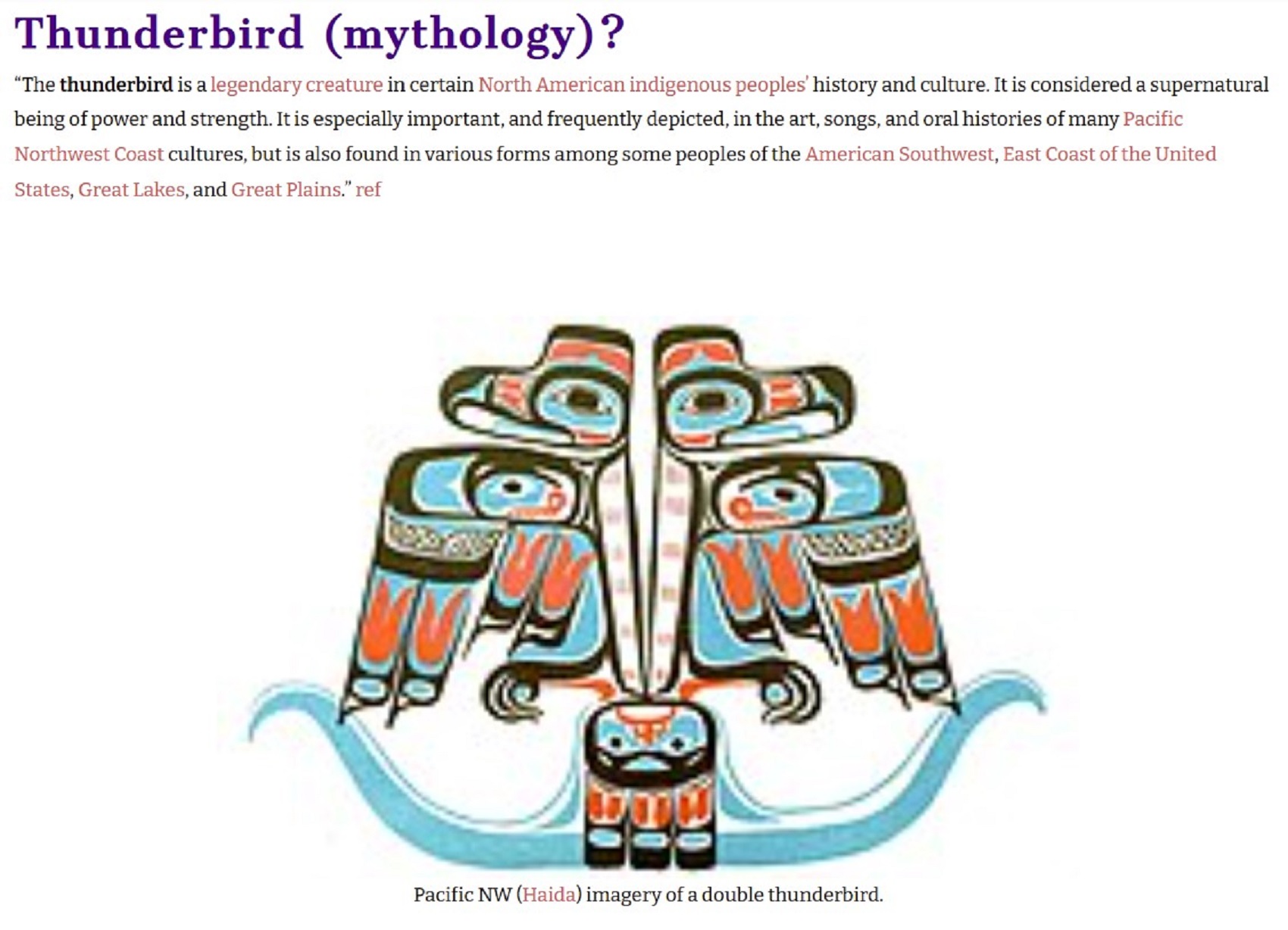
Thunderbird (mythology)?
“The thunderbird is a legendary creature in certain North American indigenous peoples’ history and culture. It is considered a supernatural being of power and strength. It is especially important, and frequently depicted, in the art, songs, and oral histories of many Pacific Northwest Coast cultures, but is also found in various forms among some peoples of the American Southwest, East Coast of the United States, Great Lakes, and Great Plains.” ref
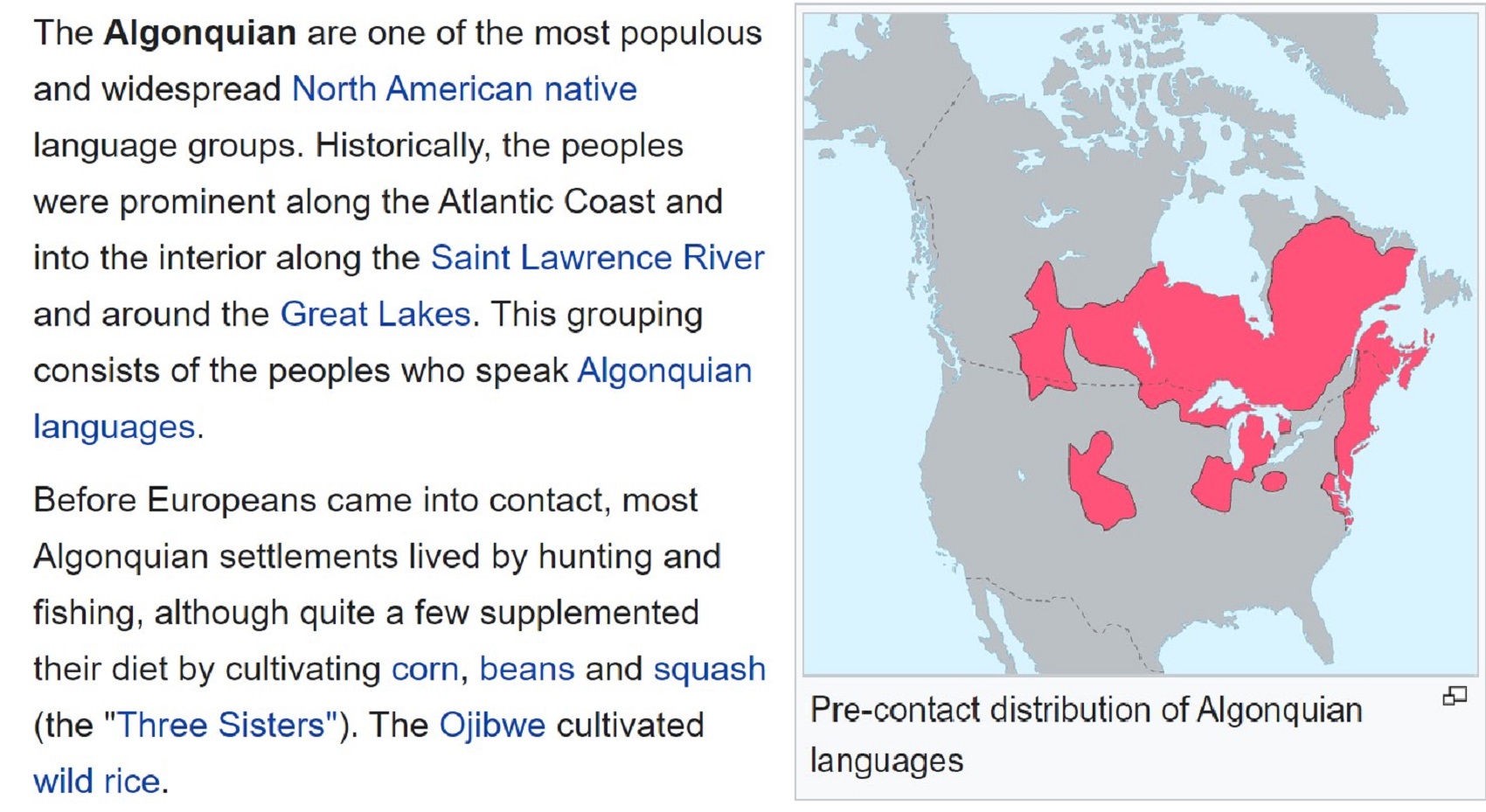

“The Algonquian are one of the most populous and widespread North American native language groups. Historically, the peoples were prominent along the Atlantic Coast and into the interior along the Saint Lawrence River and around the Great Lakes. This grouping consists of the peoples who speak Algonquian languages. Before Europeans came into contact, most Algonquian settlements lived by hunting and fishing, although quite a few supplemented their diet by cultivating corn, beans, and squash (the “Three Sisters”). The Ojibwe cultivated wild rice.” ref
“At the time of the first European settlements in North America, Algonquian peoples occupied what is now New Brunswick, and much of what is now Canada east of the Rocky Mountains; what is now New England, New Jersey, southeastern New York, Delaware, and down the Atlantic Coast through the Upper South; and around the Great Lakes in present-day Minnesota, Wisconsin, Michigan, Illinois, Indiana, and Iowa. The homeland of the Algonquian peoples is not known. At the time of the European arrival, the hegemonic Iroquois Confederacy, based in present-day New York and Pennsylvania, was regularly at war with Algonquian neighbors.” ref
Algonquian Tribal identity?
New England area
“Colonists in the Massachusetts Bay area first encountered the Wampanoag, Massachusett, Nipmuc, Pennacook, Penobscot, Passamaquoddy, and Quinnipiac. The Mohegan, Pequot, Pocumtuc, Podunk, Tunxis, and Narragansett were based in southern New England. The Abenaki were located in northern New England: present-day Maine, New Hampshire, and Vermont in what became the United States and eastern Quebec in what became Canada. They had established trading relationships with French colonists who settled along the Atlantic coast and what was later called the Saint Lawrence River. The Mahican were located in western New England in the upper Hudson River Valley (around what was developed by Europeans as Albany, New York). These groups practiced agriculture, hunting, and fishing.” ref
“The Algonquians of New England such as the Piscataway, (who spoke Eastern Algonquian) practiced a seasonal economy. The basic social unit was the village: a few hundred people related by a clan kinship structure. Villages were temporary and mobile. The people moved to locations of greatest natural food supply, often breaking into smaller units or gathering as the circumstances required. This custom resulted in a certain degree of cross-tribal mobility, especially in troubled times.” ref
“In warm weather, they constructed portable wigwams, a type of hut usually with buckskin doors. In the winter, they erected the more substantial longhouses, in which more than one clan could reside. They cached food supplies in more permanent, semi-subterranean structures.” ref
“In the spring, when the fish were spawning, they left the winter camps to build villages at coastal locations and waterfalls. In March, they caught smelt in nets and weirs, moving about in birch bark canoes. In April, they netted alewife, sturgeon, and salmon. In May, they caught cod with hook and line in the ocean; and trout, smelt, striped bass, and flounder in the estuaries and streams. Putting out to sea, they hunted whales, porpoises, walruses, and seals. They gathered scallops, mussels, clams, and crabs.” ref
“From April through October, natives hunted migratory birds and their eggs: Canada geese, brant, mourning doves and others. In July and August they gathered strawberries, raspberries, blueberries, and nuts. In September, they split into small groups and moved up the streams to the forest. There, they hunted beaver, caribou, moose and white-tailed deer.[5]
“In December, when the snows began, the people created larger winter camps in sheltered locations, where they built or reconstructed longhouses. February and March were lean times. The tribes in southern New England and other northern latitudes had to rely on cached food. Northerners developed a practice of going hungry for several days at a time. Historians hypothesize that this practice kept the population down, according to Liebig’s law of the minimum.” ref
“The southern Algonquians of New England relied predominantly on slash and burn agriculture. They cleared fields by burning for one or two years of cultivation, after which the village moved to another location. This is the reason the English found the region relatively cleared and ready for planting. By using various kinds of native corn (maize), beans, and squash, southern New England natives were able to improve their diet to such a degree that their population increased and they reached a density of 287 people per 100 square miles as opposed to 41 in the north. Scholars estimate that, by the year 1600, the indigenous population of New England had reached 70,000–100,000.” ref
Midwest
“The French encountered Algonquian peoples in this area through their trade and limited colonization of New France along the Mississippi and Ohio rivers. The historic peoples of the Illinois Country were the Shawnee, Illiniwek, Kickapoo, Menominee, Miami, Sauk, and Meskwaki. The latter were also known as the Sac and Fox, and later known as the Meskwaki Indians, who lived throughout the present-day Midwest of the United States.” ref
“During the nineteenth century, many Native Americans from east of the Mississippi River were displaced over great distances through the United States passage and enforcement of Indian removal legislation; they forced the people west of the Mississippi River to what they designated as Indian Territory. After the US extinguished Indian land claims, this area was admitted as the state of Oklahoma in the early 20th century.” ref
Upper west
“Ojibwe/Chippewa, Odawa, Potawatomi, and a variety of Cree groups lived in Upper Peninsula of Michigan, Western Ontario, Wisconsin, Minnesota, and the Canadian Prairies. The Arapaho, Blackfoot, and Cheyenne developed as indigenous to the Great Plains.” ref
List of historic Algonquian-speaking peoples
- Algonquin
- AbenakiMissiquoi
Pennacook - Arapaho
- Beothuk
- Blackfoot
- Cheyenne
- Chowanoke
- Cree
- Gros Ventre
- Illinois
- Kickapoo
- Lenape
MunseeWappinger
Unami - Meskwaki
- Menominee
- Mahican
- Maliseet
- Mascouten
- Massachusett
- MattabesicMattabessett
Podunk
Tunxis
Paugussett
Quinnipiac
Unquachog - Miami
- Mi’kmaq
- Montaukett
- Mohegan
- Nanticoke
- Narragansett
- Nipissing
- Nipmuc
- Odawa
- OjibweMississauga
- Passamaquoddy
- Penobscot
- Pequot
- PiscatawayNacotchtank
- Potawatomi
- Powhatan
- Roanoke peopleCroatan
- Sauk
- ShawneeChalahgawtha
Hathawekela
Kispoko
Mekoche
Pekowi - Secotan
- Wampanoag
- Weapemeoc
21. Munsee (nearly extinct)22. Unami (†)23. Nanticoke–Piscataway (†)24. Carolina Algonquian (†)25. Powhatan (†)26. Etchemin (†) (uncertain – See Eastern Algonquian languages)27. Loup A (†) (probably Nipmuck (†), uncertain – See Eastern Algonquian languages)28. Loup B (†) (uncertain – See Eastern Algonquian languages)29. Shinnecock (†) (uncertain)Algonquian languages?
“The Algonquian languages also Algonkian) are a subfamily of American indigenous languages that include most languages in the Algic language family. The name of the Algonquian language family is distinguished from the orthographically similar Algonquin dialect of the Indigenous Ojibwe language (Chippewa), which is a senior member of the Algonquian language family. The term Algonquin has been suggested to derive from the Maliseet word elakómkwik, “they are our relatives/allies”. A number of Algonquian languages, like many other Native American languages, are now extinct.” ref“Speakers of Algonquian languages stretch from the east coast of North America to the Rocky Mountains. The proto-language from which all of the languages of the family descend, Proto-Algonquian, was spoken around 2,500 to 3,000 years ago. There is no scholarly consensus about where this language was spoken.” ref
This subfamily of around 30 languages is divided into three groups according to geography: Plains, Central, and Eastern Algonquian; of these three, only Eastern Algonquian constitutes a true genetic subgroup. The languages are listed below, following the classifications of Goddard (1996) and Mithun (1999). Extinct languages are marked with †, and endangered languages are noted as such. For dialects and subdialects, consult the separate main articles for each of the three divisions.” ref
1. Blackfoot Arapahoan (including Nawathinehena (†), and Besawunena (†)) 2. Arapaho proper 3. Gros Ventre (†) 4. Cheyenne
5. Cree–Innu–Naskapi 6. Menominee (severely endangered) Ojibwe–Potawatomi7. Ojibwe 8. Potawatomi (nearly extinct)9. Sauk–Fox–Kickapoo (severely endangered)10. Shawnee (severely endangered)11. Miami–Illinois (†)
12. Miꞌkmaq Abenaki 13. Western Abenaki (nearly extinct) 14. Eastern Abenaki (†) 15. Malecite–Passamaquoddy 16. Massachusett 17. Narragansett (†) 18. Mohegan–Pequot (†) 19. Quiripi-Naugatuck-Unquachog (†) 20. Mahican (†) Lenape
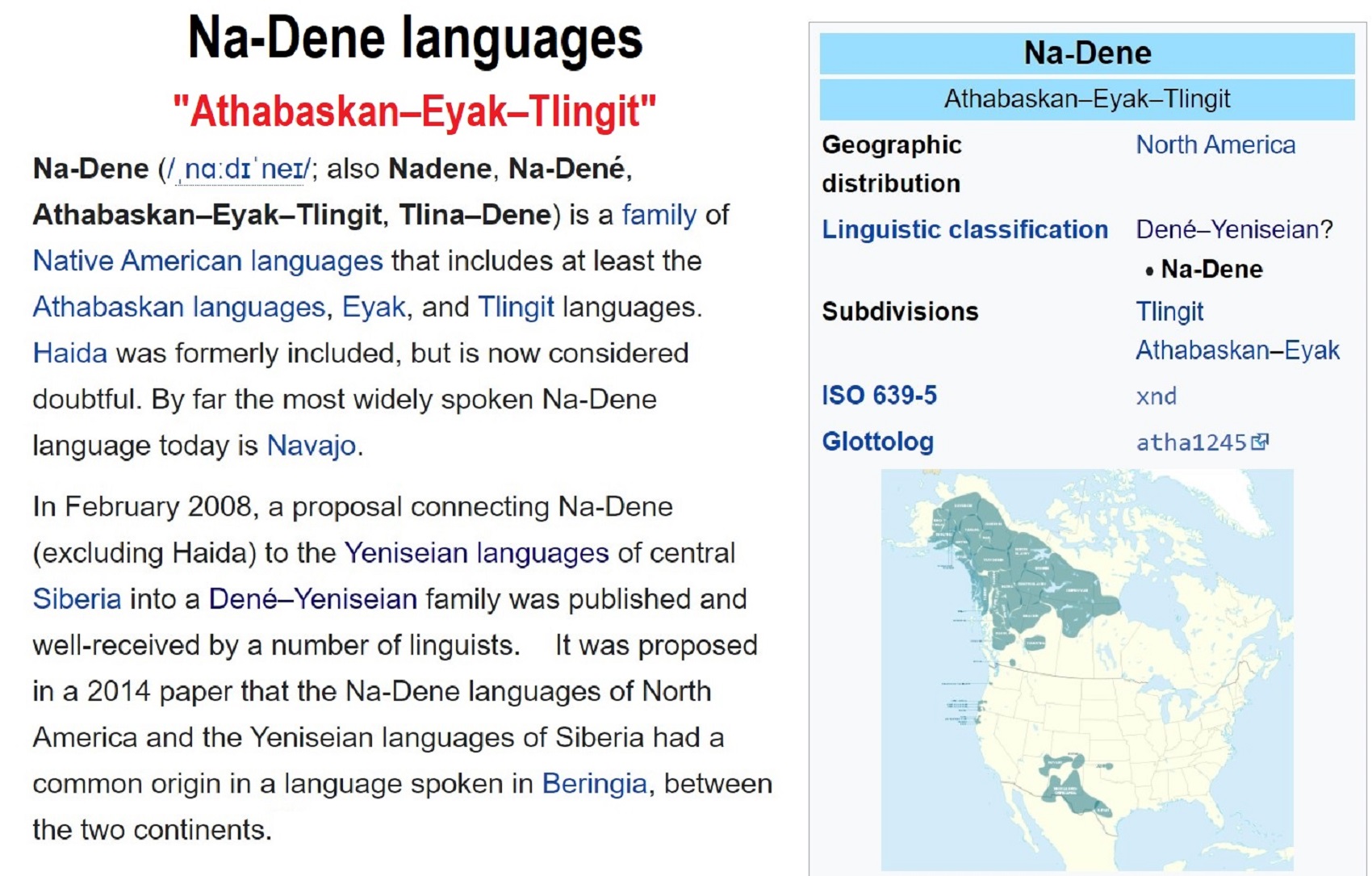

ref, ref, ref, ref, ref, ref, ref, ref, ref, ref, ref, ref, ref
Low Gods “Earth” or Tutelary deity and High Gods “Sky” or Supreme deity
“An Earth goddess is a deification of the Earth. Earth goddesses are often associated with the “chthonic” deities of the underworld. Ki and Ninhursag are Mesopotamian earth goddesses. In Greek mythology, the Earth is personified as Gaia, corresponding to Roman Terra, Indic Prithvi/Bhūmi, etc. traced to an “Earth Mother” complementary to the “Sky Father” in Proto-Indo-European religion. Egyptian mythology exceptionally has a sky goddess and an Earth god.” ref
“A mother goddess is a goddess who represents or is a personification of nature, motherhood, fertility, creation, destruction or who embodies the bounty of the Earth. When equated with the Earth or the natural world, such goddesses are sometimes referred to as Mother Earth or as the Earth Mother. In some religious traditions or movements, Heavenly Mother (also referred to as Mother in Heaven or Sky Mother) is the wife or feminine counterpart of the Sky father or God the Father.” ref
Tutelary deity
“A tutelary (also tutelar) is a deity or spirit who is a guardian, patron, or protector of a particular place, geographic feature, person, lineage, nation, culture, or occupation. The etymology of “tutelary” expresses the concept of safety and thus of guardianship. In late Greek and Roman religion, one type of tutelary deity, the genius, functions as the personal deity or daimon of an individual from birth to death. Another form of personal tutelary spirit is the familiar spirit of European folklore.” ref
High god: the Bird-God “Kutkh” on the right top of my art info sheet, that is the 7,000/6,000 years old I think “thunderbird god” in the Balkans relating to the north Aisins migrations and new culture/religion.
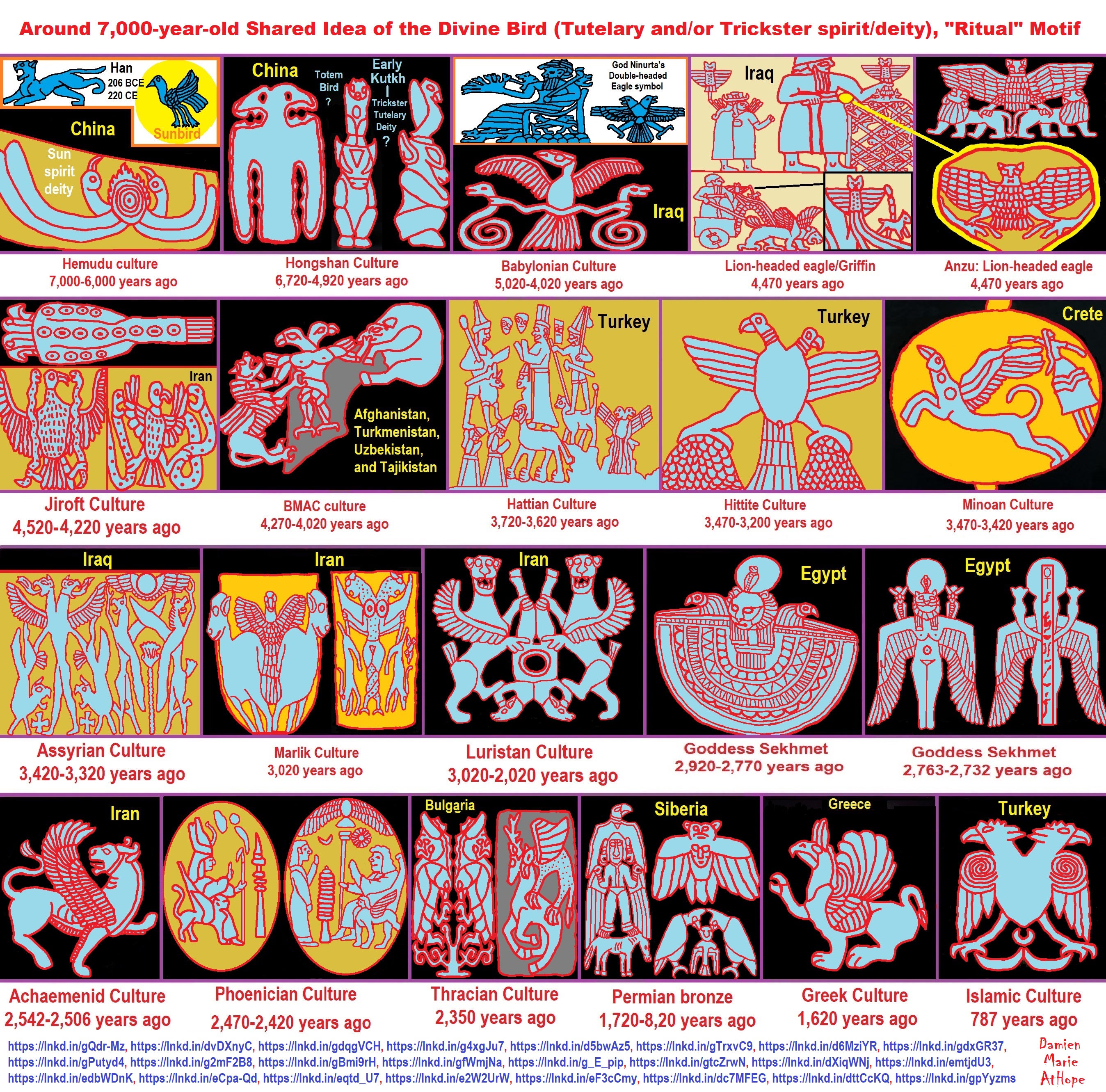
See the moon? As bull horns? I know you get it now?
Finally finished! A speculative reconstruction of the 1st c. AD funerary altar of the child Julia Victorina. The beautiful Ionic decorative scheme, with very specific spring flowers. So specific that I think they must have been individually colored. https://pic.twitter.com/VUsNP35MJ0

ref, ref, ref, ref, ref, ref, ref, ref, ref, ref, ref
Star Carr dating to around 10,770 – 10,460 year held an early proto-writing pendant. It is very similar to a number of other pendants from northern European sites, though its unique due to it being made from shale, where others are commonly made of amber. Research suggests two phases of markings on the pendant and possibly more than one artist. The markings may represent a tree, a map, a leaf, tally marks, even a wooden platform, which are found at Star Carr. ref, ref, ref
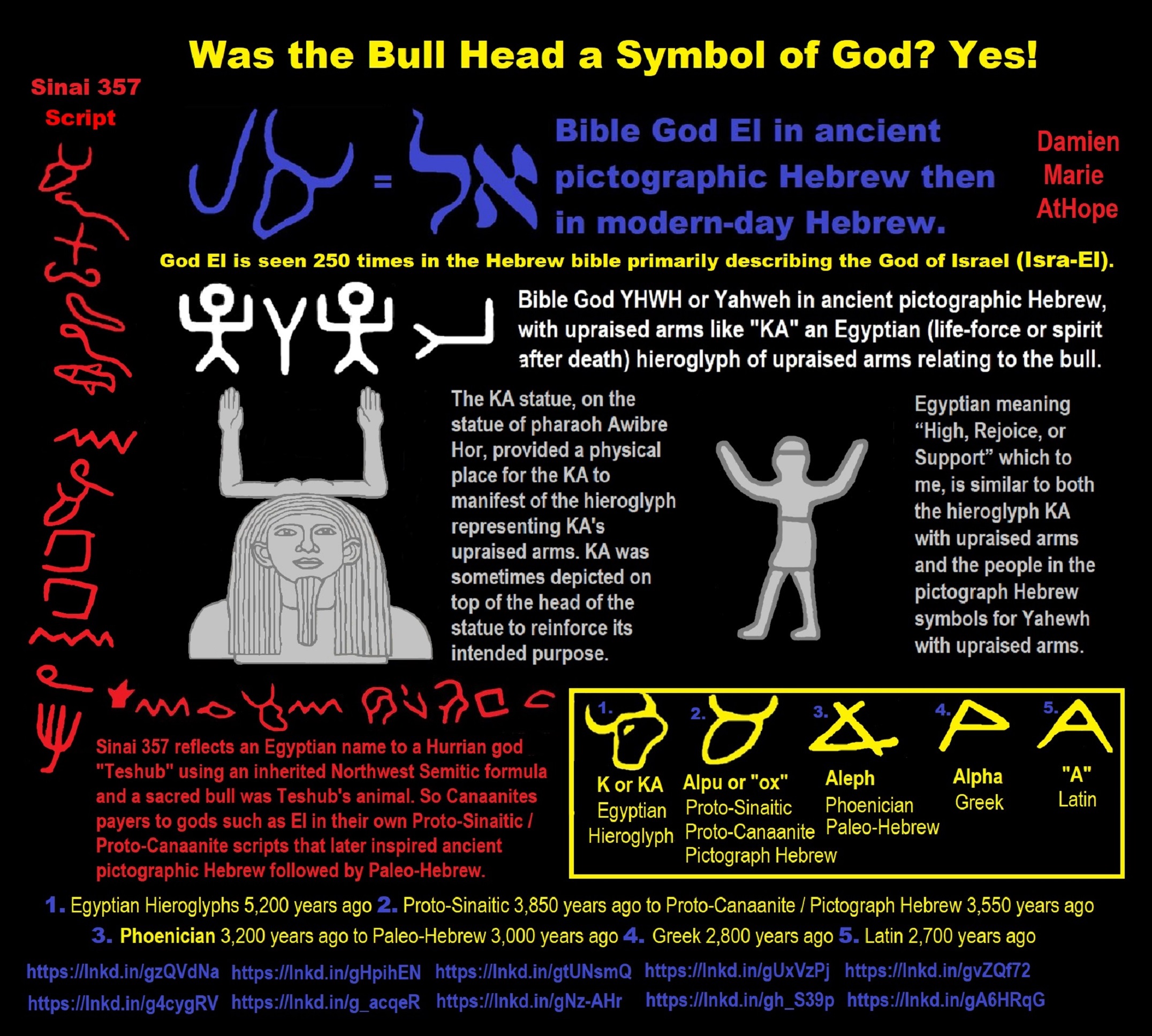

Women were the focus of religion, from at least around 35,000 years ago, until 2,000 years ago?
Roots of a changing early society 7,200-6,700 years ago Jordan and Israel
White (light complexion skin) Bigotry and Sexism started 7,000 years ago?
Understanding Proto-Indo-Europeans and Paganism Religions
Hunter-Gatherer/Indigenous Peoples Religiosity, Beliefs, and Practices
Why is it Often Claimed that Gods have a Gender?
Why are basically all monotheistic religions ones that have a male god?
Finland’s Horned Shaman and Pre-Horned-God at least 4,500 years ago?
Early Religions Thought to Express Proto-Monotheistic Systems around 4,000 years ago
Cracking the Code in Genesis 1:26?
Female Mystery ICONS “goddesses”
Here are my thoughts on the verse: “Genesis 1:26”
Then the bible God oddly said, Genesis 1:26 “Let us make mankind in our image, in our likeness, so that they may rule over the fish in the sea and the birds in the sky, over the livestock and all the wild animals, and over all the creatures that move along the ground.”
*I Would like to start in this part of the statement: “in our likeness, so that they may rule”
I see it as maybe relating to the how, at the agriculture revolution there was, to me, the birth of paganism an offshoot from shamanism-totemism seen in hunter-gathers before the Neolithic. I see this early paganism with male animal-familiar/consorts deities and female-human goddesses. To me, this early paganistic-shamanism theology evolved out of the shamanism thinking they originated from. Paganism: Goddesses around 12,000 years ago then Male Gods after 7,000 years ago.
Therefore as I see it most likely the mythology packet of goddess (once a special ancestor shaman?) and male animal-familiar/consorts deities (connecting to the preexisting Phallus Phenomena (A Bull Horn) and the Shamanism Phenomena beginning around 30,000 years ago and the Hunting Ancestor Cult of the Clan Leader/Special “MALE” Ancestor Totem Poles At Least 13,500 years ago), simply an evolution from the shaman who was generally a woman if we go by the archaeology record and the general theme accumulation once one fully understands shamanism historically early. Shaman burial in Israel 12,000 years ago and the Shamanism Phenomena and lets not forget 12,000 – 10,000 years old Shamanistic Art in a Remote Cave in Egypt or 9,000-8500 year old Horned Female shaman Bad Dürrenberg Germany.
According to Norse Mythology for Smart People, Odin, the father of the gods, who possesses numerous shamanic traits. Odin, the chief of the gods, is often portrayed as a consummate shamanic figure in the oldest primary sources that contain information about the pre-Christian ways of the Germanic peoples. His very name suggests this: “Odin” (Old Norse Óðinn) is a compound word comprised of óðr, “ecstasy, fury, inspiration,” and the suffix -inn, the masculine definite article, which, when added to the end of another word like this, means something like “the master of” or “a perfect example of.” The name “Odin” can therefore be most aptly translated as “The Master of Ecstasy.” The Germanic peoples, like other Indo-European peoples, originally had a three-tiered social/political hierarchy: the first tier consisted of rulers, the second of warriors, and the third of farmers and others occupied with production and fecundity. The gods and goddesses can be profitably mapped onto this schema, and Odin a war-god, along with Tyr, corresponds to the first tier, the rulers. ref, ref
Many of the greatest Germanic heroes, such as Starkaðr and the Volsung family, have enjoyed Odin’s patronage. He maintains particularly close affiliations with the berserkers and other “warrior-shamans” whose fighting techniques and associated spiritual practices center around achieving a state of ecstatic unification with certain ferocious totem animals, usually wolves or bears, and, by extension, with Odin himself, the master of such beasts. ref, ref
The eleventh-century historian Adam of Bremen confirms this when he translates “Odin” as “The Furious.” This establishes a link between Odin and the ecstatic trance states that comprise one of the defining characteristics of shamanism. And Odin’s shamanic spirit-journeys are well-documented. The Ynglinga Sagarecords that he would “travel to distant lands on his own errands or those of others” while he appeared to others to be asleep or dead. Another instance is recorded in the Eddic poem “Baldur’s Dreams,” where Odin rides Sleipnir, an eight-legged horse typical of northern Eurasian shamanism, to the underworld to consult a dead seeress on behalf of his son. Odin, like shamans all over the world, is accompanied by many familiar spirits, most notably the two ravens Hugin and Munin. ref, ref, ref
In shamanistic practices, the animal familiar is not a physical being at all, but a thought-form or spiritual entity. It often travels astrally (relating to, emanating from, or resembling the stars), or serves as a magical guardian against those who might try to psychically attack the shaman. In some Scandinavian countries, familiars were associated with spirits of the land and nature (later becoming earth and sky gods?). Fairies, dwarves, and other elemental beings were believed to inhabit the physical bodies of animals. ref
The shaman must typically undergo a ritual death and rebirth in order to acquire his or her powers, Shamanism in Seidr shows us that goddess Freya, one of the preeminent goddesses in Norse mythology was also a divine archetype of the völva, a practitioner of the Germanic magical tradition known as seidr mainly preformed by women (to me, Household Female Ancestor Cults relate to Household Mother Goddess Cults). A man who practiced seidr could expect to be labeled argr (Old Norse for “unmanly;” the noun form is ergi) by his peers – one of the gravest insults that could be hurled at a Germanic man. There were other forms of shamanism that were much more socially acceptable for men to practice. One of the central institutions of traditional Germanic society was the band of elite, ecstatic, totemistic warriors. ref
These were no ordinary soldiers; the initiation rituals, fighting techniques, and other spiritual practices of these bands were such that their members could be aptly characterized as “warrior-shamans.” The divine guide and inspiration of such men were the same as for the seidr-workers: Odin. The Ynglinga Saga has this to say about them: “Odin’s men went armor-less into battle and were as crazed as dogs or wolves and as strong as bears or bulls.” ref
In Catal Huyuk “first religious designed city” around 9,500 to 7,700 years ago (Turkey) who practiced this early paganism connected to shamanistic ‘Sky Burial’ theory and its possible origins at least 12,000 years ago to likely 30,000 years ago or older. Which is expressed in the pre-pottery “Neolithic Skull Cult” around 11,500 to 8,400 Years Ago. Moreover, at Catal Huyuk there was art of bulls and bears in religious iconography as well as what looks like hunting cult behavior with totemistic warrior-shaman early paganist males seen taunting and ritually playing with the horned animals likely in demonstrations of bravery. ref
*Bible-God oddly said, Genesis 1:26 “Let us make mankind in OUR image,
The Book of Psalms (Psalm 82:1), states “God (elohim) stands in the divine assembly; He judges among the gods (elohim)”. The meaning of the two occurrences of “elohim” has been debated by scholars, with some suggesting both words refer to Yahweh, while others propose that the God of Israel rules over a divine assembly of other Gods or angels. In the Hebrew Bible, there are multiple descriptions of Yahweh presiding over a great assembly of Heavenly Hosts. ref
The Old Testament description of the “divine assembly” all suggest that this metaphor for the organization of the divine world was consistent with that of Mesopotamia and Canaan. One difference, however, should be noted. In the Old Testament, the identities of the members of the assembly are far more obscure than those found in other descriptions of these groups, as in their polytheistic environment. Israelite writers sought to express both the uniqueness and the superiority of their God Yahweh, the Hebrew deity, Elohim (“gods”) and Adonai (“my lords”). ref
Archaic Sumerian, One of the first records of a divine council appears in the Lament for Ur, where the pantheon of Annunaki is led by An with Ninhursag and Enlil also appearing as prominent members. In the Old Babylonian pantheon, Samas (or Shamash) and Adad chair the meetings of the divine council. Akkadian, divine council was led by Anu, Ninlil, and Enlil. Marduk appears in the Babylonian Enûma Eliš as presiding over a divine council, deciding fates and dispensing divine justice. Canaanite, texts from Ugarit give a detailed description of the Divine Council’s structure of which El and Ba’al are presiding gods. ref
“Religion is an Evolved Product” and Yes, Religion is Like Fear Given Wings…
Atheists talk about gods and religions for the same reason doctors talk about cancer, they are looking for a cure or a firefighter talking about fires because they burn people and they care to stop them. We atheists too often feel a need to help the victim’s of mental slavery, held in the bondage that is the false beliefs of gods and the conspiracy theories of reality found in religions.
Understanding Religion Evolution:
- Pre-Animism (at least 300,000 years ago)
- Animism (Africa: 100,000 years ago)
- Totemism (Europe: 50,000 years ago)
- Shamanism (Siberia: 30,000 years ago)
- Paganism (Turkey: 12,000 years ago)
- Progressed organized religion (Egypt: 5,000 years ago), (Egypt, the First Dynasty 5,150 years ago)
- CURRENT “World” RELIGIONS (after 4,000 years ago)
- Early Atheistic Doubting (at least by 2,600 years ago)
“An Archaeological/Anthropological Understanding of Religion Evolution”
It seems ancient peoples had to survived amazing threats in a “dangerous universe (by superstition perceived as good and evil),” and human “immorality or imperfection of the soul” which was thought to affect the still living, leading to ancestor worship. This ancestor worship presumably led to the belief in supernatural beings, and then some of these were turned into the belief in gods. This feeble myth called gods were just a human conceived “made from nothing into something over and over, changing, again and again, taking on more as they evolve, all the while they are thought to be special,” but it is just supernatural animistic spirit-belief perceived as sacred.
Quick Evolution of Religion?
Pre-Animism (at least 300,000 years ago). So, it all starts in a general way with Animism (such as that seen in Africa: 100,000 years ago) (theoretical belief in supernatural powers/spirits), then this is physically expressed in or with Totemism (Europe: 50,000 years ago) (theoretical belief in mythical relationship with powers/spirits through a totem item), which then enlists a full-time specific person to do this worship and believed interacting Shamanism (beginning around 30,000 years ago in Siberia) (theoretical belief in access and influence with spirits through ritual), and then there is the further employment of myths and gods added to all the above giving you Paganism (beginning around 12,000 years ago in Turkey) (often a lot more nature-based than most current top world religions, thus hinting to their close link to more ancient religious thinking it stems from). My hypothesis is expressed with an explanation of the building of a theatrical house (modern religions development). Progressed organized religion (around 5,000 years ago as sen in Egypt) with CURRENT “World” RELIGIONS (after 4,000 years ago).
Historically, in large city-state societies (such as Egypt or Iraq) starting around 5,000 years ago culminated to make religion something kind of new, a sociocultural-governmental-religious monarchy, where all or at least many of the people of such large city-state societies seem familiar with and committed to the existence of “religion” as the integrated life identity package of control dynamics with a fixed closed magical doctrine, but this juggernaut integrated religion identity package of Dogmatic-Propaganda certainly did not exist or if developed to an extent it was highly limited in most smaller prehistoric societies as they seem to lack most of the strong control dynamics with a fixed closed magical doctrine (magical beliefs could be at times be added or removed). Many people just want to see developed religious dynamics everywhere even if it is not. Instead, all that is found is largely fragments until the domestication of religion.
Religions, as we think of them today, are a new fad, even if they go back to around 6,000 years in the timeline of human existence, this amounts to almost nothing when seen in the long slow evolution of religion at least around 70,000 years ago with one of the oldest ritual worship. Stone Snake of South Africa: “first human worship” 70,000 years ago. This message of how religion and gods among them are clearly a man-made thing that was developed slowly as it was invented and then implemented peace by peace discrediting them all. Which seems to be a simple point some are just not grasping how devastating to any claims of truth when we can see the lie clearly in the archeological sites.
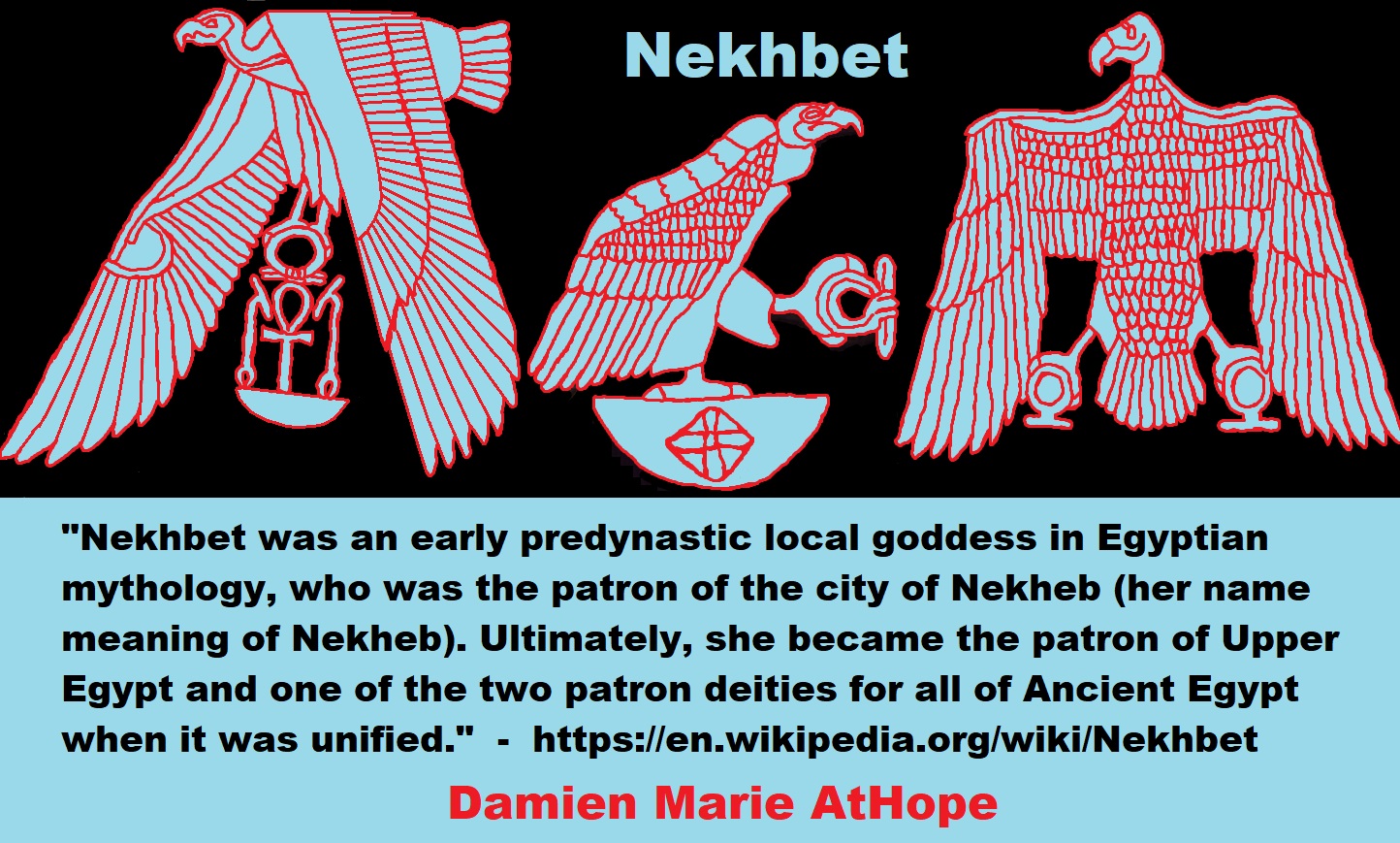
Heaven where the gods live?
Lenticular clouds are stationary clouds that form mostly in the troposphere, typically in parallel alignment to the wind direction.
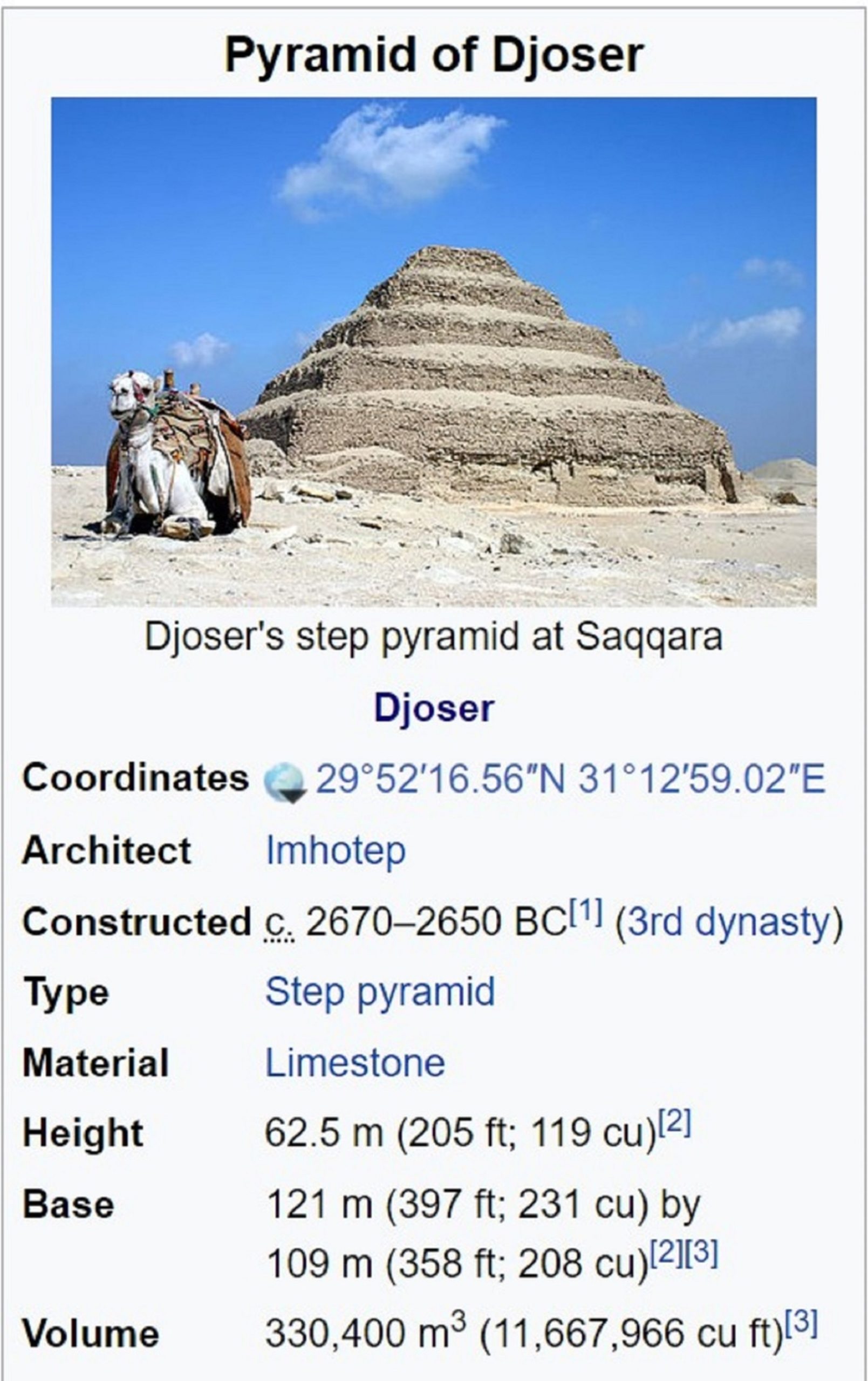
Pyramid of Djoser
“The Pyramid of Djoser (or Djeser and Zoser), or Step Pyramid, is an archaeological site in the Saqqara necropolis, Egypt, northwest of the city of Memphis. The 6-tier, 4-sided structure is the earliest colossal stone building in Egypt. It was built in the 27th century BCE during the Third Dynasty for the burial of Pharaoh Djoser. The pyramid is the central feature of a vast mortuary complex in an enormous courtyard surrounded by ceremonial structures and decoration.” ref
“The pyramid went through several revisions and redevelopments of the original plan. The pyramid originally stood 62.5 m (205 ft) tall, with a base of 109 m × 121 m (358 ft × 397 ft), and was clad in polished white limestone. The step pyramid (or proto-pyramid) was considered to be the earliest large-scale cut stone construction made by man as of 1997, although the nearby enclosure wall “Gisr el-Mudir” is suggested by some Egyptologists to predate the complex, and the South American pyramids at Caral are contemporary.” ref
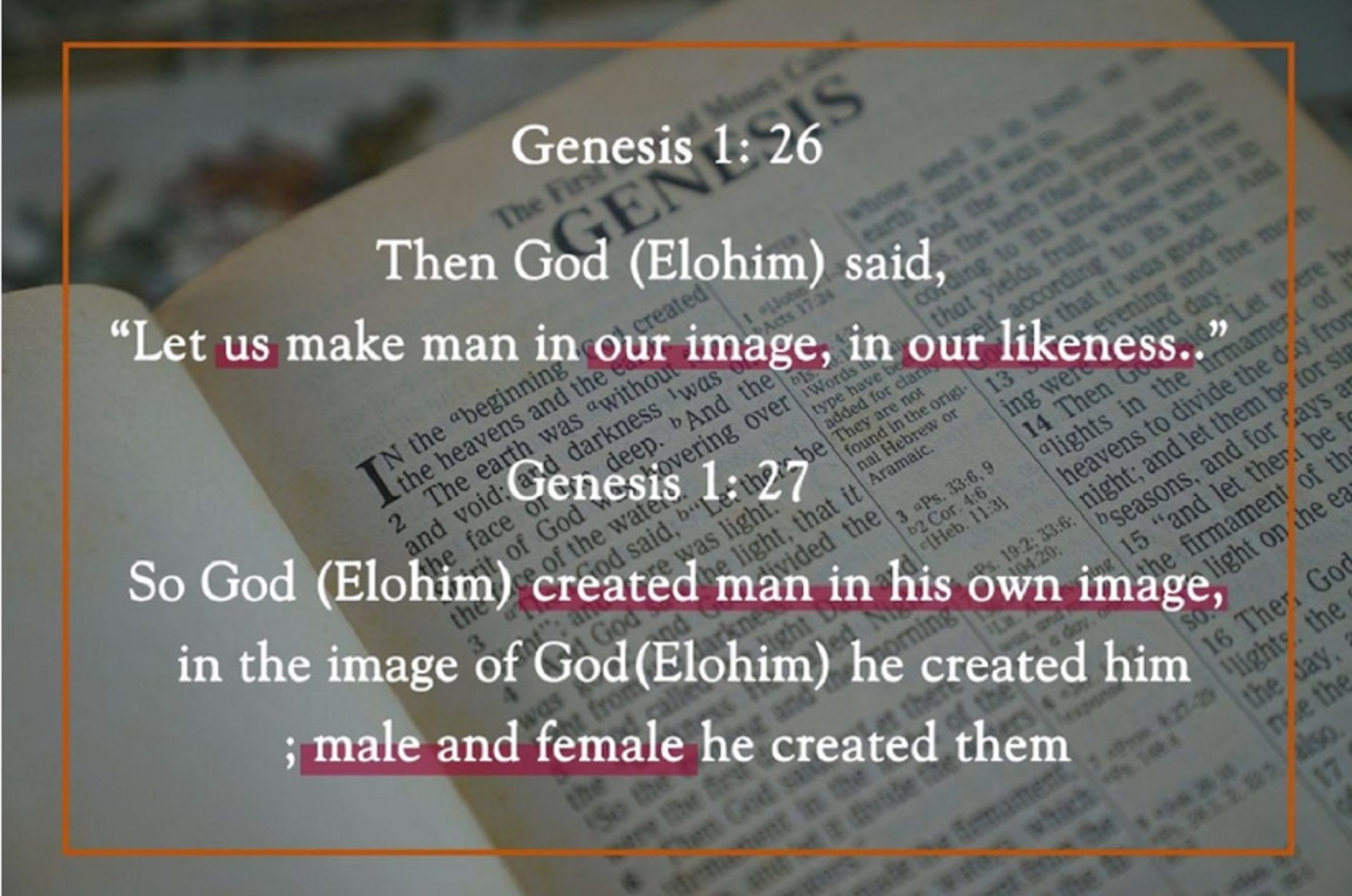
Jehovah? Jah-hovah/ Intersex “Two-Spirit” god?
Jehovah is the Romanization of Hebrew יְהֹוָה, a vocalization of the Tetragrammaton (YHWH, also transcribed Yahweh), the proper name of the God of Israel in the Hebrew Bible. The Jewish “Deity name Jehovah, is a compound of two words, viz of Jah (y, i, or j, Yôdh, the tenth letter of the alphabet) and hovah (Hâvah, or Eve),” says a Kabalistic authority, Mr. J. Ralston Skinner of Cincinnati, U.S.A. And again, “The word Jehovah, or Jah-Eve, has the primary meaning of existence or being as male female”. ref
Genesis, 26 in the IVth chapter of Genesis, reads “then believers in this religion to call upon the name of the Lord”, then began men to call themselves by the name of Jah-hovah” or males and females, which they had become after the separation of sexes. In fact the latter is described in the same chapter, when Cain (the male or Jah) “rose up against Abel, his (sister, not) brother and slew him”(spilt his blood, in the original). Genesis Chapter 5, the allegorical, anthropological, and where the Sons of God took as their wives the daughters of men or of the giants. ref
↑ Helena Petrovna Blavatsky, The Theosophical Glossary (Krotona, CA: Theosophical Publishing House, 1973), 163-164. ref
The primitive Jewish monotheism, of tribes that left from Mesopotamia, was not a monotheism founded on the belief in a universal God, God the Creator of all things, all beings, God of all men. Jehovah was [and is] the God of the followers of Abraham, a patriarch [chief of a clan] originating as far as anyone knows, the city of Ur, in Chaldea, ie, in Mesopotamia, a region that hosted the famous Babylon, current Iraq. The name of the “Jewish” people derives from the ancient name, Yah-oudi, applied to them and, in the begining – a name that was, for them, considered offensive! Yah-oudi can be understood as “Jeovitas” (Yah-ouvits, Jahouvists), “Jhaevoadianos” (Yah-oudians, Jahouvidians), “Jodhadious” or simply, followers of Jah-hovah. ref
The name Jehovah is the simplification from original word, that in hebrew (hebraic), is a composed word – Jah-hovah: JAH or JOD or – even – YOD, that means phallus, penis, male: “The Hebrew letter Jod membrum represented the virile.” Hovah means vessel (container, receptacle), cavity, a shell – (like a marine shell, a conch). It is female (and, later, it gained another synonymous, the word “vagina”, from Latin – that means sheath. Thus, It is a metaphor related to the fact or gestural of the warriors of keeping or put his sword in the sheath or in vagina, (a case, a holster). ref

El-Shaddai (“God/Goddess of the Breast(s)” and/or “God of the mountain(s)”) asked Known as Yahweh the Intersex “Two-Spirit” god?
The rise of Gods as well as Men and the Lowering of Goddess as well as Women/Two-Spirited
What Yahweh explains is that, in the past, he had only made himself known to Abraham, Isaac, and Jacob as El-Shaddai, In Hebrew the word שד shad means “breast.” The noun itself is masculine in form even though it refers only to female breasts. Shaddai comes from the word which means “breast” or “mountain”, thus El-Shaddai means “God of Breast(s)” and/or “God of the mountain(s).” Early Israelite religion may once have shared the Canaanite belief in El and other gods, before the Jewish monotheistic tradition emerged. And Canaanite religion seems to have involved a rich mythological tradition which served as a bridge between the more ancient Mesopotamian religions and the later Greek and Roman gods. The supreme deity of the Canaanite pantheon was El, together with his consort, Asherah.
The Canaanite pantheon was conceived as a divine clan, headed by the supreme god El; the gods collectively made up the elohim. Some of the related referenced deities are Anat—goddess of war, ever-virgin sister-wife of Baal, honored as a protector, agent of vengeance, and bearer of life and sometimes referred to as the Queen of Heaven.A Jewish inscription from the post-Babylonian period in Elephantine, Egypt, honors a goddess called Anat-Yahu (Anat-Yahweh). Like Inanna in the ancient Epic of Gilgamesh, ‘Anat complains to El and threatens the old father of the gods himself if he does not allow her to take vengeance on Aqhat. El concedes. ref, ref
Genesis 17:1, “And when Abram was ninety years old and nine, the LORD appeared to Abram, and said unto him, I am El Shaddai; walk before me, and be thou perfect.”
Genesis 35:11 God says to Jacob, “I am El Shaddai: be fruitful and multiply; a nation and a company of nations shall be of thee, and kings shall come out of thy loins”.
Exodus 6:2–3, (the bible God supposedly did not make himself fully known to (Abraham, Isaac, and Jacob) Shaddai the God known to Abraham, Isaac, and Jacob, thus associated in tradition with Abraham, the inclusion of the Abraham stories into the Hebrew Bible may have brought the northern name with them.
The name Shaddai (Hebrew) is often used in parallel to El later in the Book of Job.It has been speculated that the tell in Syria called Tell eth-Thadeyn (“tell of the two breasts”) was called Shaddai in the Amorite language. There was a Bronze-Age city in the region called Tuttul, which means “two breasts” in the Sumerian language. It has been conjectured that El Shaddai was, therefore, the “God of Shaddai” and that the inclusion of the Abrahamic stories into the Hebrew Bible may have brought the northern name with them (see Documentary hypothesis). ref
A Strange 3,000-year-old picture of god, his penis and his wife depicted by early Jews found at Kuntillat Ajrud dated to the late ninth century or early eighth century B.C.E. in the Sinai could Undermine the Entire Idea of Judaism monotheism. Well, it seems so that for early Jews at least “the Lord our God” wasn’t “one God.” He may have even had a wife, going by the completely unique “portrait” of the Jewish deity that archaeologists found at the site, which may well be the only existing depiction of YHWH.
An Asherah pole is a sacred tree or pole that stood near Canaanite religious locations to honor the Ugaritic mother-goddess Asherah, consort of El. The relation of the literary references to an asherah and archaeological finds of Judaean pillar-figurines has engendered a literature of debate. The asherim were also cult objects of worship of the fertility goddess Asherah, the consort of either Ba’al or, as inscriptions from Kuntillet ‘Ajrud and Khirbet el-Qom attest, Yahweh, and thus objects of contention among competing cults. ref, ref
Yahweh was the national god of the Iron Age kingdoms of Israel (Samaria) and Judah. His exact origins are disputed, although they reach back to the early Iron Age and even the Late Bronze: his name may have begun as an epithet of El, head of the Bronze Age Canaanite pantheon, but the earliest plausible mentions of Yahweh are in Egyptian texts that refer to a similar-sounding place associated with the Shasu nomads of the southern Transjordan. ref
Was Elohim of Gen.1:26-27 both male and female?
It is widely recognized that Genesis contains two, very different, creation accounts; for example:
- The creator is identified as Elohim in the Cosmic Creation story (Gen.1:1-2:3) and Yahweh in the Garden of Eden story (starting at Gen.2:4).
- Elohim and ‘adam are both spoken of as plural in the first, whereas Yahweh and ‘adam are singular in the second.
- ’adam is differentiated as zakar and nĕqebah in Gen.1 (male/female) and ‘ish and ‘ishshah in Gen.2 (man/woman).
- Male and female are each created in the creators’ image in the first, and the second emphasizes the man and woman’s likeness to each other.
Because of these and other differences, critical scholars suggest the two accounts preserve distinct creation traditions within the development of the text. Both stories could be fully explored for hints about God’s gender – the Jewish mystical tradition, for example, opens an interesting possibility for thinking YHWH a dual-gender deity. But for this question, examining ‘Elohim in plurality’ in Gen.1:26-27 is highly suggestive: “Let us make man in our image, according to our likeness.” This plurality is also present in Gen.3:22, Gen.11:7, and Is.6:8. ref
There’s no avoiding that ‘image’ (tselem) and ‘likeness’ (dĕmuwth) allude in some concrete sense to Elohim’s bodily form as the divine pattern after which the male and female humans were modelled (Gen.5:3 and 9:6 suggest the same).1 This parallels the more common use of tselem for sculpted idols (or in Ez.23:14, a painting) where the image’s only physical quality is its presumed resemblance to the original; e.g. bronze Baal, terracotta Asherah, golden calf. Verse 27 therefore describes the images of Elohim as male and female, referring to their physical sex, not masculine and feminine (gender) or some other abstract quality. Centuries later, when the bodily, predominantly male descriptions of God in the Hebrew Bible were increasingly viewed as theological metaphor, God could be conceived as transcending body, sex, and more recently, gender. But within the earlier worldview, and given the Hebrew Bible’s almost exclusive presentation of God as a male figure, the ’image and likeness of God’ implies ‘of the male sex’. After whom, then, is the female human modeled? As the OP observes, this is a genuine challenge of this text. ref
Various theories for ‘Elohim in plurality’ are posited, some of them theological and anachronistic (e.g. Trinitarian foreshadowing). The word elohim referred to ‘the gods’, as it did in hundreds of other Hebrew Bible verses. Nothing in the text specifies elohim is the Israelite/Judahite god, and a generic word may have been chosen deliberately for its universality. The plural elohim recalls the pantheons of other ancient Near East religions which included both male and female deities who could function here as the divine models for the male and female human images. This would make Gen.1 a thoroughly polytheist creation story, perhaps a foreign story told for contrast to the Yahwist story it precedes (i.e. myth/anti-myth). However, if this reading reflects a very early tradition, it is unlikely to have been shared by later priestly redactors who included this beautifully-crafted story without critique. ref
Elohim (the traditional Israelite god) speaking on behalf of a ‘heavenly court:
Psalm 82 “For a long time I have kept silent, I have been quiet and held myself back. But now, like a woman in childbirth, I cry out, I gasp and pant.”
God presides in the great assembly; he renders judgment among the “gods”
Gen.1:26: “God speaks as the Creator-King, announcing his crowning work to the members of his heavenly court.” Elohim speaking on behalf of a ‘divine council’ and the mythic motif of the heavenly court pre-dates ancient Israel. In Canaanite religion, El was the chief of the elohim, the gods. Like other ancient Near East pantheons, Canaan’s elohim included males and females: e.g. Asherah, Baal, Astarte, and other gods known to Bible readers as Yahweh’s primary rivals prior to the Exile. Many scholars suggest that as heterodox Yahwism grew in prominence, it assimilated the titles, names, attributes, symbols, and mythology of El and competing cults, including the very names El and ‘sons of elohim’ (El’s divine council of 70 gods and goddesses) and eventually aspects of the dying goddess religions as well.5 It likely took centuriesfor Judaism’s increasingly exclusive monotheism and increasingly desexualized divinity to emerge from poly- and heno-theist predecessors. ref
At an interim step in this development – before the full flowering of exclusive monotheism – Elohim could be seen to speak on behalf of a council that included the divine daughters and sons of Elohim, as suggested in Gen.6:4, Dt.32:8, Ps.29:1, and Jb.1:6 and 28:7. Gen.1 is widely believed to have been written before the 2,500 years ago, before Elohim’s divine council (option 3) was ‘demoted’, in the interpretation of some readers, to the status of non-divine heavenly court (option 2) after the expansion of angelology in late- and post-biblical Judaism.7 According to this view, the male and female humans of Gen.1 were fashioned after male and female members of Elohim’s divine council. ref
Could it be that it is referring to Elohim speaking on behalf of himself and a female consort (Asherah). As mentioned, Canaan’s pantheon was composed of the 70 children of El; their mother was Asherah. Like its neighbors, Canaan was represented by a divine couple, El and Asherah, his consort. Together they were co-creators in Canaan’s creation story. There is ample biblical evidence for the Asherah cult in Israel/Judah – 40 mentions in nine books – including the installation of her statue in Yahweh’s temple in Jerusalem (2Ki.21:7). Evidence including inscriptions and thousands of terracotta figurines likely bearing her image, suggests Asherah was venerated in the folk cults of Israel/Judah from the 3,000 – 2,600 years ago and was, for long periods, also part of its official religion as Yahweh’s consort. Asherah worship was purged with the emergence of monotheistic Judaism after the Exile, but 5th century papyri indicate Anat-Yahu, another wife or consort of Yahweh, was worshiped by Judahite exiles in a Yahweh temple in Egypt. ref
Interpretations of the image of God, therefore, may swing between two extremes: the absolute, literal, physical resemblance, which seems to be supported in Genesis 5:1-3 where the image of God is clearly paralleled with Seth as the image of his father, Adam; and over against this, the necessary spiritual interpretation supported by Jesus’ classic definition of God, namely, that ‘God is spirit’.” ‘Image of God’, International Standard Bible Encyclopedia. The word elohim is always plural; in fact, the KJV translates elohim as ‘gods’ 244 times. But when it refers to the primary god of Israel/Judah, English translators follow the LXX model and render it as capital-G ‘God’ (2,346 times), which is also the English word they use for El (213 times) and Eloah (52 times). The Hebrew text retains the original. ref
“Genesis 1:26” Then the bible God is reported to have said,
*So that they may rule over the fish in the sea,
(could be fish associated cult of god Dagon, Dagun; or Dagan is an ancient Mesopotamian, Sumerian, Phoenician, and ancient Canaanite deity. An Assyro-Babylonian inscription as a powerful and warlike protector, sometimes equated with Enlil. Enlil appears to have been worshipped as a fertility fish god and Athirat, “walker of the sea”, Mother Goddess, and wife of El). ref
“Genesis 1:26” Then the bible God is reported to have said,
*And the birds in the sky,
(possibly referring to sky burial/star worship-Elite Clan Ancestor worship, with similar DNA observed among Canaanite commoners and their elites, as seen in a 3,600-year-old burial chamber some holding “abstract bird motifs” in northern Israel and the ancient Canaanite city-state of Megiddo “Tell el-Mutesellim” that contained an unprecedented number of monuments, including palaces, temples, and city walls dating from around 5,300-2,586 years ago), ref
“Genesis 1:26” Then the bible God is reported to have said,
*And over the livestock,
(bull-horned animal/goddesses or gods, such as the many hornd goddeses on Canaan, Egypt or Mesopotamian or Ēl, Dagnu (that is Dagon), and Ba’l Ṣapān, that is the god Haddu or Hadad, the epithet ‘ôlam appearing in Hebrew form in the Hebrew name of God ’ēl ‘ôlam “God Eternal” in Genesis 21.33. He is ḥātikuka (“your patriarch”). Patriarch in this context is a male ancestor, who exercised autocratic authority as a pater familias over an extended family. “El” Father of Heaven / Saturn and his major son: “Hadad” Father of Earth / Jupiter, are symbolized both by the bull, and both wear bull horns on their headdresses, called again and again Tôru ‘Ēl “Bull Ēl” or “the bull god”. Or called bātnyu binwāti “Creator of creatures”, ’abū banī ’ili “father of the gods”, and ‘abū ‘adami “father of man”). ref
“Genesis 1:26” Then the bible God is reported to have said,
*And all the wild animals,
(could it be the likes of some wild male fertility gods (Pan) whose earliest appearance in literature, Pindar’s Pythian Ode iii. 78, is associated with a mother goddess, perhaps Rhea or Cybele; Pindar refers to maidens worshiping Cybele and Pan near the poet’s house in Boeotia. Pan is famous for his sexual powers and is often depicted with a phallus. The constellation Capricornus is traditionally depicted as a sea-goat, a goat with a fish’s tail (see “Goatlike” Aigaion called Briareos, one of the Hecatonchires). A myth reported as “Egyptian” in Hyginus‘ Poetic Astronomy that would seem to be invented to justify a connection of Pan with Capricorn says that when Aegipan like Pan in his goat-god aspect — was attacked by the monster Typhon, he dove into the Nile; the parts above the water remained a goat, but those under the water transformed into a fish. ref
Pan is often represented as a satyr, half-goat and half man — with cloven hooves and a goat’s tail. Pan was known to Jews of Jesus’ day. In fact, there was a shrine to Pan, called Banias, located on the slopes of Mount Hermon in northern Israel. A spring there is considered to be the headwaters of the River Jordan. An ancient Egyptian god Min, whose cult originated in the predynastic period (6,000- 5,000 years aago). He was represented in many different forms, but was most often represented in male human form, shown with an erect penis which he holds in his left hand and an upheld right arm holding a flail. As Khem or Min, he was the god of reproduction; as Khnum, he was the creator of all things, “the maker of gods and men”.
Psalm 75:10 “I will cut off the horns of all the wicked, but the horns of the righteous will be lifted up.” Then there is The Egyptian god Ammon-Ra was depicted with ram horns. Rams were considered a symbol of virility due to their rutting behavior. In Revelation 12: 3-9, the devil referred to as a red dragon with seven heads, 10 horns and seven crowns. Or possibly relating to North African ram-shaped oracle god whose name is unknown, but possibilities are “Baal Hamon – Phoenician / Carthaginian” was worshiped by Libyan tribes at Siwa. The figure was incorporated by the Egyptians into depictions of their god Amun that’s considered an “Interpretatio graeca” of the Greek Zeus-Ammon.
Or it could be a reference to animal sacrifice as seen at the site of Tell el-Safiad that held the remains of donkeys, as well as some sheep and goats in Early Bronze Age layers, dating to 4,900 years ago. which were imported from Egypt in order to be sacrificed. One of the sacrificial animals, a complete donkey, was found beneath the foundations of a building, leading to speculation this was a ‘sacred foundation deposit” ritual placed before the building of a residential house. Canaanite deities such as Baal were represented by figures which were placed in shrines often on hilltops, or ‘high places’ surrounded by groves of trees, such as is condemned in the Hebrew Bible, in Hosea (13 1-6 “Men who sacrifice”, leads to wild sinful behavior, which would probably associate hold the Asherah pole, and standing stones or pillars “possible phallic symbolism”). ref, ref, ref, ref
“Genesis 1:26” Then the bible God is reported to have said,
*And over all the creatures that move along the ground,
(Snake = life and death fertility cults. Ancient Egyptians worshiped snakes, especially the cobra. The cobra was not only associated with the sun god Ra, but also many other deities such as Wadjet, Renenutet, Nehebkau, and Meretseger. Serpents could also be evil and harmful such as the case of Apep and Set. Referenced in the Book of the Dead, in which Spell 39 was made to help repel an evil snake in the underworld. “Get back! Crawl away! Get away from me, you snake! Go, be drowned in the Lake of the Abyss, at the place where your father commanded that the slaying of you should be carried out.” Wadjet was the patron goddess of Upper Egypt, and was represented as a cobra with spread hood, or a cobra-headed woman. She later became one of the protective emblems on the pharaoh’s crown once Upper and Lower Egypt were united. She was said to ‘spit fire’ at the pharaoh’s enemies, and the enemies of Ra. Sometimes referred to as one of the eyes of Ra, she was often associated with the lioness goddess Sekhmet, who also bore that role.
On both Ancient Mesopotamians and Semites, believed that snakes were immortal because they could infinitely shed their skin and appear forever youthful, appearing in a fresh guise every time. The Sumerians worshiped a serpent god named Ningishzida. Before the arrival of the Israelite’s, snake cults were well established in Canaan in the Bronze Age, such as serpent cult objects found relating to Bronze Age strata at several pre-Israelite cities in Canaan: two at Megiddo, one at Gezer, one in the sanctum sanctorum of the Area H temple at Hazor, and two at Shechem. In ancient Mesopotamia, Nirah, the messenger god of Ištaran, was represented as a serpent on kudurrus, or boundary stones. Representations of two intertwined serpents are common in Sumerian art and Neo-Sumerian artwork and still appear sporadically on cylinder seals and amulets until around 3,200 – 3,300 years ago.
The horned viper (Cerastes cerastes) appears in Kassite and Neo-Assyrian kudurrus and is invoked in Assyrian texts as a magical protective entity. A dragon-like creature with horns, the body and neck of a snake, the forelegs of a lion, and the hind-legs of a bird appears in Mesopotamian art from the Akkadian Period until the Hellenistic Period (2,323 –2,031 years ago). This creature, known in Akkadian as the mušḫuššu, meaning “furious serpent”, was used as a symbol for particular deities and also as a general protective emblem.It seems to have originally been the attendant of the Underworld god Ninazu, but later became the attendant to the Hurrian storm-god Tishpak, as well as, later, Ninazu’s son Ningishzida, the Babylonian national god Marduk, the scribal god Nabu, and the Assyrian national god Ashur.
In the surrounding region, serpent cult objects figured in other cultures. A late Bronze Age Hittite shrine in northern Syria contained a bronze statue of a god holding a serpent in one hand and a staff in the other. Around 2,600-2,700 years ago Babylon a pair of bronze serpents flanked each of the four doorways of the temple of Esagila. At the Babylonian New Year’s festival, the priest was to commission from a woodworker, a metalworker, and a goldsmith two images, one of which “shall hold in its left hand a snake of cedar, raising its right [hand] to the god Nabu”. At the tell of Tepe Gawra, at least seventeen Early Bronze Age Assyrian bronze serpents were recovered.).
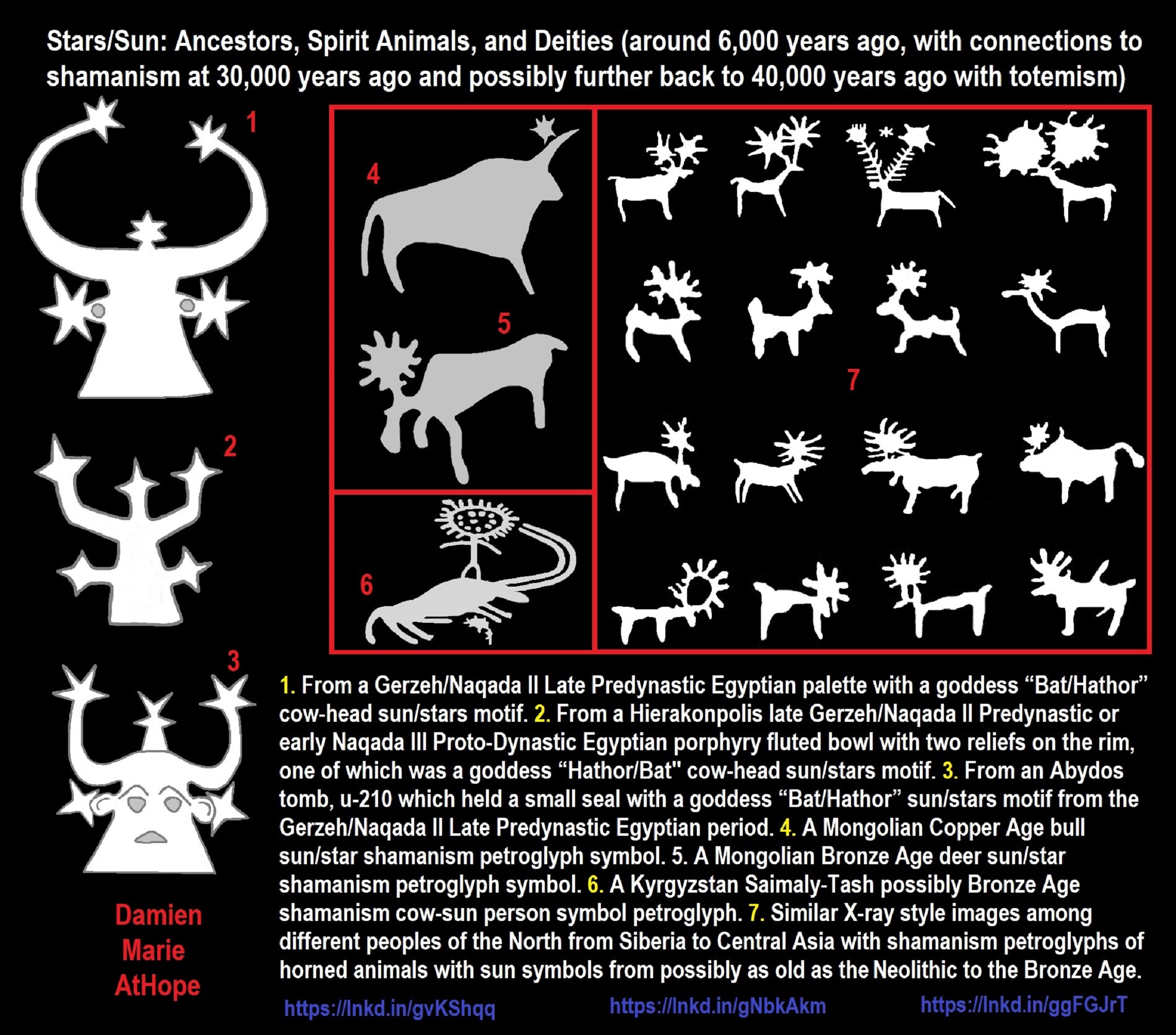
- From a Gerzeh/Naqada II Late Predynastic Egyptian palette with a goddess “Bat/Hathor” cow-head sun/stars motif.
- From a Hierakonpolis late Gerzeh/Naqada II Predynastic or early Naqada III Proto-Dynastic Egyptian porphyry fluted bowl with two reliefs on the rim, one of which was a goddess “Hathor/Bat” cow-head sun/stars motif.
- From an Abydos tomb, u-210 which held a small seal with a goddess “Bat/Hathor” sun/stars motif from the Gerzeh/Naqada II Late Predynastic Egyptian period.
- A Mongolian Copper Age bull sun/star shamanism petroglyph
- A Mongolian Bronze Age deer sun/star shamanism petroglyph symbol.
- A Kyrgyzstan Saimaly-Tash possibly Bronze Age shamanism cow-sun person symbol petroglyph.
- Similar X-ray style images among different peoples of the North from Siberia to Central Asia with shamanism petroglyphs of horned animals with sun symbols from possibly as old as the Neolithic to the Bronze Age. ref, ref, ref
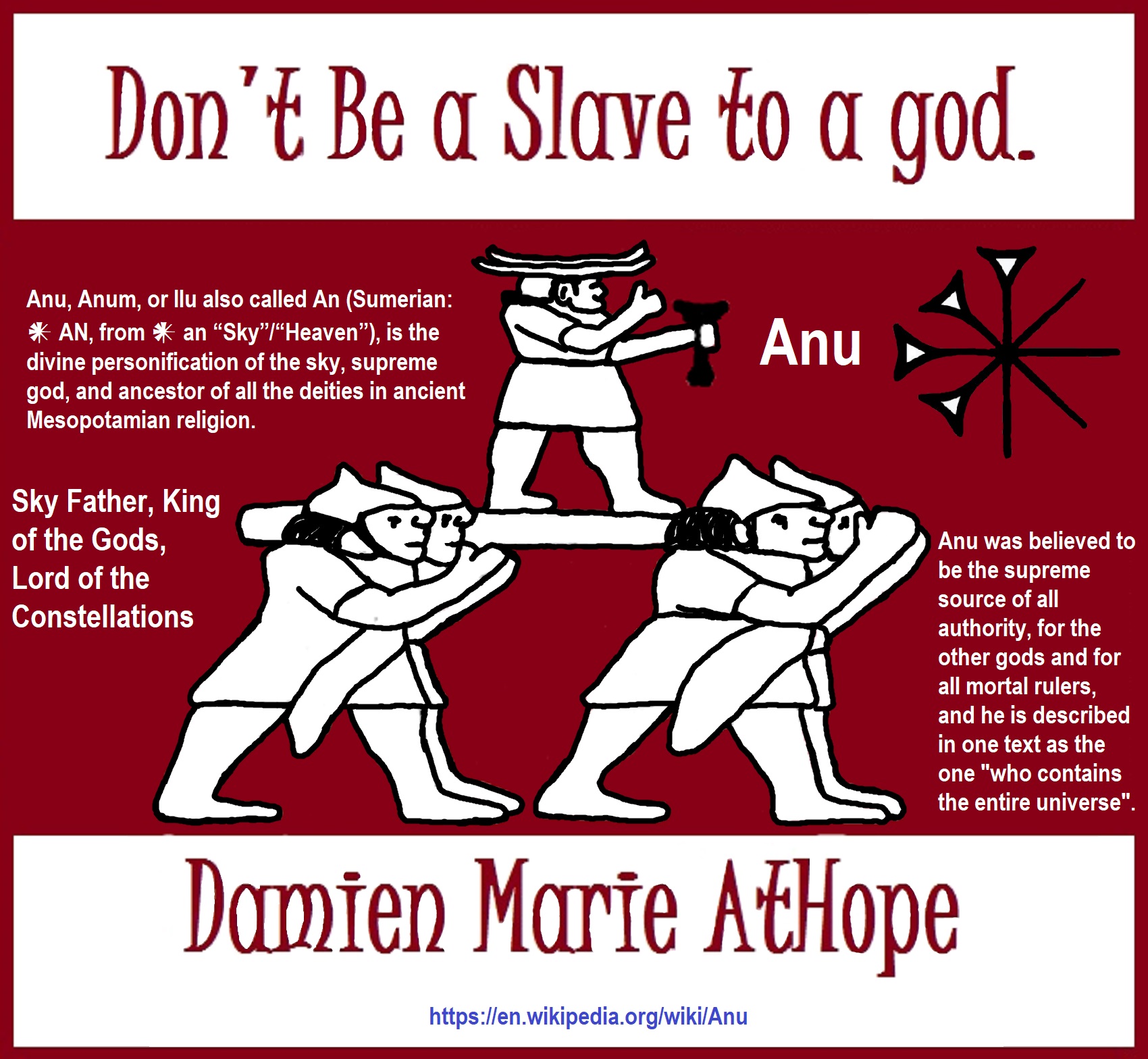
Did a 4,520–4,420-year-old Volcano In Turkey Inspire the Bible God?
The First Expression of the Male God around 7,000 years ago?
A First Male expression of a god?
I think so, and we see a lowering of the goddess that came before, as I believe, he now sits on her old birthing stool of power (sacred throne). To me, this represents the male and female duality and the first possible god sitting on a birthing stool to signify the male on the throne previously reserved only for women. I think the bent arms of both may possibly signify metaphoric “Bull Horns.” Part of the Hamangia culture (Romania and Bulgaria) between the Danube and the Black Sea and Muntenia in the south.
- (Magdalenian/Iberomaurusian) Connections to the First Paganists of the early Neolithic Near East
- Paganism: Goddesses around 12,000 years ago then Male Gods after 7,000 years ago
The Hamangia culture began around 7,250-7,200 years ago and lasted until around 6,550-6,500 years ago It was absorbed by the expanding Boian culture in its transition towards the Gumelnitsa. Its cultural links with Anatolia suggest that it was the result of a settlement by people from Anatolia, unlike the neighboring cultures, which appear descended from an earlier Neolithic settlement. ref
Goddess relating to the three realms: heaven, earth, and the underworld.
I surmise that there is an expression in goddess representation that relates to the three realms sky goddess with the upturned arms relating to the waxing crescent, the fat sitting goddess is a representation to the full moon and the arms turned down are a representation of the waning crescent. And it this way both up and down arms represent metaphorical bullhorns and why goddesses are associated with bulls or as bulls. Especially, with paganism.
My Thought on the Evolution of God?
Animal protector deities from old totems/spirit animal beliefs come first to me, 13,000/12,000 years ago, then women as deities 11,000/10,000 years ago, then male gods around 7,000/8,000 years ago. Then Moralistic gods around 5,000/4,000 years ago.
Several Kemetuic statuettes of goddesses with vulture-shaped heads and upraised arms are known from around 6,200-5,400 years ago. Ancient ivory amulet of a bearded man “phallus” from the Gerzeh culture. ref
The Colossus of Min Dynasty 0 (around 5,300 years ago). This big statue (in brown) is one of a pair found in the re-mains of the temple in Coptos in Upper Egypt. ref
Nagada, also known as Naqada, is the type site of the prehistoric Egyptian Amratian culture (“Naqada I”), Gerzeh culture (“Naqada II”), and Naqada III (“Dynasty 0”) predynastic cultures. Naqada existed before and during the union of Upper Egypt and Lower Egypt, the Naqada III or “protodynastic” period. The process of unification apparently started from Nagada. ref
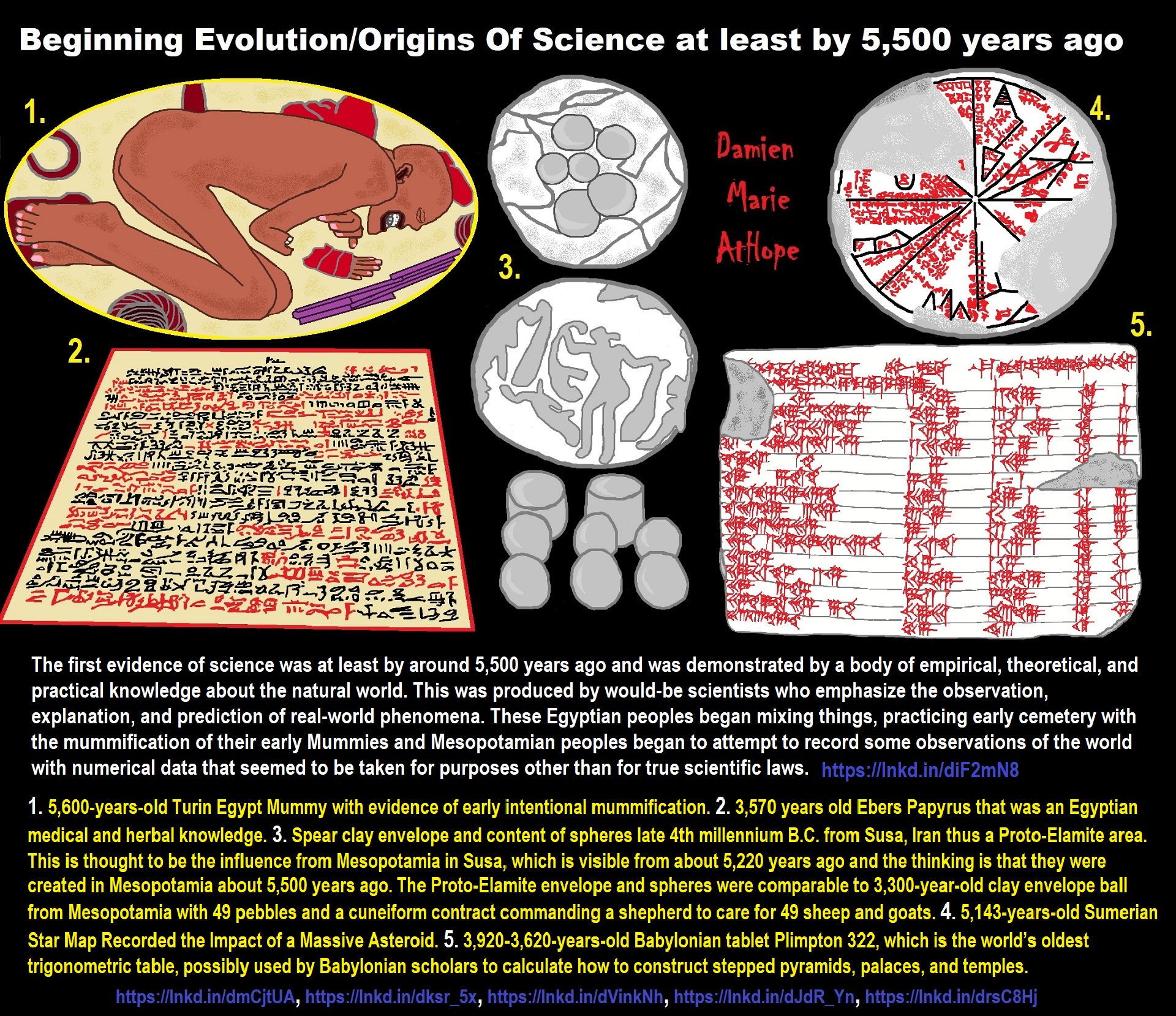
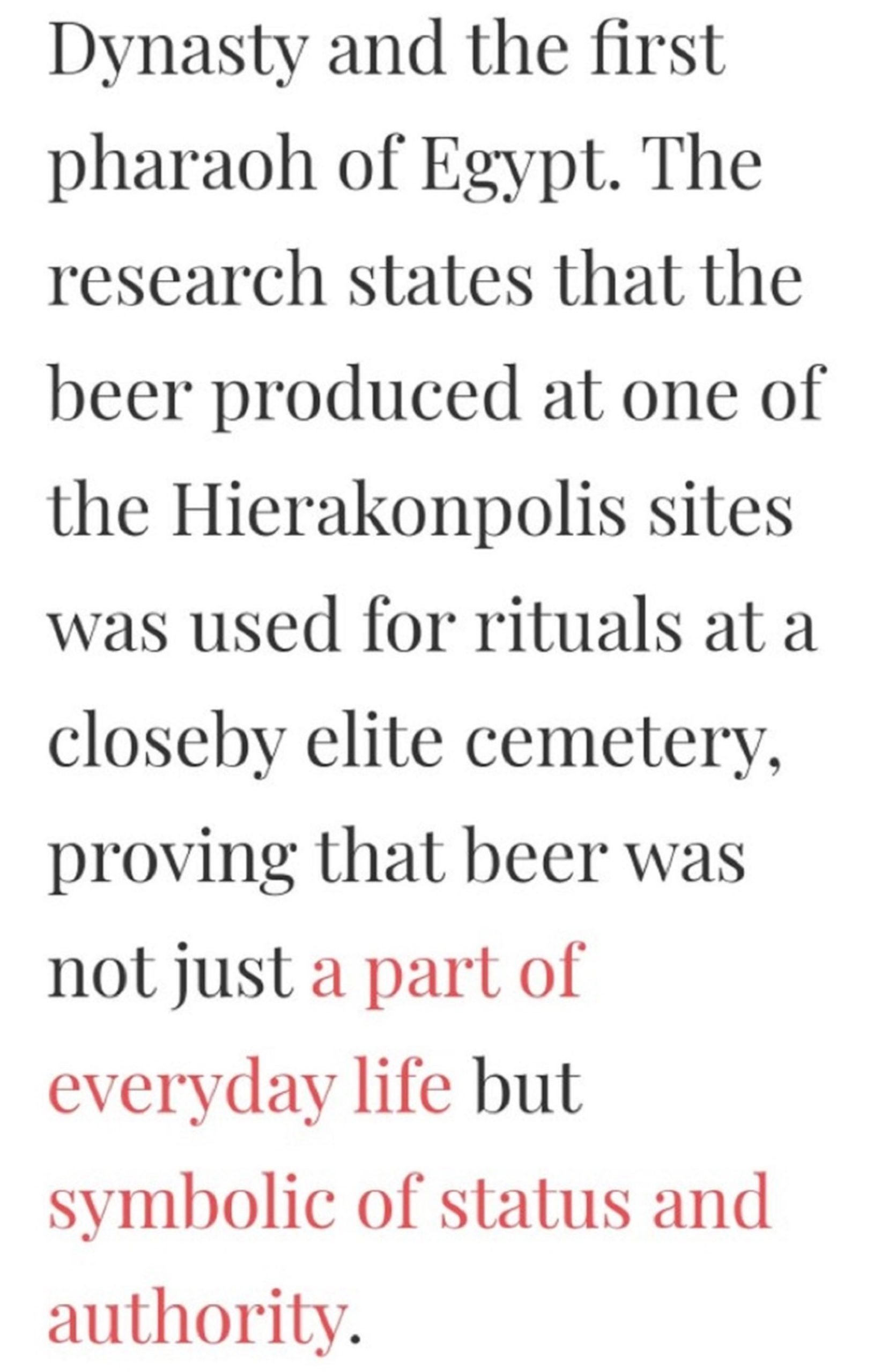
Archeologists Unearth 5,821 Year Old Ancient Egyptian Beer
“According to new archeological research, beer was widely consumed and produced in Ancient Egypt, as far back as 5,800 years ago. The study was published in the December issue of the Journal of Anthropological Archeology, and headed by Professor Jiajing Wang from Dartmouth University. The work of Wang and colleagues determined that beer was not only a commodity in pre-unified Egypt, but used for ritual purposes.” ref
“Wang’s team studied fragments of pottery found at the Hierakonpolis dig site in southern Egypt, one of the largest urban centers along the Nile before the unification of an Egyptian state. Hierakonpolis is also the same dig site where the Narmer Palette was discovered, one of the world’s oldest political texts.” ref
“The fragments from the studies were dated between 3800 – 3600 BCE, 600 years before the rule of Pharaoh Narmer, who historians considered to be the founder of the First Dynasty and the first pharaoh of Egypt. The research states that the beer produced at one of the Hierakonpolis sites was used for rituals at a closeby elite cemetery, proving that beer was not just a part of everyday life but symbolic of status and authority.” ref
“In data and evidence collected from previous excavations, brewing and the consumption of beers is suggested to have been a highly organized and specialized industry in Ancient Egypt. Recently conducted excavations have found more than a dozen breweries, with some archeologists suggesting that beer was crucial in the development of Egypt as a civilization, especially in its implications of power.” ref
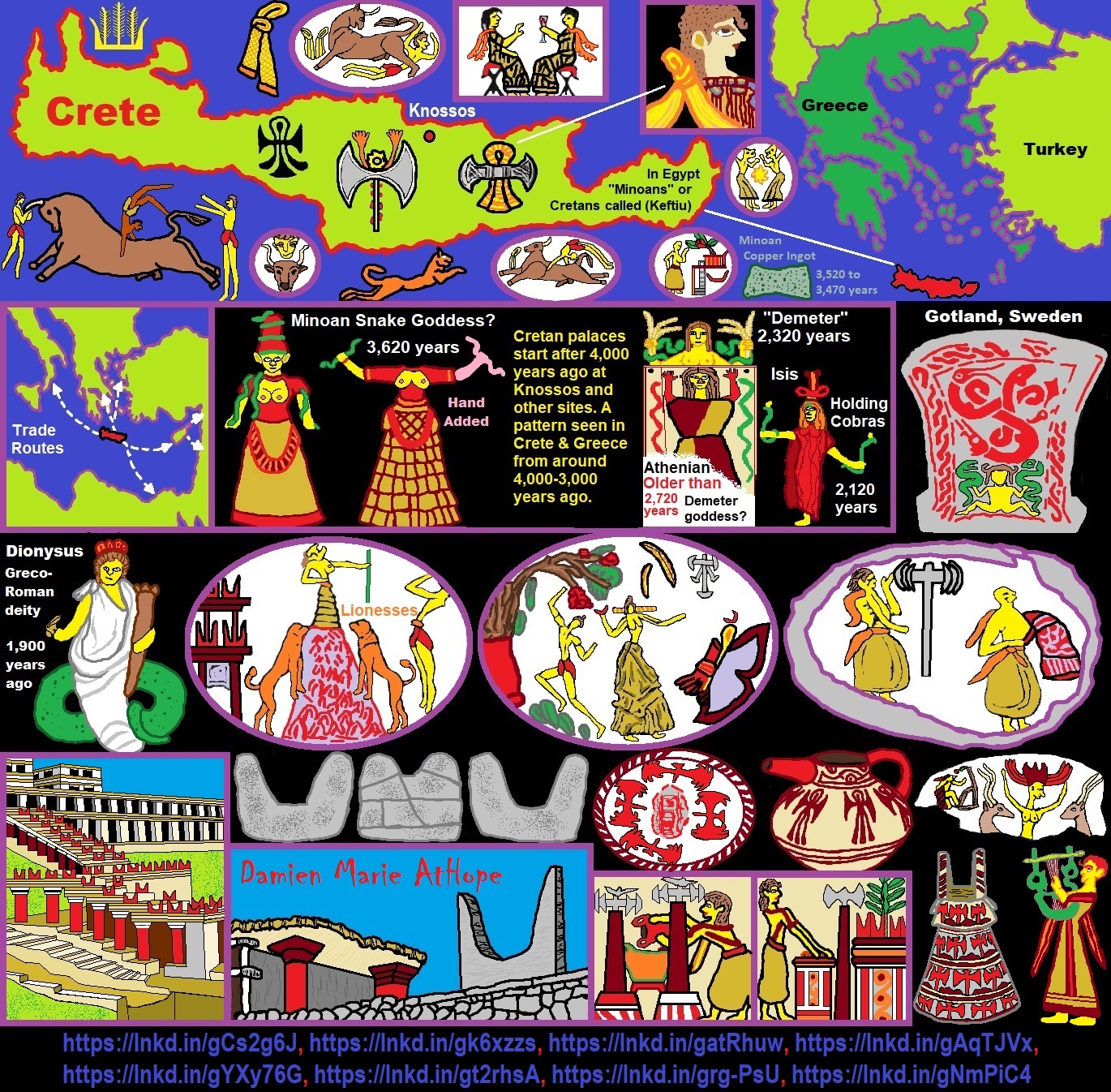
Show eight: Moralistic gods start after the state and support statism: related to “Anarchism and Socialism”
Cory reads:
Arnold Petersen has used the existence of primitive communism to argue against the idea that communism goes against human nature. Hikmet Kıvılcımlı in his The Thesis of History argued that in pre-capitalist societies the main dynamic of historical change “was not class struggle within society but rather the strong collective action” of egalitarian and collectivist values of “primitive socialist society”.
Due to the strong evidence of an egalitarian society, lack of hierarchy and lack of economic inequality, historian Murray Bookchin has argued that Catal Hoyuk dating to around 9,000 years ago was an early example of anarcho-communism, and so an example of primitive communism in a proto-city. It has also been argued that the Indus Valley Civilization is an example of a primitive communist society, due to its perceived lack of conflict and social hierarchies. Others argue that such an assessment of the Indus Valley civilization is not correct.
The Marxist archaeologist V. Gordon Childe carried out excavations in Scotland from the 1920s and concluded that there was a Neolithic classless society that reached as far as the Orkney Islands. This has been supported by Perry Anderson, who has argued that primitive communism was prevalent in pre-Roman western Europe. Descriptions of such societies can also be gleamed through the works of classical authors.
Biblical scholars have also argued that the mode of production seen in early Hebrew society was a communitarian domestic one that was akin to primitive communism. Meillassoux has also commented how the mode of production seen in many primitive societies is a domestic one. The Indian communist politician Shripad Amrit Dange considered ancient Indian society to be of a primitive communist nature. Other communists within India have also labelled current indigenous groups, such as the Adivasi, as examples of primitive communism.
In Radcliffe-Brown’s study of the Andamanese at the beginning of the 20th century he comments that they have “customs which result in an approach to communism” and “their domestic policy may be described as a communism”. Alexander Mikhailovich Zolotarev [ru] in his 1960 work on the development of religious cult communities from tribal communities in the Balkans spoke of the primitive communism of the “archaic form of the tribal system”. Jensen in the 1980s conducted a historical study of Wolof society in west Africa looking at the development of class antagonisms from a primitive communist society.
Also in the 1980s, Bourgeault looked at the forceful transition of indigenous societies in Canada from their traditional structures that were anarchist and communistic in nature into capitalist exploitation due to encroaching imperialism and colonialism. Such an area of interest has been a common topic of research for many fields beyond just Marxist scholars. Some anthropologists, such as John H. Moore, have continued to argue that societies such as those of Native Americans constitute primitive communist societies, whilst acknowledging and incorporating the research showing the complexity in native American societies.
James Connolly believed that “Gaelic primitive communism” existed in remnants in Irish society after much of western Europe “had almost entirely disappeared”. The agrarian communes of the rundale system in Ireland have subsequently been assessed using a framework of primitive communism, where the system fits Marx and Engels’ definition.
During the Age of Enlightenment in 18th century France, some liberal writers increasingly began to criticize the institution of private property even to the extent they demanded its abolition. Such writings came from thinkers such as the deeply religious philosopher Jean-Jacques Rousseau. In his hugely influential The Social Contract (1762) Rousseau outlined the basis for a political order based on popular sovereignty rather than the rule of monarchs, and in his Discourse on Inequality (1755) inveighed against the corrupting effects of private property claiming that the invention of private property had led to the,” crimes, wars, murders, and suffering” that plagued civilization.
Raised a Calvinist, Rousseau was influenced by the Jansenist movement within the Roman Catholic Church. The Jansenist movement originated from the most orthodox Roman Catholic bishops who tried to reform the Roman Catholic Church in the 17th century to stop secularization and Protestantism. One of the main Jansenist aims was democratizing to stop the aristocratic corruption at the top of the Church hierarchy.
Victor d’Hupay’s 1779 work Project for a Philosophical Community described a plan for a communal experiment in Marseille where all private property was banned. Victor d’Hupay referred to himself as a communiste, the French form of the word “communist”, in a 1782 letter, the first recorded instance of that term.
References
https://en.wikipedia.org/wiki/Primitive_communism
https://en.wikipedia.org/wiki/Pre-Marxist_communism
Understanding Religion Evolution as outlined by Damien Marie AtHope’s reasoned speculations from the evidence:
Pre-Animism (Africa, Eurasia at least 300,000 years ago)
Animism (Africa: 100,000 years ago)
Totemism (Europe: 50,000 years ago)
Shamanism (Siberia: 30,000 years ago)
Paganism (Turkey: 12,000 years ago)
Progressed organized religion (Egypt: 5,000 years ago), (Egypt, the First Dynasty 5,150 years ago)
CURRENT “World” RELIGIONS (after 4,000 years ago)
Early Atheistic Doubting (at least by 2,600 years ago)
CURRENT “World” RELIGIONS (after 4,000 years ago)
In Damien’s general opinion the rough idea on the time of different religions is:
Hinduism around 3,700 to 3,500 years old.
Judaism around 3,450 or 3,250 years old.
(The first writing in the bible was “Paleo-Hebrew” dated to around 3,000 years ago). Jainism around 2,599 – 2,527 years old.
Confucianism around 2,600 – 2,551 years old.
Buddhism around 2,563/2,480 – 2,483/2,400 years old.
Christianity around 2,000 years old.
Shinto around 1,305 years old.
Islam around 1407–1385 years old.
Sikhism around 548–478 years old.
Bahá’í Faith around 200–125 years old.
Damien’s Quick Thoughts on the Evolution of Deities a rough outline.
In Damien’s thinking it likely went First animals as protector gods by 12,000, then female goddesses around 11,000/10,000 years ago. To Damien there were earth and sky goddesses as well as all manner of protectors or another type of goddesses but somewhat seeming to contain similarity. In Damien’s thinking the merging of male and female, sacred couple or Yin-dark/female and Yang-light/male themes like Earth mother and sky father are next at around or just before 7,000 years ago, the original/first dual god and goddess. But there were always other lesser goddesses and then gods as it was never really monotheism, until after 4,000 years ago, then only gaining strength around 2,000 years ago.
1. (first kind of deities that were invented, In Damien’s thinking) Low Gods (Earth/ Tutelary deity)
2. (second kind of deities that were invented, In Damien’s thinking) god High Gods (Sky/Supreme deity)
3. (last kind of deities to be invented after 5,000 years ago to support the state, In Damien’s thinking) Moralistic Gods (Deity enforcement/divine order)
In Damien’s thinking, in a rough way it can be conserved as Low Gods (Earth/ Tutelary deity), High Gods (Sky/Supreme deity), and Moralistic Gods (Deity enforcement/divine order)
Greek and Roman gods and goddesses are from the Proto-indo-European religion that had the Earth mother and sky father that goes back around 7,000 years ago.
“The Proto-Indo-European pantheon includes a number of securely reconstructed deities such as *Dyḗws Ph₂tḗr, the daylight-sky god; his consort *Dʰéǵʰōm, the earth mother; his daughter *H₂éwsōs, the dawn goddess; his sons the Divine Twins; and *Seh₂ul, a solar goddess. Some deities, like the weather god *Perkʷunos or the herding-god *Péh₂usōn, are only attested in a limited number of traditions – Western (European) and Graeco-Aryan, respectively – and could therefore represent late additions that did not spread throughout the various Indo-European dialects.” https://en.wikipedia.org/wiki/Proto-Indo-European_mythology
If a god actually has the privilege of power to help or hurt and uses this privilege of power to take advantage, oppress, terrorize, threaten to harm, harm, or kill then such a being is scum, even if hypothetically it was real.
Why the powerful love gods?
In Damien’s thinking, from at least 5,000 years ago, goddesses/gods give states and kings their supposed right to rule, and we now call the “Divine Right of Kings.” In Damien’s thinking, it could have gone something like proto kings start 6,000 or more, it is all related to subjects addressed in both anarchism and socialism, the division of labor, power, rights, and recourses. To Damien, the rise of slavery was likely 7,000 years ago, growing evidence by 6,000 years ago, then becoming widespread by 5,000 years ago.
Damien’s thoughts are on how the state gave religion a military to enforce and violently spread belief unity, and the state got the religion’s blessing and right to rule. So, to recap Damien’s thoughts are “moralistic gods” aged around 5,000 years old when male gods are 7,000 years old and goddesses about 11,000/10,000 years old, thus “Moralistic Gods (Deity enforcement/divine order)” are
a “power-grab” scam, using religious myths to do so.
Low Gods “Earth” or Tutelary deity and High Gods “Sky” or Supreme deity
“An Earth goddess is a deification of the Earth. Earth goddesses are often associated with the “chthonic” deities of the underworld. Ki and Ninhursag are Mesopotamian earth goddesses. In Greek mythology, the Earth is personified as Gaia, corresponding to Roman Terra, Indic Prithvi/Bhūmi, etc. traced to an “Earth Mother” complementary to the “Sky Father” in Proto-Indo-European religion. Egyptian mythology exceptionally has a sky goddess and an Earth god.”
“A mother goddess is a goddess who represents or is a personification of nature, motherhood, fertility, creation, destruction or who embodies the bounty of the Earth. When equated with the Earth or the natural world, such goddesses are sometimes referred to as Mother Earth or as the Earth Mother. In some religious traditions or movements, Heavenly Mother (also referred to as Mother in Heaven or Sky Mother) is the wife or feminine counterpart of the Sky father or God the Father.”
Tutelary deity
“A tutelary (also tutelar) is a deity or spirit who is a guardian, patron, or protector of a particular place, geographic feature, person, lineage, nation, culture, or occupation. The etymology of “tutelary” expresses the concept of safety and thus of guardianship. In late Greek and Roman religion, one type of tutelary deity, the genius, functions as the personal deity or daimon of an individual from birth to death. Another form of personal tutelary spirit is the familiar spirit of European folklore.”
Moralizing Gods
The evidence seems to imply that belief in moralizing gods usually appeared after civilizations reached populations estimated at more than one million people.
“Live Science reports that Patrick Savage of Keio University and his colleagues employed “Seshat,” a global history databank spanning the end of the Paleolithic period to the beginning of the Industrial Revolution, to expand on the work of previous studies that looked at the relationship between belief in moralizing gods and the rise of complex societies. Authors of some smaller-scale studies have suggested that belief in moralizing gods and supernatural judgment helped shape emerging complex societies, while others have argued that belief in the threat of divine punishment appeared later in societies’ development.”
“Savage explained that the use of “Seshat” allowed his team members to take into account more than 50 measures of social complexity and four measures of belief in supernatural enforcement in more than 400 societies living in 30 different regions of the world over the past 10,000 years. The researchers found that belief in moralizing gods usually appeared after civilizations reached populations estimated at more than one million people. “It was particularly striking how consistent it was [that] this phenomenon emerged at the million-person level,” Savage said.”
“First, you get big societies, and these beliefs then come.” Religion, he added, may help stabilize large societies in which people live more anonymous lives, unlike small hunter-gatherer societies, in which everyone knows what everyone else is doing. To read about the nineteenth-century discovery of a tablet containing a story that was eerily similar to that of Noah in the Old Testament, go to “Cuneiform: Religion.”
Moralistic gods, supernatural punishment, and the expansion of human sociality
“Since the origins of agriculture, the scale of human cooperation and societal complexity has dramatically expanded. This fact challenges standard evolutionary explanations of pro-sociality because well-studied mechanisms of cooperation based on genetic relatedness, reciprocity, and partner choice falter as people increasingly engage in fleeting transactions with genetically unrelated strangers in large anonymous groups. To explain this rapid expansion of pro-sociality, researchers have proposed several mechanisms. Here we focus on one key hypothesis: cognitive representations of gods as increasingly knowledgeable and punitive, and who sanction violators of interpersonal social norms, foster and sustain the expansion of cooperation, trust, and fairness towards co-religionist strangers.”
“The researchers tested this hypothesis using extensive ethnographic interviews and two behavioral games designed to measure impartial rule-following among people (n = 591, observations = 35,400) from eight diverse communities from around the world: (1) inland Tanna, Vanuatu; (2) coastal Tanna, Vanuatu; (3) Yasawa, Fiji; (4) Lovu, Fiji; (5) Pesqueiro, Brazil; (6) Pointe aux Piments, Mauritius; (7) the Tyva Republic (Siberia), Russia; and (8) Hadzaland, Tanzania. Participants reported adherence to a wide array of world religious traditions including Christianity, Hinduism, and Buddhism, as well as notably diverse local traditions, including animism and ancestor worship.
“Holding a range of relevant variables constant, the higher participants rated their moralistic gods as punitive and knowledgeable about human thoughts and actions, the more coins they allocated to geographically distant co-religionist strangers relative to both themselves and local co-religionists. Our results support the hypothesis that beliefs in moralistic, punitive, and knowing gods increase impartial behavior towards distant co-religionists, and therefore can contribute to the expansion of pro-sociality.”
Complex societies precede moralizing gods throughout world history
“Complex societies precede moralizing gods throughout world history. The ‘moralizing gods’ hypothesis offers a solution to both puzzles by proposing that belief in morally concerned supernatural agents culturally evolved to facilitate cooperation among strangers in large-scale societies. The study systematically coded records from 414 societies that span the past 10,000 years from 30 regions around the world, using 51 measures of social complexity and 4 measures of supernatural enforcement of morality. Not only confirm the association between moralizing gods and social complexity, but also reveal that moralizing gods follow—rather than precede—large increases in social complexity. Contrary to previous predictions, powerful moralizing ‘big gods’ and prosocial supernatural punishment tend to appear only after the emergence of ‘megasocieties’ with populations of more than around one million people.”
“The geographic locations of the 33 hunter-gatherer societies were analyzed in the study on Hunter-Gatherers and the Origins of Religion which demonstrated the distribution of the seven characters describing hunter-gatherer religiosity.”
“Recent studies of the evolution of religion have revealed the cognitive underpinnings of belief in supernatural agents, the role of ritual in promoting cooperation, and the contribution of morally punishing high deities/gods/goddesses to the growth and stabilization of human society. The universality of religion across human society points to a deep evolutionary past. However, specific traits of nascent religiosity, and the sequence in which they emerged, have remained unknown. Here we reconstruct the evolution of religious beliefs and behaviors in early modern humans using a global sample of hunter-gatherers and seven traits describing hunter-gatherer religiosity: animism, belief in an afterlife, shamanism, ancestor worship, high deities/gods/goddesses, and worship of ancestors or high deities/gods/goddesses who are active in human affairs.”
“Researchers reconstruct ancestral character states using a time-calibrated supertree based on published phylogenetic trees and linguistic classification and then test for correlated evolution between the characters and for the direction of cultural change. Results indicate that the oldest trait of religion, present in the most recent common ancestor of present-day hunter-gatherers, was animism, in agreement with long-standing beliefs about the fundamental role of this trait.”
“Belief in an afterlife emerged, followed by shamanism and ancestor worship. Ancestor spirits or high deities/gods/goddesses who are active in human affairs were absent in early humans, suggesting a deep history for the egalitarian nature of hunter-gatherer societies. There is a significant positive relationship between most characters investigated, but the trait “high deities/gods/goddesses” stands apart, suggesting that belief in a single creator deity can emerge in a society regardless of other aspects of its religion.”
“High gods” as single, all-powerful creator deities who may be active in human affairs and supportive of human morality. The variable is coded as four states. It differentiates between societies in which a creator deity is (1) absent, (2) present but inactive in human affairs, (3) active in human affairs but does no support a moral agenda, or (4) active and morally punishing. In 28 of the 33 societies in our sample coded for high gods in 28 of the 33 societies in our sample. Original coding in the additional five societies, based on principal ethnographic sources, completed the coding for all 33 societies is different geographic locations around the earth were analyzed in the study on hunter-gatherers and the origins of religion which demonstrated the distribution of the seven characters describing hunter-gatherer religiosity.”
“Research results reflect that animism was the earliest and most basic trait of religion because it enables humans to think in terms of supernatural beings or spirits. Animism is not a religion or philosophy, but a feature of human mentality, a by-product of cognitive processes that enable social intelligence, among other capabilities. It is a widespread way of thinking among hunter-gatherers. Animistic thought is a natural by-product of the human capacity for intentionality or “theory of mind mechanism.”
“This innate cognitive trait allows us to attribute a vital force to animate and inanimate elements in the environment. Once that vital force is assumed, attribution of other human characteristics will follow. Animistic beliefs are generally adaptive in the environments that prevail in hunter-gatherer societies. Animistic thinking would have been present in early hominins, certainly earlier than language. It can be inferred from the analyses, or indeed from the universality of animism, that the presence of animistic belief predates the emergence of belief in an afterlife.”
Material security, life history, and moralistic religions: A cross-cultural examination
“Researchers have recently proposed that “moralistic” religions—those with moral doctrines, moralistic supernatural punishment, and lower emphasis on ritual—emerged as an effect of greater wealth and material security. One interpretation appeals to life history theory, predicting that individuals with “slow life history” strategies will be more attracted to moralistic traditions as a means to judge those with “fast life history” strategies. As researchers had reservations about the validity of this application of life history theory, researchers tested these predictions with a data set consisting of 592 individuals from eight diverse societies.”
“The researchers sample includes individuals from a wide range of traditions, including world religions such as Buddhism, Hinduism, and Christianity, but also local traditions rooted in beliefs in animism, ancestor worship, and worship of spirits associated with nature. Researchers first test for the presence of associations between material security, years of formal education, and reproductive success. Consistent with popular life history predictions, researchers find evidence that material security and education are associated with reduced reproduction.”
“Building on this, researchers then test whether or not these demographic factors predict the moral concern, punitiveness, attributed knowledge-breadth, and frequency of ritual devotions towards two deities in each society. Here, researchers find no reliable evidence of a relationship between number of children, material security, or formal education and the individual-level religious beliefs and behaviors. Researchers conclude with a discussion of why life-history theory is an inadequate interpretation for the emergence of factors typifying the moralistic traditions.”
“Over the past few decades, numerous scholars have sought to explain the emergence and spread of “moralistic” religious traditions. These traditions are characterized as those that emphasize adherence to prosocial norms under the threat of punishment by knowledgeable deities explicitly concerned with how we treat each other. Many have assessed how socioecological variables such as societal complexity, resource scarcity, and animal husbandry, can help explain the emergence of these “moralistic high gods.”
“There is some evidence that commitment to moralistic gods—deities thought to be concerned with moral norms, particularly those claimed to bestow costs or benefits to people based on their moral actions—post-date critical thresholds of societal complexity, suggesting they developed and spread as a response to that complexity. Normative beliefs in divine punishment and supernatural monitoring by these deities may function adaptively by reducing the costs of punishing others for misconduct, while further expanding and/or stabilizing the sphere of human cooperation. Moreover, an emerging secularization literature shows that among contemporary state societies, greater material security, economic equality, and education predict less overall religiosity cross-nationally. In other words, the functions that moralistic religions traditionally served may have been co-opted and out-competed by effective secular institutions, thus diminishing the significance of the former.”
“As detailed below, some researchers have challenged this view by arguing that a widespread shift in affluence was the prime mover of the genesis and ubiquity of the moralistic and ascetic traditions. According to this alternative theory, religious traditions turn moralistic not because widely shared beliefs in supernatural deities contribute to stabilizing wider pro-sociality or carry adaptive externalities, but rather because life history strategies covary with environmental fluctuations and this predicts a concomitant shift in religious expression. Before discussing this hypothesis in more detail, we first briefly review life history theory.”
“Generally, mathematical models in life history theory are grounded on the idea that natural selection favors developmental and reproductive strategies that increase fitness, and that optimal life history strategies may co-vary with mortality regimes and ecological conditions, such as average resource abundance and the associated variance in realizable resources. With respect to empirical studies of human reproduction, life history theory is rendered more complicated by human flexibility and the demographic transition. One commonly cited subset of the theory is framed in terms of reproductive speed (i.e., a “slow” vs. “fast” life history) where reproductive rate is predicted to co-vary with resource security.”
“There is some evidence regarding a positive relationship between material security and the number of children people have in traditional societies. In post-demographic transition contexts, however, some evidence suggests that more educated parents will invest more time and resources in children. However, increased education and material security are frequently associated with lower fertility rates. Foregoing reproduction in such contexts can both increase the socioeconomic status of subsequent generations, as well as reduce the number of children people have. Further complications abound regarding how this “slow-fast” spectrum follows from evolutionary life history theory.”
“Aiming to extend these ideas to the domain of human cultural variation, Baumard et al. recently argued that the rise of moralistic religious traditions (i.e., those with doctrines including something akin to the “Golden Rule”) and the decline of ritual devotion are indicative of slow life history strategies. Contrary to recent findings of the relationship between morally concerned deities and ecological duress or social complexity, this work argues that moralizing religious beliefs are “a set of beliefs that are pragmatically held by slow-life individuals to help them moralize fast-life behaviors”. In other words, wealthier people with fewer, “higher-quality” children are more prone to morally judge poorer people with relatively more children. This research predicts that at the individual level, “moralizing beliefs are more strongly held by people pursuing a slow strategy.”
“In an empirical study, Baumard et al. found that greater projected energy capture (per capita/diem kcal, estimated from historical data) predicted the emergence of moralistic religions of the so-called “Axial Age,” a period (roughly between 800 and 200 BCE or 2,620-2,220 years ago) often touted as a radical shift in human thought, religion, and social complexity. Though the details regarding how this might have happened remain unclear, the authors suggest that their results could be interpreted with life history theory (as expressed by the slow-fast continuum) insofar as “a massive increase in prosperity and certainty during the Axial Age may have triggered a drastic change in strategies, shifting motivations away from materialistic goals … toward long-term investment in reciprocation.”
“This “shift in priorities progressively would have impacted religious … traditions through a transmission bias, in favor of doctrines and institutions that coincided with the new values”. Affluence moves “individuals away from ‘fast life’ strategies (resource acquisition and coercive interactions) and toward ‘slow life’ strategies (self-control techniques and cooperative interactions) typically found in axial movements”. These “doctrines and institutions” associated with “slow-life strategies” include: increased asceticism, level of moral concern, punitiveness, and the breadth of knowledge (i.e., omniscience indicative of universalizing governance) attributed to deities, as well as the purported shift in emphasis from the ritual performances held by more traditional societies to one of “ethical commands”.”
Prehistory: related to “Anarchism and Socialism” the division of labor, power, rights, and recourses. https://www.patreon.com/posts/54943467
Low Gods (Earth/ Tutelary deity), High Gods (Sky/Supreme deity), and Moralistic Gods (Deity enforcement/divine order)

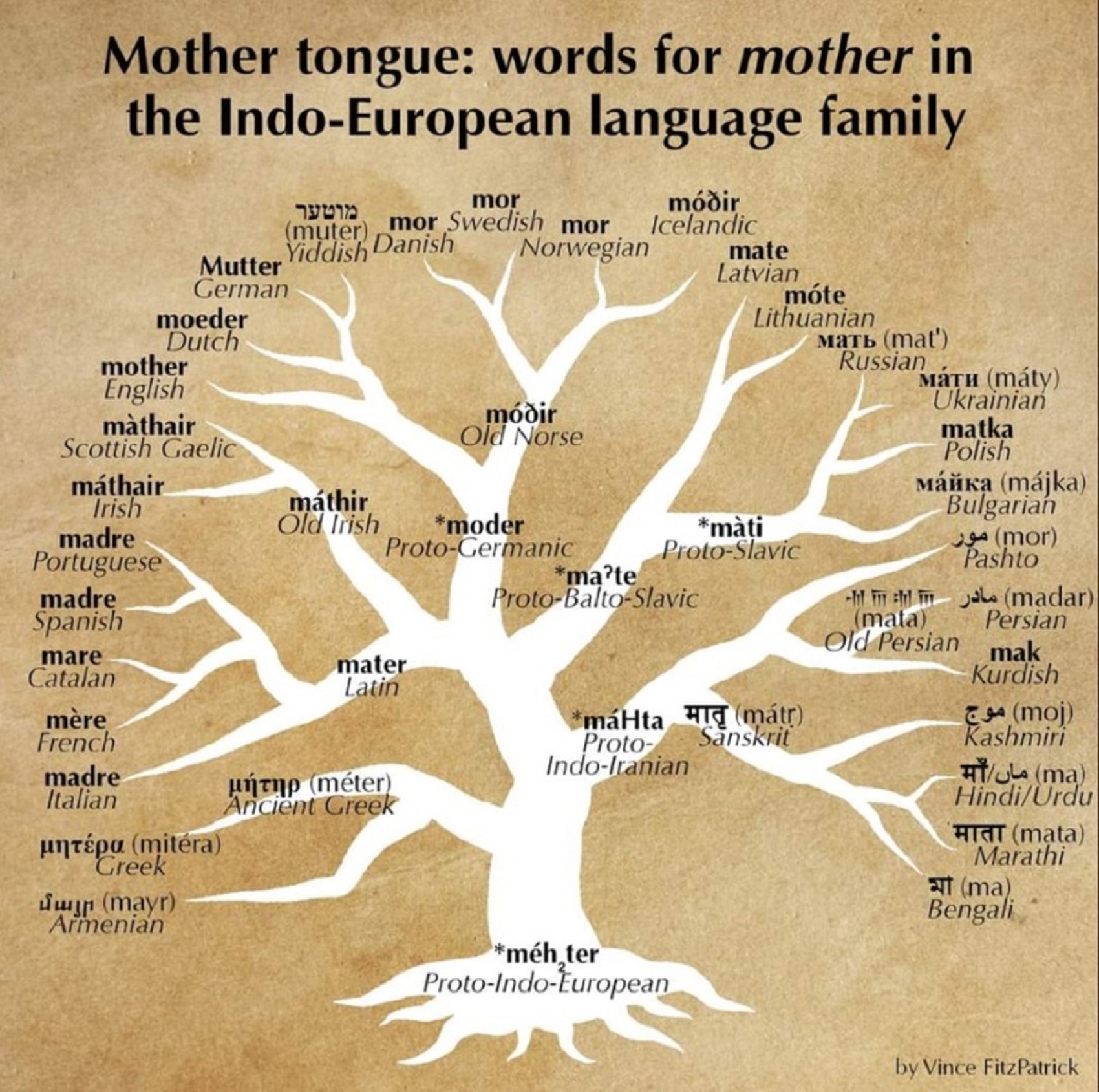

Hinduism around 3,700 to 3,500 years old. ref
Judaism around 3,450 or 3,250 years old. (The first writing in the bible was “Paleo-Hebrew” dated to around 3,000 years ago Khirbet Qeiyafa is the site of an ancient fortress city overlooking the Elah Valley. And many believe the religious Jewish texts were completed around 2,500) ref, ref
Judaism is around 3,450 or 3,250 years old. (“Paleo-Hebrew” 3,000 years ago and Torah 2,500 years ago)
“Judaism is an Abrahamic, its roots as an organized religion in the Middle East during the Bronze Age. Some scholars argue that modern Judaism evolved from Yahwism, the religion of ancient Israel and Judah, by the late 6th century BCE, and is thus considered to be one of the oldest monotheistic religions.” ref
“Yahwism is the name given by modern scholars to the religion of ancient Israel, essentially polytheistic, with a plethora of gods and goddesses. Heading the pantheon was Yahweh, the national god of the Israelite kingdoms of Israel and Judah, with his consort, the goddess Asherah; below them were second-tier gods and goddesses such as Baal, Shamash, Yarikh, Mot, and Astarte, all of whom had their own priests and prophets and numbered royalty among their devotees, and a third and fourth tier of minor divine beings, including the mal’ak, the messengers of the higher gods, who in later times became the angels of Judaism, Christianity and Islam. Yahweh, however, was not the ‘original’ god of Israel “Isra-El”; it is El, the head of the Canaanite pantheon, whose name forms the basis of the name “Israel”, and none of the Old Testament patriarchs, the tribes of Israel, the Judges, or the earliest monarchs, have a Yahwistic theophoric name (i.e., one incorporating the name of Yahweh).” ref
“El is a Northwest Semitic word meaning “god” or “deity“, or referring (as a proper name) to any one of multiple major ancient Near Eastern deities. A rarer form, ‘ila, represents the predicate form in Old Akkadian and in Amorite. The word is derived from the Proto-Semitic *ʔil-, meaning “god”. Specific deities known as ‘El or ‘Il include the supreme god of the ancient Canaanite religion and the supreme god of East Semitic speakers in Mesopotamia’s Early Dynastic Period. ʼĒl is listed at the head of many pantheons. In some Canaanite and Ugaritic sources, ʼĒl played a role as father of the gods, of creation, or both. For example, in the Ugaritic texts, ʾil mlk is understood to mean “ʼĒl the King” but ʾil hd as “the god Hadad“. The Semitic root ʾlh (Arabic ʾilāh, Aramaic ʾAlāh, ʾElāh, Hebrew ʾelōah) may be ʾl with a parasitic h, and ʾl may be an abbreviated form of ʾlh. In Ugaritic the plural form meaning “gods” is ʾilhm, equivalent to Hebrew ʾelōhîm “powers”. In the Hebrew texts this word is interpreted as being semantically singular for “god” by biblical commentators. However the documentary hypothesis for the Old Testament (corresponds to the Jewish Torah) developed originally in the 1870s, identifies these that different authors – the Jahwist, Elohist, Deuteronomist, and the Priestly source – were responsible for editing stories from a polytheistic religion into those of a monotheistic religion. Inconsistencies that arise between monotheism and polytheism in the texts are reflective of this hypothesis.” ref
Jainism around 2,599 – 2,527 years old. ref
Confucianism around 2,600 – 2,551 years old. ref
Buddhism around 2,563/2,480 – 2,483/2,400 years old. ref
Christianity around 2,o00 years old. ref
Shinto around 1,305 years old. ref
Islam around 1407–1385 years old. ref

A true intellectual, to me, not only challenges themselves first, but they never stop the challenges of self. And this should be done no differently than what they level on others. To withdraw challenges from oneself and not others is less than intellectual honesty.
Some people confuse deep thinking with free-thinking but that is not always true. Some are free thinkers who don’t seem to have done much deep thought and those who have done lots of deep thought but forgot about the importance of free-thinking.
Nonsocialist: I am a capitalism follower as it was indoctrinated in me that it is the best and only good economic system. But first I ask you, good at what? If funneling wealth to an ever-shrinking elite, then yet it is quite good at that, maybe one of the best but not truly good.
Imagine how many facts you have to have to make the amount of Truth claims on prehistory that I do in one blog post that is so good that in over 100 blog posts and several years doing this it is a feat in itself that no valid challenges come from anyone or anywhere. Winning…
Everyone feels comfortable and confident in their knowledge of prehistory up until they read a few blog posts of mine and think they just entered the twilight zone of learning.
I still am waiting for someone to try and challenge my prehistory blog posts. I make more claims in one blog than the entire skepticism movement does in a year, yet not one valid challenge??? And you still think not reading all my stuff is needed? Lol
Nationalism is the glorification of exclusion, that limits the availability of pride to a specific few, thus furthering separations of all humanity just for the benefit of the few.
“Damien, what is the difference between patriotism and nationalism?”
My response, One is pride-seeking, patriotism, and the other is power-seeking, nationalism.
People point to one historical figure not realizing most figures they value hold history they try to limit on others as if they have some clean history… Not even a chance. Hey, my anarchist champions are not removed from such accounts as well. Love in one quote and hate in another.
A simple thinking mind sees valid challenges or needed corrections as a threat, but a developed thinking mind understands the ethics of beliefs, thus, welcomes valid challenges or needed corrections.


The skeptic movement’s “right side” is foolish as hell. 250,000 followers to that guy, Gross!
And here we see a debasing of rationality, for seeming momentary gain with the illogical, to support the uninformed.
“With what you said, the difference between nationalism and patriotism? Can you translate that into English? What do you mean by power-seeking? Isn’t every politician power-seeking?” – Questioner
My response, “I love America and would gladly die for my country” is Patriotism themed, to me. And, “America is the best nation in the world keep others out and feel superior to them”, nationalism. Ego self-love, which welcomes the feelings of superiority by putting self up and others down.
My favorite sport is a good old “bully beat” down intellectually. lol
I offend bigots everyone, so it could get fun. lol
Say “WHITE”, just because it pisses off bigots. lol
Are you a good person or is this your invitation to start the change now? lol
Sadly, someone has always had to die, to get, nearly every human right we have, and even sadder is, the same efforts are needed, too often to keep them, but tell yourself this is the best humans can do. We get into space, just not that between reason and intoxication like denial.
I am surprised as to how openly some show their lack of honor in public. Gross!
Should you have to work for my care? If I only offer care to the percentage of what you work for is it really care? If I gave you more, or even that which you never had to earn, but rather I just cared, how great would that be?
It is hard to think past capitalism when your dignity is attached to your paycheck as all things have a price in such an unethical system of oppression, you even hate yourself with them as you were trained by your master… Wage Slave!
Most of my ideas are mine, originating from me alone. A few others are grouped facts and related thinking to those facts, but I place them myself in a better context of the world and events not limited to place or space.
People are very stupid, to ever think me stupid.
The Ancient Socialists and Anarchists | History of Socialism
Everything I post is activism I don’t care if it gets no likes I will repeat it every day until April q when I end my life as an activist and go from 90% activism life to a 10% retired nonactivist life and I started doing it all for free from 2006, I am moving to Florida to live.

“Election poster of the Social Democratic Party of Germany, 1932, with Three Arrows symbol representing resistance against reactionary conservatism, Nazism and Communism, with the slogan “Gegen [Against] Papen, Hitler, Thälmann.” ref
Iron Front?
“The Iron Front (German: Eiserne Front) was a German paramilitary organization in the Weimar Republic which consisted of social democrats, trade unionists, and liberals. Its main goal was to defend liberal democracy against totalitarian ideologies on the far-right and far-left. The Iron Front chiefly opposed the Sturmabteilung (SA) wing of the Nazi Party and the Antifaschistische Aktion wing of the Communist Party of Germany. Formally independent, it was intimately associated with the Social Democratic Party of Germany (SPD). The Three Arrows, originally designed for the Iron Front, became a well-known social-democratic symbol representing resistance against monarchism, Nazism, and communism during the parliamentary elections in November 1932. The Three Arrows were later adopted by the SPD itself.” ref
“The Iron Front was formed on 16 December 1931 in the Weimar Republic by the Social Democratic Party (SPD), along with the Allgemeiner Deutscher Gewerkschaftsbund (ADGB), the Reichsbanner Schwarz-Rot-Gold, and workers’ sport clubs. The Iron Front chiefly opposed the paramilitary organizations of the fascist National Socialist German Workers Party (NSDAP) and the Communist Party of Germany (KPD). Its initial purpose was to counter the right-wing Harzburg Front.” ref
“The organization sought to engage the old Reichsbanner, the SPD youth organization, and labor, and liberal groups as a united front. The SPD rallied to the Iron Front, held mass demonstrations, armed themselves, and fought the Nazi SA and Communist Antifa in the streets. This was more than the SPD leaders wanted, but SPD workers grew increasingly militant in their resistance against the authoritarian and totalitarian movements threatening the Weimar Republic.” ref
“The Iron Front was regarded as an anti-communist and “social fascist terror organization” by the KPD, who regarded the SPD as their main adversary. In response to the formation of the Iron Front, the KPD founded its own activist wing, Antifaschistische Aktion (Antifa), which opposed the social democrat SPD and the fascist NSDAP.” ref
“On January 30th 1933, the day Hitler was appointed Chancellor, the KPD asked the Iron Front, the SPD, the general trade union association ADGB and their organizations, and the Reichsbanner Schwarz-Rot-Gold to declare a general strike against Hitler. The Iron Front decline, issued a call on February 2 to “all comrades of the Reichsbanner and the Iron Front”, warning against participating in “wild actions organized by irresponsible people”, and exhorted members to “turn all Iron Front events into powerful rallies for freedom”.” ref
“On March 3, the Iron Front planned a march in Kassel, but was hindered by regular police. On May 2, all trade unions, with which the Iron Front was closely allied, were finally abolished, together with all trade union structures. Until the mid 1930s and in some cases until the war years, some local branches of the Iron Front and the former trade union organisations continued with resistance, mostly by spreading leaflets, organizing secret meetings, and carrying out acts of sabotage.” ref
“Its logo, the Three Arrows (pointing southwest) was designed by Sergei Chakhotin, former assistant to the physiologist Ivan Pavlov in 1931. Designed so as to be able to easily cover Nazi swastikas, the meaning of the three arrows has been variously interpreted. The present-day Reichsbanner association says the arrows of the logo stood for the SPD, the trade unions, and the Reichsbanner Schwarz-Rot-Gold, as well as for the political, economic, and physical strength of the working class. The symbol was used on a November 1932 Reichstag election poster of the SPD to represent opposition to the Nazi Party, the Communist Party, and the monarchist wing of the Centre Party.” ref
“About its formation, Karl Höltermann, chairman of the Reichsbanner, commented: “The year 1932 will be our year, the year of victory of the republic over its opponents. Not one day nor one hour more do we want to remain on the defensive. We attack! Attack on the whole line! We must be part of the general offensive. Today we call – tomorrow we strike!” ref
“The Three Arrows became a symbol of the social-democratic resistance against the totalitarian ideologies of Nazism and Soviet State Socialism. More recently, the symbol has been appropriated by American anti-fascist movements, along with flags historically derived from the German communist party’s Antifaschistische Aktion.[15] Antifa opposed the Iron Front, whom they regarded as bourgeois and fascist, as the Three Arrows logo was used to represent resistance against Antifa’s affiliated party, the KPD as well.” ref
“The Iron Front flag has been adopted by supporters of MLS team Portland Timbers and frequently seen at their games. Major League Soccer banned the flag in 2019 as part of a crackdown on “political symbols,” although the league walked back the ban weeks later.” ref
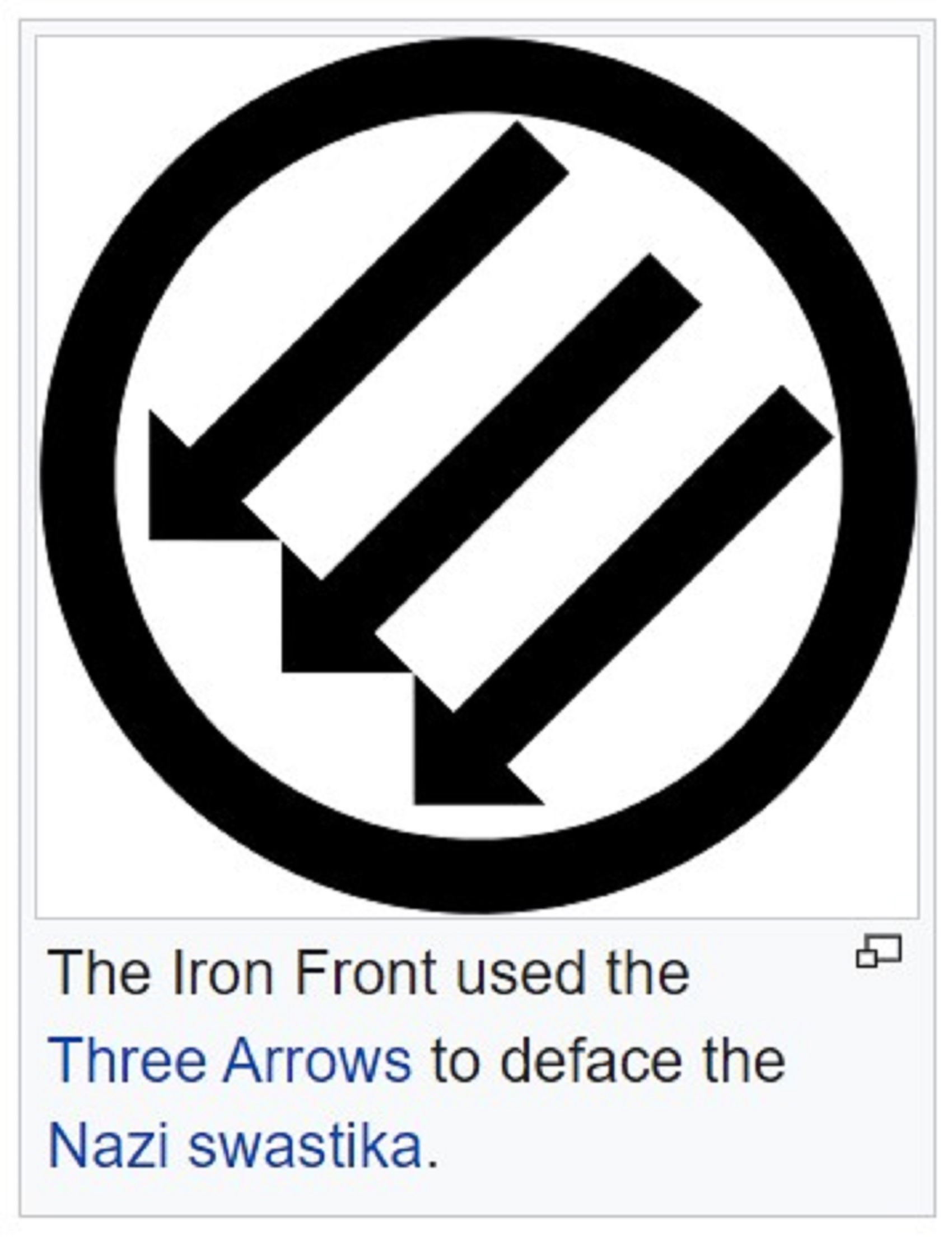
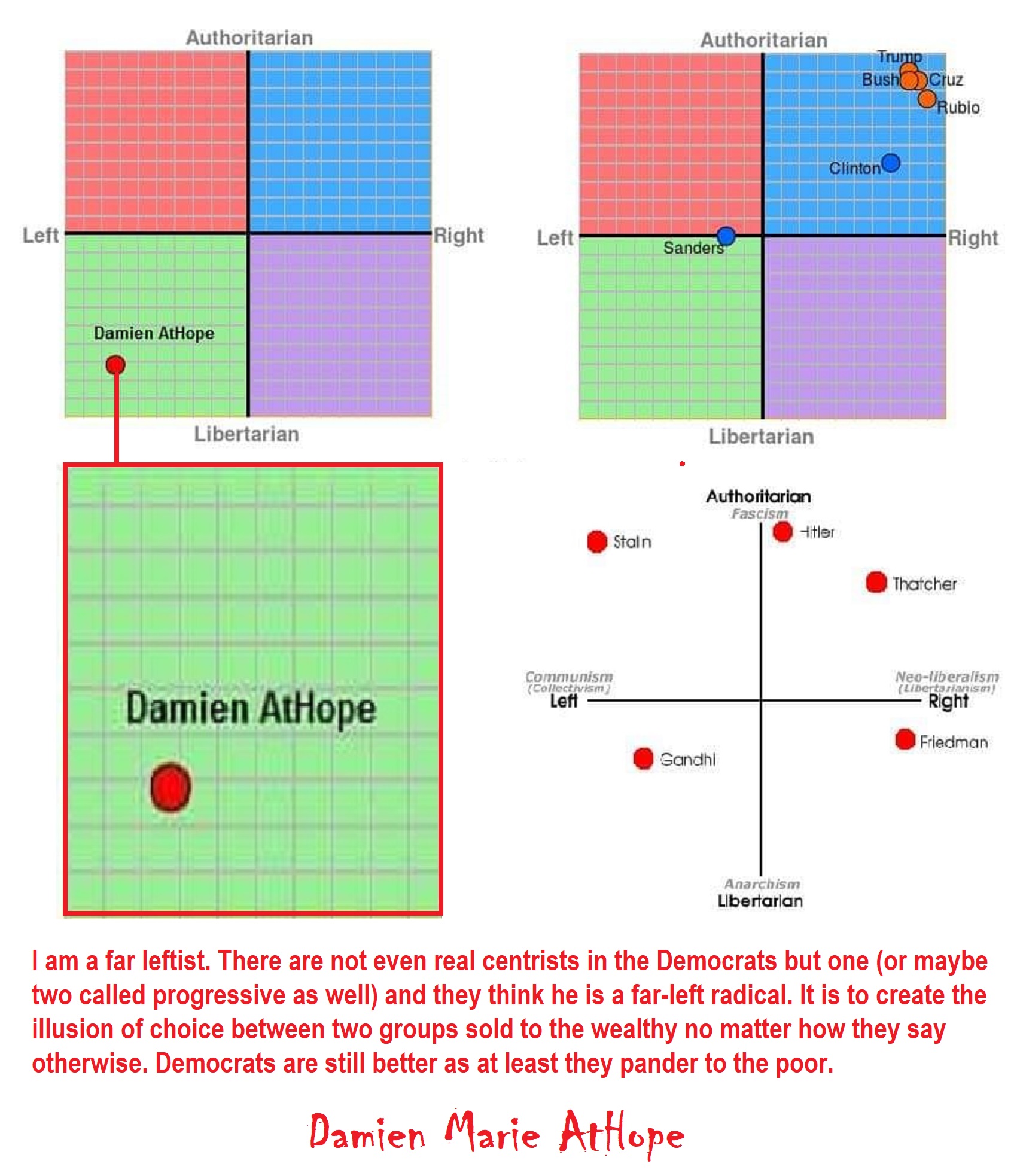
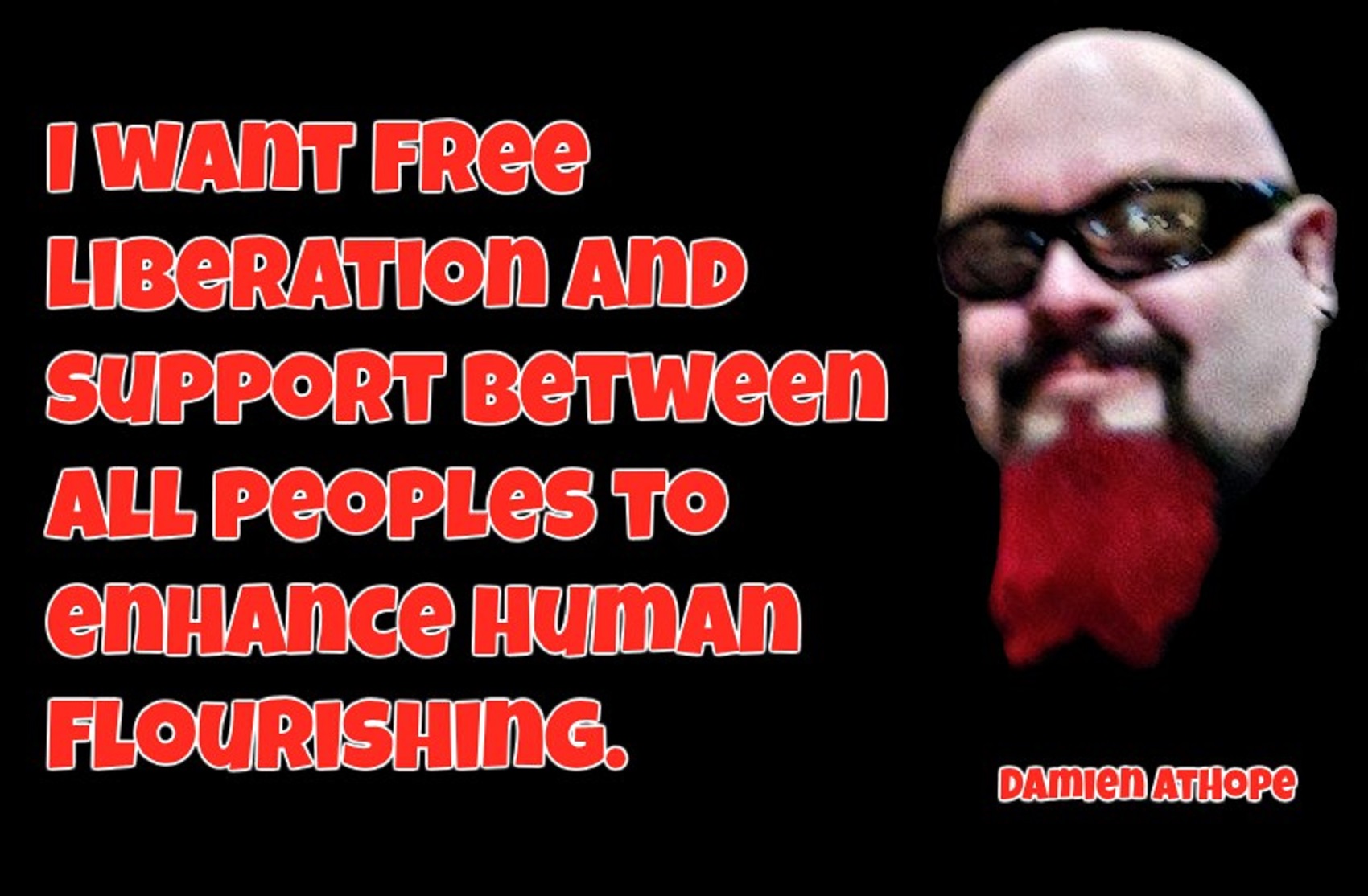
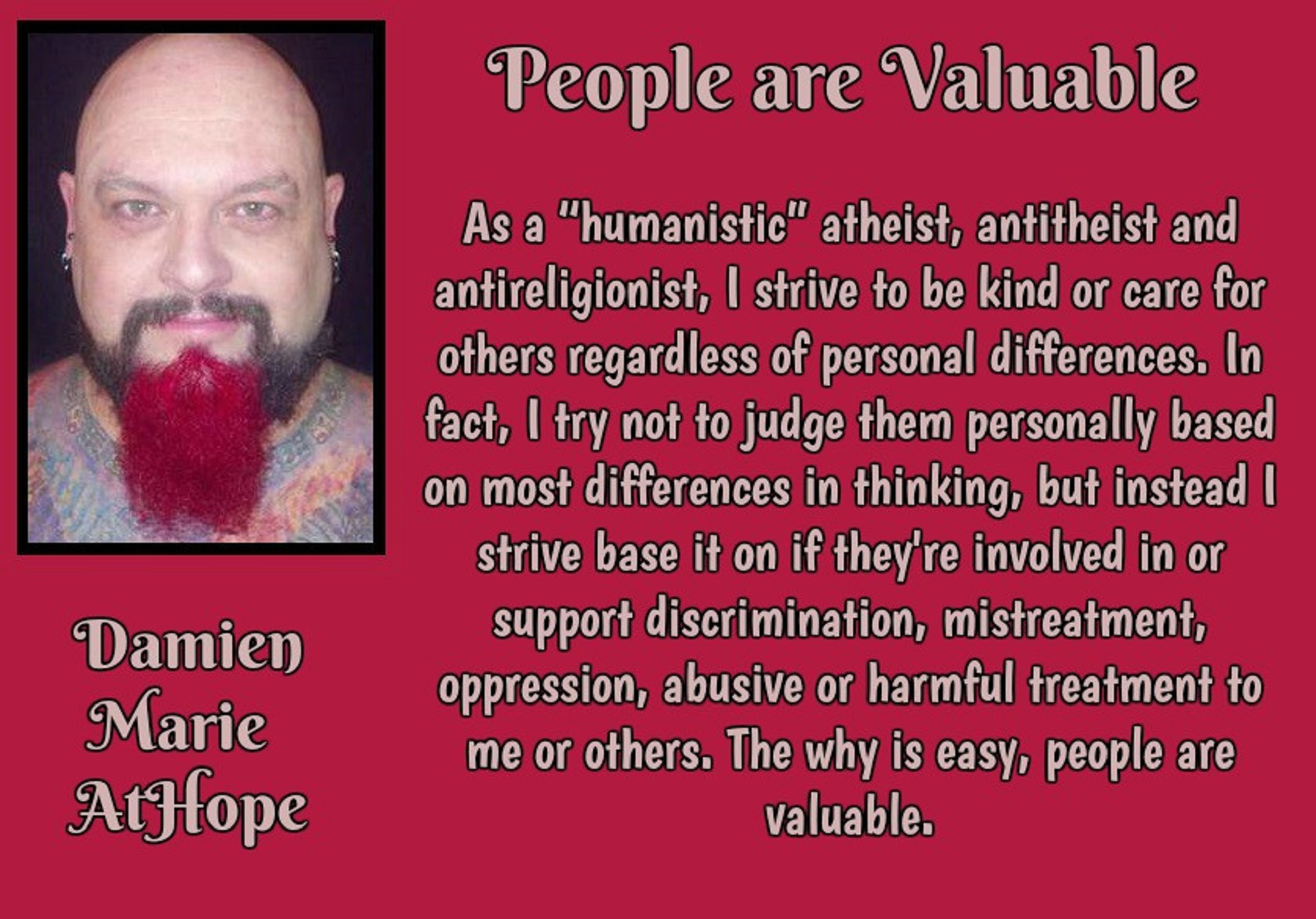
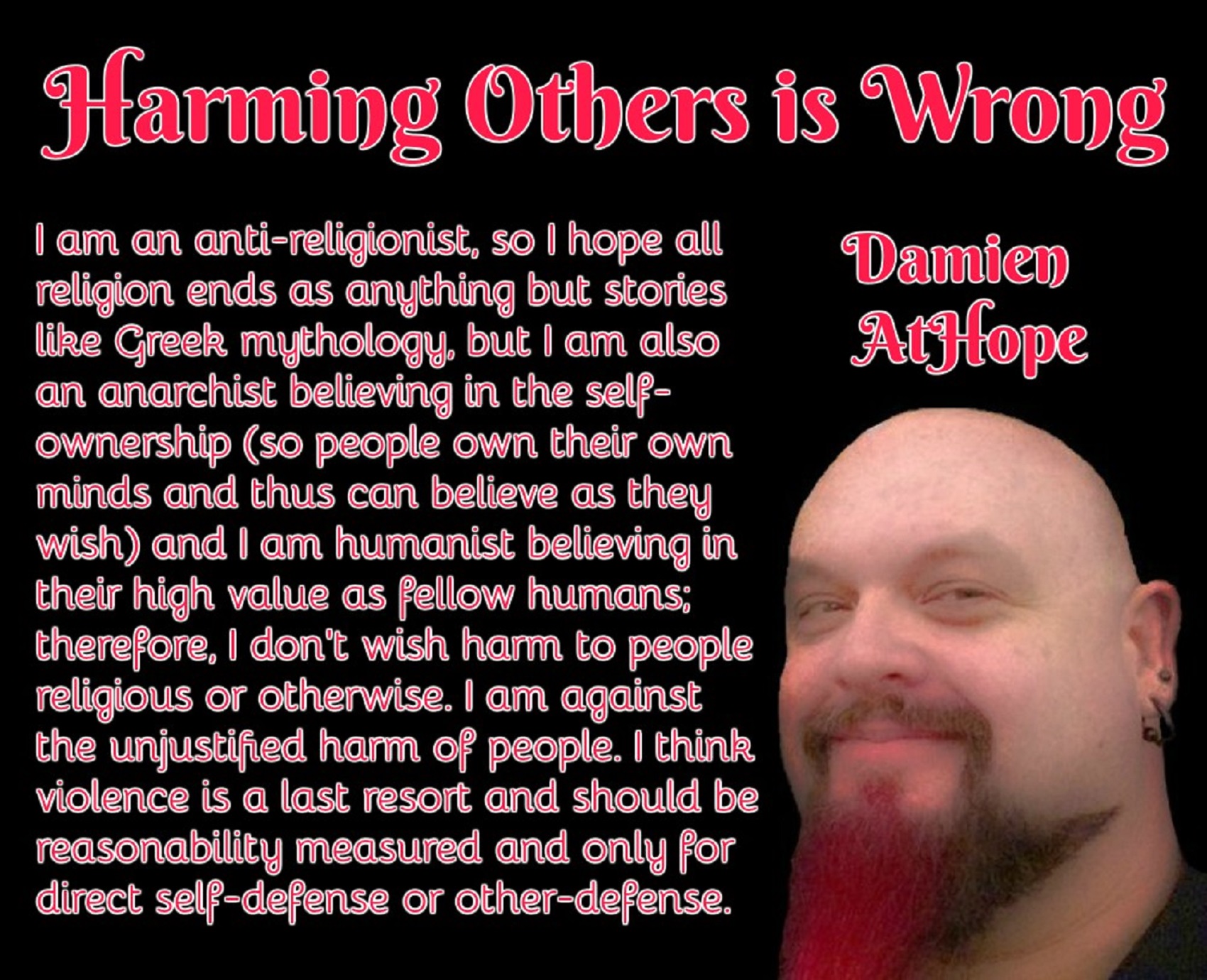

I strive to be a good human ethical in both my thinking and behaviors thus I strive to be:
Anti-racist, Anti-sexist, Anti-homophobic, Anti-biphobic. Anti-transphobic, Anti-classist, Anti-ablest, Anti-ageist, and as Always ???? Antifascist ????
In fact, I want to strive to avoid as much as I can bigoted thinking towards others based on their perceived membership or classification based on that person’s perceived political affiliation (Well: within reason, justice, and ethics), sex/gender, beliefs (Well: within reason, justice, and ethics), social class (Well: within reason, justice, and ethics), age, disability, religion (Well: within reason, justice, and ethics), sexuality (Well: within reason, justice, and ethics), race, ethnicity, language (Well: within reason, justice, and ethics), nationality, beauty, height, occupation (Well: within reason, justice, and ethics), wealth (Well: within reason, justice, and ethics), education, sport-team affiliation, music tastes or other personal characteristics (Well: within reason, justice, and ethics).
Although, I am a “very”, yes, VERY strong atheist, antitheist as well as antireligionist, My humanity is just as strong and I value it above my disbeliefs. My kind of people are those who champion humanity, the one’s who value kindness, love justice, and support universal empowerment for all humans, we are all equal in dignity, and all deserve human rights, due self-sovereignty.



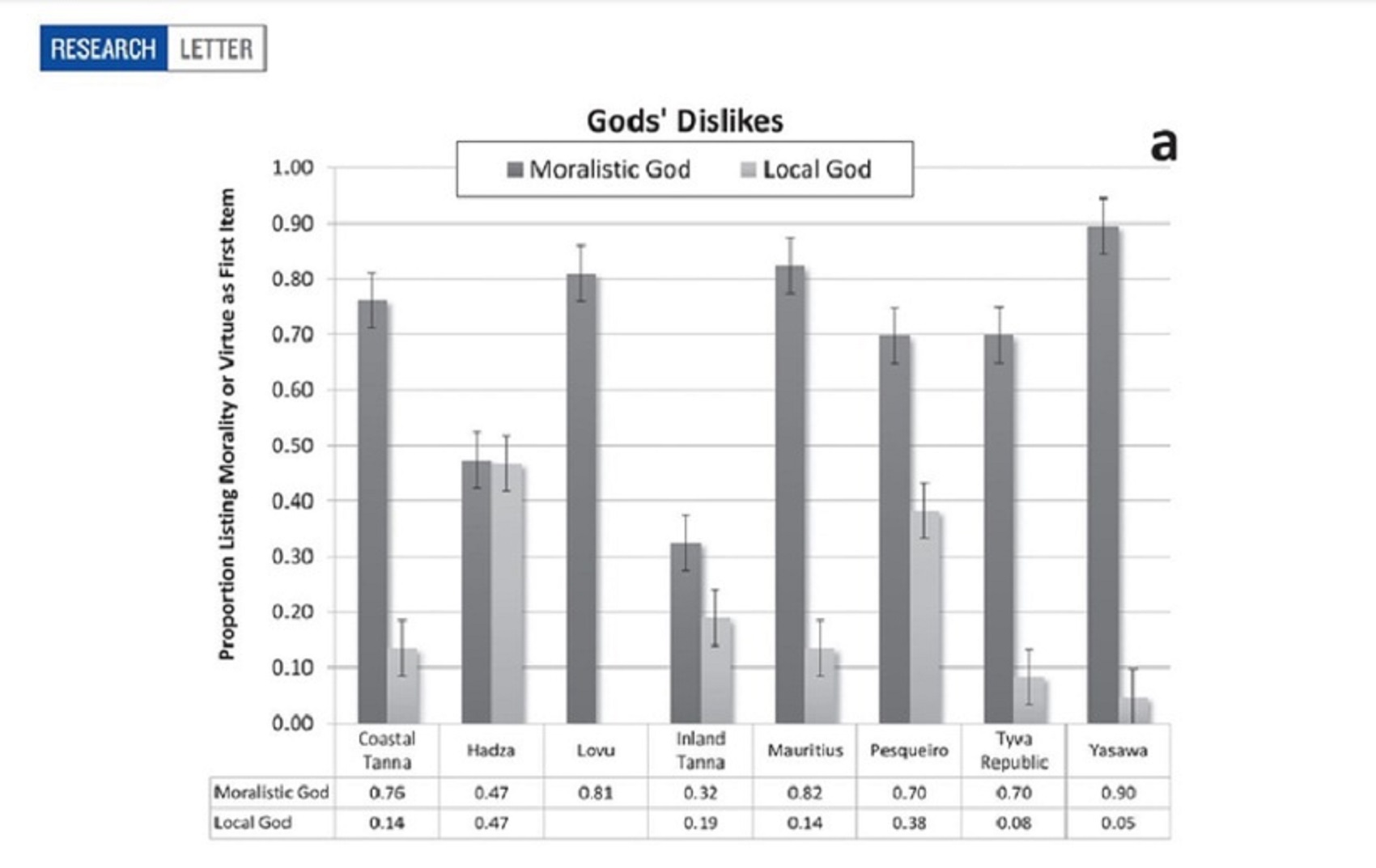
“The proportion of sample listing moral and virtue items for moralistic and local gods’ dislikes and likes by site. a, b, researchers asked participants to freely list up to five things that moralistic and local gods dislike and like.” ref
See above how much stronger control is a theme in moralistic gods? They are commonly much harsher with more rules and punishments.
“When societies were made up of small bands of hunter-gatherers, there was no need for an all-seeing god: everyone would know if you lied or stole, and they’d stop cooperating with you. Moral gods may have helped societies grow, by fostering cooperation, even among strangers.” ref

“Belief in moralistic gods makes people generous—towards coreligionists” ref

Slave/servant, inforcing Elite hierarchy, sacred oppression as good.
“Metal plate depicting the goddess Cybele on a chariot, 3rd century BCE, Greek-Bactrian Kingdom. It was found in the ruins of the Hellenistic city of Ajchanom, located near Talokan in Tachar Province of northern Afghanistan. Afghan National Museum in Kabul” #archaeohistories https://pic.twitter.com/AC3ouT0xbY
Cybele (Greek Κυβέλη) was a Phrygian goddess, originating in the mythology of Anatolia/Turkey.
“Cybele (Greek Κυβέλη) was a Phrygian goddess originating in the mythology of ancient Anatolia, whose worship spread to the cities of ancient Greece and the Roman Empire. She represented the Mother Earth and was worshiped as a goddess of fertility, nature, caverns, and mountains, as well as walls and fortresses. Like other ancient goddesses, such as Gaia (the “Earth”), she was known as potnia theron, referring to her ancient Neolithic roots as “Mistress of the Animals.” ref
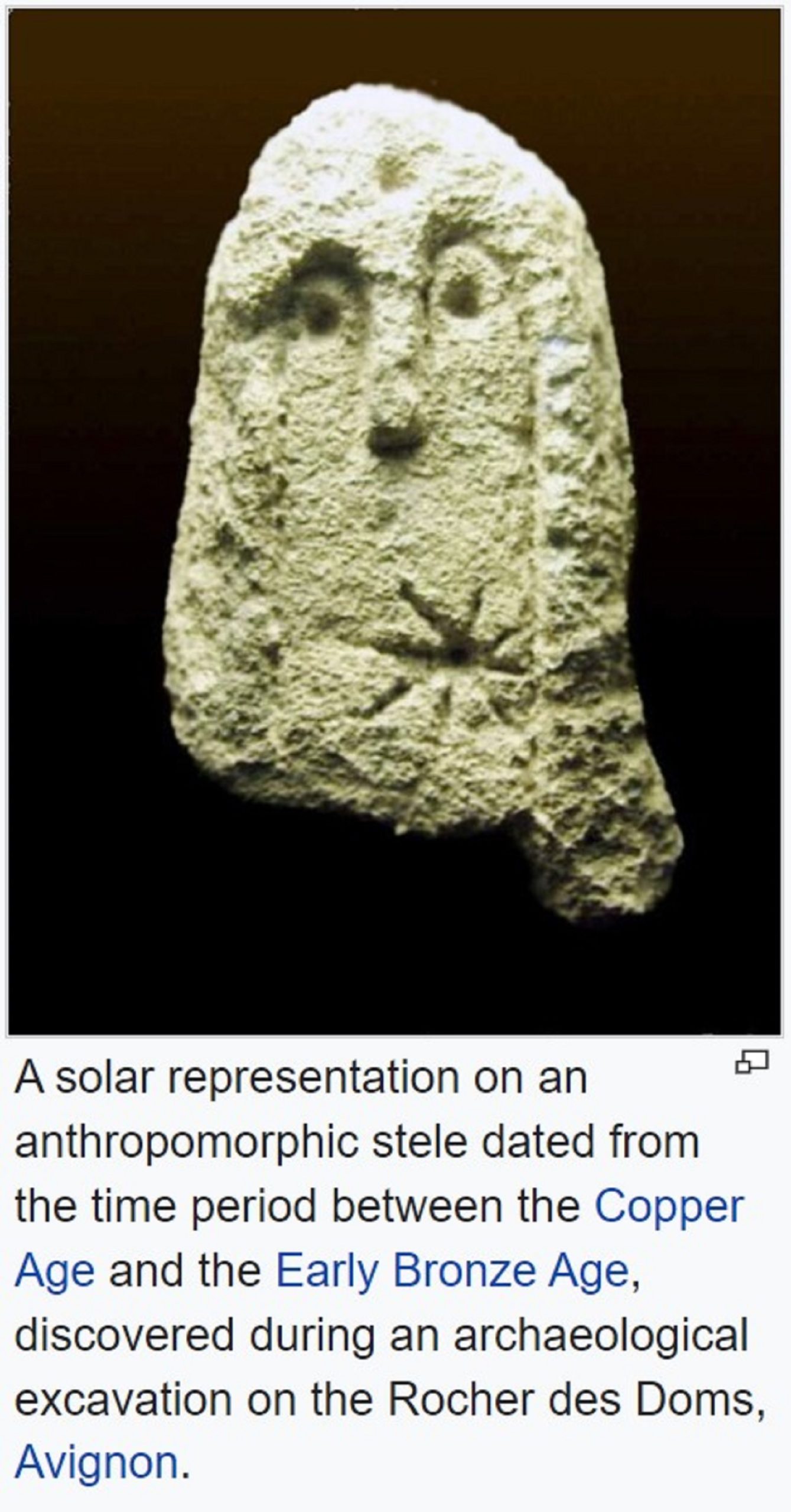
Solar deity?
“A solar deity (also sun goddess or sun god) is a sky deity who represents the Sun, or an aspect of it, usually by its perceived power and strength. Solar deities and Sun worship can be found throughout most of recorded history in various forms. The Sun is sometimes referred to by its Latin name Sol or by its Greek name Helios. The English word sun stems from Proto-Germanic *sunnǭ.” ref
“Predynasty Egyptian beliefs attribute Atum as the sun-god and Horus as god of the sky and sun. As the Old Kingdom theocracy gained power, early beliefs were incorporated with the expanding popularity of Ra and the Osiris-Horus mythology. Atum became Ra-Atum, the rays of the setting Sun. Osiris became the divine heir to Atum’s power on Earth and passed his divine authority to his son, Horus. Early Egyptian myths imply the Sun is within the lioness Sekhmet at night and is reflected in her eyes, or that it is within the cow, Hathor, during the night and reborn each morning as her son (bull).” ref
“Mesopotamian Shamash plays an important role during the Bronze Age, and “my Sun” was eventually used to address royalty. Similarly, South American cultures have a tradition of Sun worship as with the Incan Inti.” ref
“In Germanic mythology this is Sol, in Vedic Surya, and in Greek Helios (occasionally referred to as Titan) and (sometimes) as Apollo. In Proto-Indo-European mythology the sun appears to be a multilayered figure, manifested as a goddess but also perceived as the eye of the sky father Dyeus.” ref
Solar myth
“Three theories exercised great influence on nineteenth and early twentieth-century mythography. These theories were the “solar mythology” of Alvin Boyd Kuhn and Max Müller, the tree worship of Mannhardt, and the totemism of J. F. McLennan. Müller’s “solar mythology” was born from the study of the Indo-European language. Of the Indo-European languages, Müller believed Archaic Sanskrit is the closest to the language spoken by the Aryans.” ref
“Using the Sanskrit names for deities as a base he applied Grimm’s law to names for similar deities from different Indo-European groups to compare their etymological relationships to one another. In this comparison, Müller saw the similarities between the names and used these etymological similarities to explain the similarities between their roles as deities. Through this study Müller concluded that it is the different names for the Sun which led to the creation of multiple solar deities and their mythologies that were passed down from one group to another.” ref
“R. F. Littledale criticized the Sun myth theory when he illustrated that Max Müller on his own principles was himself only a solar myth, whilst Alfred Lyall delivered another attack on the same theory’s assumption that tribal gods and heroes, such as those of Homer, were only reflections of the Sun myth by proving that the gods of certain Rajput clans were actual warriors who founded the clans a few centuries ago, and were the ancestors of the present chieftains.” ref
Solar vessels and sun chariots
“Solar deities are revered in some of the major world religions. The sun was sometimes envisioned as traveling through the sky in a boat. A prominent example is the solar barque used by Ra in ancient Egyptian mythology. The Neolithic concept of a “solar barge” (also “solar bark”, “solar barque”, “solar boat” and “sun boat”, a mythological representation of the Sun riding in a boat) is found in the later myths of ancient Egypt, with Ra and Horus. Several Egyptian kings were buried with ships that may have been intended to symbolize the solar barque, including the Khufu ship that was buried at the foot of the Great Pyramid of Giza.” ref
“Examples of solar vessels include:
- Neolithic petroglyphs which are interpreted as depicting solar barges.
- The many early Egyptian goddesses that were seen as sun deities, and the later gods Ra and Horus were depicted as riding in a solar barge. In Egyptian myths of the afterlife, Ra rides in an underground channel from west to east every night so that he can rise in the east the next morning.
- The Nebra sky disk, which is thought to show a depiction of a solar barge.
- Nordic Bronze Age petroglyphs, including those found in Tanumshede, often contain barges and sun crosses in different constellations.” ref
“The concept the ‘solar chariot’ is younger than that of the solar barge and is typically Indo-European, corresponding with the Indo-European expansion after the invention of the chariot in the 2nd millennium BC. The reconstruction of the purported Proto-Indo-European religion features a ‘solar chariot‘ or ‘sun chariot’ with which the Sun traverses the sky.” ref
“Examples of solar chariots include:
- In Norse mythology, the chariot of the goddess Sól, drawn by Arvak and Alsvid. The Trundholm sun chariot dates to the Nordic Bronze Age, more than 2,500 years earlier than the Norse myth, but is often associated with it.
- Greek Helios (or Apollo) riding in a chariot, (see also Phaëton)
- Sol Invictus is depicted riding a quadriga on the reverse of a Roman coin.
- Vedic Surya riding in a chariot drawn by seven horses.” ref
“In Chinese culture, the sun chariot is associated with the passage of time. For instance, in the poem Suffering from the Shortness of Days, Li He of the Tang dynasty is hostile towards the legendary dragons that drew the sun chariot as a vehicle for the continuous progress of time. The following is an excerpt from the poem:
I will cut off the dragon’s feet, chew the dragon’s flesh,
so that they can’t turn back in the morning or lie down at night.
Left to themselves the old won’t die; the young won’t cry.” ref
“The Sun was also compared to a wheel, for example, in Greek hēlíou kúklos, Sanskrit suryasya cakram, and Anglo-Saxon sunnan hweogul, all theorized to be reflexes of PIE *swelyosyo kukwelos. Scholarship also points to a possible reflex in poetic expressions in Ukrainian folksongs.” ref
Solar Myths and Gender?
“Solar deities are often thought of as male (and lunar deities being female) but the opposite has more often been the case. In Germanic mythology the Sun is female, and the Moon is male. Other cultures that have sun goddesses include the Lithuanians (Saulė) and Latvians (Saule), the Finns (Päivätär, Beiwe) and the related Hungarians. Sun goddesses are found around the world in Australia (Bila, Wala); in Indian tribal religions (Bisal-Mariamma, Bomong, ‘Ka Sgni) and Sri Lanka (Pattini); among the Hittites (Wurusemu), Egyptians (Hathor, Sekhmet), and Canaanites (Shapash); in the Canary Islands (Chaxiraxi, Magec); in Native America, among the Cherokee (Unelanuhi), Natchez (Oüa Chill/Uwahci∙ł), Inuit (Malina), and Miwok (He’-koo-lās); and in Asia among the Japanese (Amaterasu).” ref
“The cobra (of Pharaoh, son of Ra), the lioness (daughter of Ra), and the cow (daughter of Ra), are the dominant symbols of the most ancient Egyptian deities. They were female and carried their relationship to the sun atop their heads, and their cults remained active throughout the history of the culture. Later a sun god (Aten) was established in the eighteenth dynasty on top of the other solar deities, before the “aberration” was stamped out and the old pantheon re-established. When male deities became associated with the sun in that culture, they began as the offspring of a mother (except Ra, King of the Gods who gave birth to himself).” ref
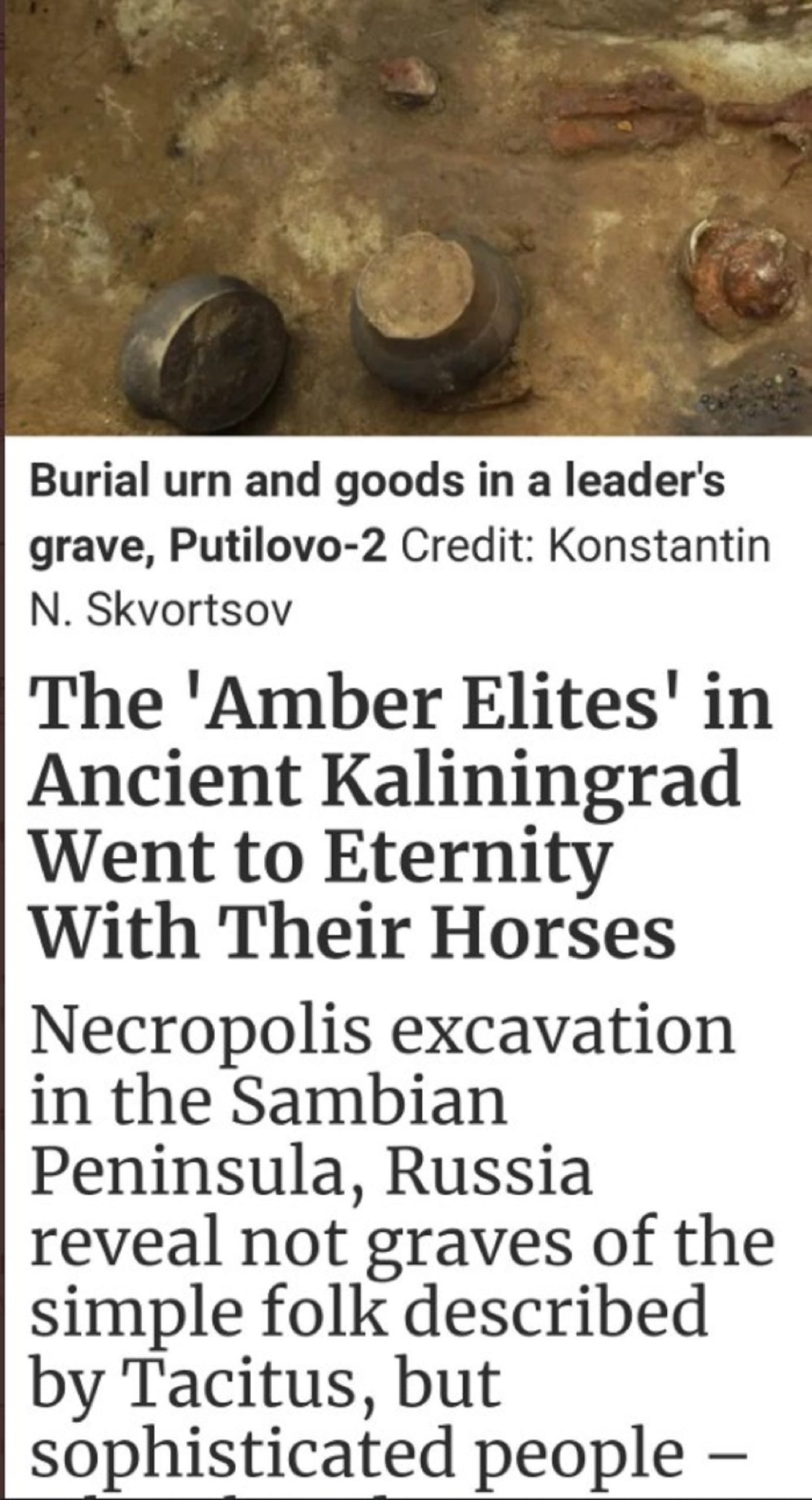
The ‘Amber Elites’ in Ancient Kaliningrad Went to Eternity With Their Horses
“Necropolis excavation in the Sambian Peninsula, Russia reveal not graves of the simple folk described by Tacitus, but sophisticated people – who played Roman games.” ref
“On the shores of the Baltic Sea, surrounded on three sides by cold waters and blasted by chilly northern winds, lies the Sambian peninsula. Today part of the Kaliningrad oblast in Russia, in the past this region was one of the birthing places of the Baltic kingdoms; later it would become a key part of the Prussian kingdom formed by the Teutonic knights in the 13th century, with its capital in Königsberg.” ref
“And for thousands of years, precious amber would wash up onto the cold shores of this fertile land, which became a key source of the stone to the ancient world for over 2,000 years. (The fossilized resin pieces washing up ashore originate in the now submerged “blue earth” layer in the Sambian Peninsula northwest of Kaliningrad. )” ref
“In his treatise Germania, written around 98 C.E., Tacitus described the inhabitants of these territories, whom he called the Aesti, and their connection to the amber trade. They weren’t necessarily appreciative of the value of the treasure showing up on their beaches, according to him.” ref

The Roots of Inequality: An Exchange David Wengrow, reply by Kwame Anthony Appiah
In response to: Digging for Utopia from the December 16, 2021 issue
To the Editors:
“In The Dawn of Everything David Graeber and I present a new history of humanity, based on the latest findings in our fields of archaeology and anthropology. These findings challenge long-held assumptions about the origins of inequality, the nature of freedom and slavery, the roots of private property, and the relationship between society and the state. They present fresh opportunities for a dialogue between archaeology, anthropology, and philosophy, but Kwame Anthony Appiah in his review of the book prefers to challenge the empirical basis of our work [NYR, December 16, 2021]. He argues that we distort our sources in order to present an artificially rosy picture of our species’ past and its prospects for greater freedom.” ref
“For example, Appiah is dissatisfied with our account of the Ukrainian “mega-sites,” huge prehistoric settlements that exhibit no evidence for temples, palaces, central administration, rich burials, or other signs of social inequality. We note that population levels are “estimated in the many thousands per mega-site, and probably well over 10,000 in some cases.” Appiah alleges that these figures are inflated, based on a “discredited maximalist model.” He cites archaeologist John Chapman in support. According to Appiah, Chapman argues that the mega-sites were not cities at all, but seasonally occupied festival grounds.” ref
“In fact, Chapman proposes three models of habitation, ranging from seasonal to relatively permanent habitation. He discounts none of them and argues that—whichever one adopts—the mega-sites can indeed be considered “cities,” and strikingly egalitarian ones at that. Far from adopting a “maximalist model,” the population figures we give in The Dawn of Everything are more conservative than those offered by some other archaeologists, which range above 40,000. Appiah has misrepresented our position, and Chapman’s, to create a false impression.” ref
“Elsewhere, Appiah alleges that we mischaracterize the work of Jonathan Mark Kenoyer, an expert on the Bronze Age civilization of the Indus Valley. According to Appiah, Kenoyer argues that the ancient site of Mohenjo-daro was “likely governed as a city-state,” something we dispute in The Dawn of Everything. We are hardly the first to do so. Another expert, Gregory Possehl, argued that the Indus cities were organized on more egalitarian lines, and the most recent scholarship comes down firmly on his side. We don’t cite Kenoyer for his views on political organization, but for his work on urban craft specialization. So what is Appiah’s objection? Is he saying we cannot cite Kenoyer’s insights on any one aspect of Indus archaeology without subscribing to all his other views as well? Does Appiah’s own citation of Alvin Goldman on causal theories of knowledge grant us license to assume he agrees with Goldman on social epistemology?” ref
“With regard to Mesopotamia, Appiah accuses us of drifting, in the space of a hundred pages, from a negative characterization of Uruk’s early phases—as lacking evidence for monarchy—to their positive characterization as examples of collective self-rule. He forgets the ground we cover in those pages, which review diligent work on the topic by Assyriologists, ancient historians, and archaeologists. What it shows is that, even in later periods of monarchy and empire, Mesopotamian cities exhibited a remarkable degree of self-governance through neighborhood assemblies, local wards, and councils. Where does Appiah think those forms of urban self-government came from? Would he have us believe the inhabitants of the earliest cities had no knowledge of them?” ref
“With reference to Teotihuacan, in the Valley of Mexico, Appiah suggests that few archaeologists would countenance the views of art historian Esther Pasztory about the city’s political structure. But the opposite is true. The latest archaeological studies vindicate Pasztory’s view that Teotihuacanos rejected dynastic personality cults and built a society where wealth, resources, and high-quality housing were distributed in a more equal fashion. We could have listed every dissenting opinion, but then—as we say in the book—we are trying to strike a balance:
Had we tried to outline or refute every existing interpretation of the material we covered, this book would have been two or three times the size, and likely would have left the reader with a sense that the authors are engaged in a constant battle with demons who were in fact two inches tall.” ref
“Appiah presents as novel our “claim” that the Neolithic site of Çatalhöyük, in Turkey, lacks evidence of central authority. In fact, this is the consensus among archaeologists. Ian Hodder, longtime site director, characterizes Çatalhöyük as a fiercely egalitarian community that, despite its large size, held inequality at bay for a thousand years. If our agenda—as Appiah insists—were to find some “primordial utopia” among our Neolithic ancestors, surely we would have embraced this conclusion. In fact, we question it, pointing out the likelihood of seasonal variations in the social organization of the town. According to Appiah, we see in Çatalhöyük a “gynocentric society.” Not so. We draw attention to the importance of women’s knowledge and roles in these early Neolithic societies, but that’s hardly the same thing.” ref

Dr. Oliver Dietrich @odietrich_ Opinions (evidently) my own.Archäologe/Archaeologist. Neolithic – Bronze Age.
You think neet but who gives a fuck, right? Well, to me it is something, I think we are looking at murder, likely, one ring one death, or new slaves as people used them as neck jewelry thinking it aided them magically. It did not help them if we see these…
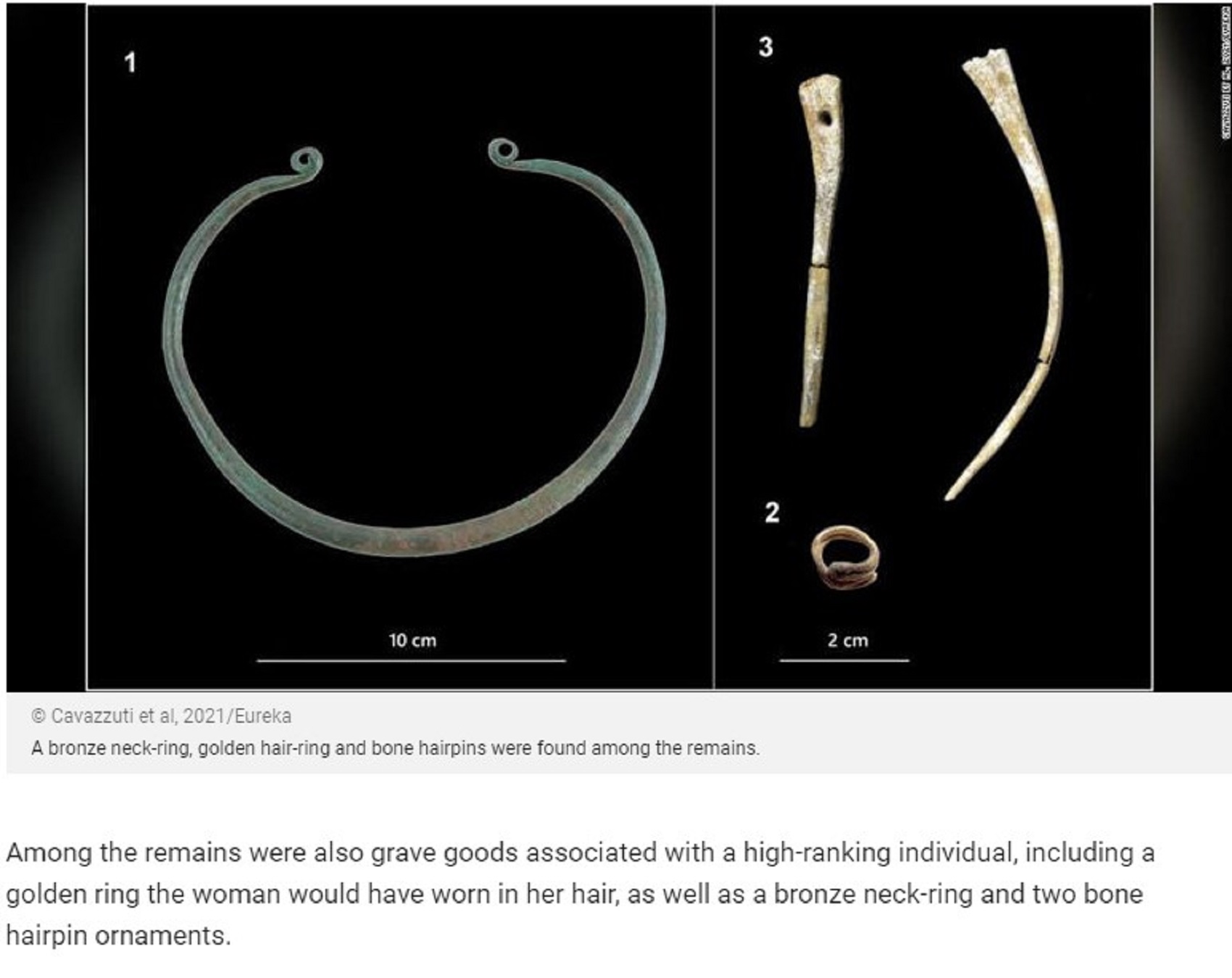
That was in a sacred burial as they were seen as sacred.
“Ancient cemetery findings include Bronze Age woman and her twin babies. Peering into the life of a young woman who lived 4,000 years ago during the Bronze Age is now possible thanks to new research. The young woman, who lived along the Danube River in Hungary, was found with twin 32-week-old fetuses in a cemetery. Among the remains were also grave goods associated with a high-ranking individual, including a golden ring the woman would have worn in her hair, as well as a bronze neck-ring and two bone hairpin ornaments.” ref
“In a quest to understand more about the Bronze Age Vatya community in Central Europe, researchers analyzed remains from graves at one of the largest Middle Bronze Age urn cemeteries found in Central Hungary. The Szigetszentmiklós-Ürgehegy cemetery was first discovered during the construction of a supermarket south of Budapest more than 20 years ago. The field was full of covered urns, rather than graves, and they were dated from 1500 BC to 2150 BCE.” ref
“It was a custom for the Vatya culture to cremate their dead, something that has hindered research about them. But University of Bologna researcher Claudio Cavazzuti and his colleagues used new sampling methods to learn more about the remains contained within the urn cemetery. They analyzed human tissues from 29 graves, including three actual burials and 26 cremations. When they came to gravesite 241, they found a surprise. The urn contained not one but three individuals: the remains of a woman between 25 to 35 years old, as well as twin 32-week-old fetuses.” ref

Stunning hoard of Bronze Age jewelry
“Uncovered, the stash, located just outside of the municipality of Alingsås in southern Sweden. The entire hoard has about 50 artifacts, and roughly 80% of the items appear to be associated with a high-status woman (or women) from the Late Bronze Age, about 2,700 to 2,500 years ago, judging from the style of the objects, Ling said. The team is currently performing radiocarbon dating on charcoal pieces from the sediment where the hoard was found, he added. The many treasures that were discovered include neck rings, bronze spirals, necklaces, arm rings, pins, and ankle rings, as well as the head of an ax. “The interesting thing is [the hoard objects] are not very common in Scandinavia, although they are common in northern Poland and northern Germany,” which indicates the existence of a “strong trade network,” Ling said.” ref
“This hoard isn’t part of a human burial, however. Instead, it’s a collection of high-status objects that were purposefully buried, Ling said. It’s possible that during the Bronze Age, people in this region performed ceremonies that were similar to potlatch, a custom practiced by Indigenous groups such as the Haida and Tlingit in the Pacific Northwest of the U.S. and Canada, Ling said. Although potlatch customs vary across the Pacific Northwest, they generally involve a lavish ceremonial feast, often with dancing and singing, during which people give away or destroy parts of their wealth to show their superior generosity and enhance their social standing, according to The Canadian Encyclopedia.” ref
“This buried Bronze Age hoard is likely “a self-investment, it’s a manifestation of power that these elites are doing, showing that ‘We can afford [this], we have this ability, you do not have this,'” Ling said. “[They] believed it showed their power by offering their surplus, so to speak.” It’s also possible that the hoard was buried in parallel with an individual at another location, but archaeologists have yet to find a grave, he said. In this scenario, the hoard might have been buried as a type of potlatch, as well as a way to help the deceased in the afterlife, he said. It’s unlikely the hoard was buried for safekeeping or to hide it from enemies, Ling noted.” ref
“During the Bronze Age, people in what is now Sweden were farmers and agropastoralists, meaning they had a mix of farming and livestock. Surpluses were often invested in trade, as it was also a known maritime society, “because we do import all metals in Scandinavia at that phase, both copper and tin, and the bronzes are made of 90% copper and 10% tin,” Ling said. The copper, for instance, came from the British Isles, the Iberian Peninsula, and Central Europe, he noted.” ref


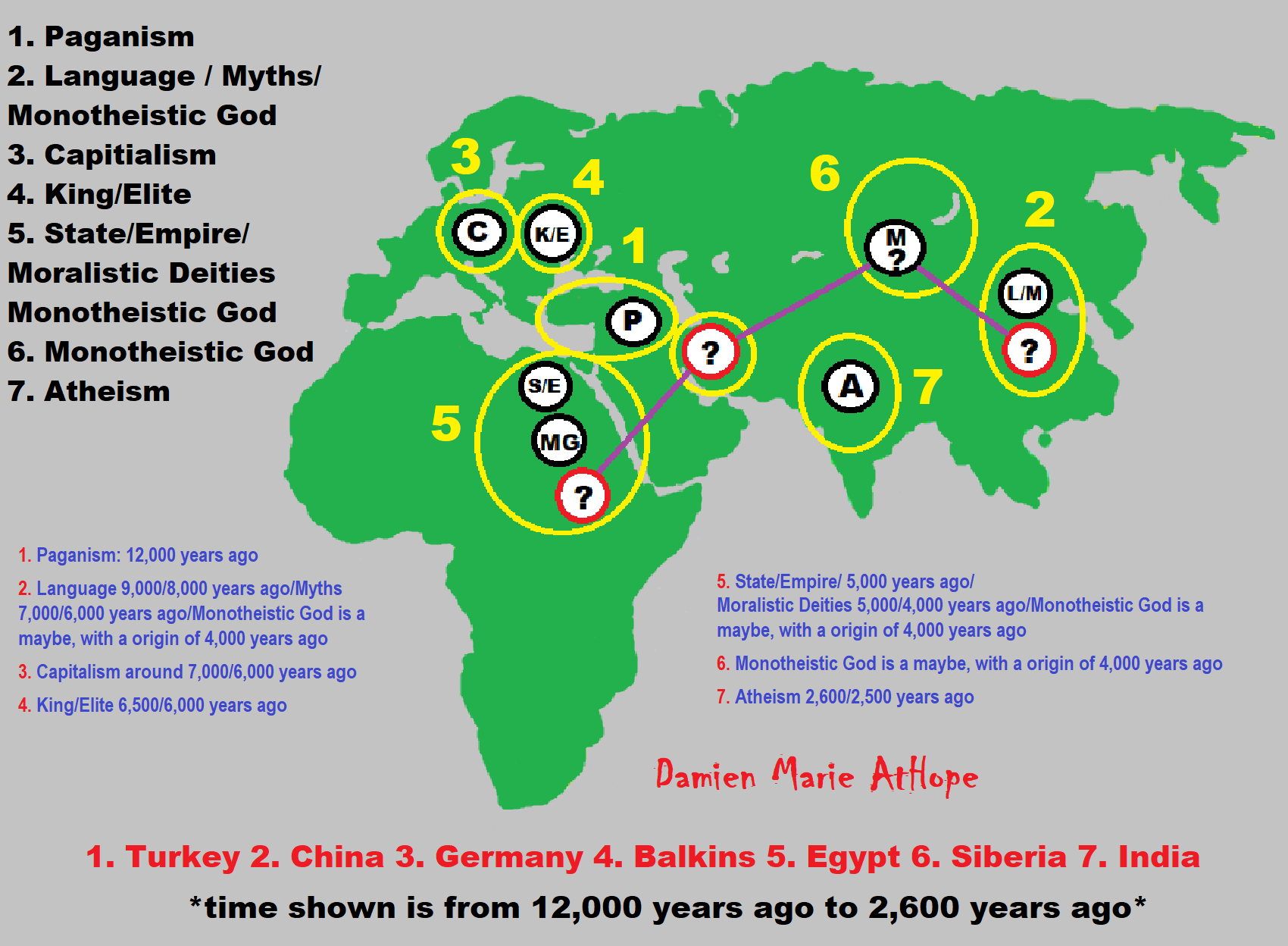
1. Paganism: 12,000 years ago
2. Language 9,000/8,000 years ago/Myths 7,000/6,000 years ago/Monotheistic God is a maybe, with an origin of 4,000 years ago
3. Capitalism around 7,000/6,000 years ago
4. King/Elite 6,500/6,000 years ago
5. State/Empire/ 5,000 years ago/
Moralistic Deities 5,000/4,000 years ago/Monotheistic God is a maybe, with an origin of 4,000 years ago
6. Monotheistic God is a maybe, with an origin of 4,000 years ago
7. Atheism 2,600/2,500 years ago

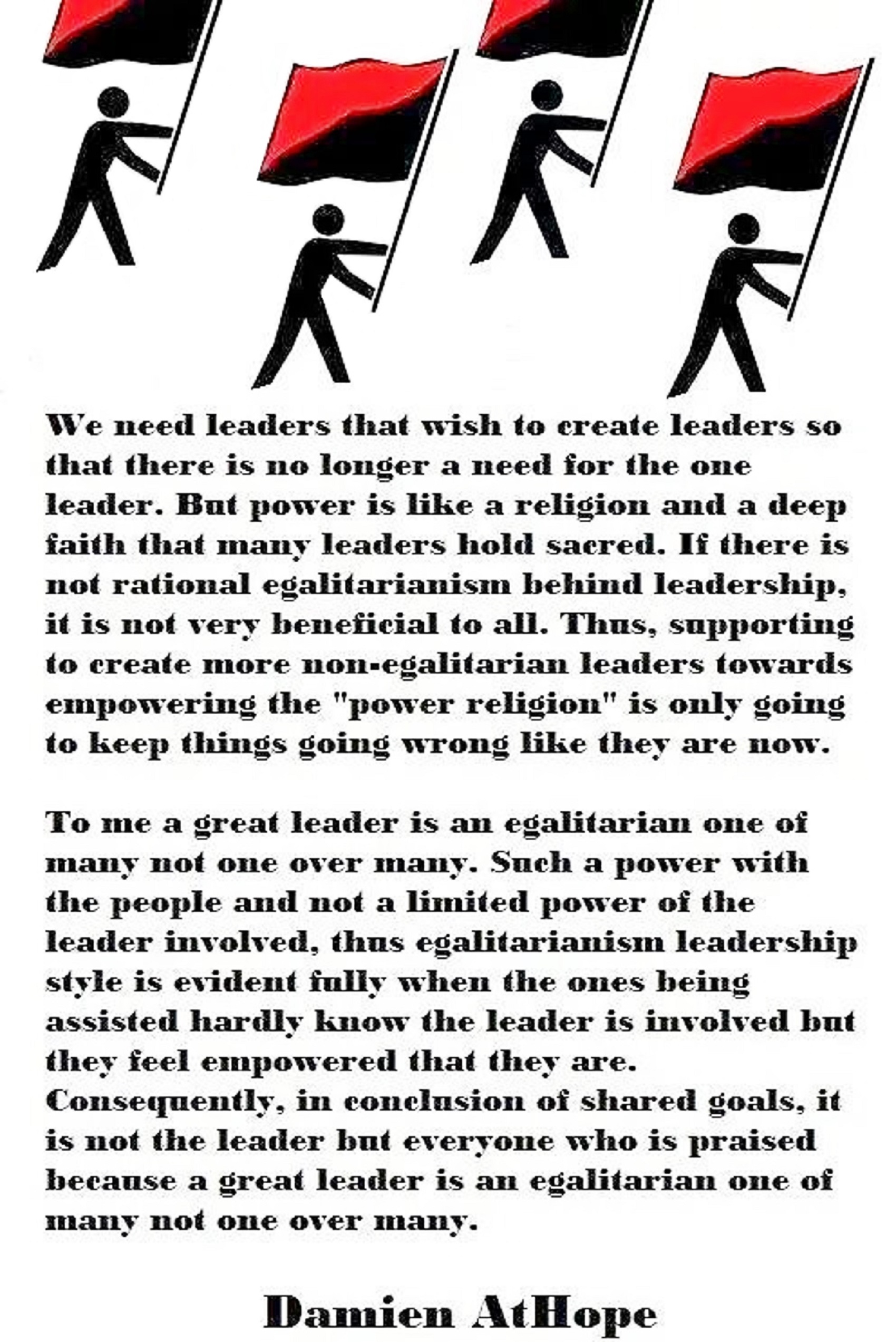




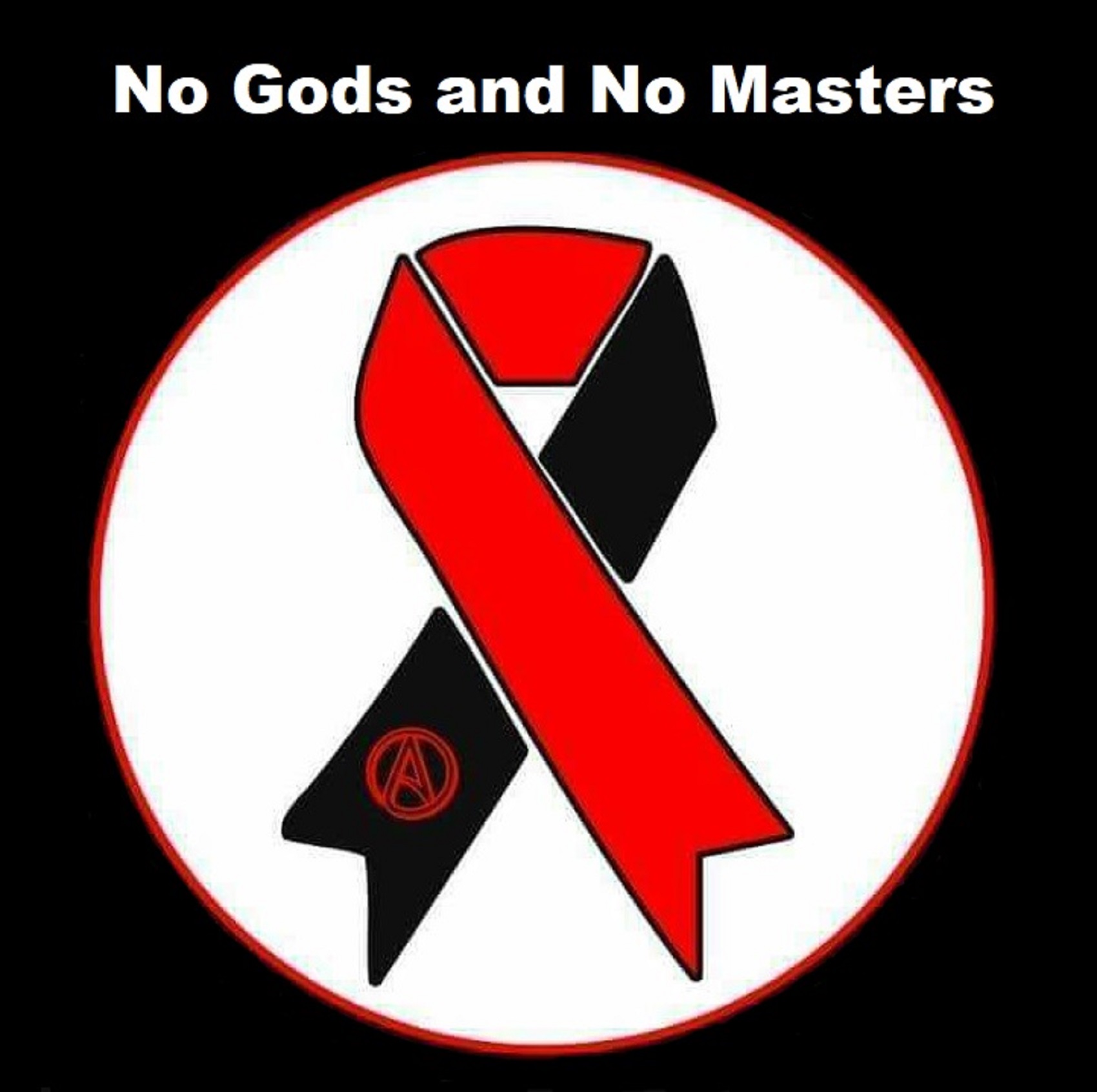



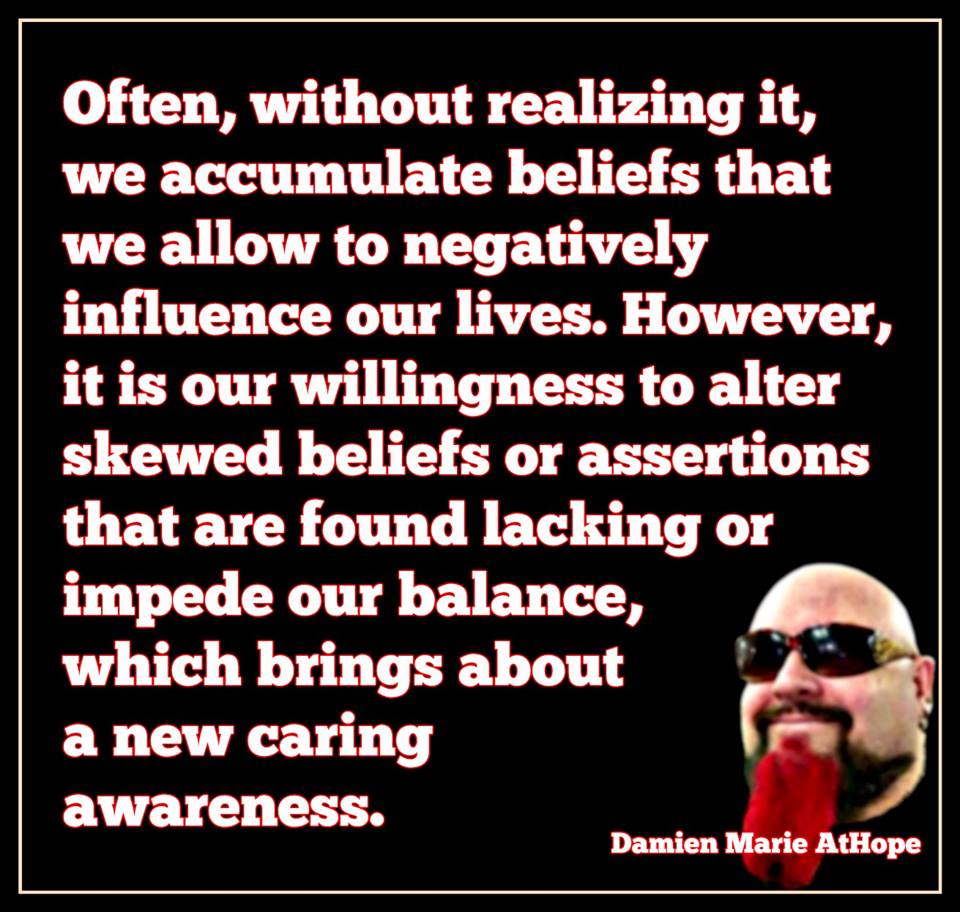


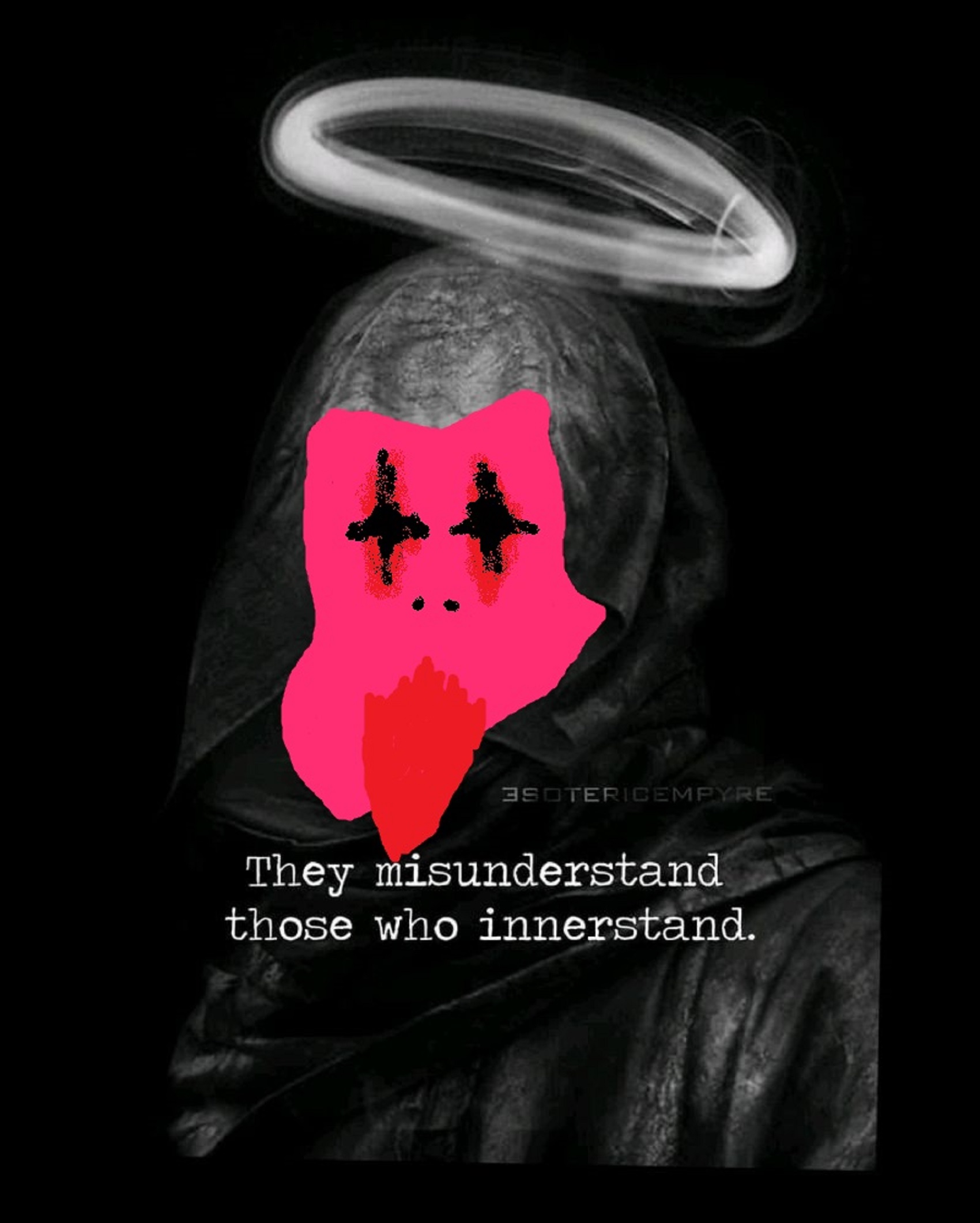

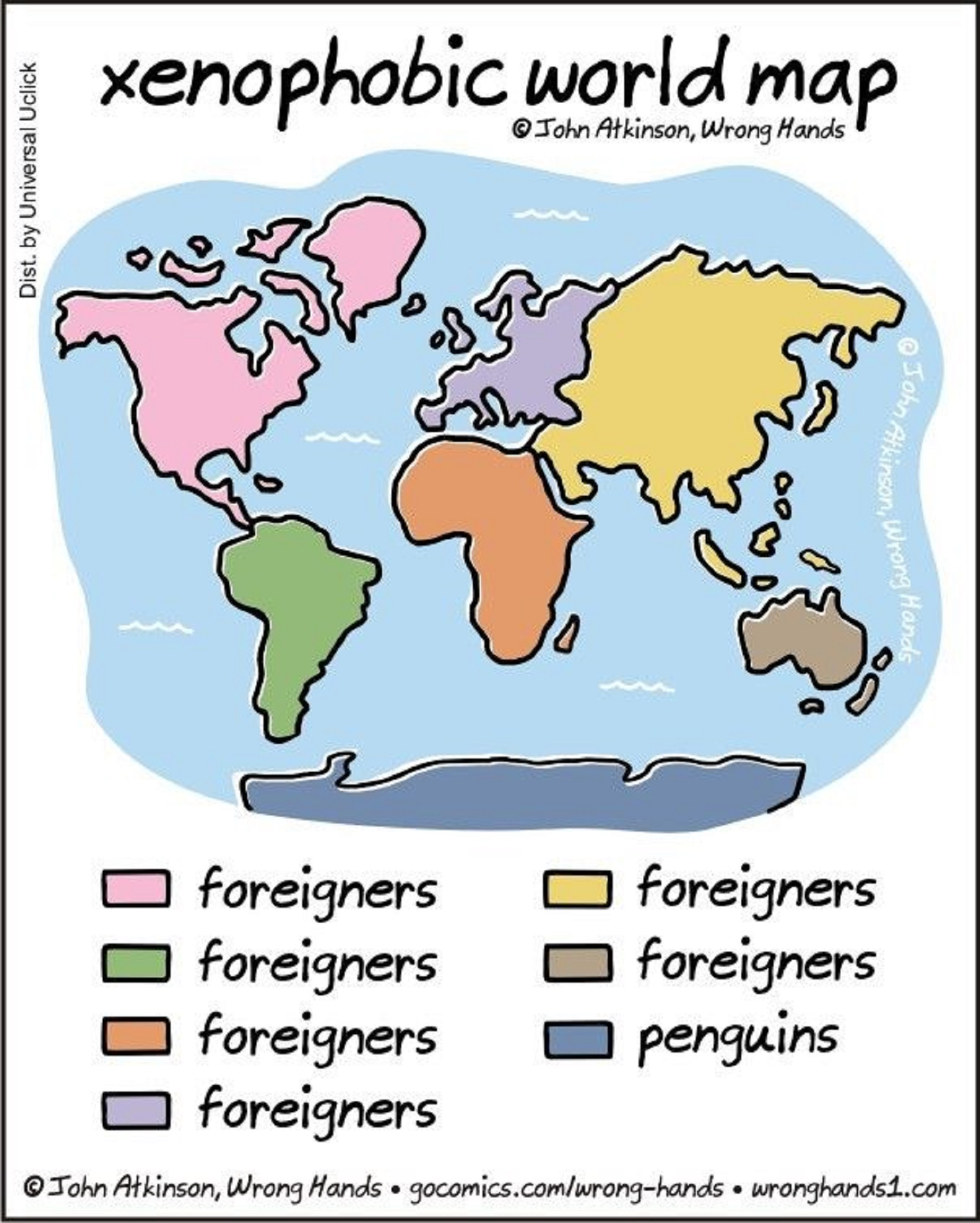
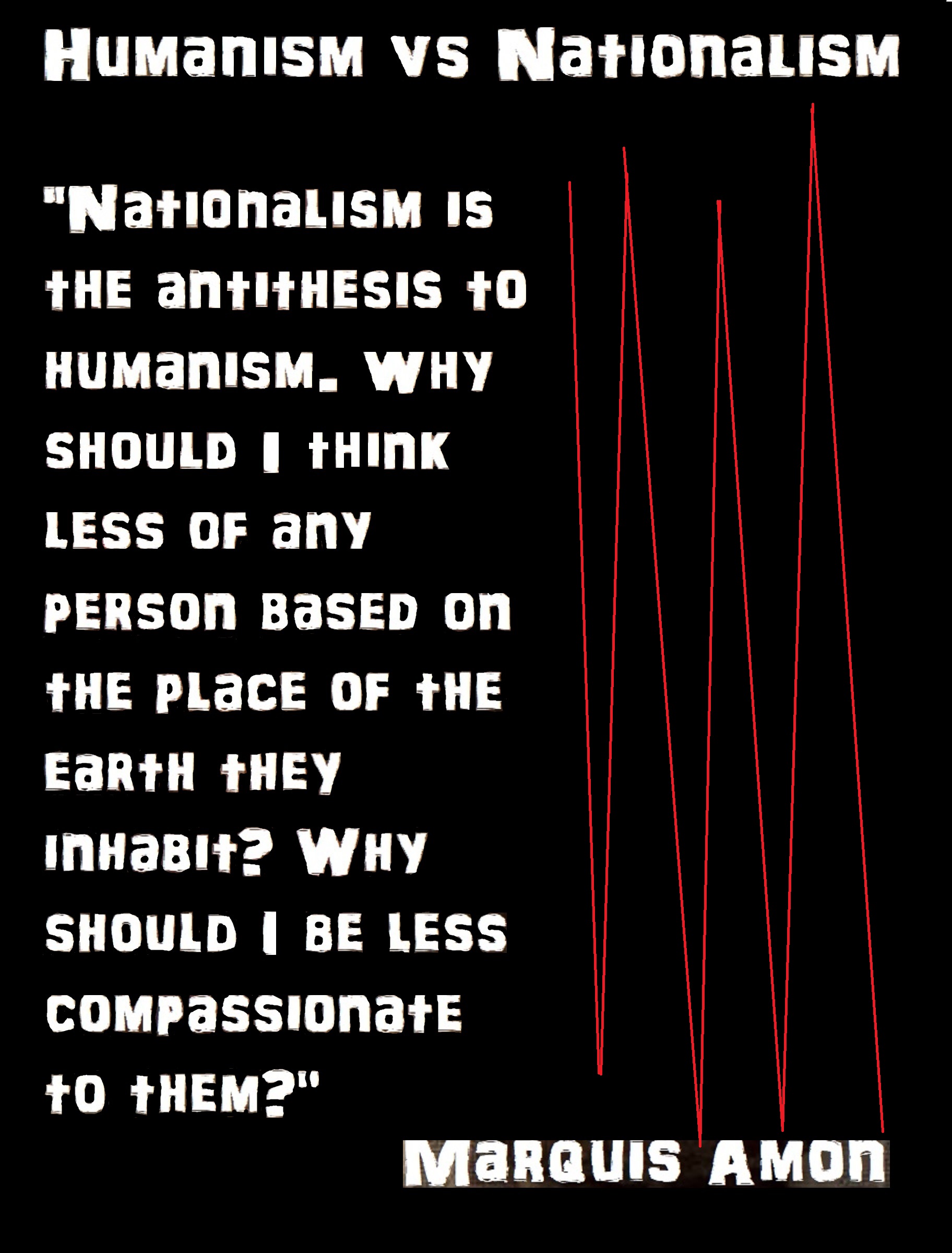
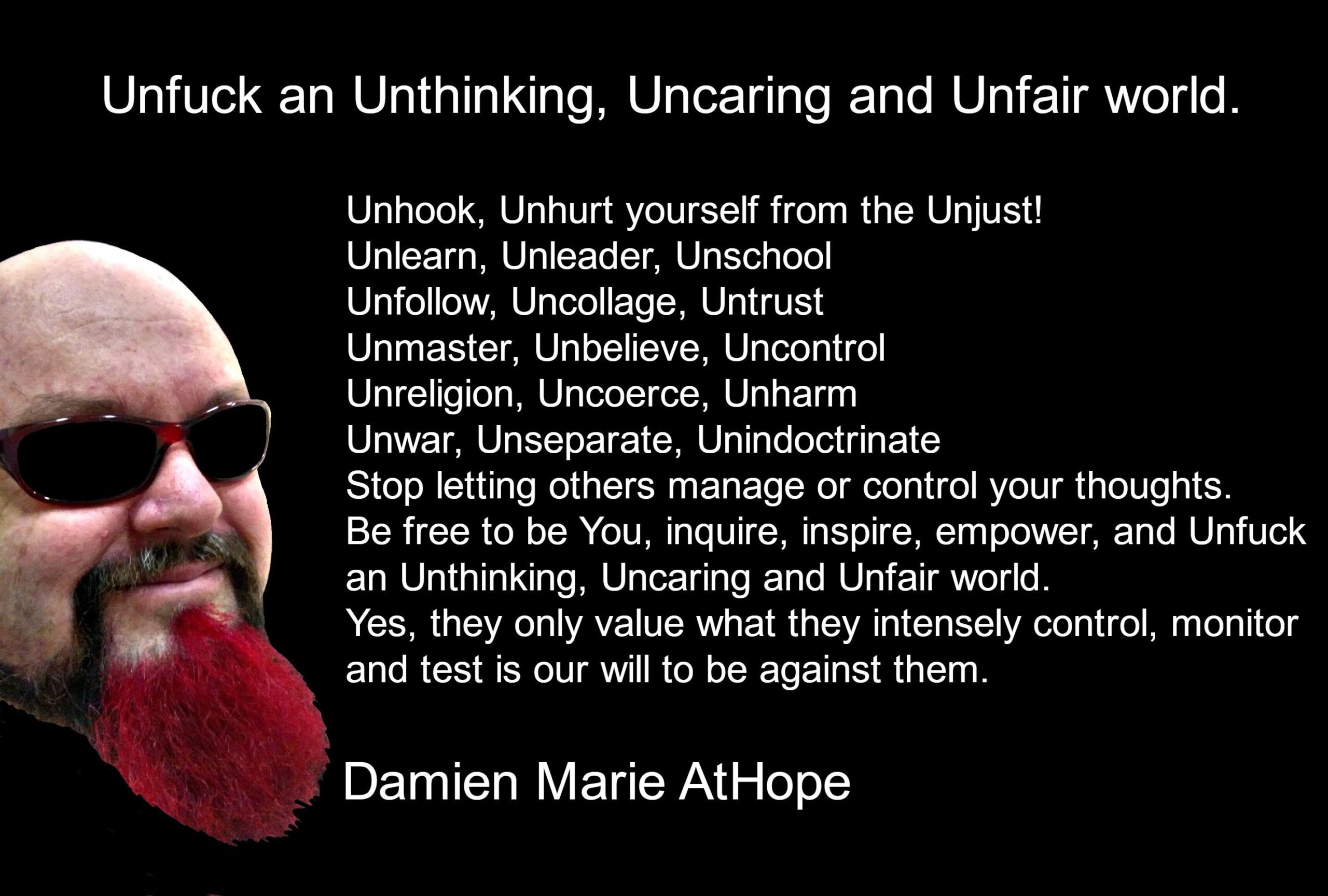









Due to the popular opinion that I post too much on Twitter, cool. Ok, I am retiring early not going to wait until April as before rather now I changed my mind as I am angry. So this blog’s video, my last video on anarchism and socialism, my Twitter posting/responses will go from 90% now, to 10 % or so.


I am the best in the world at understanding the process of the evolution of religion throughout all time and up to 5,000 years ago across the entire world. But people think I post too much. As if there is anyone else that can explain it all like me but I am not to post too much?
I offer all my knowledge for free trying to empower the world. The world: you post too much! Would you like it better if I made everyone pay for everything I know? Of should I keep posting for free even though I like posting lots of stuff as I want to teach all I have learned?
Everyone acts like they don’t have to read all my “free” education blogs thinking they will just buy my book. However, my book could be priced beyond what most people like paying for books. Like $100,00 to $200,00. As it will have 250 of my art information sheets and my knowledge.
Also, people need to understand the blog posts are more extra information that will not be in the book. The book will be like info and more just stating facts and my thoughts about how it all connects not as much proof of why because that is what I made the free blog posts for.
So the only way to understand not just my thoughts but why they are reasonable you must read all my prehistory blog posts even though they are very long. I am trying to empower others with knowledge.
People love telling me to read this or that book but then complain that I post too much or my blog posts are way too long. Yeah, you mean like a book for free? How terrible of me, to force, free knowledge on others, what was I thinking???
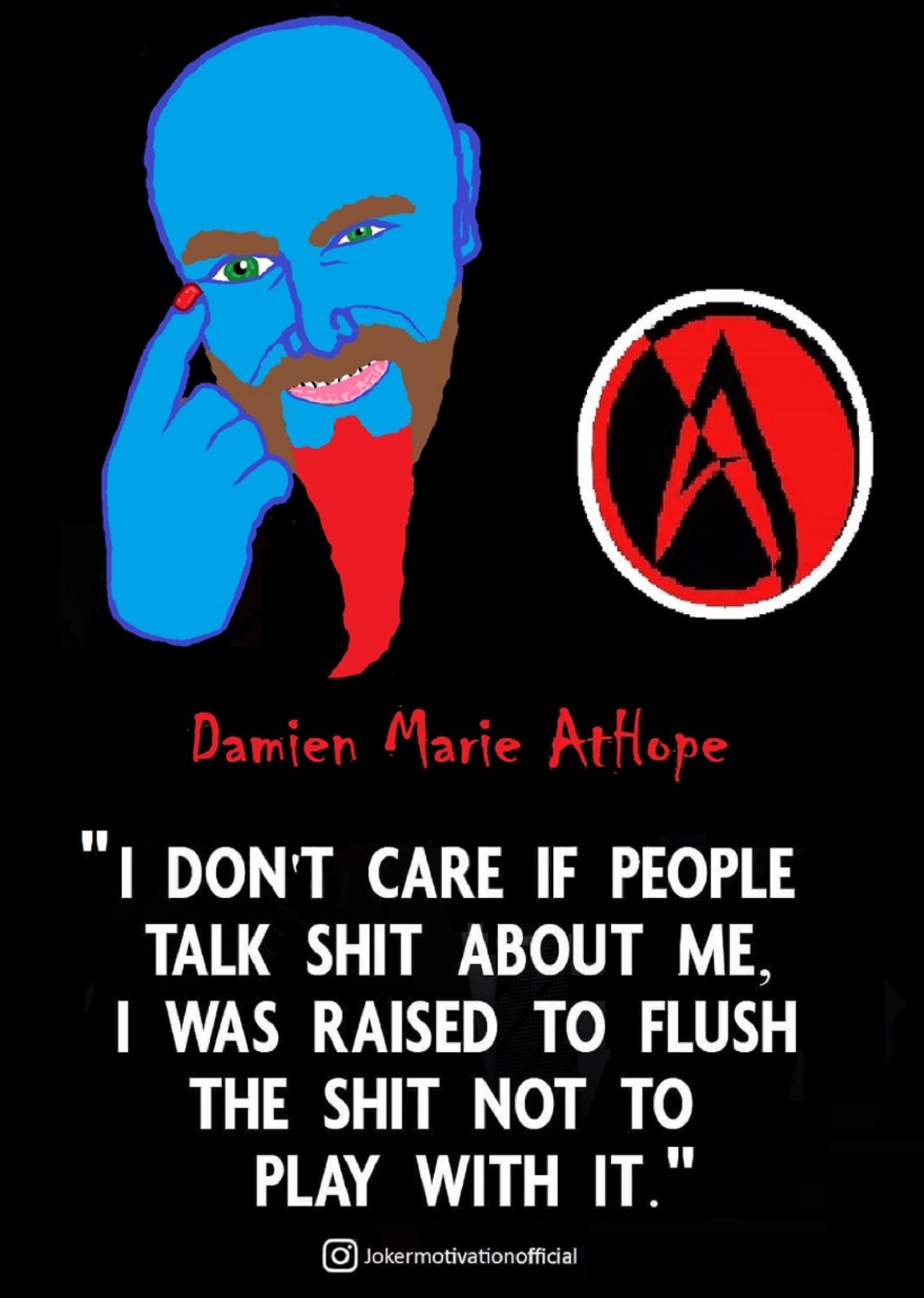
- I started just writing quotes of wisdom, but not many read boring text… So, I saw I needed to go where the people were at, the ones that I was trying for anyway. I made memes, art, videos, blogs, or anything I could think of, to do all I can, for as many as I can. Blood on the hands of the claimed upper classes who do nothing to help.
- I am for the people, the general public, desiring to help all I can, with all I am, giving them thinking for free, that have been locked up in collages or the minds of those who wish to stay elite. I am a freedom fighter and I want power back where it belongs, in the hands, of the so-called average people.
- We are all an equal humanity, even I am a nothing, a no one, just one of the whole, which we all must care about if we want true human-flourishing, and if it must, let it start with me. May I be a true person of value, an honorable human, just another, a fellow dignity-being.
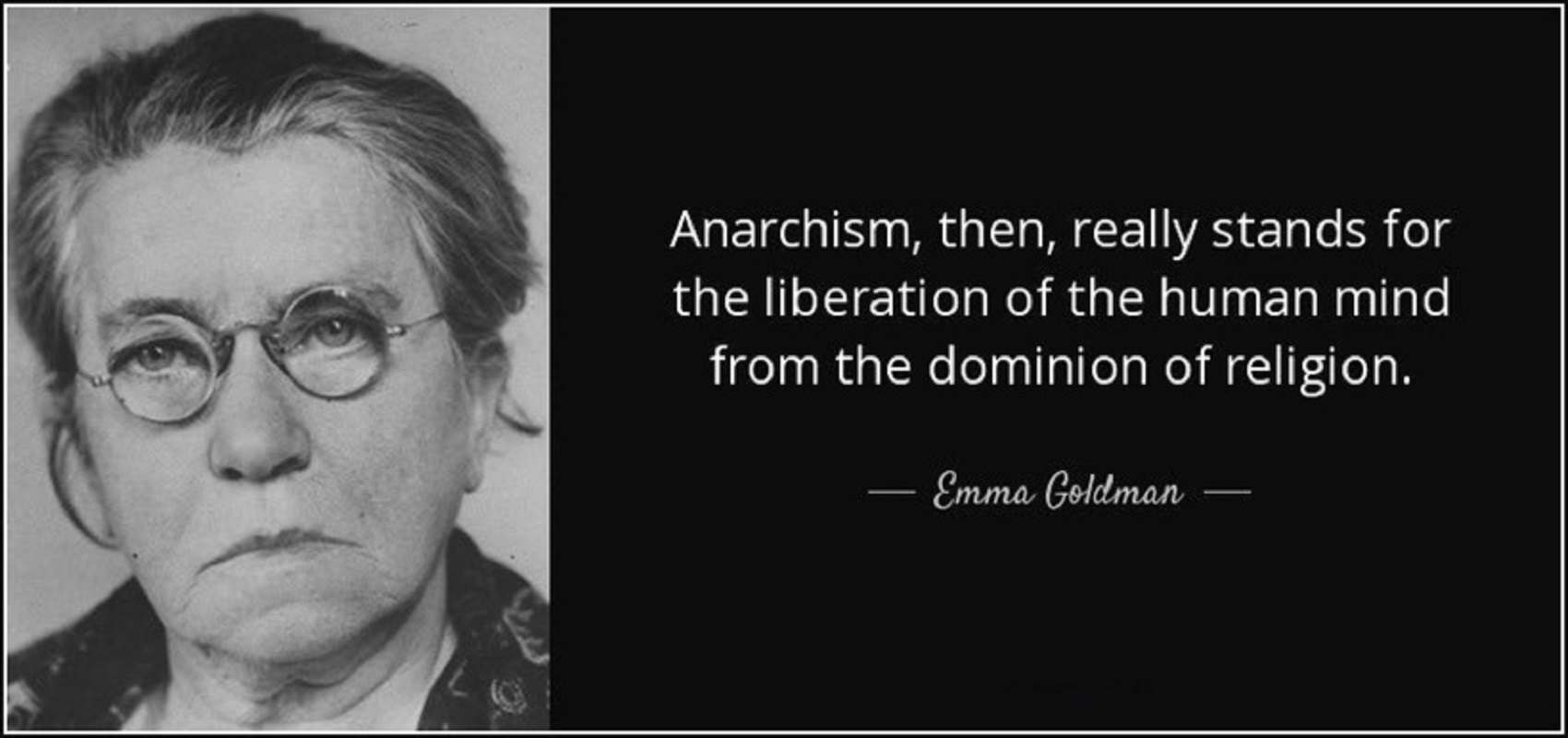

Hollywood, CA. at the Golden Globes that was being protested by the Westboro Baptist Church. So I was counter-protesting them. 2013 I think.
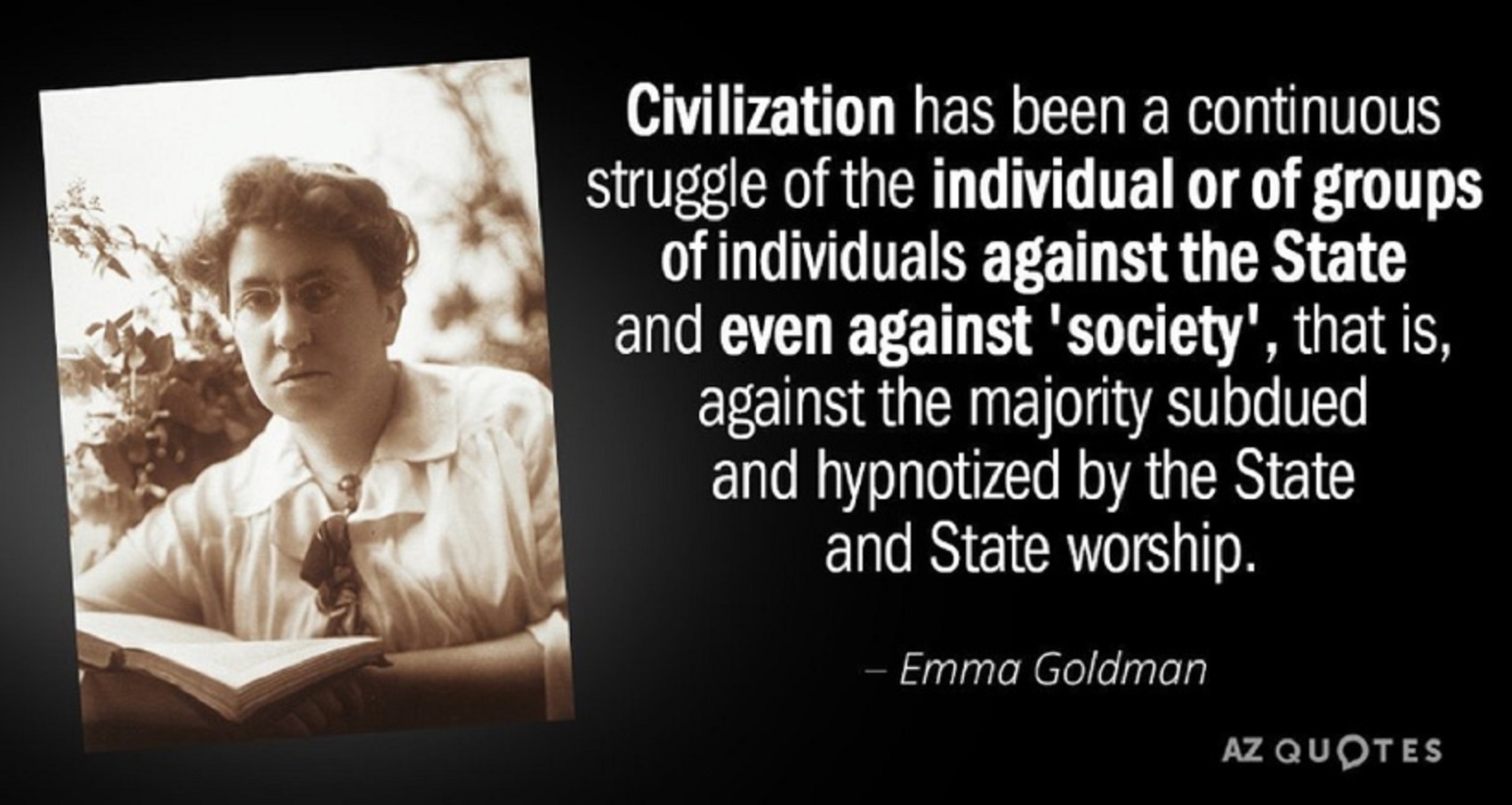

Jeff Bezos’ Space Joyride Emitted a Lifetime’s Worth of Carbon Pollution
“A new report chronicles the staggeringly unequal distribution of carbon emissions tied to the ultra-wealthy’s lifestyles.” ref







“Apathy is a luxury of the unoppressed.” – meaningless absurdity @VoxAbsurdum

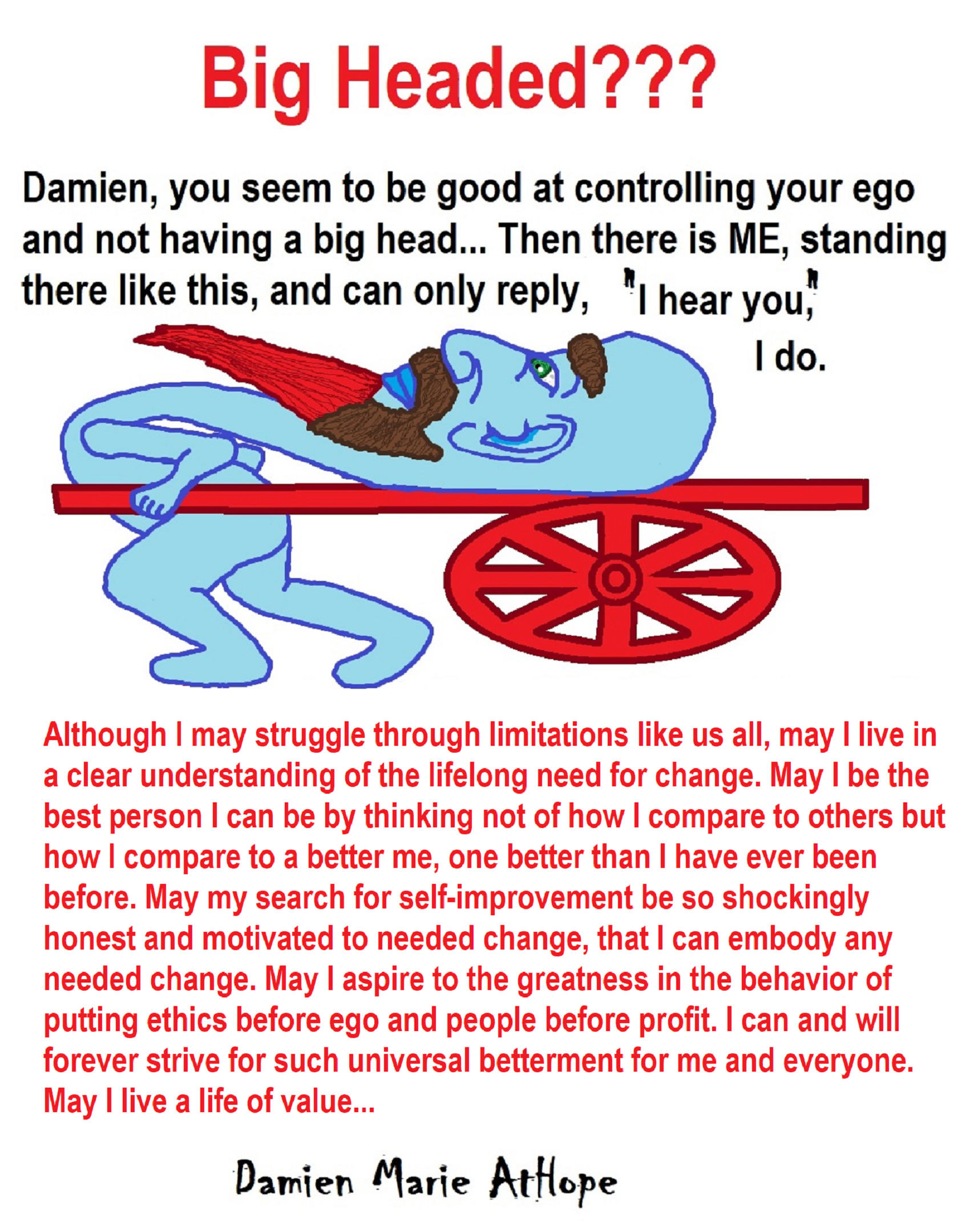
So you know I am odd, I like helping others for no reason.
Well, I guess, I help my past abused child, that needed someone to help.
All kinds of people from academics, history, anthropology, or archaeology, “all of them,” are blown away by my prehistory knowledge. Yet I have so few that use my offered knowledge to fight religion and gods when I already did all the work for you. Use my knowledge of prehistory as weapons.
While most atheists work their arguments against religious beliefs or gods with doubts, I instead have lots of facts and more facts. In fact, I have so many facts not once has anyone not been humbled by just how much I know and understand. I made it all so others can fight back.
I was permanently removed from Facebook, Instagram, and LinkedIn. I am surprised I still am allowed to post on Twitter. I am sure that they just forgot… lol

We are our best, valuing each other, and can become are worse, when not valuing each other.
Don’t silence your voice, thinking your exposure is not as much as some others, but you mean the world to all your ways that enlighten and inspire others. And never forget, our first revolutionary act is simply being ourselves, and others often thrive from such self-empowerment.
Describe yourself in three words?
My response, Thriving on Self-Mastery.
So deluded by capitalism, that in a world being killed by capitalism there are some that think more capitalism is the answer. I just don’t get it, what is wrong with people. We are the heroes we were waiting for all along. Rise to the power of self-mastery and go capitalism-free.
My blogs are long not because I am wordy, or just want to add useless info, no, I have worked for years to fully understand the evolution of religion and now am just offering you the highlights of my cliff notes. So you need to read it all as once you do, you too will understand.
I once thought, if a woman with “X-chromosome” is a default, thus created first, right? Then the bible was clearly starting with a biological lie, saying it was a man or y-chromosome! Therefore, I thought more, if the Bible starts with a lie, how can it find trustworthy truth?
We have an ego billionaire winning person of the year, even when the scum refuses to pay equal taxes, so you know, well-running capitalism…
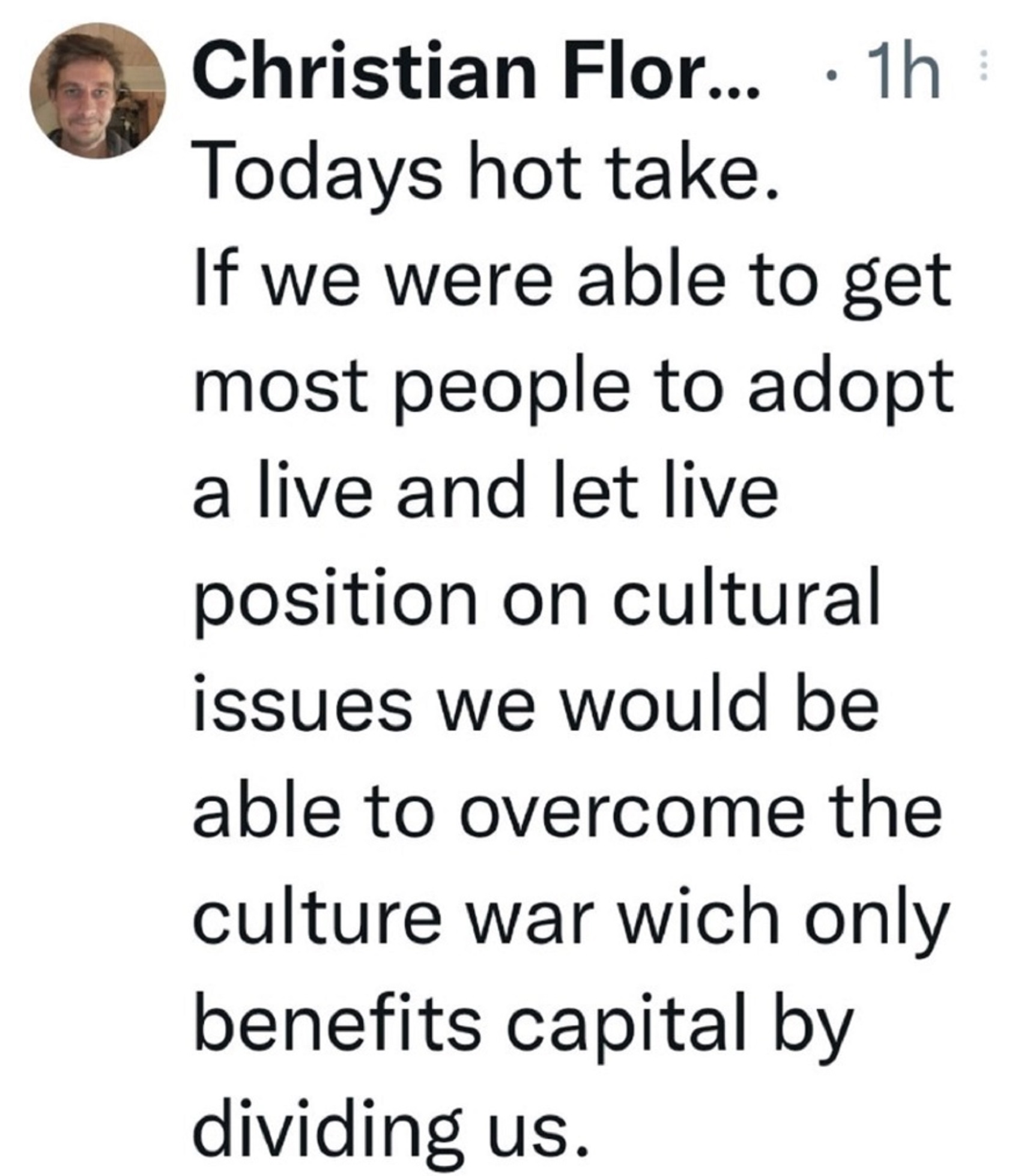
Christian Florelius @chflorelius therevisionistmarxist.wordpress.com
Small “c” communist. Marxist-Bernsteinist Socialist. Historian (MA). 35. Norwegian. In a relationship with @VictoriaHaukoya. Class Reductionist. Member of@Raudt From Norge, Norway
Why I am a Radical Reformist. – by Christian Florelius
“Marxism-Bernsteinism is a socialist ideology which seeks to bring about socialism and anti-capitalist reforms through participation in Democratic societies rather than through revolutionary means.” ref
Common things many males may like but not me (@AthopeMarie): I don’t like sports, king of the hill “power bullshit”, I love strong and empowered people including life partners, I don’t like tests of strength, nor exhibitions of one’s prowess over others, and I hate EGO in myself or others.


I tend to like following leftists, anarchists, socialists, and Antifa people. I like progressives too, and can even enjoy democrats, but not if they lean right too much.

“Reason” is a revolutionary act because it requires a thinking change to “Reason” in thinking from all who use it effectively. “Reason” is my only master and may we all master “Reason.“
I see your denial, I get it. Blissful ignorance sounds neet but let’s be practical, so would far pay for labor done but we suffer under profits over people capitalism, oh what joy… Happy holidays and Mary Christmas too. I said it for them and but I celebrate none but kindness.


EGO is often like a terminal illness to clear unbiased thinking, in fact, it can be similar to a wall blocking truth from getting in. So stay empowered over your ego, when trying to learn as you may not otherwise. May reason be your only master, it is for me… Some are arrogant in words, I am arrogant in my knowledge of facts.
I am wise, as I am open to truth from anywhere, even the mouths of my enemies as I care about the truth, not my EGO as fools do. Fools protect EGO above all, even when it makes them hide from the truth or needed change.
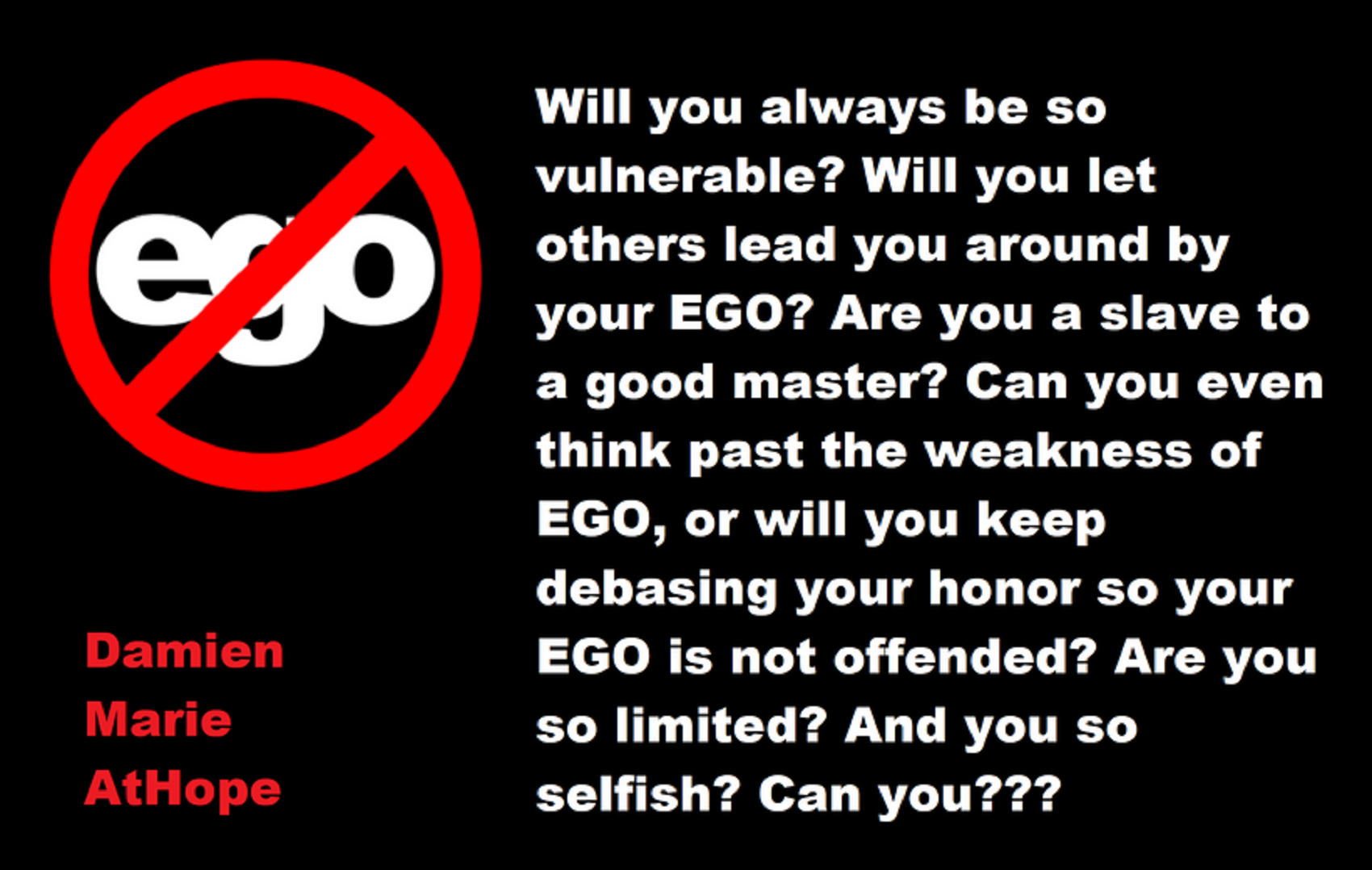
What statement makes me think, pseudoscience or pseudo-history:
Attacking the common understood thinking or the people that justifiable hold such a view until demonstrated to the contrary and burden is on the alternative claims. Truth seekers/speakers give evidence not attack.
Who gives a fuck?
Small abused hand rising to become a fist, I grab the microphone. Well, me of course. I am brave enough to be kind. As all people of high honor do. How about you?
You dare, ask me why I care? FUCK, someone goddamn, had to… Once, I was so foolish, value blind, I added harm, and now, how different I see things, with a value consciousness. I am among the treetops they can’t touch me now for I fly free. I love you all but I am just me.
Religion is to make a final judgment on things not known or contrary to things that are known, to render Religion an obstruction to true mental freedom or enemy to any real search for truths.
Go religion-free and rise to your own self-mastery.
If you believe in one “god” I know you are a follower of Dogmatic-Propaganda and can not completely be a follower of Disciplined-Rationality. However, I am not proclaiming all atheists are always rational as irrationally is a revolving door many people seem to stumble through.
Everyone assumes wrongly that I am a nerd or a geek, wrong as hell. I never learned shit until 2006 trying to be a better activist. All I have accomplished is due to my love of humanity & a gift of me as my activism, which forced me to learn all I could on prehistory to fight religion.
I don’t read philosophy, nor any book for fun as I am an ex-street kid that hates reading. I did not read but half of my boring college books. I have never read one book on logic nor do I value the Socratic Method, which is inferior to my style of truth navigation. I am an original thinker.
I have never read a full book by a famous philosopher, nor will I as I am my own famous philosopher and have invented my own philosophies, often equal or better than others anyway. We all have different values and value. I had to learn kindness from my cat. I see value everywhere that many seem to miss.
I was so smart in college than normal, that my teachers were trying to still my ideas to use as their own when I was only starting college. I took one test in 15 min that was 3 hours (fastest in the school’s history) and scored a 97. So fast, the teacher did not believe it. lol
I glid over information like a dragon threatening a village, seeing from above all the connections too often missed in the land below… If one only welcomes truth they agree with, one is not a free thinker at all.
May we all be intellectually honest enough, to be thought of as actual, TRUTH seekers.
I am an anti-capitalist before anything political, I would feel no different if nothing called socialism existed, I would still be a hardcore anti-capitalist! Children starve as billionaires play spaceman and buck rogers as if selfish toddlers. Shame on you! To me, I don’t get how people don’t laugh at themselves when they say, “Capitalism is the best we can hope for” then we will kill the planet making it inhospitable for life as a driving goal, it seems then.
I fight for socialism in general, I will let others fight among themselves as to what best exemplifies this concept. I am a learner and a teacher; I am done being a fighter. May the truth set you thinking…
I use to have three accounts on Facebook 5,000 in each so maxed then they permanently blocked me for saying voting Trump as a Hispanic was like Jews for Hitler. I have Hispanic people in my family in Mexico and two of my closest cousins in America. He talks shit about Hispanics. Fuck the escoria “scum” in Spanish, Trump.
Oh, and don’t forget, I hate wage slavery and wage theft, so, yes, I hate capitalism.
We can achieve our greatness one act of kindness at a time or all at once, all have a needed value.
I hope we are all good humans with the heights of courage, by being kind in an unkind world, a true sign of bravery. We only have one life may we live it well improving the world all we can.

We can achieve our greatness one act of kindness at a time or all at once, all have a needed value.


Animism: Respecting the Living World by Graham Harvey
“How have human cultures engaged with and thought about animals, plants, rocks, clouds, and other elements in their natural surroundings? Do animals and other natural objects have a spirit or soul? What is their relationship to humans? In this new study, Graham Harvey explores current and past animistic beliefs and practices of Native Americans, Maori, Aboriginal Australians, and eco-pagans. He considers the varieties of animism found in these cultures as well as their shared desire to live respectfully within larger natural communities. Drawing on his extensive casework, Harvey also considers the linguistic, performative, ecological, and activist implications of these different animisms.” ref


My thoughts on Religion Evolution with external links for more info:
- (Pre-Animism Africa mainly, but also Europe, and Asia at least 300,000 years ago), (Pre-Animism – Oxford Dictionaries)
- (Animism Africa around 100,000 years ago), (Animism – Britannica.com)
- (Totemism Europe around 50,000 years ago), (Totemism – Anthropology)
- (Shamanism Siberia around 30,000 years ago), (Shamanism – Britannica.com)
- (Paganism Turkey around 12,000 years ago), (Paganism – BBC Religion)
- (Progressed Organized Religion “Institutional Religion” Egypt around 5,000 years ago), (Ancient Egyptian Religion – Britannica.com)
- (CURRENT “World” RELIGIONS after 4,000 years ago) (Origin of Major Religions – Sacred Texts)
- (Early Atheistic Doubting at least by 2,600 years ago) (History of Atheism – Wikipedia)
“Religion is an Evolved Product” and Yes, Religion is Like Fear Given Wings…
Atheists talk about gods and religions for the same reason doctors talk about cancer, they are looking for a cure, or a firefighter talks about fires because they burn people and they care to stop them. We atheists too often feel a need to help the victims of mental slavery, held in the bondage that is the false beliefs of gods and the conspiracy theories of reality found in religions.
Understanding Religion Evolution:
- Pre-Animism (at least 300,000 years ago)
- Animism (Africa: 100,000 years ago)
- Totemism (Europe: 50,000 years ago)
- Shamanism (Siberia: 30,000 years ago)
- Paganism (Turkey: 12,000 years ago)
- Progressed organized religion (Egypt: 5,000 years ago), (Egypt, the First Dynasty 5,150 years ago)
- CURRENT “World” RELIGIONS (after 4,000 years ago)
- Early Atheistic Doubting (at least by 2,600 years ago)
“An Archaeological/Anthropological Understanding of Religion Evolution”
It seems ancient peoples had to survived amazing threats in a “dangerous universe (by superstition perceived as good and evil),” and human “immorality or imperfection of the soul” which was thought to affect the still living, leading to ancestor worship. This ancestor worship presumably led to the belief in supernatural beings, and then some of these were turned into the belief in gods. This feeble myth called gods were just a human conceived “made from nothing into something over and over, changing, again and again, taking on more as they evolve, all the while they are thought to be special,” but it is just supernatural animistic spirit-belief perceived as sacred.
Quick Evolution of Religion?
Pre-Animism (at least 300,000 years ago) pre-religion is a beginning that evolves into later Animism. So, Religion as we think of it, to me, all starts in a general way with Animism (Africa: 100,000 years ago) (theoretical belief in supernatural powers/spirits), then this is physically expressed in or with Totemism (Europe: 50,000 years ago) (theoretical belief in mythical relationship with powers/spirits through a totem item), which then enlists a full-time specific person to do this worship and believed interacting Shamanism (Siberia/Russia: 30,000 years ago) (theoretical belief in access and influence with spirits through ritual), and then there is the further employment of myths and gods added to all the above giving you Paganism (Turkey: 12,000 years ago) (often a lot more nature-based than most current top world religions, thus hinting to their close link to more ancient religious thinking it stems from). My hypothesis is expressed with an explanation of the building of a theatrical house (modern religions development). Progressed organized religion (Egypt: 5,000 years ago) with CURRENT “World” RELIGIONS (after 4,000 years ago).
Historically, in large city-state societies (such as Egypt or Iraq) starting around 5,000 years ago culminated to make religion something kind of new, a sociocultural-governmental-religious monarchy, where all or at least many of the people of such large city-state societies seem familiar with and committed to the existence of “religion” as the integrated life identity package of control dynamics with a fixed closed magical doctrine, but this juggernaut integrated religion identity package of Dogmatic-Propaganda certainly did not exist or if developed to an extent it was highly limited in most smaller prehistoric societies as they seem to lack most of the strong control dynamics with a fixed closed magical doctrine (magical beliefs could be at times be added or removed). Many people just want to see developed religious dynamics everywhere even if it is not. Instead, all that is found is largely fragments until the domestication of religion.
Religions, as we think of them today, are a new fad, even if they go back to around 6,000 years in the timeline of human existence, this amounts to almost nothing when seen in the long slow evolution of religion at least around 70,000 years ago with one of the oldest ritual worship. Stone Snake of South Africa: “first human worship” 70,000 years ago. This message of how religion and gods among them are clearly a man-made thing that was developed slowly as it was invented and then implemented peace by peace discrediting them all. Which seems to be a simple point some are just not grasping how devastating to any claims of truth when we can see the lie clearly in the archeological sites.
I wish people fought as hard for the actual values as they fight for the group/clan names political or otherwise they think support values. Every amount spent on war is theft to children in need of food or the homeless kept from shelter.
Here are several of my blog posts on history:
- To Find Truth You Must First Look
- (Magdalenian/Iberomaurusian) Connections to the First Paganists of the early Neolithic Near East Dating from around 17,000 to 12,000 Years Ago
- Natufians: an Ancient People at the Origins of Agriculture and Sedentary Life
- Possible Clan Leader/Special “MALE” Ancestor Totem Poles At Least 13,500 years ago?
- Jewish People with DNA at least 13,200 years old, Judaism, and the Origins of Some of its Ideas
- Baltic Reindeer Hunters: Swiderian, Lyngby, Ahrensburgian, and Krasnosillya cultures 12,020 to 11,020 years ago are evidence of powerful migratory waves during the last 13,000 years and a genetic link to Saami and the Finno-Ugric peoples.
- The Rise of Inequality: patriarchy and state hierarchy inequality
- Fertile Crescent 12,500 – 9,500 Years Ago: fertility and death cult belief system?
- 12,400 – 11,700 Years Ago – Kortik Tepe (Turkey) Pre/early-Agriculture Cultic Ritualism
- Ritualistic Bird Symbolism at Gobekli Tepe and its “Ancestor Cult”
- Male-Homosexual (female-like) / Trans-woman (female) Seated Figurine from Gobekli Tepe
- Could a 12,000-year-old Bull Geoglyph at Göbekli Tepe relate to older Bull and Female Art 25,000 years ago and Later Goddess and the Bull cults like Catal Huyuk?
- Sedentism and the Creation of goddesses around 12,000 years ago as well as male gods after 7,000 years ago.
- Alcohol, where Agriculture and Religion Become one? Such as Gobekli Tepe’s Ritualistic use of Grain as Food and Ritual Drink
- Neolithic Ritual Sites with T-Pillars and other Cultic Pillars
- Paganism: Goddesses around 12,000 years ago then Male Gods after 7,000 years ago
- First Patriarchy: Split of Women’s Status around 12,000 years ago & First Hierarchy: fall of Women’s Status around 5,000 years ago.
- Natufians: an Ancient People at the Origins of Agriculture and Sedentary Life
- J DNA and the Spread of Agricultural Religion (paganism)
- Paganism: an approximately 12,000-year-old belief system
- Paganism 12,000 years old: related to “Anarchism and Socialism” (Pre-Capitalism)
- Shaman burial in Israel 12,000 years ago and the Shamanism Phenomena
- Need to Mythicized: gods and goddesses
- 12,000 – 7,000 Years Ago – Paleo-Indian Culture (The Americas)
- 12,000 – 2,000 Years Ago – Indigenous-Scandinavians (Nordic)
- Norse did not wear helmets with horns?
- Pre-Pottery Neolithic Skull Cult around 11,500 to 8,400 Years Ago?
- 10,400 – 10,100 Years Ago, in Turkey the Nevail Cori Religious Settlement
- 9,000-6,500 Years Old Submerged Pre-Pottery/Pottery Neolithic Ritual Settlements off Israel’s Coast
- Catal Huyuk “first religious designed city” around 9,500 to 7,700 years ago (Turkey)
- Cultic Hunting at Catal Huyuk “first religious designed city”
- Special Items and Art as well as Special Elite Burials at Catal Huyuk
- New Rituals and Violence with the appearance of Pottery and People?
- Haplogroup N and its related Uralic Languages and Cultures
- Ainu people, Sámi people, Native Americans, the Ancient North Eurasians, and Paganistic-Shamanism with Totemism
- Ideas, Technology and People from Turkey, Europe, to China and Back again 9,000 to 5,000 years ago?
- First Pottery of Europe and the Related Cultures
- 9,000 years old Neolithic Artifacts Judean Desert and Hills Israel
- 9,000-7,000 years-old Sex and Death Rituals: Cult Sites in Israel, Jordan, and the Sinai
- 9,000-8500 year old Horned Female shaman Bad Dürrenberg Germany
- Neolithic Jewelry and the Spread of Farming in Europe Emerging out of West Turkey
- 8,600-year-old Tortoise Shells in Neolithic graves in central China have Early Writing and Shamanism
- Swing of the Mace: the rise of Elite, Forced Authority, and Inequality begin to Emerge 8,500 years ago?
- Migrations and Changing Europeans Beginning around 8,000 Years Ago
- My “Steppe-Anatolian-Kurgan hypothesis” 8,000/7,000 years ago
- Around 8,000-year-old Shared Idea of the Mistress of Animals, “Ritual” Motif
- Pre-Columbian Red-Paint (red ochre) Maritime Archaic Culture 8,000-3,000 years ago
- 7,522-6,522 years ago Linear Pottery culture which I think relates to Arcane Capitalism’s origins
- Arcane Capitalism: Primitive socialism, Primitive capital, Private ownership, Means of production, Market capitalism, Class discrimination, and Petite bourgeoisie (smaller capitalists)
- 7,500-4,750 years old Ritualistic Cucuteni-Trypillian culture of Moldova, Romania, and Ukraine
- Roots of a changing early society 7,200-6,700 years ago Jordan and Israel
- Agriculture religion (Paganism) with farming reached Britain between about 7,000 to 6,500 or so years ago and seemingly expressed in things like Western Europe’s Long Barrows
- My Thoughts on Possible Migrations of “R” DNA and Proto-Indo-European?
- “Millet” Spreading from China 7,022 years ago to Europe and related Language may have Spread with it leading to Proto-Indo-European
- Proto-Indo-European (PIE), ancestor of Indo-European languages: DNA, Society, Language, and Mythology
- The Dnieper–Donets culture and Asian varieties of Millet from China to the Black Sea region of Europe by 7,022 years ago
- Kurgan 6,000 years ago/dolmens 7,000 years ago: funeral, ritual, and other?
- 7,020 to 6,020-year-old Proto-Indo-European Homeland of Urheimat or proposed home of their Language and Religion
- Ancient Megaliths: Kurgan, Ziggurat, Pyramid, Menhir, Trilithon, Dolman, Kromlech, and Kromlech of Trilithons
- The Mytheme of Ancient North Eurasian Sacred-Dog belief and similar motifs are found in Indo-European, Native American, and Siberian comparative mythology
- Elite Power Accumulation: Ancient Trade, Tokens, Writing, Wealth, Merchants, and Priest-Kings
- Sacred Mounds, Mountains, Kurgans, and Pyramids may hold deep connections?
- Between 7,000-5,000 Years ago, rise of unequal hierarchy elite, leading to a “birth of the State” or worship of power, strong new sexism, oppression of non-elites, and the fall of Women’s equal status
- Paganism 7,000-5,000 years old: related to “Anarchism and Socialism” (Capitalism) (World War 0) Elite & their slaves
- Hell and Underworld mythologies starting maybe as far back as 7,000 to 5,000 years ago with the Proto-Indo-Europeans?
- The First Expression of the Male God around 7,000 years ago?
- White (light complexion skin) Bigotry and Sexism started 7,000 years ago?
- Around 7,000-year-old Shared Idea of the Divine Bird (Tutelary and/or Trickster spirit/deity), “Ritual” Motif
- Nekhbet an Ancient Egyptian Vulture Goddess and Tutelary Deity
- 6,720 to 4,920 years old Ritualistic Hongshan Culture of Inner Mongolia with 5,000-year-old Pyramid Mounds and Temples
- First proto-king in the Balkans, Varna culture around 6,500 years ago?
- 6,500–5,800 years ago in Israel Late Chalcolithic (Copper Age) Period in the Southern Levant Seems to Express Northern Levant Migrations, Cultural and Religious Transfer
- KING OF BEASTS: Master of Animals “Ritual” Motif, around 6,000 years old or older…
- Around 6000-year-old Shared Idea of the Solid Wheel & the Spoked Wheel-Shaped Ritual Motif
- “The Ghassulian Star,” a mysterious 6,000-year-old mural from Jordan; a Proto-Star of Ishtar, Star of Inanna or Star of Venus?
- Religious/Ritual Ideas, including goddesses and gods as well as ritual mounds or pyramids from Northeastern Asia at least 6,000 years old, seemingly filtering to Iran, Iraq, the Mediterranean, Europe, Egypt, and the Americas?
- Maykop (5,720–5,020 years ago) Caucasus region Bronze Age culture-related to Copper Age farmers from the south, influenced by the Ubaid period and Leyla-Tepe culture, as well as influencing the Kura-Araxes culture
- 5-600-year-old Tomb, Mummy, and First Bearded Male Figurine in a Grave
- Kura-Araxes Cultural 5,520 to 4,470 years old DNA traces to the Canaanites, Arabs, and Jews
- Minoan/Cretan (Keftiu) Civilization and Religion around 5,520 to 3,120 years ago
- Evolution Of Science at least by 5,500 years ago
- 5,500 Years old birth of the State, the rise of Hierarchy, and the fall of Women’s status
- “Jiroft culture” 5,100 – 4,200 years ago and the History of Iran
- Stonehenge: Paganistic Burial and Astrological Ritual Complex, England (5,100-3,600 years ago)
- Around 5,000-year-old Shared Idea of the “Tree of Life” Ritual Motif
- Complex rituals for elite, seen from China to Egypt, at least by 5,000 years ago
- Around 5,000 years ago: “Birth of the State” where Religion gets Military Power and Influence
- The Center of the World “Axis Mundi” and/or “Sacred Mountains” Mythology Could Relate to the Altai Mountains, Heart of the Steppe
- Progressed organized religion starts, an approximately 5,000-year-old belief system
- China’s Civilization between 5,000-3,000 years ago, was a time of war and class struggle, violent transition from free clans to a Slave or Elite society
- Origin of Logics is Naturalistic Observation at least by around 5,000 years ago.
- Paganism 5,000 years old: progressed organized religion and the state: related to “Anarchism and Socialism” (Kings and the Rise of the State)
- Ziggurats (multi-platform temples: 4,900 years old) to Pyramids (multi-platform tombs: 4,700 years old)
- Did a 4,520–4,420-year-old Volcano In Turkey Inspire the Bible God?
- Finland’s Horned Shaman and Pre-Horned-God at least 4,500 years ago?
- 4,000-year-Old Dolmens in Israel: A Connected Dolmen Religious Phenomenon?
- Creation myths: From chaos, Ex nihilo, Earth-diver, Emergence, World egg, and World parent
- Bronze Age “Ritual” connections of the Bell Beaker culture with the Corded Ware/Single Grave culture, which were related to the Yamnaya culture and Proto-Indo-European Languages/Religions
- Low Gods (Earth/ Tutelary deity), High Gods (Sky/Supreme deity), and Moralistic Gods (Deity enforcement/divine order)
- The exchange of people, ideas, and material-culture including, to me, the new god (Sky Father) and goddess (Earth Mother) religion between the Cucuteni-Trypillians and others which is then spread far and wide
- Koryaks: Indigenous People of the Russian Far East and Big Raven myths also found in Tlingit, Haida, Tsimshian, and other Indigenous People of North America
- 42 Principles Of Maat (Egyptian Goddess of the justice) around 4,400 years ago, 2000 Years Before Ten Commandments
- “Happy Easter” Well Happy Eostre/Ishter
- 4,320-3,820 years old “Shimao” (North China) site with Totemistic-Shamanistic Paganism and a Stepped Pyramid
- 4,250 to 3,400 Year old Stonehenge from Russia: Arkaim?
- 4,100-year-old beaker with medicinal & flowering plants in a grave of a woman in Scotland
- Early European Farmer ancestry, Kelif el Boroud people with the Cardial Ware culture, and the Bell Beaker culture Paganists too, spread into North Africa, then to the Canary Islands off West Africa
- Flood Accounts: Gilgamesh epic (4,100 years ago) Noah in Genesis (2,600 years ago)
- Paganism 4,000 years old: related to “Anarchism and Socialism” (First Moralistic gods, then the Origin time of Monotheism)
- When was the beginning: TIMELINE OF CURRENT RELIGIONS, which start around 4,000 years ago.
- Early Religions Thought to Express Proto-Monotheistic Systems around 4,000 years ago
- Kultepe? An archaeological site with a 4,000 years old women’s rights document.
- Single God Religions (Monotheism) = “Man-o-theism” started around 4,000 years ago with the Great Sky Spirit/God Tiān (天)?
- Confucianism’s Tiān (Shangdi god 4,000 years old): Supernaturalism, Pantheism or Theism?
- Yes, Your Male God is Ridiculous
- Mythology, a Lunar Deity is a Goddess or God of the Moon
- Sacred Land, Hills, and Mountains: Sami Mythology (Paganistic Shamanism)
- Horse Worship/Sacrifice: mythical union of Ruling Elite/Kingship and the Horse
- The Amorite/Amurru people’s God Amurru “Lord of the Steppe”, relates to the Origins of the Bible God?
- Bronze Age Exotic Trade Routes Spread Quite Far as well as Spread Religious Ideas with Them
- Sami and the Northern Indigenous Peoples Landscape, Language, and its Connection to Religion
- Prototype of Ancient Analemmatic Sundials around 3,900-3,150 years ago and a Possible Solar Connection to gods?
- Judaism is around 3,450 or 3,250 years old. (“Paleo-Hebrew” 3,000 years ago and Torah 2,500 years ago)
- The Weakening of Ancient Trade and the Strengthening of Religions around 3000 years ago?
- Are you aware that there are religions that worship women gods, explain now religion tears women down?
- Animistic, Totemistic, and Paganistic Superstition Origins of bible god and the bible’s Religion.
- Myths and Folklore: “Trickster gods and goddesses”
- Jews, Judaism, and the Origins of Some of its Ideas
- An Old Branch of Religion Still Giving Fruit: Sacred Trees
- Dating the BIBLE: naming names and telling times (written less than 3,000 years ago, provable to 2,200 years ago)
- Did a Volcano Inspire the bible god?
- The Amorite/Amurru people’s God Amurru “Lord of the Steppe”, relates to the Origins of the Bible God?
- Dené–Yeniseian language, Old Copper Complex, and Pre-Columbian Mound Builders?
- No “dinosaurs and humans didn’t exist together just because some think they are in the bible itself”
- Sacred Shit and Sacred Animals?
- Everyone Killed in the Bible Flood? “Nephilim” (giants)?
- Hey, Damien dude, I have a question for you regarding “the bible” Exodus.
- Archaeology Disproves the Bible
- Bible Battle, Just More, Bible Babble
- The Jericho Conquest lie?
- Canaanites and Israelites?
- Accurate Account on how did Christianity Began?
- Let’s talk about Christianity.
- So the 10 commandments isn’t anything to go by either right?
- Misinformed christian
- Debunking Jesus?
- Paulism vs Jesus
- Ok, you seem confused so let’s talk about Buddhism.
- Unacknowledged Buddhism: Gods, Savior, Demons, Rebirth, Heavens, Hells, and Terrorism
- His Foolishness The Dalai Lama
- Yin and Yang is sexist with an ORIGIN around 2,300 years ago?
- I Believe Archaeology, not Myths & Why Not, as the Religious Myths Already Violate Reason!
- Archaeological, Scientific, & Philosophic evidence shows the god myth is man-made nonsense.
- Aquatic Ape Theory/Hypothesis? As Always, Just Pseudoscience.
- Ancient Aliens Conspiracy Theorists are Pseudohistorians
- The Pseudohistoric and Pseudoscientific claims about “Bakoni Ruins” of South Africa
- Why do people think Religion is much more than supernaturalism and superstitionism?
- Religion is an Evolved Product
- Was the Value of Ancient Women Different?
- 1000 to 1100 CE, human sacrifice Cahokia Mounds a pre-Columbian Native American site
- Feminist atheists as far back as the 1800s?
- Promoting Religion as Real is Mentally Harmful to a Flourishing Humanity
- Screw All Religions and Their Toxic lies, they are all fraud
- Forget Religions’ Unfounded Myths, I Have Substantiated “Archaeology Facts.”
- Religion Dispersal throughout the World
- I Hate Religion Just as I Hate all Pseudoscience
- Exposing Scientology, Eckankar, Wicca and Other Nonsense?
- Main deity or religious belief systems
- Quit Trying to Invent Your God From the Scraps of Science.
- Archaeological, Scientific, & Philosophic evidence shows the god myth is man-made nonsense.
- Ancient Alien Conspiracy Theorists: Misunderstanding, Rhetoric, Misinformation, Fabrications, and Lies
- Misinformation, Distortion, and Pseudoscience in Talking with a Christian Creationist
- Judging the Lack of Goodness in Gods, Even the Norse God Odin
- Challenging the Belief in God-like Aliens and Gods in General
- A Challenge to Christian use of Torture Devices?
- Yes, Hinduism is a Religion
- Trump is One of the Most Reactionary Forces of Far-right Christian Extremism
- Was the Bull Head a Symbol of God? Yes!
- Primate Death Rituals
- Christian – “God and Christianity are objectively true”
- Australopithecus afarensis Death Ritual?
- You Claim Global Warming is a Hoax?
- Doubter of Science and Defamer of Atheists?
- I think that sounds like the Bible?
- History of the Antifa (“anti-fascist”) Movements
- Indianapolis Anti-Blasphemy Laws #Free Soheil Rally
- Damien, you repeat the golden rule in so many forms then you say religion is dogmatic?
- Science is a Trustable Methodology whereas Faith is not Trustable at all!
- Was I ever a believer, before I was an atheist?
- Atheists rise in reason
- Mistrust of science?
- Open to Talking About the Definition of ‘God’? But first, we address Faith.
- ‘United Monarchy’ full of splendor and power – Saul, David, and Solomon? Most likely not.
- Is there EXODUS ARCHAEOLOGY? The short answer is “no.”
- Lacking Proof of Bigfoots, Unicorns, and Gods is Just a Lack of Research?
- Religion and Politics: Faith Beliefs vs. Rational Thinking
- Hammer of Truth that lying pig RELIGION: challenged by an archaeologist
- “The Hammer of Truth” -ontology question- What do You Mean by That?
- Navigation of a bad argument: Ad Hominem vs. Attack
- Why is it Often Claimed that Gods have a Gender?
- Why are basically all monotheistic religions ones that have a male god?
- Shifting through the Claims in support of Faith
- Dear Mr. AtHope, The 20th Century is an Indictment of Secularism and a Failed Atheist Century
- An Understanding of the Worldwide Statistics and Dynamics of Terrorist Incidents and Suicide Attacks
- Intoxication and Evolution? Addressing and Assessing the “Stoned Ape” or “Drunken Monkey” Theories as Catalysts in Human Evolution
- Sacred Menstrual cloth? Inanna’s knot, Isis knot, and maybe Ma’at’s feather?
- Damien, why don’t the Hebrews accept the bible stories?
- Dealing with a Troll and Arguing Over Word Meaning
- Knowledge without Belief? Justified beliefs or disbeliefs worthy of Knowledge?
- Afrocentrism and African Religions
- Crecganford @crecganford offers history & stories of the people, places, gods, & culture
- Empiricism-Denier?
I am not an academic. I am a revolutionary that teaches in public, in places like social media, and in the streets. I am not a leader by some title given but from my commanding leadership style of simply to start teaching everywhere to everyone, all manner of positive education.









ref, ref, ref, ref, ref, ref, ref, ref, ref, ref, ref, ref, ref, ref, ref, ref, ref, ref, ref, ref, ref
Low Gods “Earth” or Tutelary deity and High Gods “Sky” or Supreme deity
“An Earth goddess is a deification of the Earth. Earth goddesses are often associated with the “chthonic” deities of the underworld. Ki and Ninhursag are Mesopotamian earth goddesses. In Greek mythology, the Earth is personified as Gaia, corresponding to Roman Terra, Indic Prithvi/Bhūmi, etc. traced to an “Earth Mother” complementary to the “Sky Father” in Proto-Indo-European religion. Egyptian mythology exceptionally has a sky goddess and an Earth god.” ref
“A mother goddess is a goddess who represents or is a personification of nature, motherhood, fertility, creation, destruction or who embodies the bounty of the Earth. When equated with the Earth or the natural world, such goddesses are sometimes referred to as Mother Earth or as the Earth Mother. In some religious traditions or movements, Heavenly Mother (also referred to as Mother in Heaven or Sky Mother) is the wife or feminine counterpart of the Sky father or God the Father.” ref
“Any masculine sky god is often also king of the gods, taking the position of patriarch within a pantheon. Such king gods are collectively categorized as “sky father” deities, with a polarity between sky and earth often being expressed by pairing a “sky father” god with an “earth mother” goddess (pairings of a sky mother with an earth father are less frequent). A main sky goddess is often the queen of the gods and may be an air/sky goddess in her own right, though she usually has other functions as well with “sky” not being her main. In antiquity, several sky goddesses in ancient Egypt, Mesopotamia, and the Near East were called Queen of Heaven. Neopagans often apply it with impunity to sky goddesses from other regions who were never associated with the term historically. The sky often has important religious significance. Many religions, both polytheistic and monotheistic, have deities associated with the sky.” ref
“In comparative mythology, sky father is a term for a recurring concept in polytheistic religions of a sky god who is addressed as a “father”, often the father of a pantheon and is often either a reigning or former King of the Gods. The concept of “sky father” may also be taken to include Sun gods with similar characteristics, such as Ra. The concept is complementary to an “earth mother“. “Sky Father” is a direct translation of the Vedic Dyaus Pita, etymologically descended from the same Proto-Indo-European deity name as the Greek Zeûs Pater and Roman Jupiter and Germanic Týr, Tir or Tiwaz, all of which are reflexes of the same Proto-Indo-European deity’s name, *Dyēus Ph₂tḗr. While there are numerous parallels adduced from outside of Indo-European mythology, there are exceptions (e.g. In Egyptian mythology, Nut is the sky mother and Geb is the earth father).” ref
Tutelary deity
“A tutelary (also tutelar) is a deity or spirit who is a guardian, patron, or protector of a particular place, geographic feature, person, lineage, nation, culture, or occupation. The etymology of “tutelary” expresses the concept of safety and thus of guardianship. In late Greek and Roman religion, one type of tutelary deity, the genius, functions as the personal deity or daimon of an individual from birth to death. Another form of personal tutelary spirit is the familiar spirit of European folklore.” ref
“A tutelary (also tutelar) in Korean shamanism, jangseung and sotdae were placed at the edge of villages to frighten off demons. They were also worshiped as deities. Seonangshin is the patron deity of the village in Korean tradition and was believed to embody the Seonangdang. In Philippine animism, Diwata or Lambana are deities or spirits that inhabit sacred places like mountains and mounds and serve as guardians. Such as: Maria Makiling is the deity who guards Mt. Makiling and Maria Cacao and Maria Sinukuan. In Shinto, the spirits, or kami, which give life to human bodies come from nature and return to it after death. Ancestors are therefore themselves tutelaries to be worshiped. And similarly, Native American beliefs such as Tonás, tutelary animal spirit among the Zapotec and Totems, familial or clan spirits among the Ojibwe, can be animals.” ref
“A tutelary (also tutelar) in Austronesian beliefs such as: Atua (gods and spirits of the Polynesian peoples such as the Māori or the Hawaiians), Hanitu (Bunun of Taiwan‘s term for spirit), Hyang (Kawi, Sundanese, Javanese, and Balinese Supreme Being, in ancient Java and Bali mythology and this spiritual entity, can be either divine or ancestral), Kaitiaki (New Zealand Māori term used for the concept of guardianship, for the sky, the sea, and the land), Kawas (mythology) (divided into 6 groups: gods, ancestors, souls of the living, spirits of living things, spirits of lifeless objects, and ghosts), Tiki (Māori mythology, Tiki is the first man created by either Tūmatauenga or Tāne and represents deified ancestors found in most Polynesian cultures). ” ref, ref, ref, ref, ref, ref, ref
Mesopotamian Tutelary Deities can be seen as ones related to City-States
“Historical city-states included Sumerian cities such as Uruk and Ur; Ancient Egyptian city-states, such as Thebes and Memphis; the Phoenician cities (such as Tyre and Sidon); the five Philistine city-states; the Berber city-states of the Garamantes; the city-states of ancient Greece (the poleis such as Athens, Sparta, Thebes, and Corinth); the Roman Republic (which grew from a city-state into a vast empire); the Italian city-states from the Middle Ages to the early modern period, such as Florence, Siena, Ferrara, Milan (which as they grew in power began to dominate neighboring cities) and Genoa and Venice, which became powerful thalassocracies; the Mayan and other cultures of pre-Columbian Mesoamerica (including cities such as Chichen Itza, Tikal, Copán and Monte Albán); the central Asian cities along the Silk Road; the city-states of the Swahili coast; Ragusa; states of the medieval Russian lands such as Novgorod and Pskov; and many others.” ref
“The Uruk period (ca. 4000 to 3100 BCE; also known as Protoliterate period) of Mesopotamia, named after the Sumerian city of Uruk, this period saw the emergence of urban life in Mesopotamia and the Sumerian civilization. City-States like Uruk and others had a patron tutelary City Deity along with a Priest-King.” ref
“Chinese folk religion, both past, and present, includes myriad tutelary deities. Exceptional individuals, highly cultivated sages, and prominent ancestors can be deified and honored after death. Lord Guan is the patron of military personnel and police, while Mazu is the patron of fishermen and sailors. Such as Tu Di Gong (Earth Deity) is the tutelary deity of a locality, and each individual locality has its own Earth Deity and Cheng Huang Gong (City God) is the guardian deity of an individual city, worshipped by local officials and locals since imperial times.” ref
“A tutelary (also tutelar) in Hinduism, personal tutelary deities are known as ishta-devata, while family tutelary deities are known as Kuladevata. Gramadevata are guardian deities of villages. Devas can also be seen as tutelary. Shiva is the patron of yogis and renunciants. City goddesses include: Mumbadevi (Mumbai), Sachchika (Osian); Kuladevis include: Ambika (Porwad), and Mahalakshmi. In NorthEast India Meitei mythology and religion (Sanamahism) of Manipur, there are various types of tutelary deities, among which Lam Lais are the most predominant ones. Tibetan Buddhism has Yidam as a tutelary deity. Dakini is the patron of those who seek knowledge.” ref
“A tutelary (also tutelar) The Greeks also thought deities guarded specific places: for instance, Athena was the patron goddess of the city of Athens. Socrates spoke of hearing the voice of his personal spirit or daimonion:
You have often heard me speak of an oracle or sign which comes to me … . This sign I have had ever since I was a child. The sign is a voice which comes to me and always forbids me to do something which I am going to do, but never commands me to do anything, and this is what stands in the way of my being a politician.” ref
“Tutelary deities who guard and preserve a place or a person are fundamental to ancient Roman religion. The tutelary deity of a man was his Genius, that of a woman her Juno. In the Imperial era, the Genius of the Emperor was a focus of Imperial cult. An emperor might also adopt a major deity as his personal patron or tutelary, as Augustus did Apollo. Precedents for claiming the personal protection of a deity were established in the Republican era, when for instance the Roman dictator Sulla advertised the goddess Victory as his tutelary by holding public games (ludi) in her honor.” ref
“Each town or city had one or more tutelary deities, whose protection was considered particularly vital in time of war and siege. Rome itself was protected by a goddess whose name was to be kept ritually secret on pain of death (for a supposed case, see Quintus Valerius Soranus). The Capitoline Triad of Juno, Jupiter, and Minerva were also tutelaries of Rome. The Italic towns had their own tutelary deities. Juno often had this function, as at the Latin town of Lanuvium and the Etruscan city of Veii, and was often housed in an especially grand temple on the arx (citadel) or other prominent or central location. The tutelary deity of Praeneste was Fortuna, whose oracle was renowned.” ref
“The Roman ritual of evocatio was premised on the belief that a town could be made vulnerable to military defeat if the power of its tutelary deity were diverted outside the city, perhaps by the offer of superior cult at Rome. The depiction of some goddesses such as the Magna Mater (Great Mother, or Cybele) as “tower-crowned” represents their capacity to preserve the city. A town in the provinces might adopt a deity from within the Roman religious sphere to serve as its guardian, or syncretize its own tutelary with such; for instance, a community within the civitas of the Remi in Gaul adopted Apollo as its tutelary, and at the capital of the Remi (present-day Rheims), the tutelary was Mars Camulus.” ref
Household deity (a kind of or related to a Tutelary deity)
“A household deity is a deity or spirit that protects the home, looking after the entire household or certain key members. It has been a common belief in paganism as well as in folklore across many parts of the world. Household deities fit into two types; firstly, a specific deity – typically a goddess – often referred to as a hearth goddess or domestic goddess who is associated with the home and hearth, such as the ancient Greek Hestia.” ref
“The second type of household deities are those that are not one singular deity, but a type, or species of animistic deity, who usually have lesser powers than major deities. This type was common in the religions of antiquity, such as the Lares of ancient Roman religion, the Gashin of Korean shamanism, and Cofgodas of Anglo-Saxon paganism. These survived Christianisation as fairy-like creatures existing in folklore, such as the Anglo-Scottish Brownie and Slavic Domovoy.” ref
“Household deities were usually worshipped not in temples but in the home, where they would be represented by small idols (such as the teraphim of the Bible, often translated as “household gods” in Genesis 31:19 for example), amulets, paintings, or reliefs. They could also be found on domestic objects, such as cosmetic articles in the case of Tawaret. The more prosperous houses might have a small shrine to the household god(s); the lararium served this purpose in the case of the Romans. The gods would be treated as members of the family and invited to join in meals, or be given offerings of food and drink.” ref
“In many religions, both ancient and modern, a god would preside over the home. Certain species, or types, of household deities, existed. An example of this was the Roman Lares. Many European cultures retained house spirits into the modern period. Some examples of these include:
- Brownie (Scotland and England) or Hob (England) / Kobold (Germany) / Goblin / Hobgoblin
- Domovoy (Slavic)
- Nisse (Norwegian or Danish) / Tomte (Swedish) / Tonttu (Finnish)
- Húsvættir (Norse)” ref
“Although the cosmic status of household deities was not as lofty as that of the Twelve Olympians or the Aesir, they were also jealous of their dignity and also had to be appeased with shrines and offerings, however humble. Because of their immediacy they had arguably more influence on the day-to-day affairs of men than the remote gods did. Vestiges of their worship persisted long after Christianity and other major religions extirpated nearly every trace of the major pagan pantheons. Elements of the practice can be seen even today, with Christian accretions, where statues to various saints (such as St. Francis) protect gardens and grottos. Even the gargoyles found on older churches, could be viewed as guardians partitioning a sacred space.” ref
“For centuries, Christianity fought a mop-up war against these lingering minor pagan deities, but they proved tenacious. For example, Martin Luther‘s Tischreden have numerous – quite serious – references to dealing with kobolds. Eventually, rationalism and the Industrial Revolution threatened to erase most of these minor deities, until the advent of romantic nationalism rehabilitated them and embellished them into objects of literary curiosity in the 19th century. Since the 20th century this literature has been mined for characters for role-playing games, video games, and other fantasy personae, not infrequently invested with invented traits and hierarchies somewhat different from their mythological and folkloric roots.” ref
“In contradistinction to both Herbert Spencer and Edward Burnett Tylor, who defended theories of animistic origins of ancestor worship, Émile Durkheim saw its origin in totemism. In reality, this distinction is somewhat academic, since totemism may be regarded as a particularized manifestation of animism, and something of a synthesis of the two positions was attempted by Sigmund Freud. In Freud’s Totem and Taboo, both totem and taboo are outward expressions or manifestations of the same psychological tendency, a concept which is complementary to, or which rather reconciles, the apparent conflict. Freud preferred to emphasize the psychoanalytic implications of the reification of metaphysical forces, but with particular emphasis on its familial nature. This emphasis underscores, rather than weakens, the ancestral component.” ref
“William Edward Hearn, a noted classicist, and jurist, traced the origin of domestic deities from the earliest stages as an expression of animism, a belief system thought to have existed also in the neolithic, and the forerunner of Indo-European religion. In his analysis of the Indo-European household, in Chapter II “The House Spirit”, Section 1, he states:
The belief which guided the conduct of our forefathers was … the spirit rule of dead ancestors.” ref
“In Section 2 he proceeds to elaborate:
It is thus certain that the worship of deceased ancestors is a vera causa, and not a mere hypothesis. …
In the other European nations, the Slavs, the Teutons, and the Kelts, the House Spirit appears with no less distinctness. … [T]he existence of that worship does not admit of doubt. … The House Spirits had a multitude of other names which it is needless here to enumerate, but all of which are more or less expressive of their friendly relations with man. … In [England] … [h]e is the Brownie. … In Scotland this same Brownie is well known. He is usually described as attached to particular families, with whom he has been known to reside for centuries, threshing the corn, cleaning the house, and performing similar household tasks. His favorite gratification was milk and honey.” ref

Hinduism around 3,700 to 3,500 years old. ref
Judaism around 3,450 or 3,250 years old. (The first writing in the bible was “Paleo-Hebrew” dated to around 3,000 years ago Khirbet Qeiyafa is the site of an ancient fortress city overlooking the Elah Valley. And many believe the religious Jewish texts were completed around 2,500) ref, ref
Judaism is around 3,450 or 3,250 years old. (“Paleo-Hebrew” 3,000 years ago and Torah 2,500 years ago)
“Judaism is an Abrahamic, its roots as an organized religion in the Middle East during the Bronze Age. Some scholars argue that modern Judaism evolved from Yahwism, the religion of ancient Israel and Judah, by the late 6th century BCE, and is thus considered to be one of the oldest monotheistic religions.” ref
“Yahwism is the name given by modern scholars to the religion of ancient Israel, essentially polytheistic, with a plethora of gods and goddesses. Heading the pantheon was Yahweh, the national god of the Israelite kingdoms of Israel and Judah, with his consort, the goddess Asherah; below them were second-tier gods and goddesses such as Baal, Shamash, Yarikh, Mot, and Astarte, all of whom had their own priests and prophets and numbered royalty among their devotees, and a third and fourth tier of minor divine beings, including the mal’ak, the messengers of the higher gods, who in later times became the angels of Judaism, Christianity and Islam. Yahweh, however, was not the ‘original’ god of Israel “Isra-El”; it is El, the head of the Canaanite pantheon, whose name forms the basis of the name “Israel”, and none of the Old Testament patriarchs, the tribes of Israel, the Judges, or the earliest monarchs, have a Yahwistic theophoric name (i.e., one incorporating the name of Yahweh).” ref
“El is a Northwest Semitic word meaning “god” or “deity“, or referring (as a proper name) to any one of multiple major ancient Near Eastern deities. A rarer form, ‘ila, represents the predicate form in Old Akkadian and in Amorite. The word is derived from the Proto-Semitic *ʔil-, meaning “god”. Specific deities known as ‘El or ‘Il include the supreme god of the ancient Canaanite religion and the supreme god of East Semitic speakers in Mesopotamia’s Early Dynastic Period. ʼĒl is listed at the head of many pantheons. In some Canaanite and Ugaritic sources, ʼĒl played a role as father of the gods, of creation, or both. For example, in the Ugaritic texts, ʾil mlk is understood to mean “ʼĒl the King” but ʾil hd as “the god Hadad“. The Semitic root ʾlh (Arabic ʾilāh, Aramaic ʾAlāh, ʾElāh, Hebrew ʾelōah) may be ʾl with a parasitic h, and ʾl may be an abbreviated form of ʾlh. In Ugaritic the plural form meaning “gods” is ʾilhm, equivalent to Hebrew ʾelōhîm “powers”. In the Hebrew texts this word is interpreted as being semantically singular for “god” by biblical commentators. However the documentary hypothesis for the Old Testament (corresponds to the Jewish Torah) developed originally in the 1870s, identifies these that different authors – the Jahwist, Elohist, Deuteronomist, and the Priestly source – were responsible for editing stories from a polytheistic religion into those of a monotheistic religion. Inconsistencies that arise between monotheism and polytheism in the texts are reflective of this hypothesis.” ref
Jainism around 2,599 – 2,527 years old. ref
Confucianism around 2,600 – 2,551 years old. ref
Buddhism around 2,563/2,480 – 2,483/2,400 years old. ref
Christianity around 2,o00 years old. ref
Shinto around 1,305 years old. ref
Islam around 1407–1385 years old. ref

Knowledge to Ponder:
Stars/Astrology:
- Possibly, around 30,000 years ago (in simpler form) to 6,000 years ago, Stars/Astrology are connected to Ancestors, Spirit Animals, and Deities.
- The star also seems to be a possible proto-star for Star of Ishtar, Star of Inanna, or Star of Venus.
- Around 7,000 to 6,000 years ago, Star Constellations/Astrology have connections to the “Kurgan phenomenon” of below-ground “mound” stone/wood burial structures and “Dolmen phenomenon” of above-ground stone burial structures.
- Around 6,500–5,800 years ago, The Northern Levant migrations into Jordon and Israel in the Southern Levant brought new cultural and religious transfer from Turkey and Iran.
- “The Ghassulian Star,” a mysterious 6,000-year-old mural from Jordan may have connections to the European paganstic kurgan/dolmens phenomenon.
“Astrology is a range of divinatory practices, recognized as pseudoscientific since the 18th century, that claim to discern information about human affairs and terrestrial events by studying the apparent positions of celestial objects. Different cultures have employed forms of astrology since at least the 2nd millennium BCE, these practices having originated in calendrical systems used to predict seasonal shifts and to interpret celestial cycles as signs of divine communications. Most, if not all, cultures have attached importance to what they observed in the sky, and some—such as the Hindus, Chinese, and the Maya—developed elaborate systems for predicting terrestrial events from celestial observations. Western astrology, one of the oldest astrological systems still in use, can trace its roots to 19th–17th century BCE Mesopotamia, from where it spread to Ancient Greece, Rome, the Islamicate world and eventually Central and Western Europe. Contemporary Western astrology is often associated with systems of horoscopes that purport to explain aspects of a person’s personality and predict significant events in their lives based on the positions of celestial objects; the majority of professional astrologers rely on such systems.” ref
Around 5,500 years ago, Science evolves, The first evidence of science was 5,500 years ago and was demonstrated by a body of empirical, theoretical, and practical knowledge about the natural world. ref
Around 5,000 years ago, Origin of Logics is a Naturalistic Observation (principles of valid reasoning, inference, & demonstration) ref
Around 4,150 to 4,000 years ago: The earliest surviving versions of the Sumerian Epic of Gilgamesh, which was originally titled “He who Saw the Deep” (Sha naqba īmuru) or “Surpassing All Other Kings” (Shūtur eli sharrī) were written. ref
Hinduism:
- 3,700 years ago or so, the oldest of the Hindu Vedas (scriptures), the Rig Veda was composed.
- 3,500 years ago or so, the Vedic Age began in India after the collapse of the Indus Valley Civilization.
Judaism:
- around 3,000 years ago, the first writing in the bible was “Paleo-Hebrew”
- around 2,500 years ago, many believe the religious Jewish texts were completed
Myths: The bible inspired religion is not just one religion or one myth but a grouping of several religions and myths
- Around 3,450 or 3,250 years ago, according to legend, is the traditionally accepted period in which the Israelite lawgiver, Moses, provided the Ten Commandments.
- Around 2,500 to 2,400 years ago, a collection of ancient religious writings by the Israelites based primarily upon the Hebrew Bible, Tanakh, or Old Testament is the first part of Christianity’s bible.
- Around 2,400 years ago, the most accepted hypothesis is that the canon was formed in stages, first the Pentateuch (Torah).
- Around 2,140 to 2,116 years ago, the Prophets was written during the Hasmonean dynasty, and finally the remaining books.
- Christians traditionally divide the Old Testament into four sections:
- The first five books or Pentateuch (Torah).
- The proposed history books telling the history of the Israelites from their conquest of Canaan to their defeat and exile in Babylon.
- The poetic and proposed “Wisdom books” dealing, in various forms, with questions of good and evil in the world.
- The books of the biblical prophets, warning of the consequences of turning away from God:
- Henotheism:
- Exodus 20:23 “You shall not make other gods besides Me (not saying there are no other gods just not to worship them); gods of silver or gods of gold, you shall not make for yourselves.”
- Polytheism:
- Judges 10:6 “Then the sons of Israel again did evil in the sight of the LORD, served the Baals and the Ashtaroth, the gods of Aram, the gods of Sidon, the gods of Moab, the gods of the sons of Ammon, and the gods of the Philistines; thus they forsook the LORD and did not serve Him.”
- 1 Corinthians 8:5 “For even if there are so-called gods whether in heaven or on earth, as indeed there are many gods and many lords.”
- Monotheism:
- Isaiah 43:10 “You are my witnesses,” declares the LORD, “and my servant whom I have chosen, so that you may know and believe me and understand that I am he. Before me no god was formed, nor will there be one after me.
Around 2,570 to 2,270 Years Ago, there is a confirmation of atheistic doubting as well as atheistic thinking, mainly by Greek philosophers. However, doubting gods is likely as old as the invention of gods and should destroy the thinking that belief in god(s) is the “default belief”. The Greek word is apistos (a “not” and pistos “faithful,”), thus not faithful or faithless because one is unpersuaded and unconvinced by a god(s) claim. Short Definition: unbelieving, unbeliever, or unbelief.

Expressions of Atheistic Thinking:
- Around 2,600 years ago, Ajita Kesakambali, ancient Indian philosopher, who is the first known proponent of Indian materialism. ref
- Around 2,535 to 2,475 years ago, Heraclitus, Greek pre-Socratic philosopher, a native of the Greek city Ephesus, Ionia, on the coast of Anatolia, also known as Asia Minor or modern Turkey. ref
- Around 2,500 to 2,400 years ago, according to The Story of Civilization book series certain African pygmy tribes have no identifiable gods, spirits, or religious beliefs or rituals, and even what burials accrue are without ceremony. ref
- Around 2,490 to 2,430 years ago, Empedocles, Greek pre-Socratic philosopher and a citizen of Agrigentum, a Greek city in Sicily. ref
- Around 2,460 to 2,370 years ago, Democritus, Greek pre-Socratic philosopher considered to be the “father of modern science” possibly had some disbelief amounting to atheism. ref
- Around 2,399 years ago or so, Socrates, a famous Greek philosopher was tried for sinfulness by teaching doubt of state gods. ref
- Around 2,341 to 2,270 years ago, Epicurus, a Greek philosopher known for composing atheistic critics and famously stated, “Is God willing to prevent evil, but not able? Then he is not omnipotent. Is he able, but not willing? Then he is malevolent. Is he both able and willing? Then whence cometh evil? Is he neither able nor willing? Then why call him god?” ref
This last expression by Epicurus, seems to be an expression of Axiological Atheism. To understand and utilize value or actually possess “Value Conscious/Consciousness” to both give a strong moral “axiological” argument (the problem of evil) as well as use it to fortify humanism and positive ethical persuasion of human helping and care responsibilities. Because value-blindness gives rise to sociopathic/psychopathic evil.


While hallucinogens are associated with shamanism, it is alcohol that is associated with paganism.
The Atheist-Humanist-Leftist Revolutionaries Shows in the prehistory series:
Show two: Pre-animism 300,000 years old and animism 100,000 years old: related to “Anarchism and Socialism”
Show tree: Totemism 50,000 years old: related to “Anarchism and Socialism”
Show four: Shamanism 30,000 years old: related to “Anarchism and Socialism”
Show five: Paganism 12,000 years old: related to “Anarchism and Socialism”
Show six: Emergence of hierarchy, sexism, slavery, and the new male god dominance: Paganism 7,000-5,000 years old: related to “Anarchism and Socialism” (Capitalism) (World War 0) Elite and their slaves!
Prehistory: related to “Anarchism and Socialism” the division of labor, power, rights, and recourses: VIDEO
Pre-animism 300,000 years old and animism 100,000 years old: related to “Anarchism and Socialism”: VIDEO
Totemism 50,000 years old: related to “Anarchism and Socialism”: VIDEO
Shamanism 30,000 years old: related to “Anarchism and Socialism”: VIDEO
Paganism 12,000 years old: related to “Anarchism and Socialism” (Pre-Capitalism): VIDEO
Paganism 7,000-5,000 years old: related to “Anarchism and Socialism” (Capitalism) (World War 0) Elite and their slaves: VIEDO
Paganism 5,000 years old: progressed organized religion and the state: related to “Anarchism and Socialism” (Kings and the Rise of the State): VIEDO
Paganism 4,000 years old: related to “Anarchism and Socialism” (First Moralistic gods, then the Origin time of Monotheism): VIEDO
I do not hate simply because I challenge and expose myths or lies any more than others being thought of as loving simply because of the protection and hiding from challenge their favored myths or lies.
The truth is best championed in the sunlight of challenge.
An archaeologist once said to me “Damien religion and culture are very different”
My response, So are you saying that was always that way, such as would you say Native Americans’ cultures are separate from their religions? And do you think it always was the way you believe?
I had said that religion was a cultural product. That is still how I see it and there are other archaeologists that think close to me as well. Gods too are the myths of cultures that did not understand science or the world around them, seeing magic/supernatural everywhere.
I personally think there is a goddess and not enough evidence to support a male god at Çatalhöyük but if there was both a male and female god and goddess then I know the kind of gods they were like Proto-Indo-European mythology.
This series idea was addressed in, Anarchist Teaching as Free Public Education or Free Education in the Public: VIDEO
Our 12 video series: Organized Oppression: Mesopotamian State Force and the Politics of power (9,000-4,000 years ago), is adapted from: The Complete and Concise History of the Sumerians and Early Bronze Age Mesopotamia (7000-2000 BC): https://www.youtube.com/watch?v=szFjxmY7jQA by “History with Cy“
Show #1: Mesopotamian State Force and the Politics of Power (Samarra, Halaf, Ubaid)
Show #2: Mesopotamian State Force and the Politics of Power
Show #3: Mesopotamian State Force and the Politics of Power (Uruk and the First Cities)
Show #4: Mesopotamian State Force and the Politics of Power (First Kings)
Show #5: Mesopotamian State Force and the Politics of Power (Early Dynastic Period)
Show #6: Mesopotamian State Force and the Politics of Power
Show #7: Mesopotamian State Force and the Politics of Power (Sargon and Akkadian Rule)
Show #9: Mesopotamian State Force and the Politics of Power (Gudea of Lagash and Utu-hegal)
Show #12: Mesopotamian State Force and the Politics of Power (Aftermath and Legacy of Sumer)

The “Atheist-Humanist-Leftist Revolutionaries”
Cory Johnston ☭ Ⓐ Atheist Leftist @Skepticallefty & I (Damien Marie AtHope) @AthopeMarie (my YouTube & related blog) are working jointly in atheist, antitheist, antireligionist, antifascist, anarchist, socialist, and humanist endeavors in our videos together, generally, every other Saturday.
Why Does Power Bring Responsibility?
Think, how often is it the powerless that start wars, oppress others, or commit genocide? So, I guess the question is to us all, to ask, how can power not carry responsibility in a humanity concept? I know I see the deep ethical responsibility that if there is power their must be a humanistic responsibility of ethical and empathic stewardship of that power. Will I be brave enough to be kind? Will I possess enough courage to be compassionate? Will my valor reach its height of empathy? I as everyone, earns our justified respect by our actions, that are good, ethical, just, protecting, and kind. Do I have enough self-respect to put my love for humanity’s flushing, over being brought down by some of its bad actors? May we all be the ones doing good actions in the world, to help human flourishing.
I create the world I want to live in, striving for flourishing. Which is not a place but a positive potential involvement and promotion; a life of humanist goal precision. To master oneself, also means mastering positive prosocial behaviors needed for human flourishing. I may have lost a god myth as an atheist, but I am happy to tell you, my friend, it is exactly because of that, leaving the mental terrorizer, god belief, that I truly regained my connected ethical as well as kind humanity.
Cory and I will talk about prehistory and theism, addressing the relevance to atheism, anarchism, and socialism.
At the same time as the rise of the male god, 7,000 years ago, there was also the very time there was the rise of violence, war, and clans to kingdoms, then empires, then states. It is all connected back to 7,000 years ago, and it moved across the world.
Cory Johnston: https://damienmarieathope.com/2021/04/cory-johnston-mind-of-a-skeptical-leftist/?v=32aec8db952d
The Mind of a Skeptical Leftist (YouTube)
Cory Johnston: Mind of a Skeptical Leftist @Skepticallefty
The Mind of a Skeptical Leftist By Cory Johnston: “Promoting critical thinking, social justice, and left-wing politics by covering current events and talking to a variety of people. Cory Johnston has been thoughtfully talking to people and attempting to promote critical thinking, social justice, and left-wing politics.” http://anchor.fm/skepticalleft
Cory needs our support. We rise by helping each other.
Cory Johnston ☭ Ⓐ @Skepticallefty Evidence-based atheist leftist (he/him) Producer, host, and co-host of 4 podcasts @skeptarchy @skpoliticspod and @AthopeMarie
Damien Marie AtHope (“At Hope”) Axiological Atheist, Anti-theist, Anti-religionist, Secular Humanist. Rationalist, Writer, Artist, Poet, Philosopher, Advocate, Activist, Psychology, and Armchair Archaeology/Anthropology/Historian.
Damien is interested in: Freedom, Liberty, Justice, Equality, Ethics, Humanism, Science, Atheism, Antiteism, Antireligionism, Ignosticism, Left-Libertarianism, Anarchism, Socialism, Mutualism, Axiology, Metaphysics, LGBTQI, Philosophy, Advocacy, Activism, Mental Health, Psychology, Archaeology, Social Work, Sexual Rights, Marriage Rights, Woman’s Rights, Gender Rights, Child Rights, Secular Rights, Race Equality, Ageism/Disability Equality, Etc. And a far-leftist, “Anarcho-Humanist.”
I am not a good fit in the atheist movement that is mostly pro-capitalist, I am anti-capitalist. Mostly pro-skeptic, I am a rationalist not valuing skepticism. Mostly pro-agnostic, I am anti-agnostic. Mostly limited to anti-Abrahamic religions, I am an anti-religionist.
To me, the “male god” seems to have either emerged or become prominent around 7,000 years ago, whereas the now favored monotheism “male god” is more like 4,000 years ago or so. To me, the “female goddess” seems to have either emerged or become prominent around 11,000-10,000 years ago or so, losing the majority of its once prominence around 2,000 years ago due largely to the now favored monotheism “male god” that grow in prominence after 4,000 years ago or so.
My Thought on the Evolution of Gods?
Animal protector deities from old totems/spirit animal beliefs come first to me, 13,000/12,000 years ago, then women as deities 11,000/10,000 years ago, then male gods around 7,000/8,000 years ago. Moralistic gods around 5,000/4,000 years ago, and monotheistic gods around 4,000/3,000 years ago.

Damien Marie AtHope (Said as “At” “Hope”)/(Autodidact Polymath but not good at math):
Axiological Atheist, Anti-theist, Anti-religionist, Secular Humanist, Rationalist, Writer, Artist, Jeweler, Poet, “autodidact” Philosopher, schooled in Psychology, and “autodidact” Armchair Archaeology/Anthropology/Pre-Historian (Knowledgeable in the range of: 1 million to 5,000/4,000 years ago). I am an anarchist socialist politically. Reasons for or Types of Atheism
My Website, My Blog, & Short-writing or Quotes, My YouTube, Twitter: @AthopeMarie, and My Email: damien.marie.athope@gmail.com

